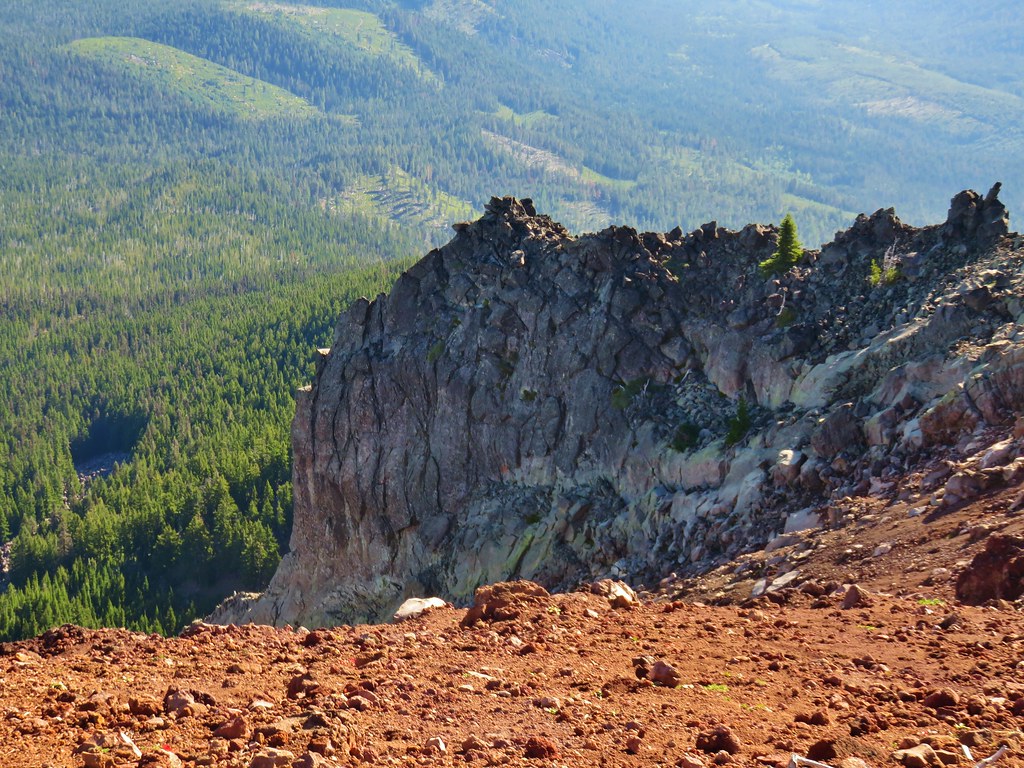While we are focused on our quest to complete Sullivan’s featured hikes (post) we are also plugging away at several other guidebooks including Matt Reeder’s 2016 “101 Hikes in the Majestic Mount Jefferson Region”. It’s been a bit of a challenge to make much progress in this book since 2020 when wildfires burned much of the area it covers. In some cases the trails were burned and in others the access roads to the trailheads were closed for hazardous tree removal. The two stops we had planned for this outing were two such hikes.
Our first stop was to visit the viewpoint and lookout tower on Sisi Butte. The fires didn’t burn the butte, but until Forest Road 46 was reopened between Detroit and Estacada this past June it wasn’t accessible for us to reach the trailhead.
Our adventure actually began before reaching the trailhead. Over the final two miles of our drive we passed at least two dozen cars heading toward Olallie Lake (post). We guessed that there must be some sort of race happening which turned out to be correct, the 100-mile Mountain Lakes 100 to be exact. Luckily the racecourse wasn’t along either of the hikes we’d planned for the day, we’ve made that mistake before and it doesn’t make for the most enjoyable hike. (Someday I’ll learn to check for races/events at the same time I’m checking the managing agencies information on the trail conditions.) We eventually made it to the gated road and parked along the side of FR 4220 (Old Skyline Road).

This was about as straightforward as a hike can get. We followed the closed road up Sisi Butte for just under three miles to the lookout tower. There was a lock on the door to the observation deck, but we were able to climb up to that point to get views of Mt. Hood, Mt. Jefferson, and Three Fingered Jack.
 Dust from ultra runner’s cars hanging over the closed roadbed.
Dust from ultra runner’s cars hanging over the closed roadbed.
 Mt. Jefferson in the monring.
Mt. Jefferson in the monring.
 The Summer haze we’ve grown to expect was back after having improved following a brief period of rain.
The Summer haze we’ve grown to expect was back after having improved following a brief period of rain.
 The smoke does make for some colorful sunrises though.
The smoke does make for some colorful sunrises though.
 Scouler’s bluebells
Scouler’s bluebells
 There was a nice forest along the road. Much of the butte is within one of the five tracts making up the Clackamas Wilderness but being a man-made improvement the road itself is not part of the Sisi Butte tract.
There was a nice forest along the road. Much of the butte is within one of the five tracts making up the Clackamas Wilderness but being a man-made improvement the road itself is not part of the Sisi Butte tract.
 Mt. Hood to the North.
Mt. Hood to the North.
 Mt. Hood
Mt. Hood
 Despite the surrounding haze the sky above the road was bright blue.
Despite the surrounding haze the sky above the road was bright blue.
 There were numerous good views of Mt. Jefferson from the road.
There were numerous good views of Mt. Jefferson from the road.
 Olallie Butte (post) and Mt. Jefferson.
Olallie Butte (post) and Mt. Jefferson.
 About 0.4 miles from the lookout an abandoned spur road splits off to the right toward the eastern summit which is just a couple of feet higher than the western.
About 0.4 miles from the lookout an abandoned spur road splits off to the right toward the eastern summit which is just a couple of feet higher than the western.
 The tower is still staffed at times, but it was empty today.
The tower is still staffed at times, but it was empty today.

 Penstemon
Penstemon
 Olallie Butte, Mt. Jefferson and Three Fingered Jack from the lookout.
Olallie Butte, Mt. Jefferson and Three Fingered Jack from the lookout.
 Mt. Jefferson and Three Fingered Jack
Mt. Jefferson and Three Fingered Jack
 Mt. Hood, West Pinhead Butte, and the eastern summit.
Mt. Hood, West Pinhead Butte, and the eastern summit.
 A hazy Mt. Hood.
A hazy Mt. Hood.
 Flat topped Battle Ax Mountain (post), Silver King Mountain (post), Pansy Mountain, Bull-of-the Woods (post), Big Slide Mountain (post), and Schreiner Peak in the Bull-of-the Wilderness.
Flat topped Battle Ax Mountain (post), Silver King Mountain (post), Pansy Mountain, Bull-of-the Woods (post), Big Slide Mountain (post), and Schreiner Peak in the Bull-of-the Wilderness.
 Bachelor and Coffin Mountains (post) in the Old Cascades.
Bachelor and Coffin Mountains (post) in the Old Cascades.
After taking in the views we headed back down. We’d passed a pair of hunters on the way up and a pair of hikers on the way back down along with a few grouse.
 Grouse along the road.
Grouse along the road.

 Despite high temperatures around 80 the leaves reminded us that Fall would be arriving soon.
Despite high temperatures around 80 the leaves reminded us that Fall would be arriving soon.
 Canada jay checking us out.
Canada jay checking us out.
The out-and-back was just shy of 6-miles with approximately 1400′ of elevation gain.

From the gated road we turned around and headed South on FR 4220 for a total of 6.5-miles to the Lower Lake Campground entrance.

While Sisi Butte had escaped the 2020 wildfires the Lionshead Fire had severely damaged the campground and the trail to Fish Lake.
 Lower Lake Campground, a work in progress.
Lower Lake Campground, a work in progress.
 While the campground was closed, the trail was open despite the fire damage.
While the campground was closed, the trail was open despite the fire damage.
 The Fish Lake Trail at Lower Lake Campground.
The Fish Lake Trail at Lower Lake Campground.
While the sign at the trailhead said it was a half mile to Lower Lake we actually arrived at the eastern end of the lake after a third of a mile.
 Ferns creating a green hillside in the burn scar.
Ferns creating a green hillside in the burn scar.
 Lower Lake
Lower Lake
The trail passed along the northern shore of Lower Lake without too much trouble. There was on small detour necessary to avoid some blowdown, but it was easily navigated.
 The water in Lower Lake was quite colorful.
The water in Lower Lake was quite colorful.

 Duck
Duck

 Most of the lakes in the Olallie Lake Scenic Area have signs naming them.
Most of the lakes in the Olallie Lake Scenic Area have signs naming them.
 Potato Butte (post) from Lower Lake.
Potato Butte (post) from Lower Lake.
 Olallie Butte
Olallie Butte
We had detoured to Lower Lake prior to the fire during our Lodgepole Loop hike in 2019 (post).
Just a short distance from the western end of the lake we crossed the Lodgepole Trail.

For the next quarter of a mile the trail was fairly level.
 Sisi Butte off to the right.
Sisi Butte off to the right.
 Fireweed going to seed.
Fireweed going to seed.
 Buckwheat
Buckwheat
 The burn was intense along the trail, but it was in pretty good shape all things considered.
The burn was intense along the trail, but it was in pretty good shape all things considered.
After a quarter mile the trail arrived at a cliff above Fish Lake and then began a steep descent dropping 400′ over the next half mile to the lake.
 Sisi Butte and Fish Lake from the cliff.
Sisi Butte and Fish Lake from the cliff.
 Mt. Hood peeking out from behind West Pinhead Butte.
Mt. Hood peeking out from behind West Pinhead Butte.
 Mt. Hood
Mt. Hood
 The Fish Lake Trail switchbacked a few times before giving up on that and dropping steeply for the final 0.2 miles.
The Fish Lake Trail switchbacked a few times before giving up on that and dropping steeply for the final 0.2 miles.
 A beat up Lorquin’s admiral.
A beat up Lorquin’s admiral.
 There were signs of somewhat recent trail maintenance, but given the severity of the burn and the steepness of the hillside the trail is going to need a lot of ongoing attention to keep it passable.
There were signs of somewhat recent trail maintenance, but given the severity of the burn and the steepness of the hillside the trail is going to need a lot of ongoing attention to keep it passable.
 The trail disappeared a couple of times in brush and blowdown near the lake, but it was never hard to pick back up.
The trail disappeared a couple of times in brush and blowdown near the lake, but it was never hard to pick back up.



There were no people at the lake, just a pair of ducks enjoying the warm day.
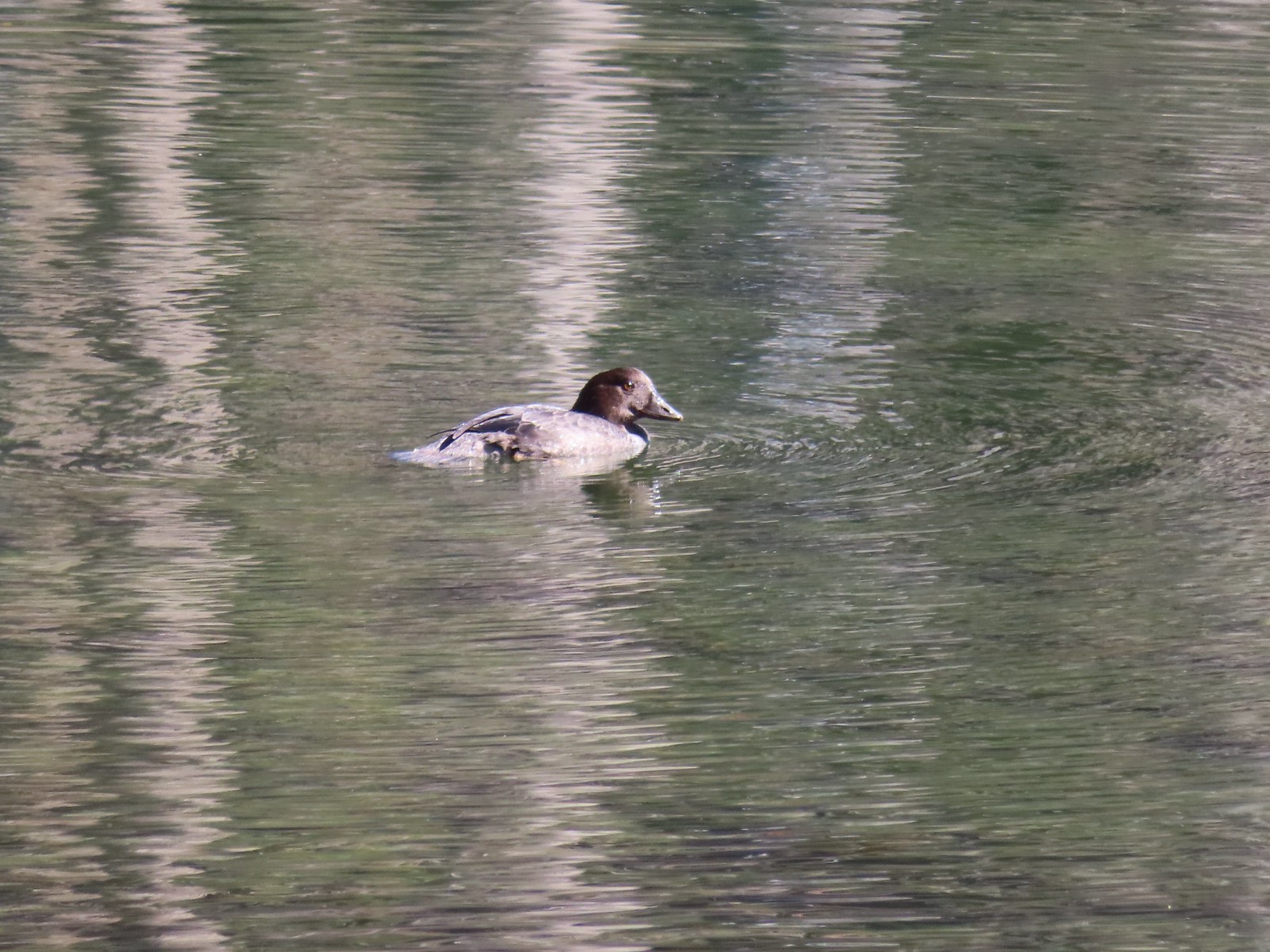
 Nap time.
Nap time.
 Olallie Butte from Fish Lake.
Olallie Butte from Fish Lake.
After passing around the southern side of the lake we arrived at a nice campsite under some unburned trees.

Beyond Fish Lake the forest along the trail was mostly out of the fire scar.
 The trail followed along Squirrel Creek (currently dry) for 0.4-miles.
The trail followed along Squirrel Creek (currently dry) for 0.4-miles.
Just under a quarter of a mile from Fish Lake the trail crossing a road and under some power lines.


Four tenths of a mile from Fish Lake we came to a trail sign with a pointer to Surprise Lake.
 We passed a few of these “Spot Fire” flags, presumably left over from 2020.
We passed a few of these “Spot Fire” flags, presumably left over from 2020.
 The signed junction.
The signed junction.

We detoured to check out the brushy lake and found it to be as Reeder reported, brushy had difficult to explore.

 I had to walk out on a log and fight through some thick brush to reach a decent view of the water.
I had to walk out on a log and fight through some thick brush to reach a decent view of the water.
 Surprise Lake
Surprise Lake
We returned to the Fish Lake Trail and continued another half mile to Si Lake.
 The trail between the junction and Si Lake got a little brushy.
The trail between the junction and Si Lake got a little brushy.
 Huckleberry leaves in their Fall colors.
Huckleberry leaves in their Fall colors.
 Si Lake from the trail.
Si Lake from the trail.

 Si Lake.
Si Lake.
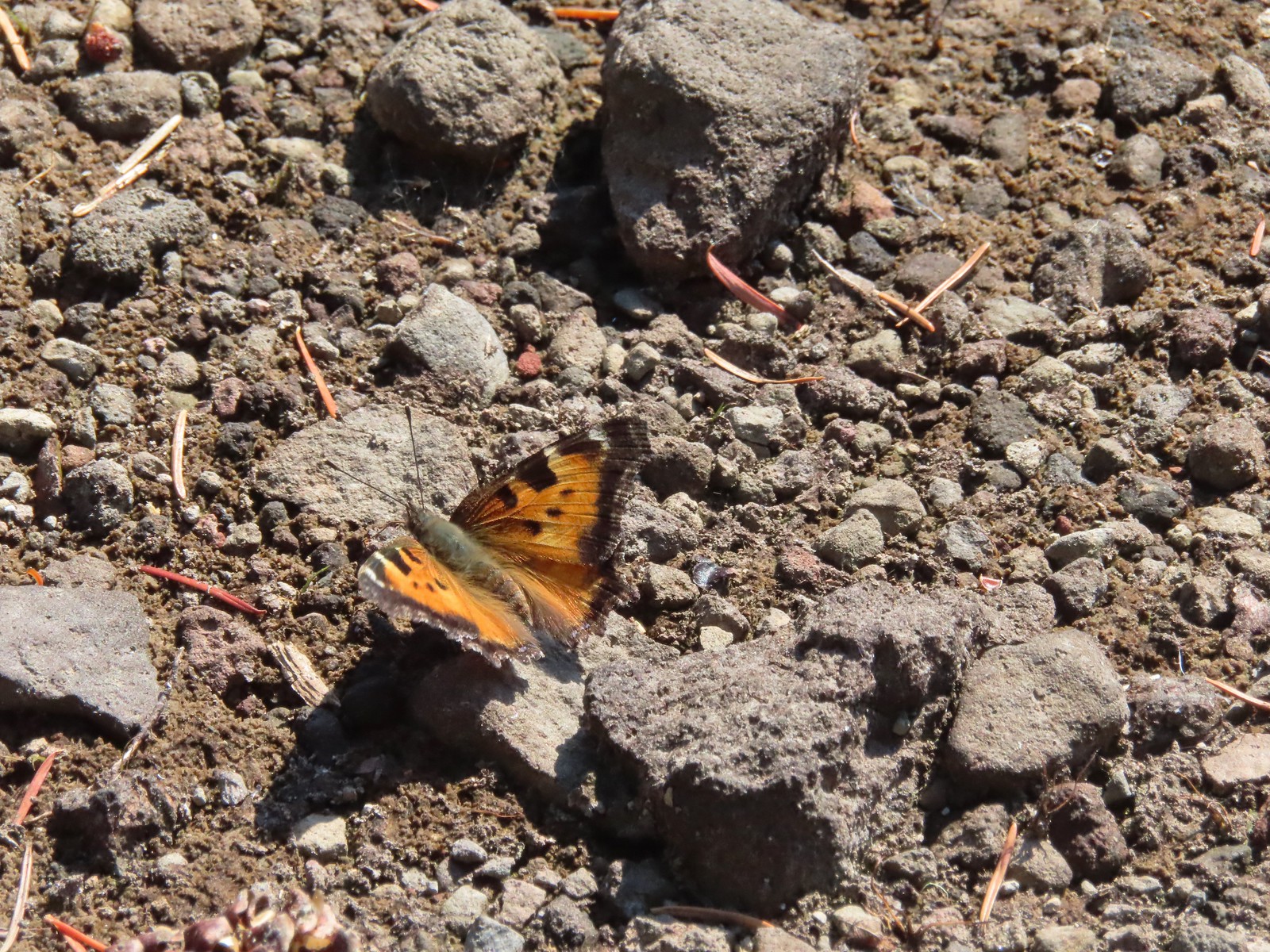 Tortoiseshell butterfly
Tortoiseshell butterfly
Si Lake was the smallest of the three lakes along the Fish Lake Trail (not counting Surprise Lake) and lacked a view of any of the surrounding peaks. The day was heating up quickly and we had a nearly 900′ climb over the three miles back to the car, so we took a short break and headed back.
A few clouds formed overhead and a slight breeze kicked up during our return which fortunately kept if from feeling too hot.
 Olallie Butte from Fish Lake.
Olallie Butte from Fish Lake.
 Black bear print along the shore of Fish Lake.
Black bear print along the shore of Fish Lake.

 White breasted nuthatch
White breasted nuthatch
 Lower Lake from the Fish Lake Trail.
Lower Lake from the Fish Lake Trail.
 Olallie Butte from Lower Lake.
Olallie Butte from Lower Lake.
 While parts of Lower Lake are shallow it actually reaches a depth of 73′ which is the reason it is so colorful.
While parts of Lower Lake are shallow it actually reaches a depth of 73′ which is the reason it is so colorful.
 Arriving back at Lower Lake Campground.
Arriving back at Lower Lake Campground.
This hike came in just over 6-miles and 900′ of elevation gain making this a 12-mile, 2300′ elevation gain day.

The hikes were enjoyable and offered a lot of solitude, we only saw three people (all at Lower Lake) along the Fish Lake Trail in addition to the four at Sisi Butte. Cooler temperatures and less smoke would have been preferred but it was a great outing none the less. Happy Trails!
Flickr: Sisi Butte and Fish & Si Lakes

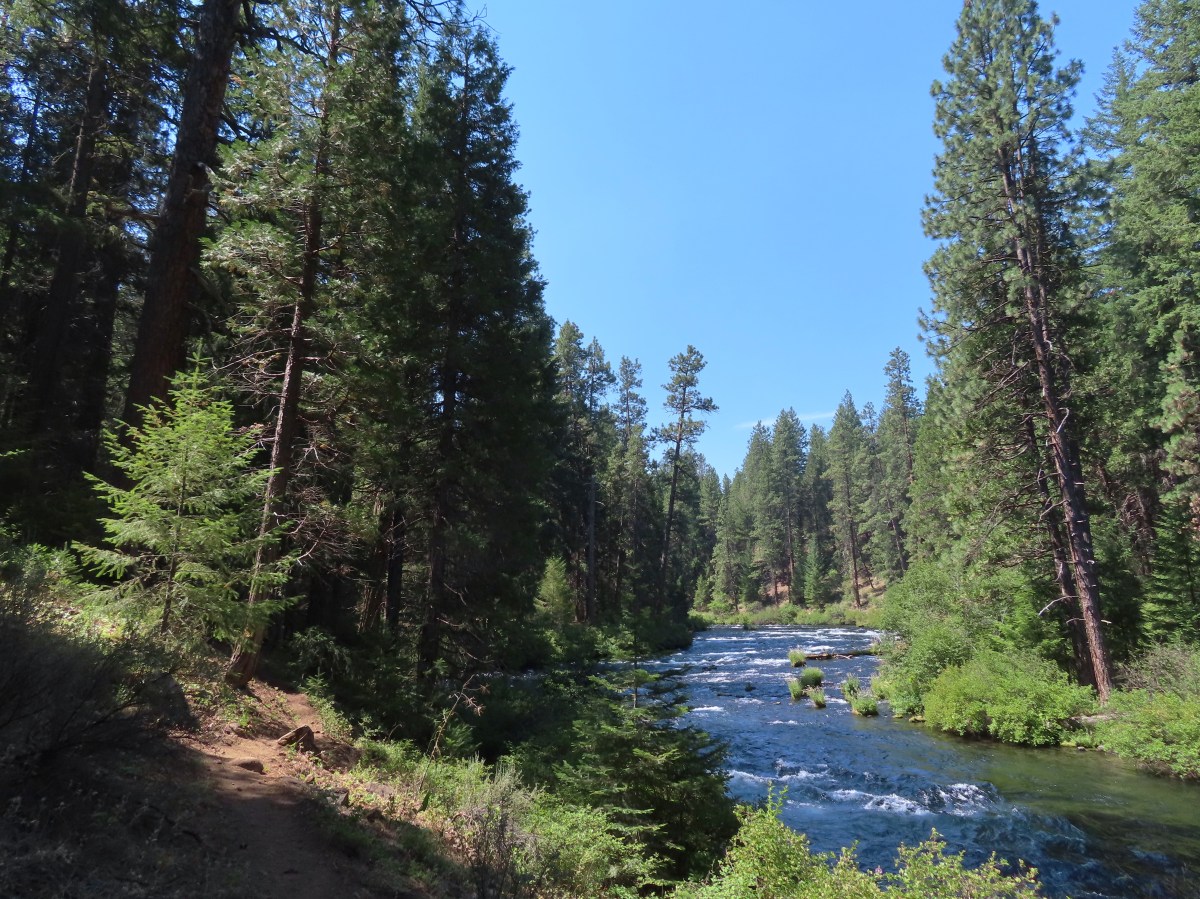


 The sign is visible from the campground road.
The sign is visible from the campground road.



 Common mergansers
Common mergansers
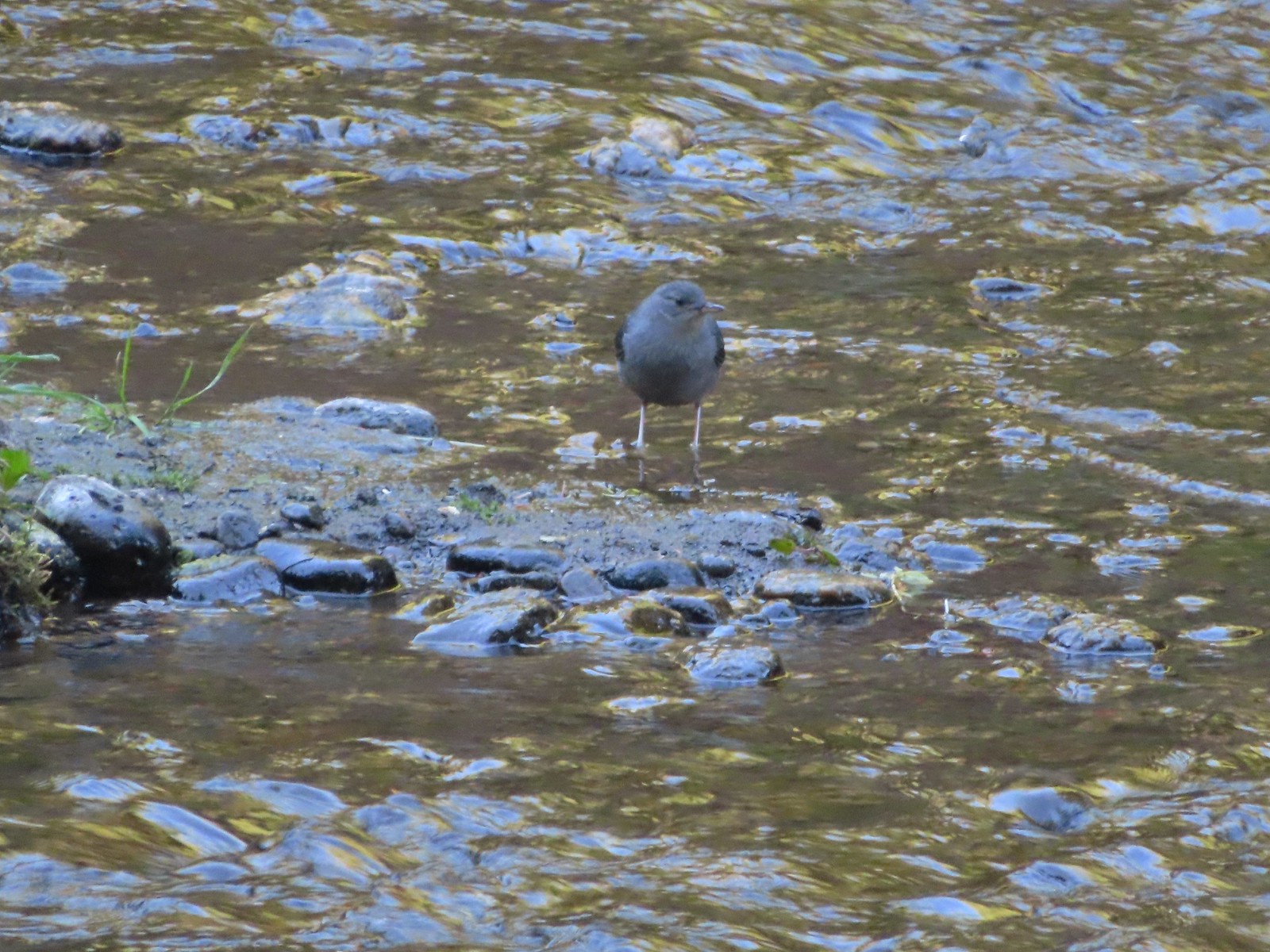 Ouzel
Ouzel Goldenrod
Goldenrod Passing some of the campsites.
Passing some of the campsites. The Candle Creek Campground across the Metolius.
The Candle Creek Campground across the Metolius.
 We actually went left below the stump here but, on the way back wound up coming downhill by the stump.
We actually went left below the stump here but, on the way back wound up coming downhill by the stump. More campsites.
More campsites.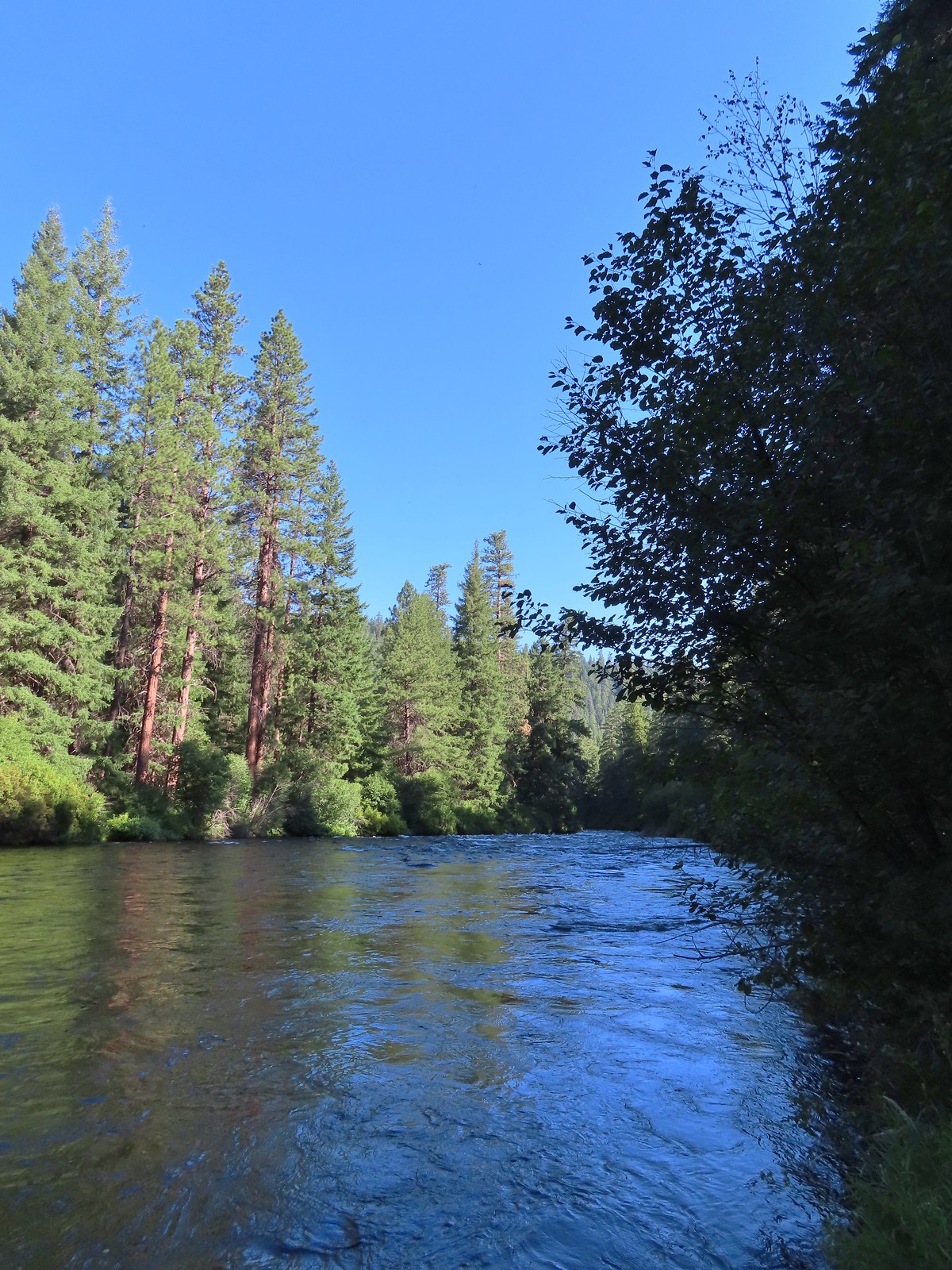
 As we got further from the campground we encountered more and more brushy sections.
As we got further from the campground we encountered more and more brushy sections.
 Another section with an increased number of obstacles.
Another section with an increased number of obstacles. Getting a bit brushier.
Getting a bit brushier. We left the river for the road at this bend.
We left the river for the road at this bend. Heading up to the road.
Heading up to the road. The use trail from the road.
The use trail from the road.
 We wondered what this post signified.
We wondered what this post signified. They were way past blooming but there were several mountain lady slippers along the road.
They were way past blooming but there were several mountain lady slippers along the road.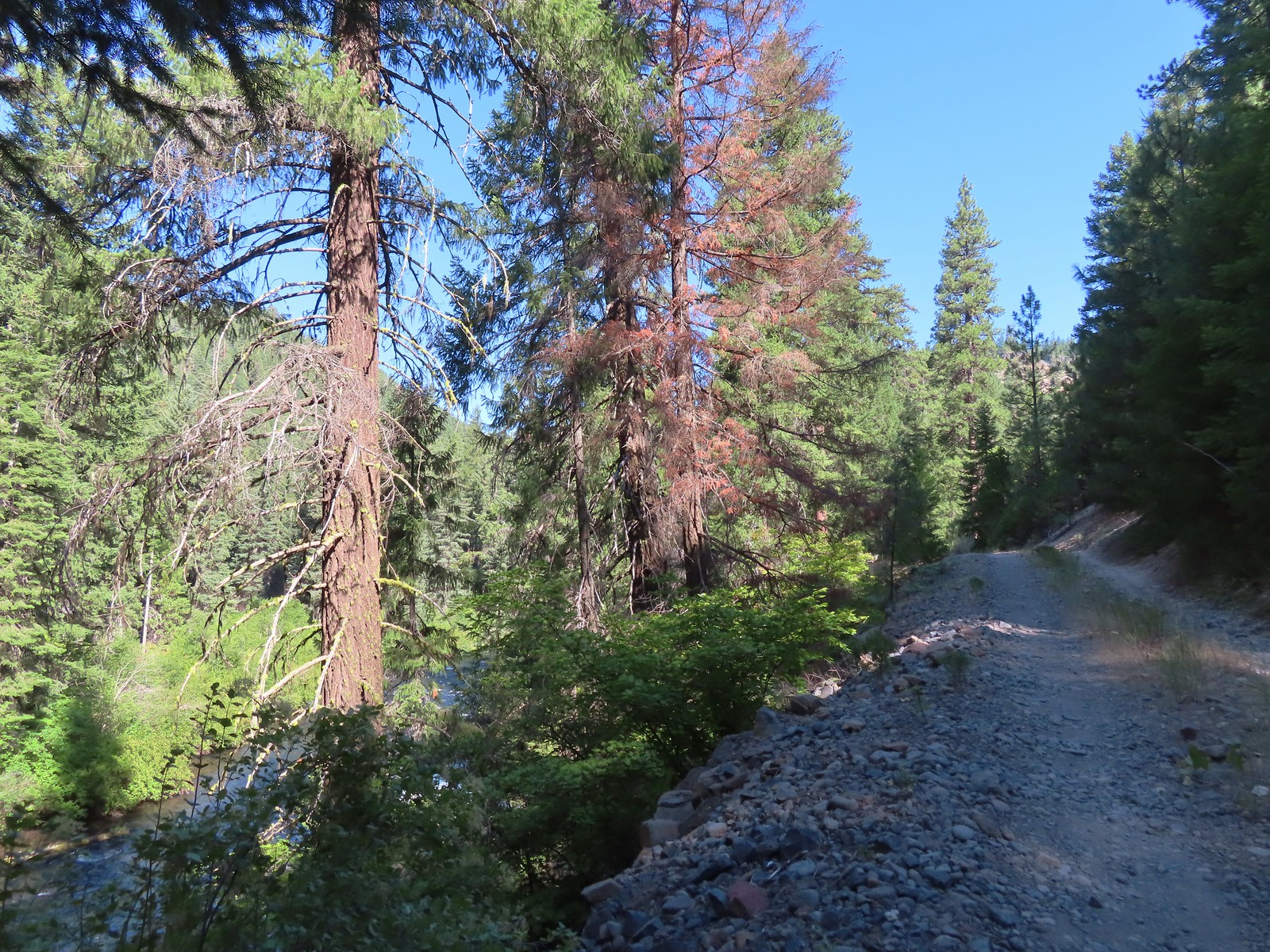
 Osprey nest
Osprey nest
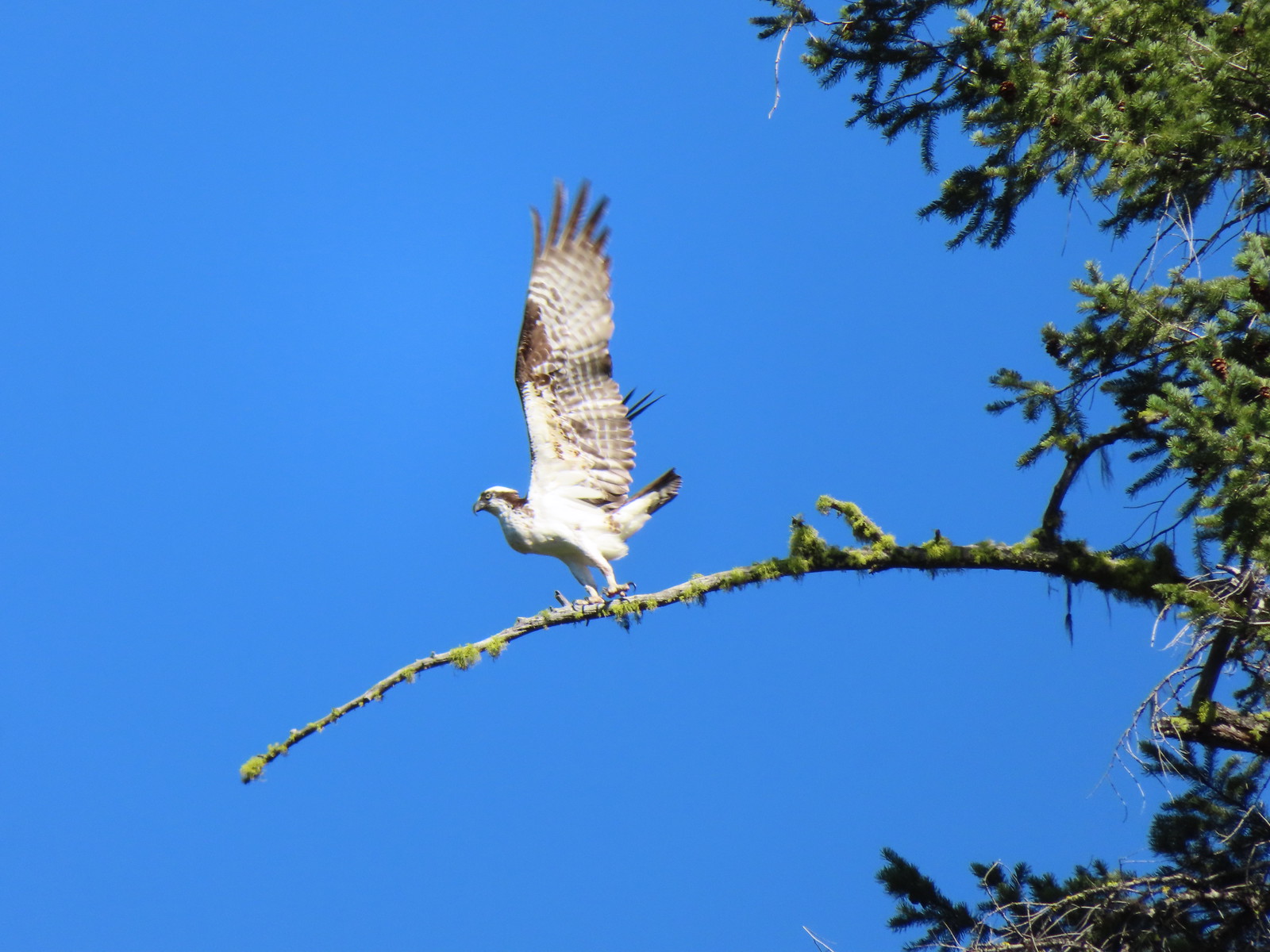
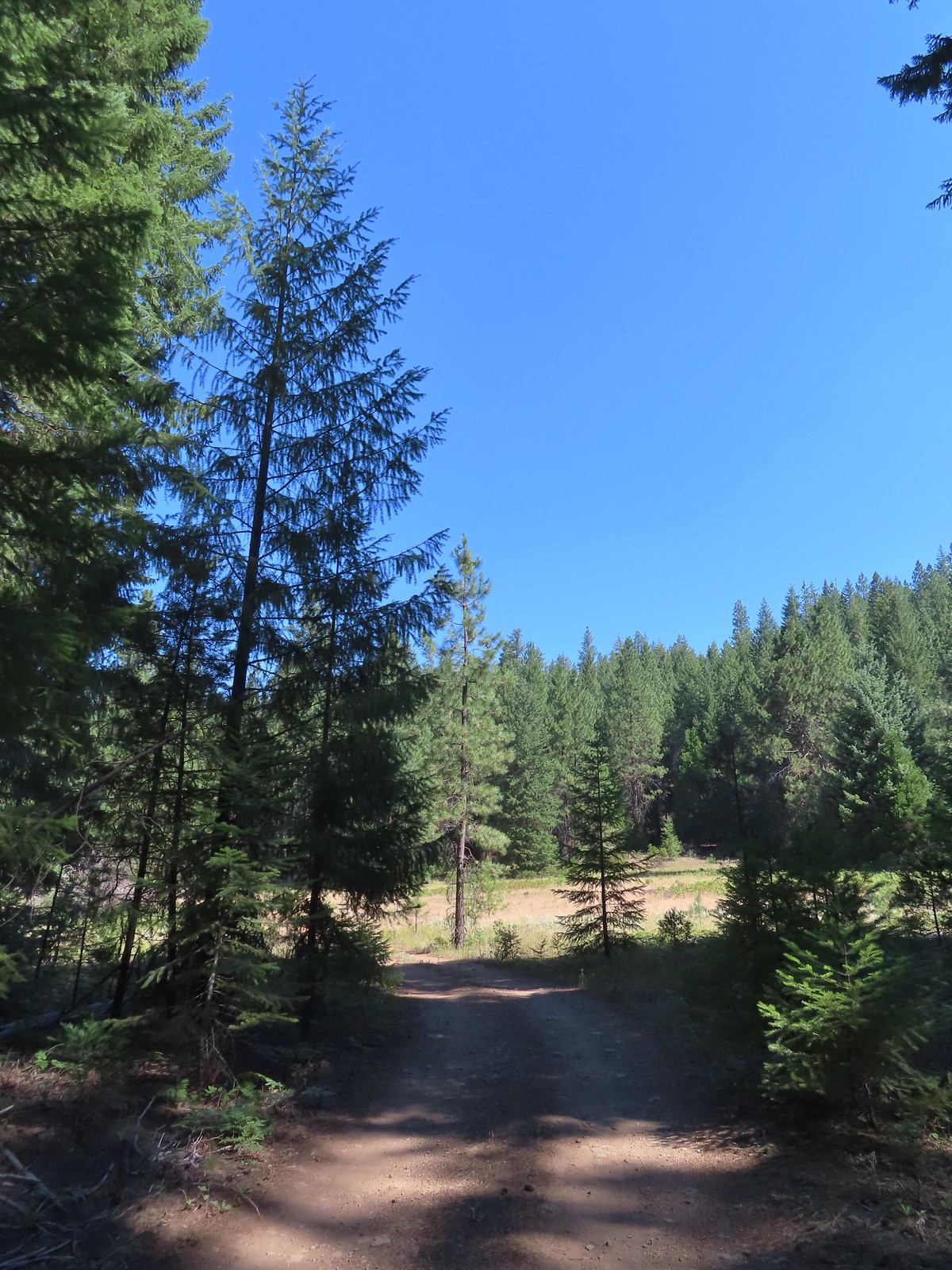
 Rock spire on lower section of Green Ridge. There are several interesting rock features higher up on the northern end of Green Ridge that were not visible from the road.
Rock spire on lower section of Green Ridge. There are several interesting rock features higher up on the northern end of Green Ridge that were not visible from the road. Orchid
Orchid Scarlet gilia
Scarlet gilia Some of the private cabins from the road.
Some of the private cabins from the road.


 A couple more cabins.
A couple more cabins. The end of the private land.
The end of the private land. The clear water allows for nice views of the rocks making up the riverbed.
The clear water allows for nice views of the rocks making up the riverbed.
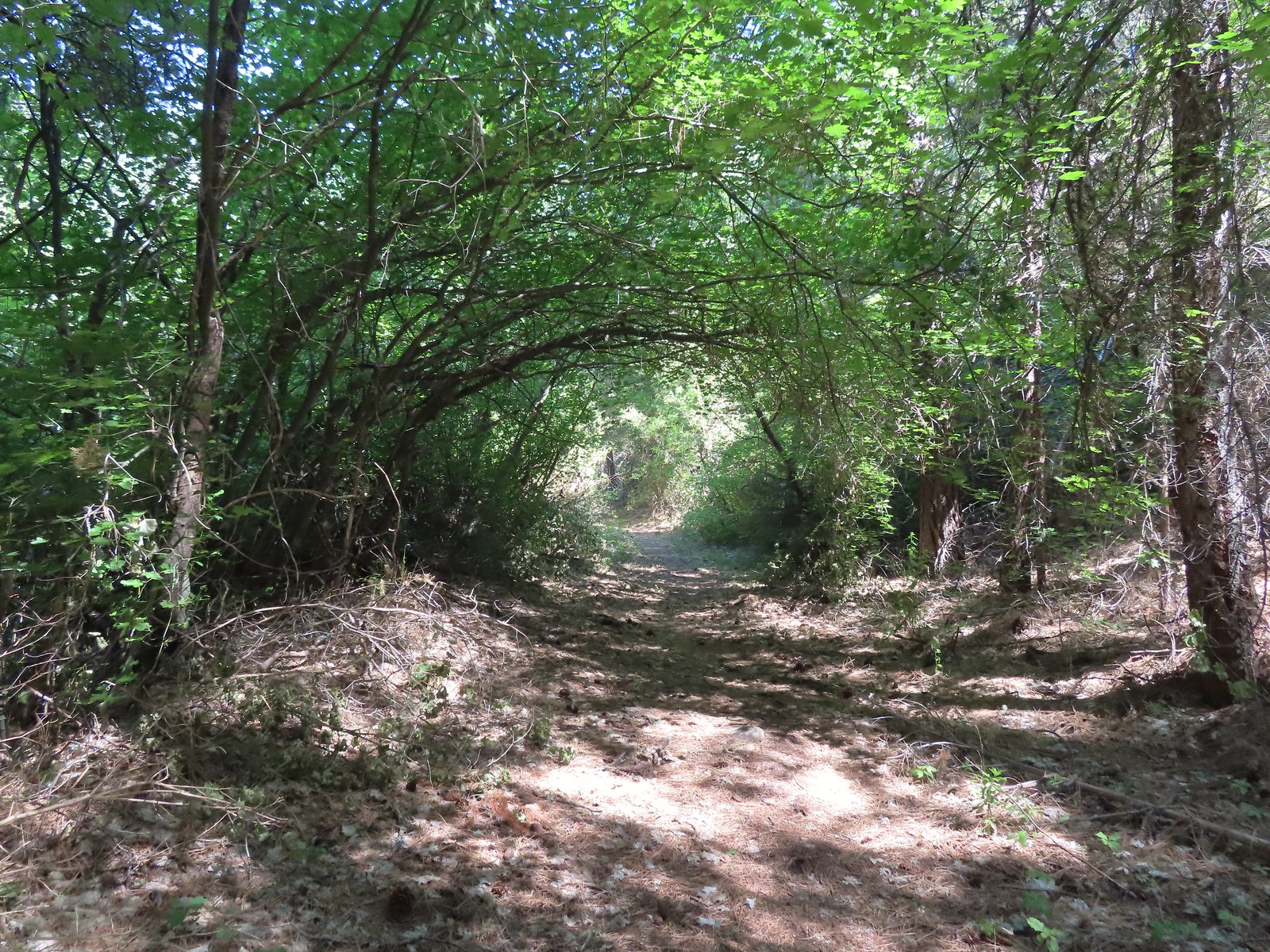
 Even though it had received maintenance the road was not in good enough condition for larger vehicles.
Even though it had received maintenance the road was not in good enough condition for larger vehicles.

 Pink monkeyflower
Pink monkeyflower

 Lorquin’s admiral
Lorquin’s admiral The forest opened up near the end of the road where we set up camp.
The forest opened up near the end of the road where we set up camp.
 Campsite
Campsite Yellow monkeyflower
Yellow monkeyflower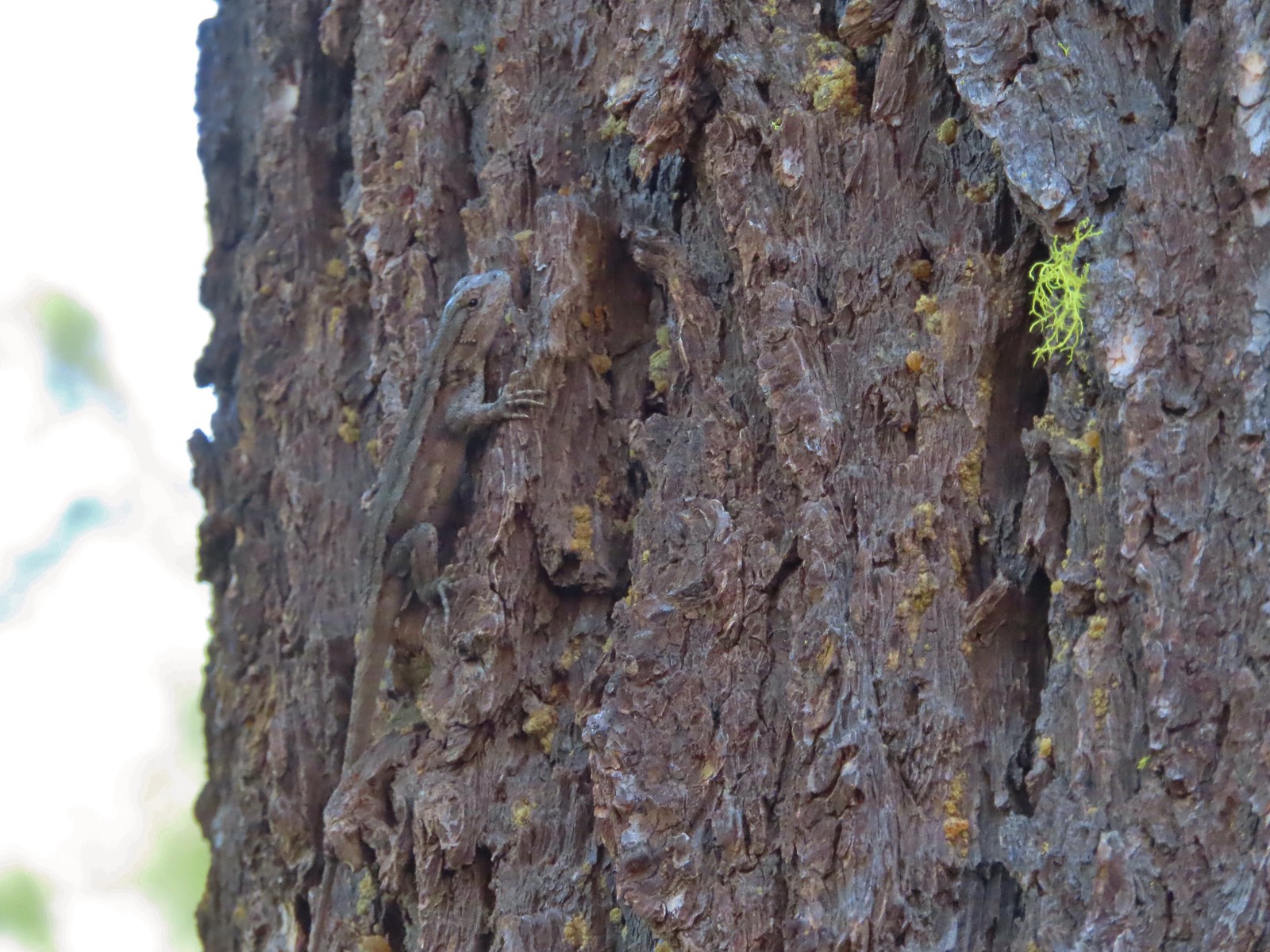 Lizard hanging out near the campsite.
Lizard hanging out near the campsite.

 Grouse
Grouse The answer to the questions is yes bears do.
The answer to the questions is yes bears do. The Metolius through the trees.
The Metolius through the trees. Sagebrush mariposa lily. There also tire tracks in the trail behind.
Sagebrush mariposa lily. There also tire tracks in the trail behind.
 Recent brushing had been performed through this area.
Recent brushing had been performed through this area. Looking up the end of Green Ridge.
Looking up the end of Green Ridge. This large tree had been cut fairly recently.
This large tree had been cut fairly recently. Flagging marking a reroute around a downed tree.
Flagging marking a reroute around a downed tree. Starting to get brushy.
Starting to get brushy. View across the river to the Warm Springs Indian Reservation.
View across the river to the Warm Springs Indian Reservation. Flowers along the Metolius.
Flowers along the Metolius.
 The Whitewater River was behind the rock formation on the far side. The Whitewater River begins at the Whitewater Glacier on Mt. Jefferson and flows roughly 7.5 miles through the Warm Springs Reservation to the Metolius.
The Whitewater River was behind the rock formation on the far side. The Whitewater River begins at the Whitewater Glacier on Mt. Jefferson and flows roughly 7.5 miles through the Warm Springs Reservation to the Metolius. More clear water.
More clear water. Fireweed
Fireweed Thimbleberries provided us with a few after dinner snacks.
Thimbleberries provided us with a few after dinner snacks. Hedgenettle
Hedgenettle The Shut-In Trail traveled right along the riverbank at times.
The Shut-In Trail traveled right along the riverbank at times. There was a small set of boards nailed together to assist with crossing the sketchiest part, but they were just lying on the hillside and not anchored in any way.
There was a small set of boards nailed together to assist with crossing the sketchiest part, but they were just lying on the hillside and not anchored in any way. The Shut-In Trail from CR-64.
The Shut-In Trail from CR-64. CR-64
CR-64
 Frog on a skunk cabbage leaf. There were a few wet areas along the Shut-In Trail which meant a few mosquitos were present.
Frog on a skunk cabbage leaf. There were a few wet areas along the Shut-In Trail which meant a few mosquitos were present. The Sun going down as we approached camp.
The Sun going down as we approached camp.
 Pinedrops
Pinedrops Squirrel
Squirrel Bee sleeping on thistle.
Bee sleeping on thistle. Large boykinia
Large boykinia We t
We t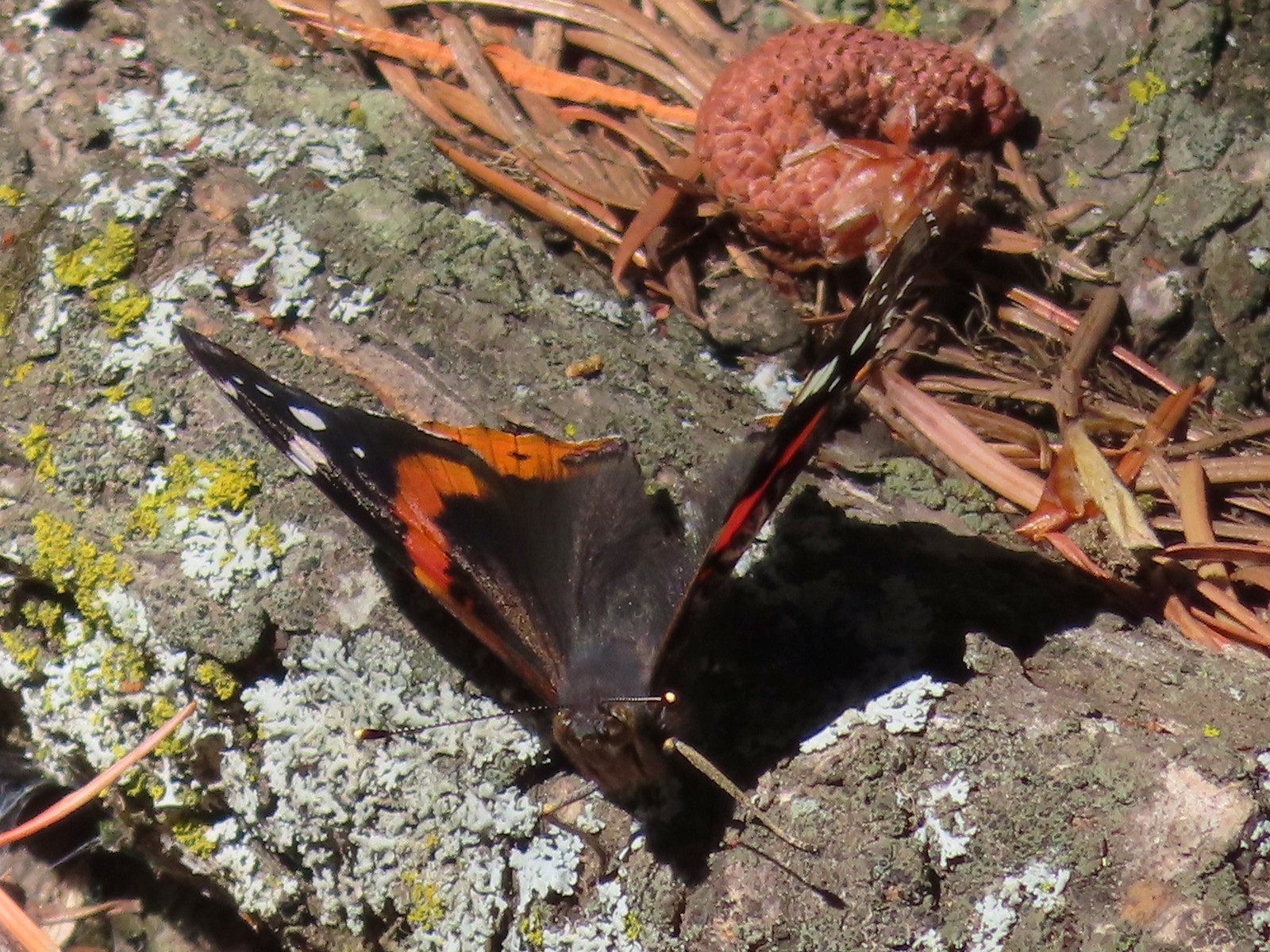 Red admiral. As far as I know this is the first one of this species of butterfly that we’d seen.
Red admiral. As far as I know this is the first one of this species of butterfly that we’d seen.
 Common wood nymph
Common wood nymph Across from the Candle Creek Campground.
Across from the Candle Creek Campground. Green Ridge through some smoke. A couple of new fires, one on the Warm Springs Reservation and one East of Eugene had started over the weekend.
Green Ridge through some smoke. A couple of new fires, one on the Warm Springs Reservation and one East of Eugene had started over the weekend. Love the colors of the Metolius.
Love the colors of the Metolius.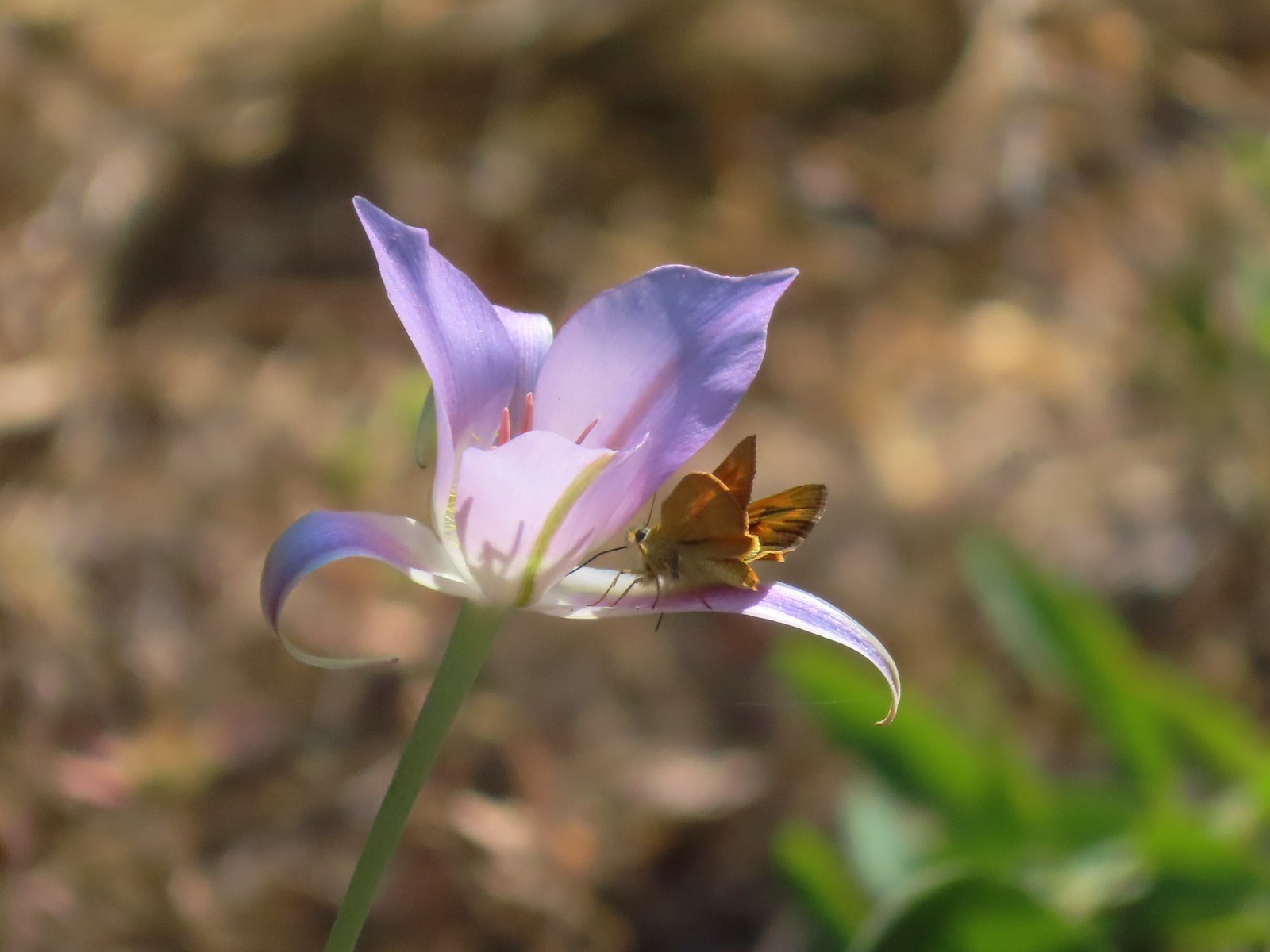 Skipper on a mariposa lily.
Skipper on a mariposa lily.
 Lower Bridge Campground is ahead to the left in the trees.
Lower Bridge Campground is ahead to the left in the trees.


 This was at least the third posted notice so there is no claiming you weren’t aware that a permit is needed.
This was at least the third posted notice so there is no claiming you weren’t aware that a permit is needed.
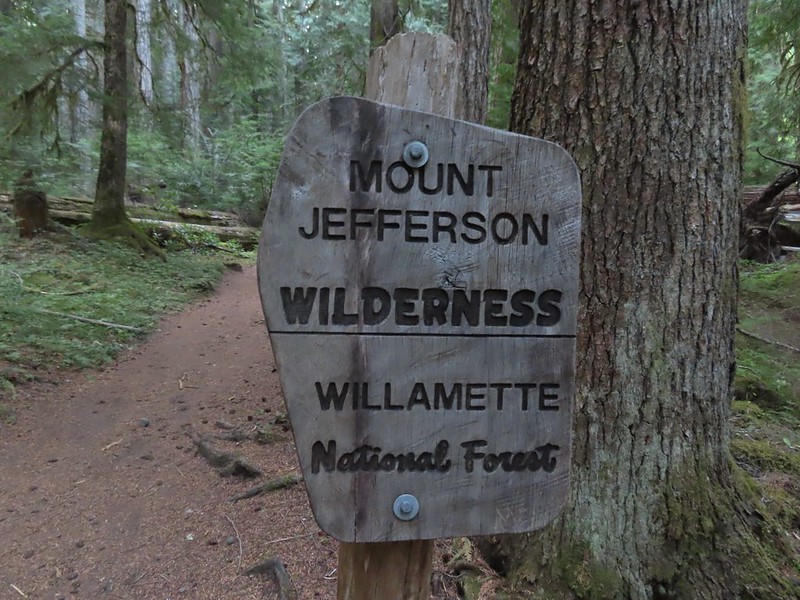
 Pamelia Creek
Pamelia Creek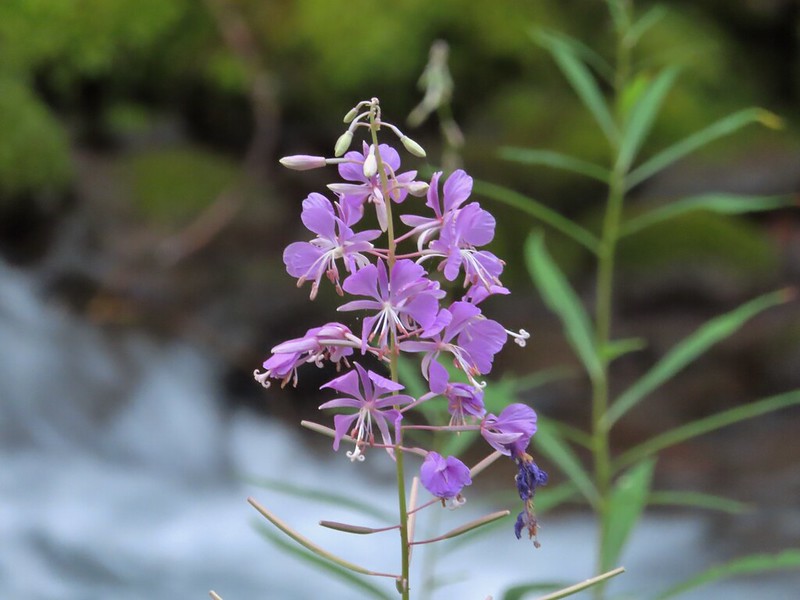 Fireweed along the creek.
Fireweed along the creek.

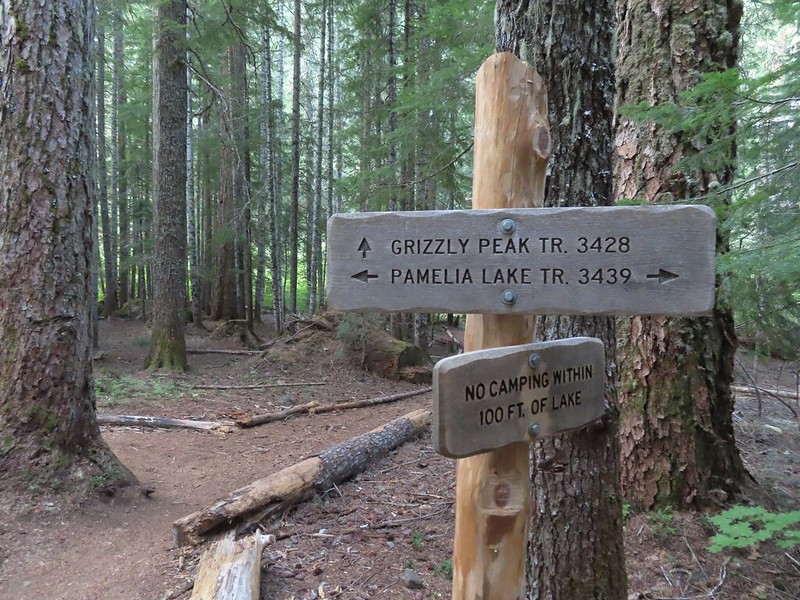
 Pamelia Creek only flows underground here much of the year.
Pamelia Creek only flows underground here much of the year. Heading up.
Heading up. A glimpse of Mt. Jefferson.
A glimpse of Mt. Jefferson. That might be Woodpecker Hill, it was hard to tell exactly which ridge we could see with nothing else visible to help orient.
That might be Woodpecker Hill, it was hard to tell exactly which ridge we could see with nothing else visible to help orient. This looked like it might be a nice little waterfall with enough water.
This looked like it might be a nice little waterfall with enough water. That’s not enough water.
That’s not enough water. Heather below one of several switchbacks.
Heather below one of several switchbacks. Turning up the ridge.
Turning up the ridge.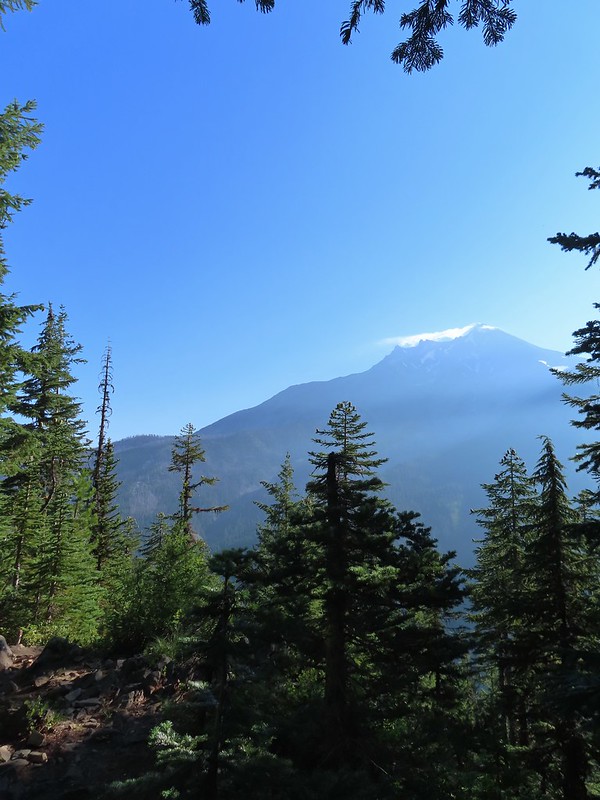 The haze was probably a combination of morning cloud/fog and smoke from the Cedar Creek Fire near Waldo Lake.
The haze was probably a combination of morning cloud/fog and smoke from the Cedar Creek Fire near Waldo Lake.
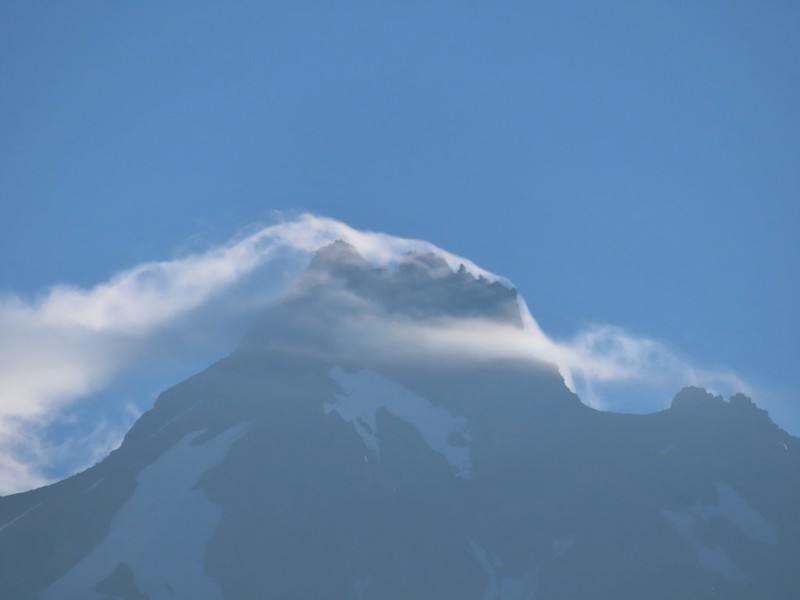
 Pinedrops
Pinedrops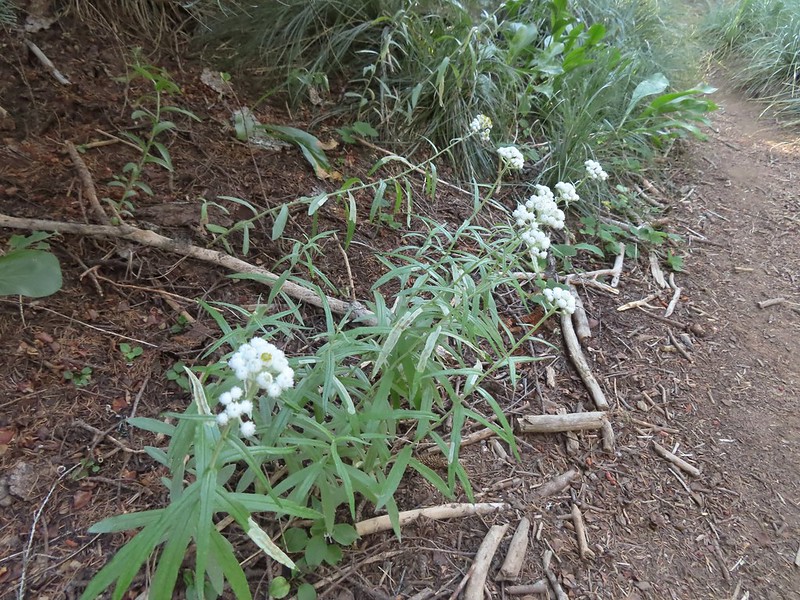 We were too late for most of the flowers but there were a few pearly everlasting going.
We were too late for most of the flowers but there were a few pearly everlasting going.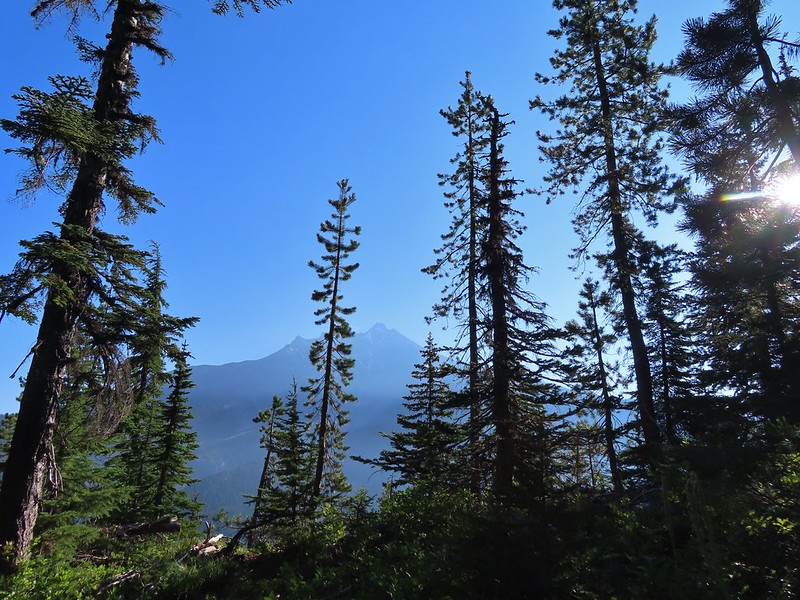 There’s that pesky Sun again.
There’s that pesky Sun again.

 Aster
Aster Lousewort
Lousewort Lots of burnt forest out there.
Lots of burnt forest out there. Triangulation Peak and Boca Cave (
Triangulation Peak and Boca Cave (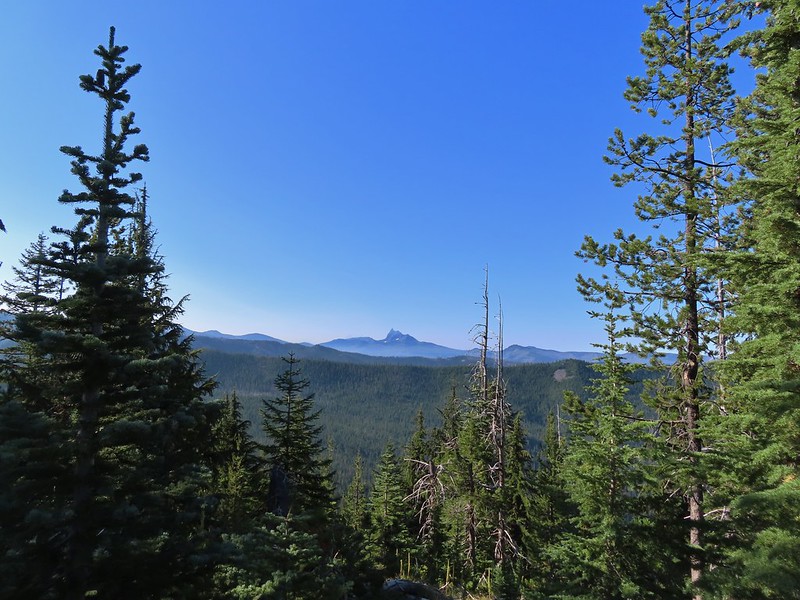
 Broken Top to the far left blending into the haze and Three Fingered Jack to the right with the Three Sisters in between.
Broken Top to the far left blending into the haze and Three Fingered Jack to the right with the Three Sisters in between.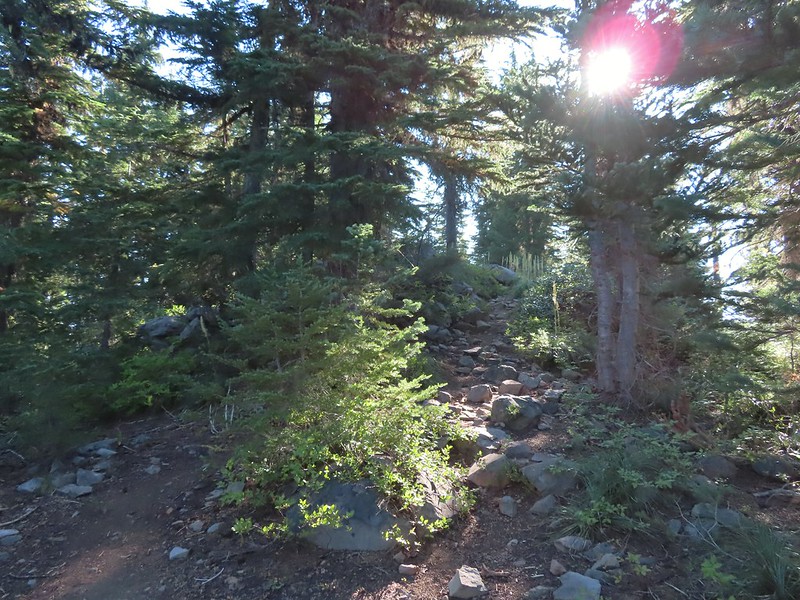 Just below the summit.
Just below the summit.
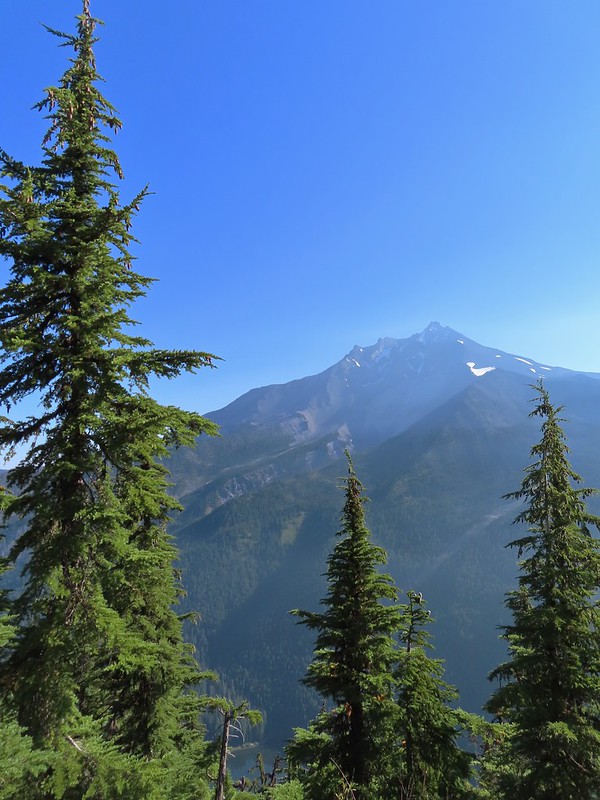 Pamelia Lake below Mt. Jefferson.
Pamelia Lake below Mt. Jefferson.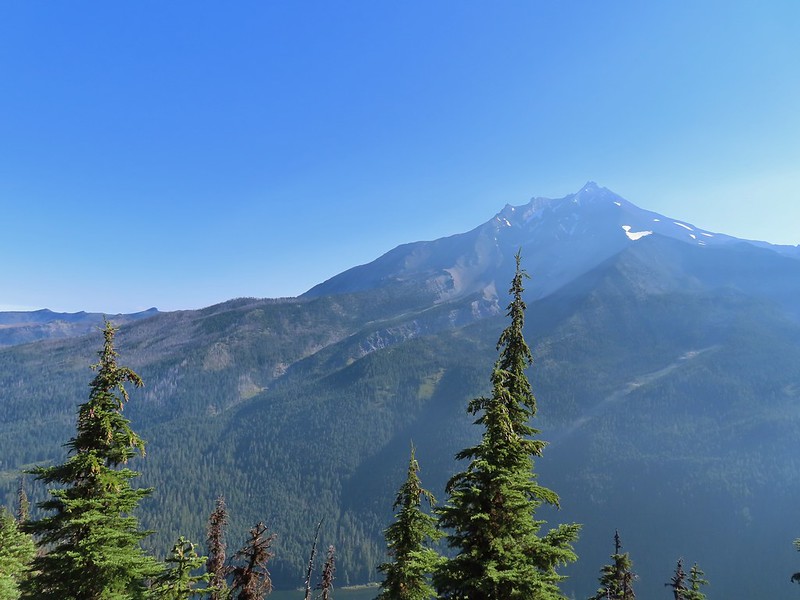
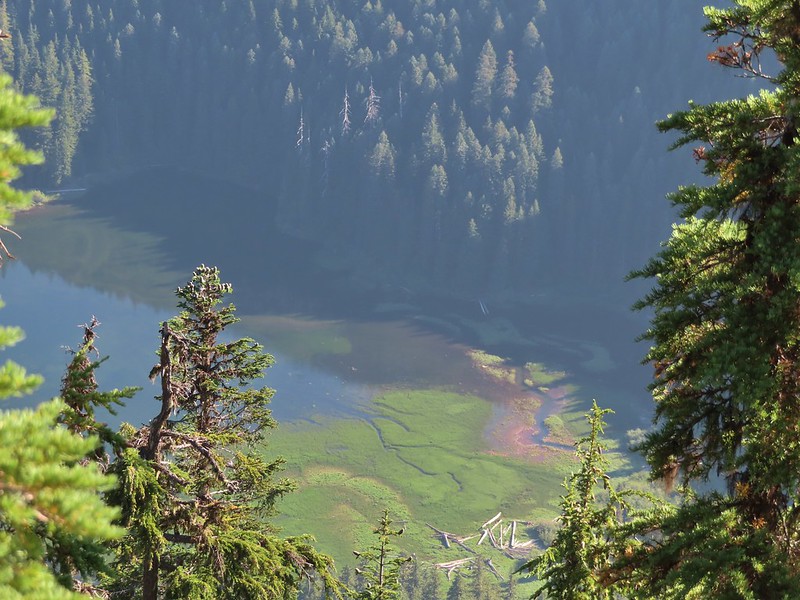 Hunts Creek flowing into Pamelia Lake.
Hunts Creek flowing into Pamelia Lake.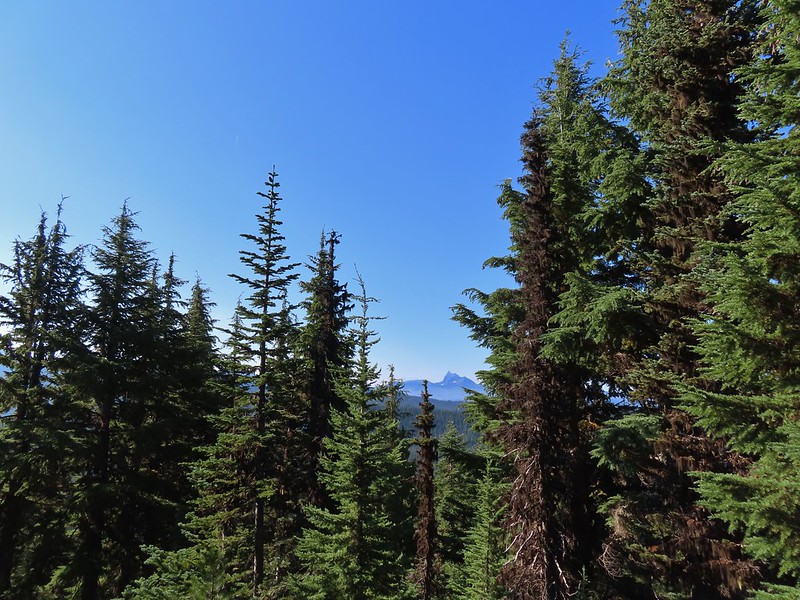 Had to hunt for a view of Three Fingered Jack.
Had to hunt for a view of Three Fingered Jack. A hard to make out Mt. Hood beyond the far ridge which consists of Bear Point to the left (
A hard to make out Mt. Hood beyond the far ridge which consists of Bear Point to the left (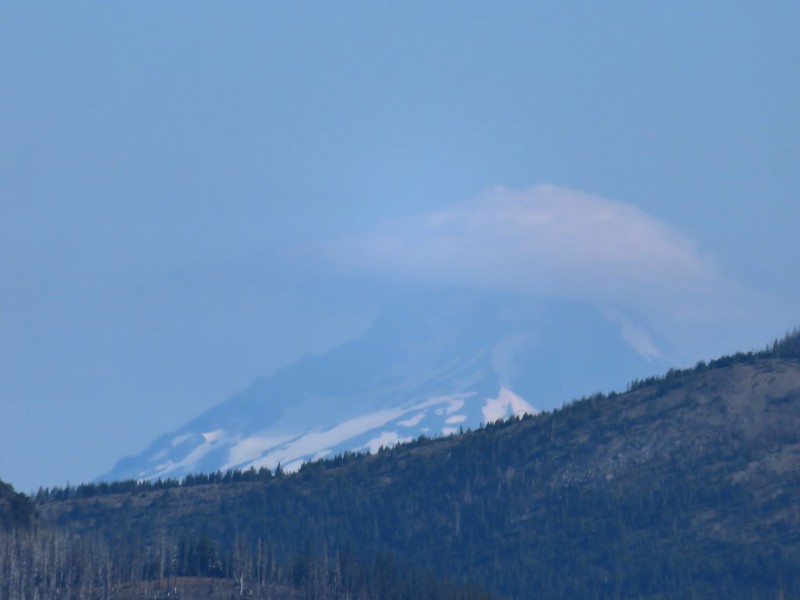 Mt. Hood
Mt. Hood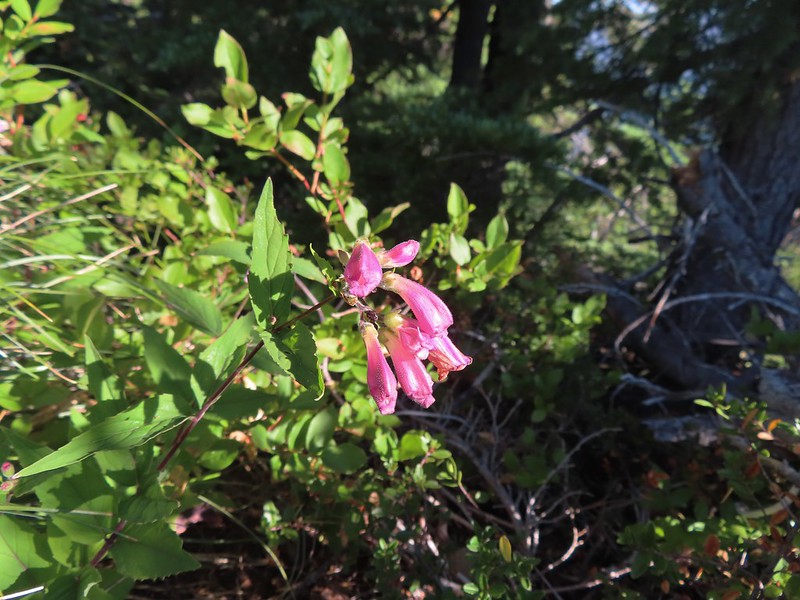 Beardtongue
Beardtongue A fritillary butterfly.
A fritillary butterfly.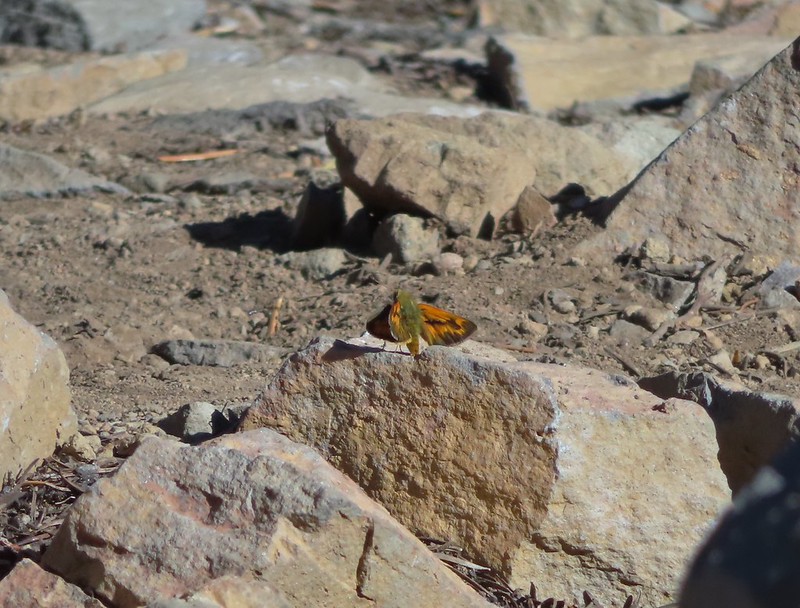 A skipper
A skipper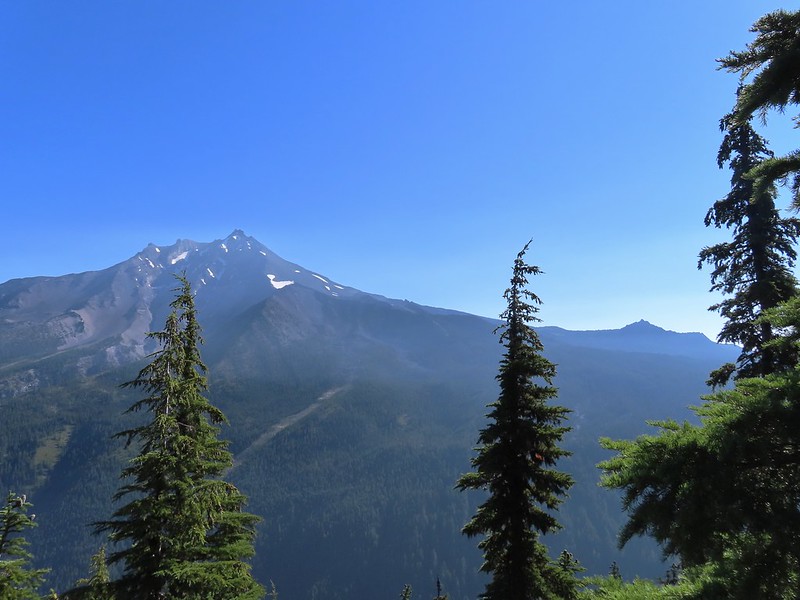 Goat Peak is to the right of Mt. Jefferson.
Goat Peak is to the right of Mt. Jefferson. Mt. Jefferson and Pamelia Lake from one of the viewpoints along the ridge.
Mt. Jefferson and Pamelia Lake from one of the viewpoints along the ridge.
 Cascade toad
Cascade toad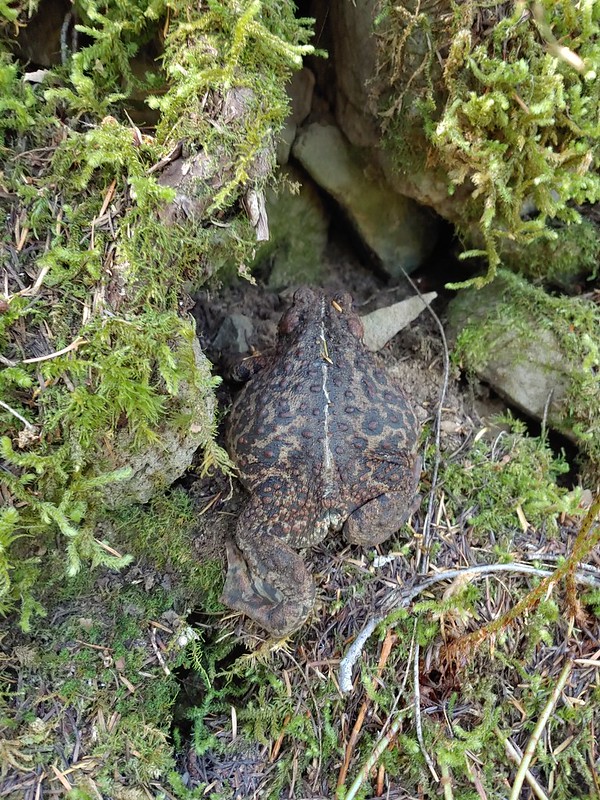

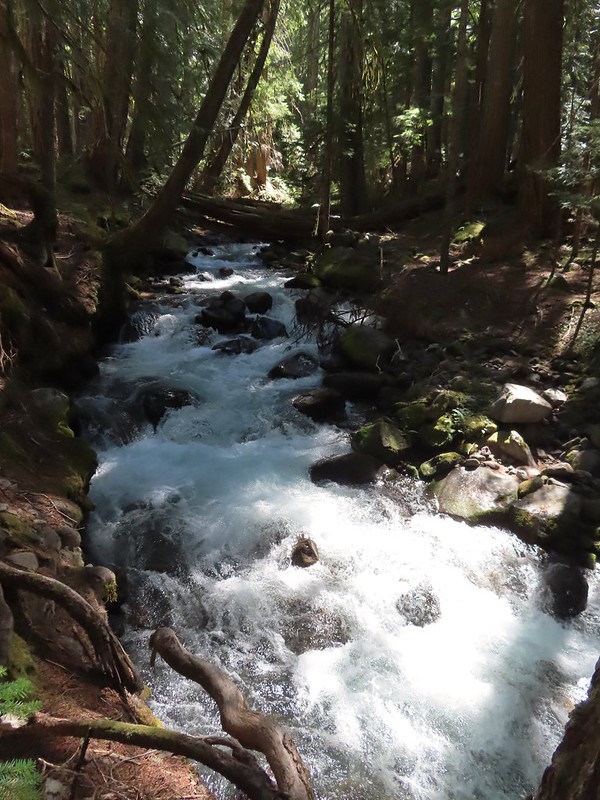 One more of Pamelia Creek.
One more of Pamelia Creek.

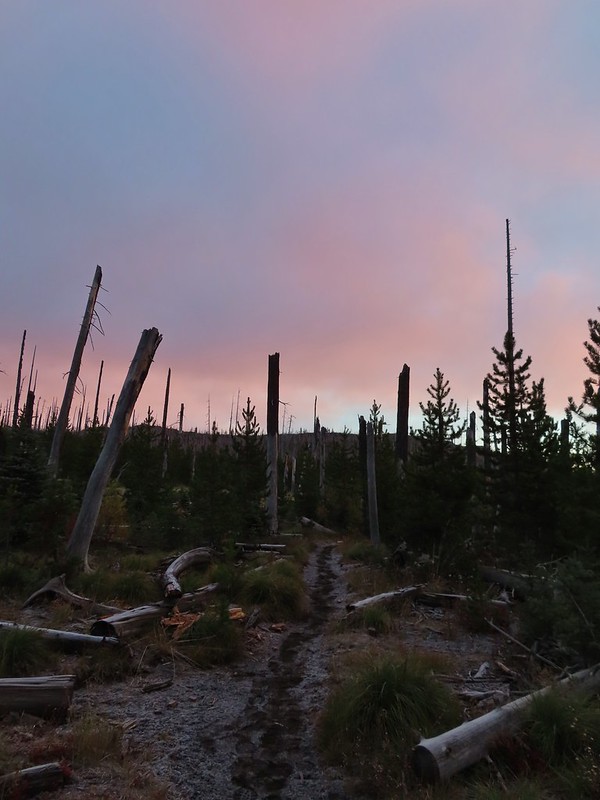
 Black Crater (
Black Crater (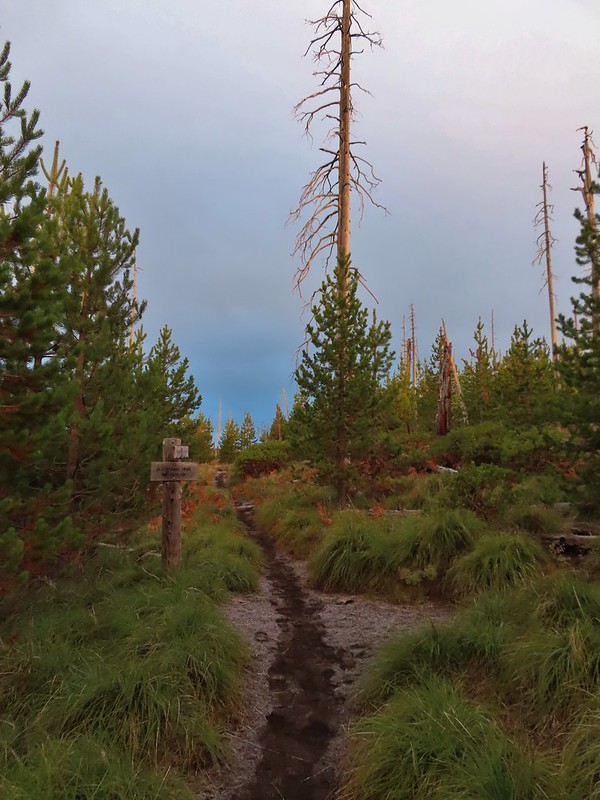

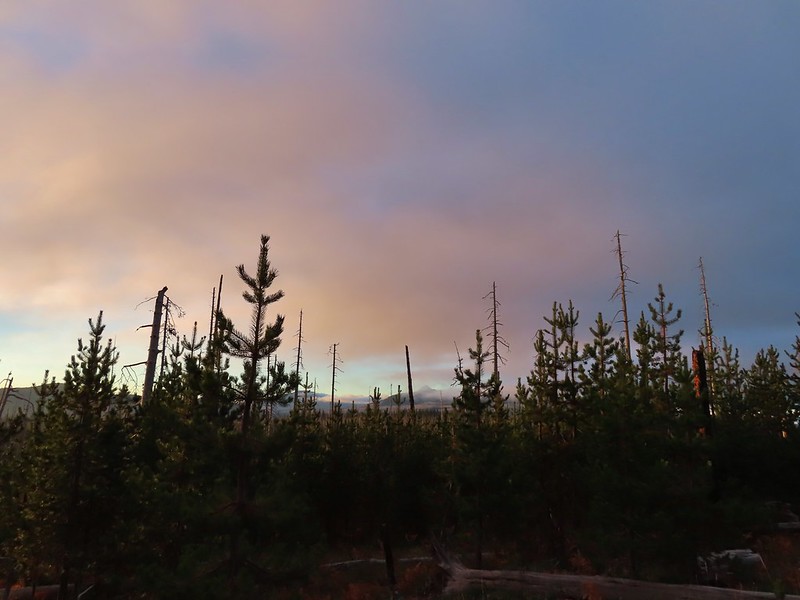 Black Crater and North Sister
Black Crater and North Sister Black Crater, the top of Broken Top, some of the Sisters, and part of Mt. Washington.
Black Crater, the top of Broken Top, some of the Sisters, and part of Mt. Washington.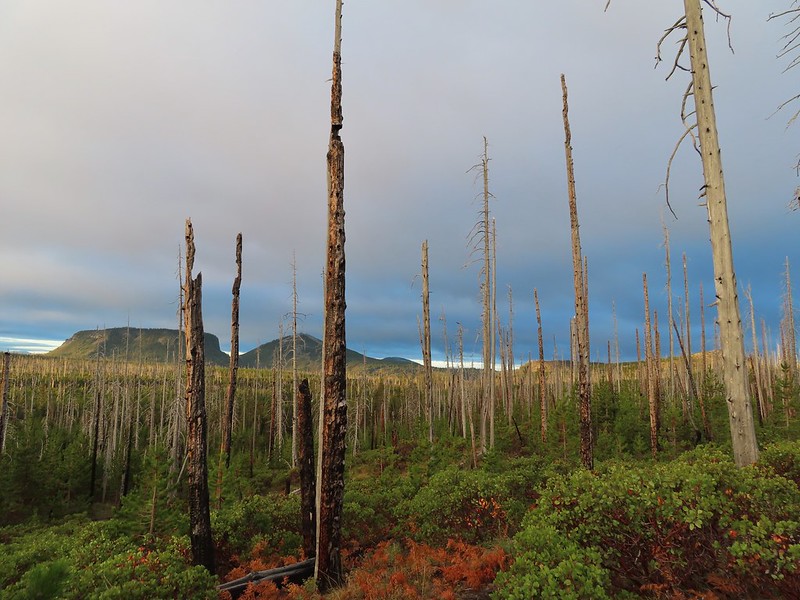 Hayrick and Hoodoo
Hayrick and Hoodoo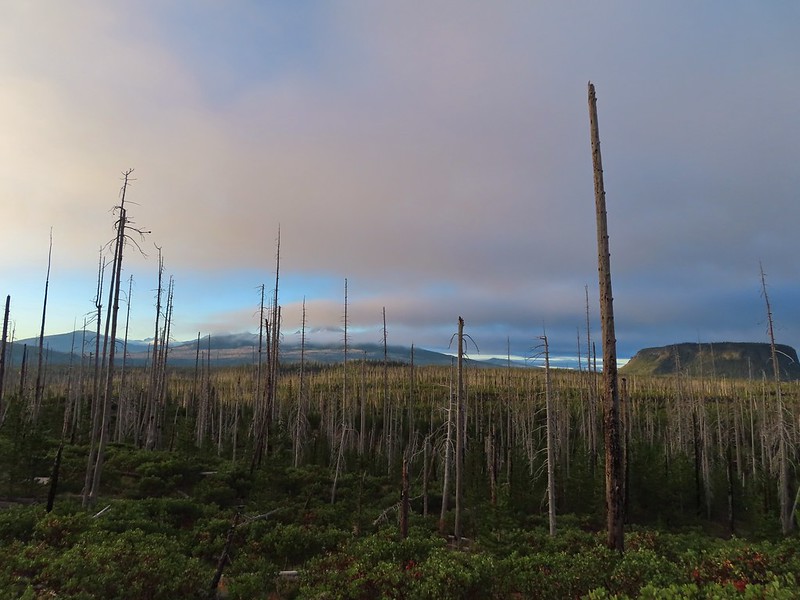 Between Mt. Washington and Hayrick Butte is Scott Mountain (
Between Mt. Washington and Hayrick Butte is Scott Mountain (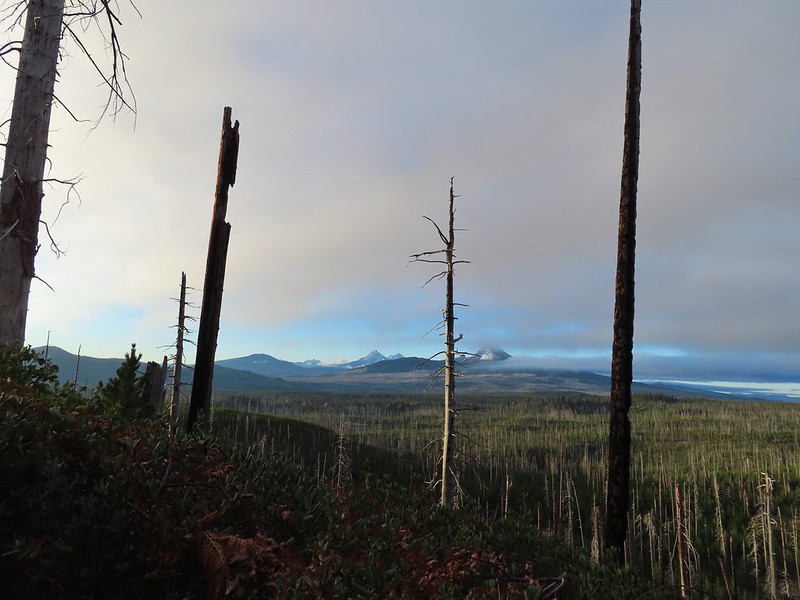 Cache Mountain is the high point furthest to the left.
Cache Mountain is the high point furthest to the left.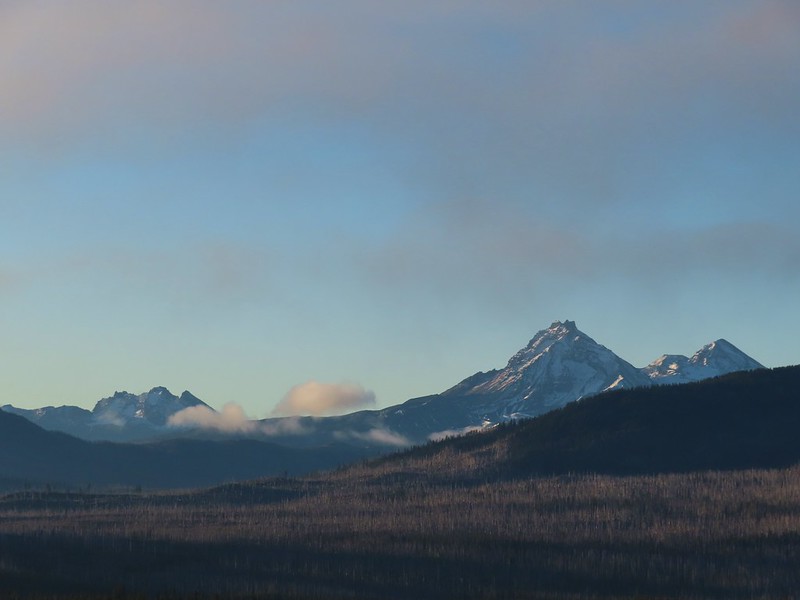 Broken Top and the Three Sisters
Broken Top and the Three Sisters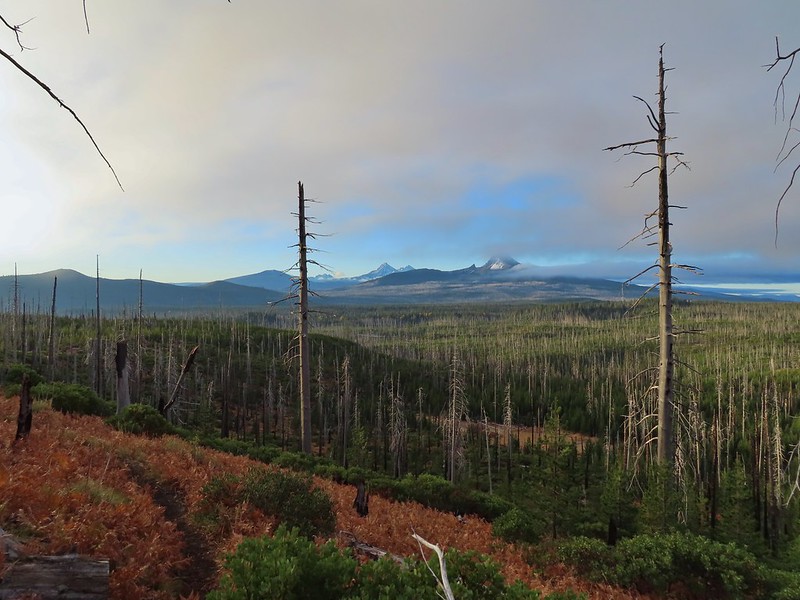
 Mt. Washington
Mt. Washington The Three Sisters. The summit of South Sister is between North and Middle Sister behind 9321′
The Three Sisters. The summit of South Sister is between North and Middle Sister behind 9321′ 
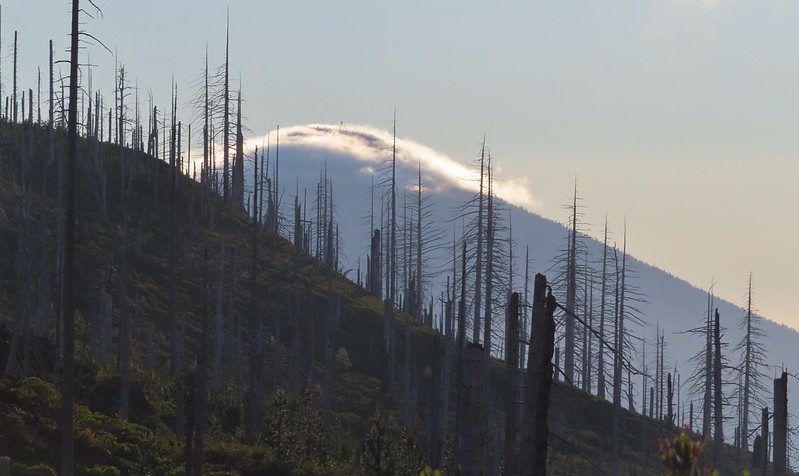 Black Butte (
Black Butte (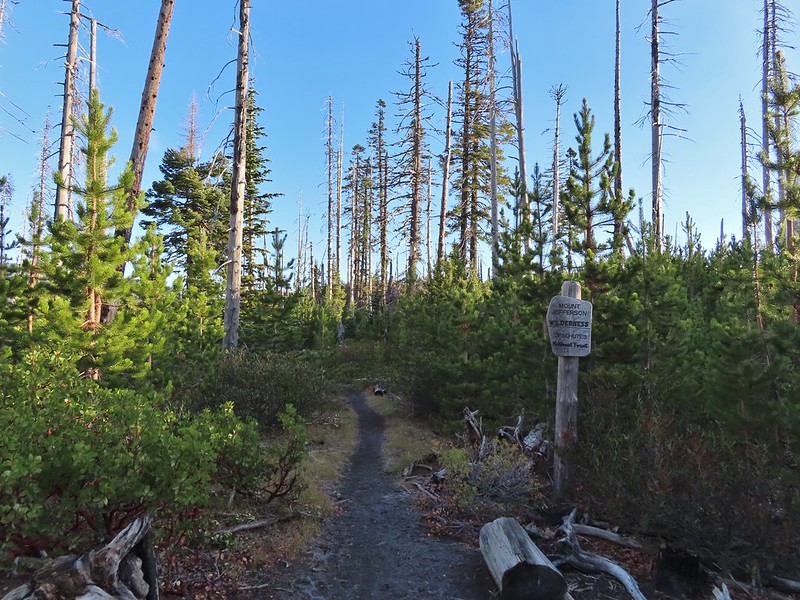
 A different angle from 2012.
A different angle from 2012.

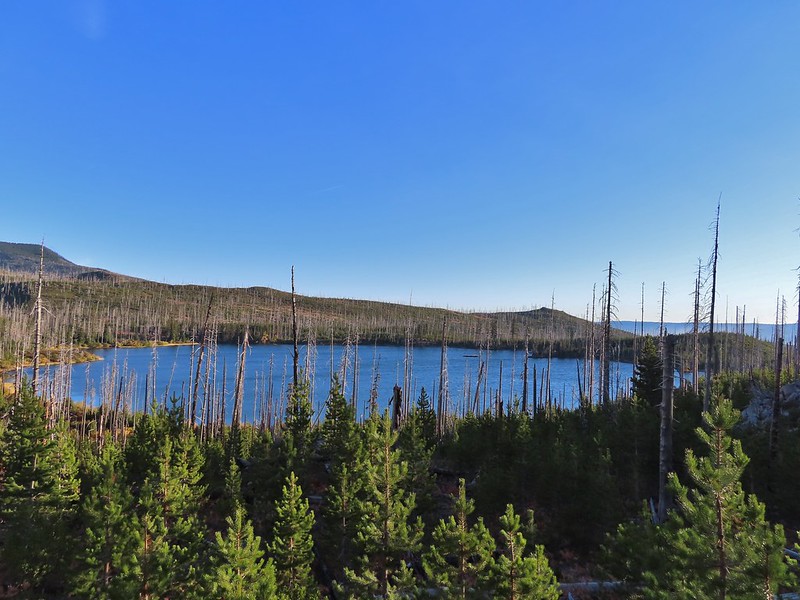
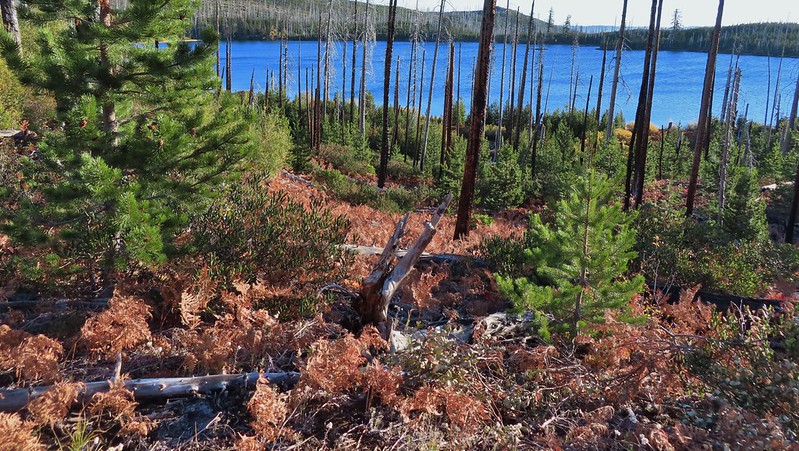 One white rump with a black tail amid the ferns near the center of the photo (good luck).
One white rump with a black tail amid the ferns near the center of the photo (good luck).
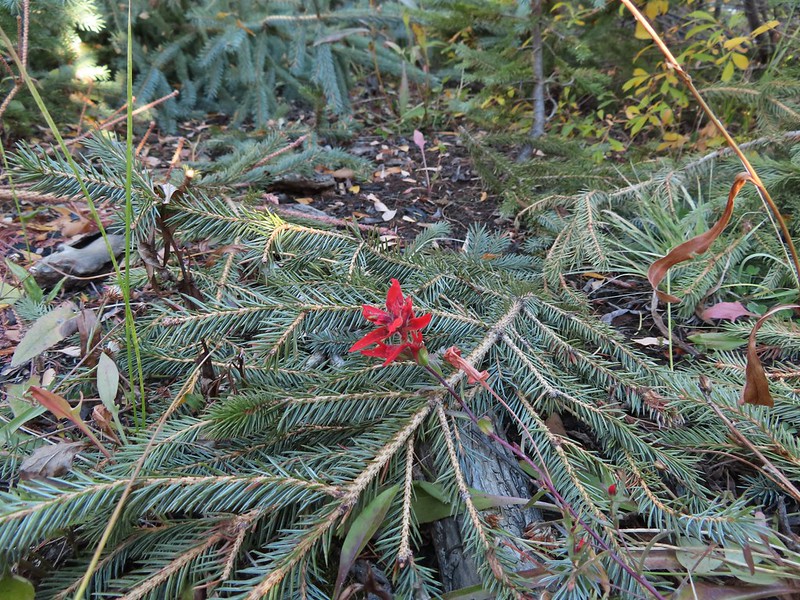 The only paintbrush we would see all day.
The only paintbrush we would see all day.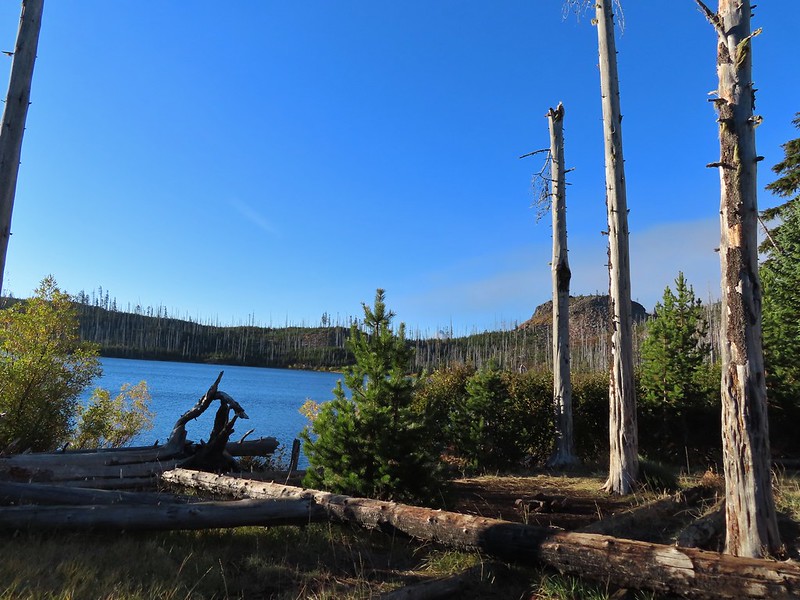 The top of Mt. Washington is just visible on the other side of Square Lake.
The top of Mt. Washington is just visible on the other side of Square Lake.


 Mt. Washington’s spire again.
Mt. Washington’s spire again.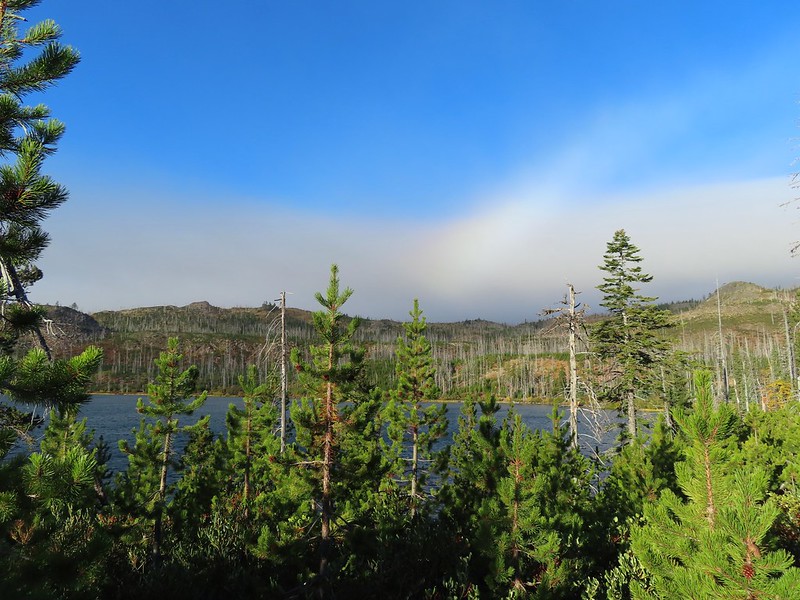 A rainbow was trying to form to the west.
A rainbow was trying to form to the west.

 Lodgepole pine seeds require fire in order to be released from their tight cones.
Lodgepole pine seeds require fire in order to be released from their tight cones. Our first sighting of Long Lake (zoomed in).
Our first sighting of Long Lake (zoomed in).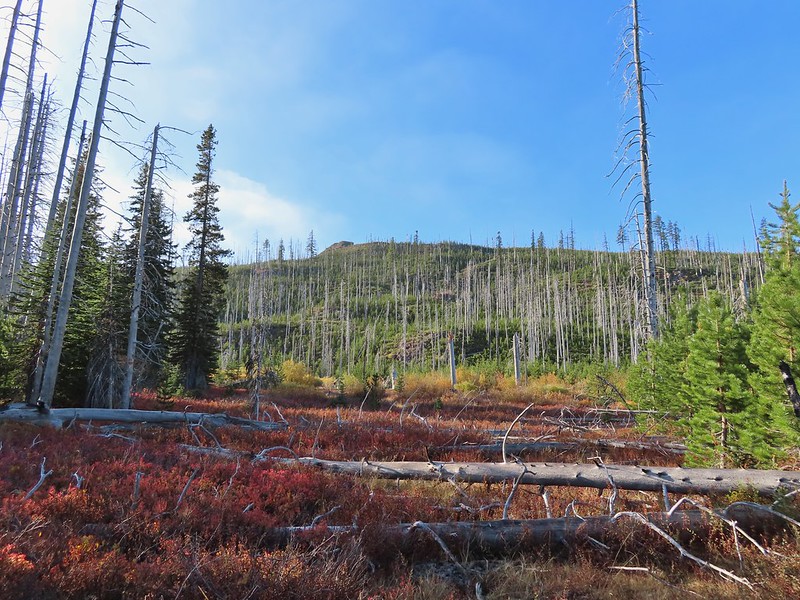
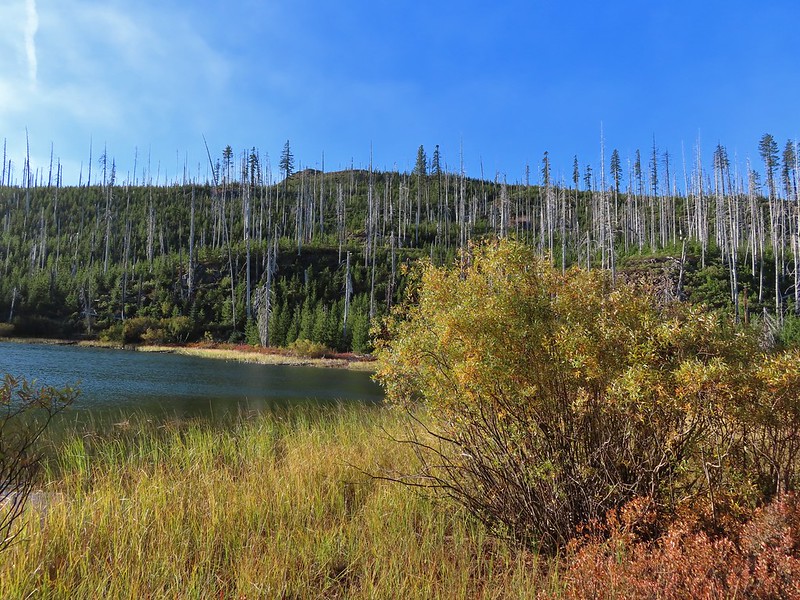

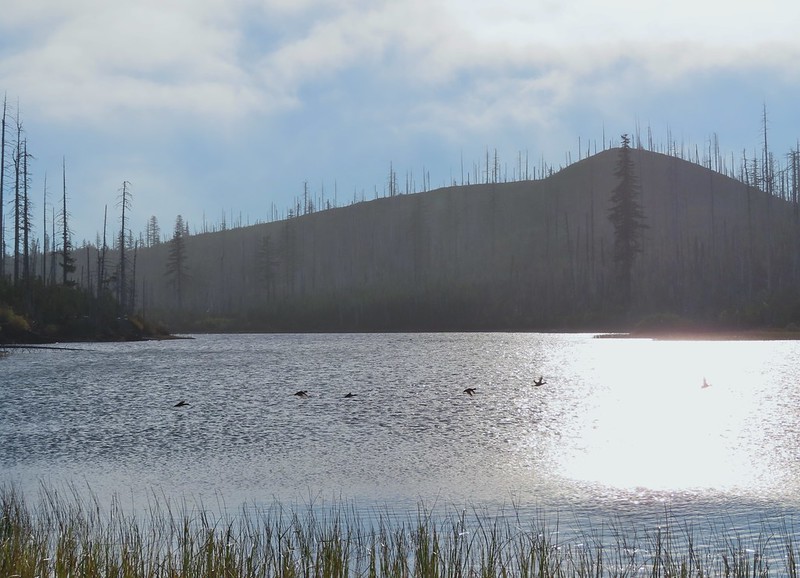 Ducks taking off from Long Lake.
Ducks taking off from Long Lake.
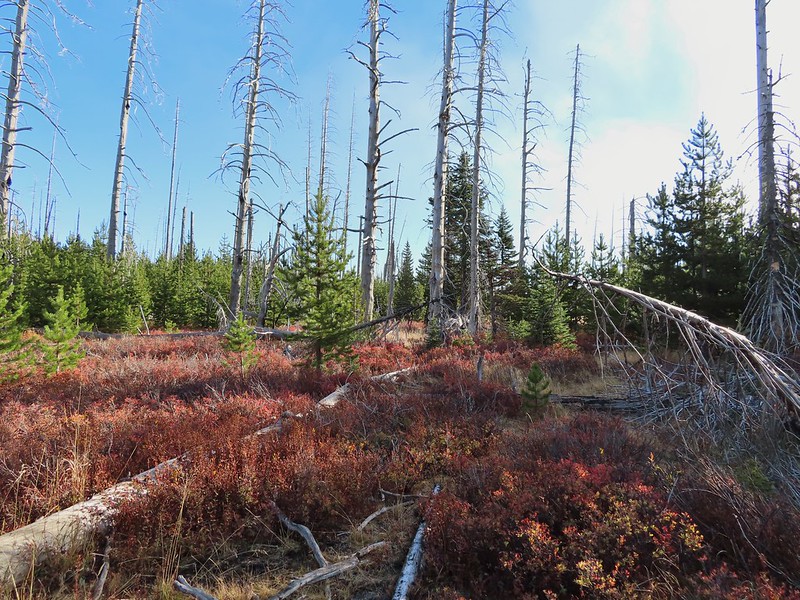
 This is one of the areas that we could see getting pretty muddy/wet.
This is one of the areas that we could see getting pretty muddy/wet.
 Rainbow
Rainbow The Round Lake Trail just on the other side of the downed tree.
The Round Lake Trail just on the other side of the downed tree.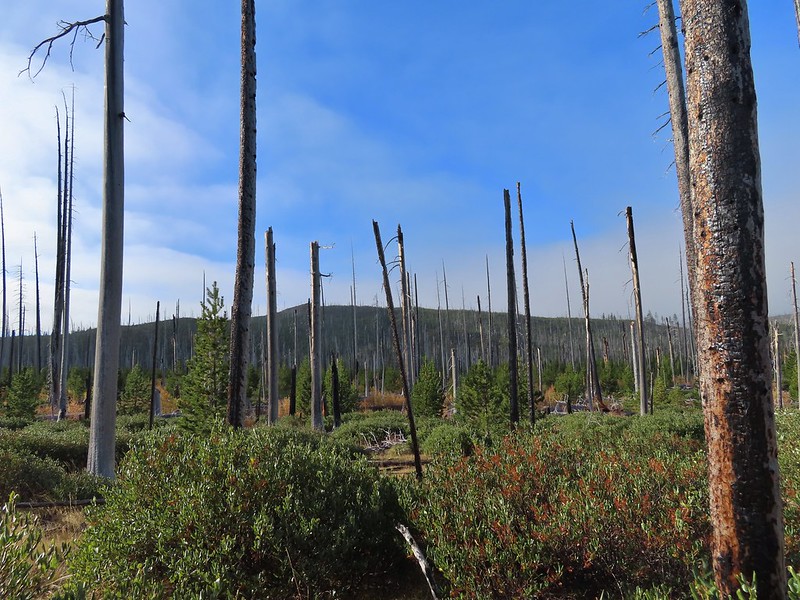 Long Lake is back down that way somewhere.
Long Lake is back down that way somewhere.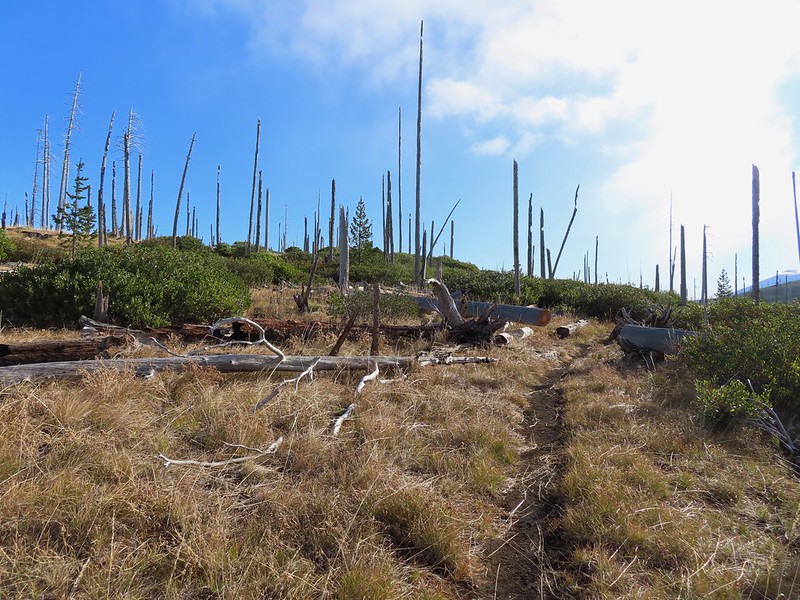 Back on the Round Lake Trail.
Back on the Round Lake Trail. Black Butte shedding the morning clouds.
Black Butte shedding the morning clouds. The top of Three Fingered Jack behind some thin clouds.
The top of Three Fingered Jack behind some thin clouds.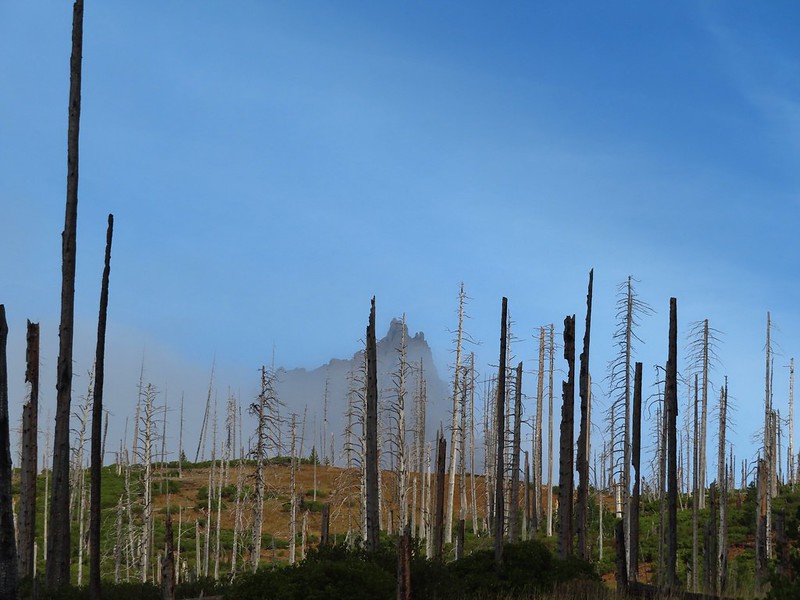
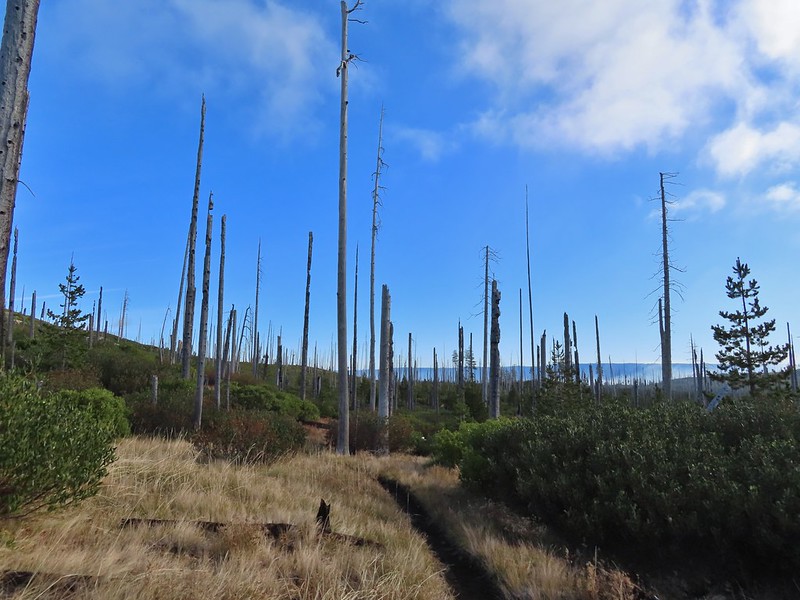 Green Ridge (
Green Ridge ( A better look at Three Fingered Jack.
A better look at Three Fingered Jack. First glimpse of Round Lake.
First glimpse of Round Lake.
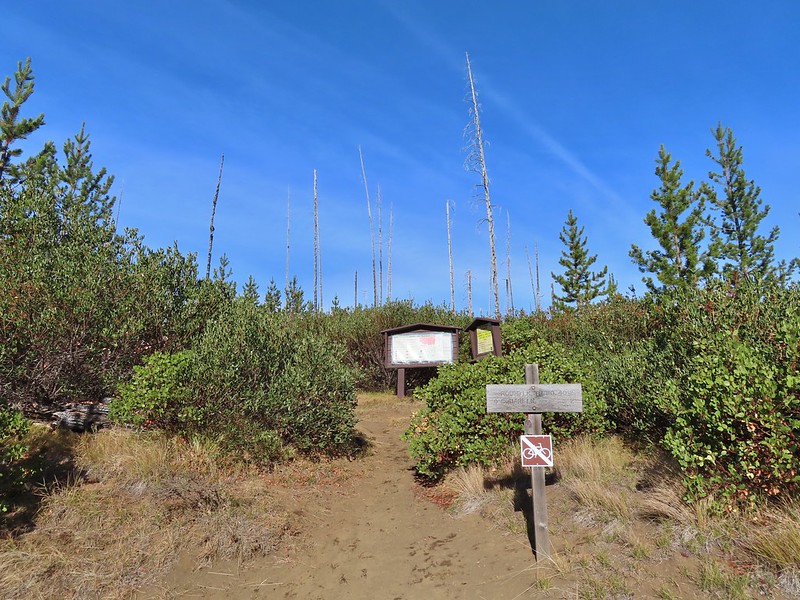
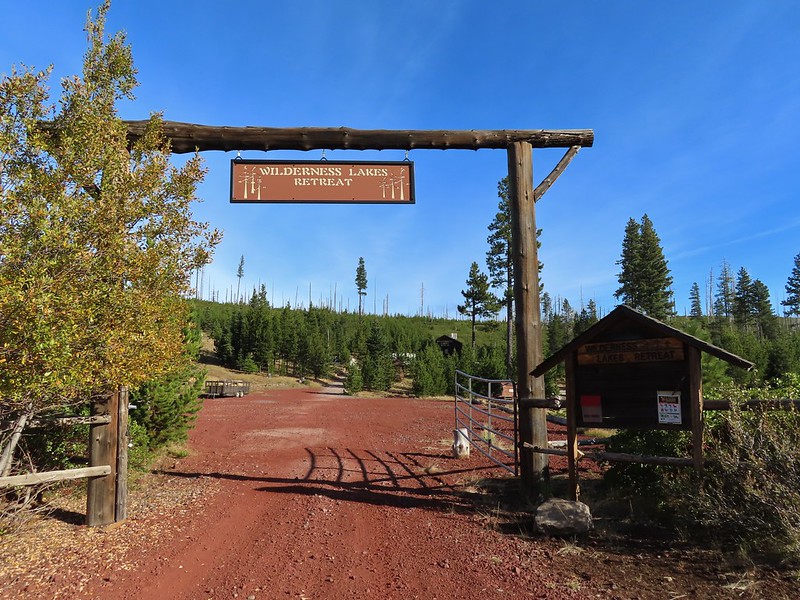

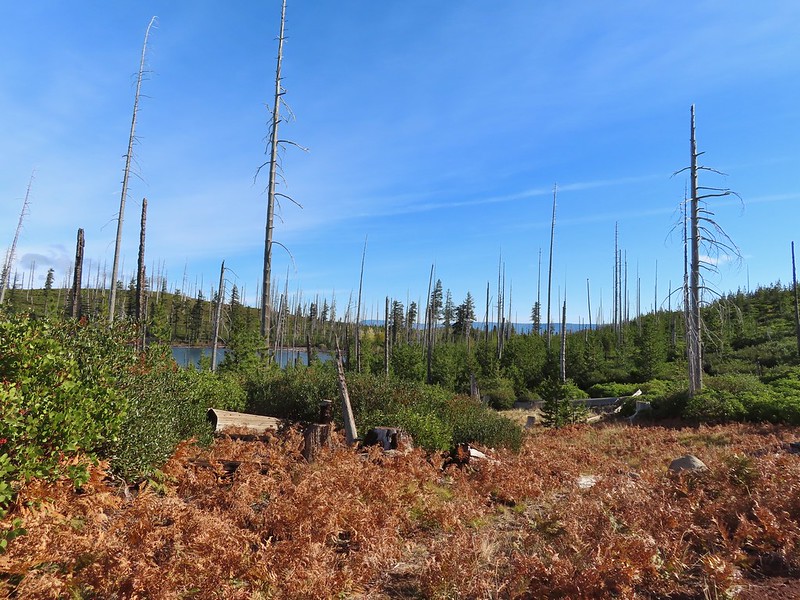

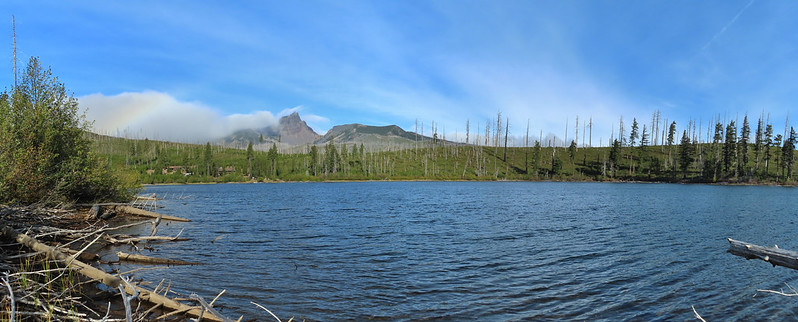


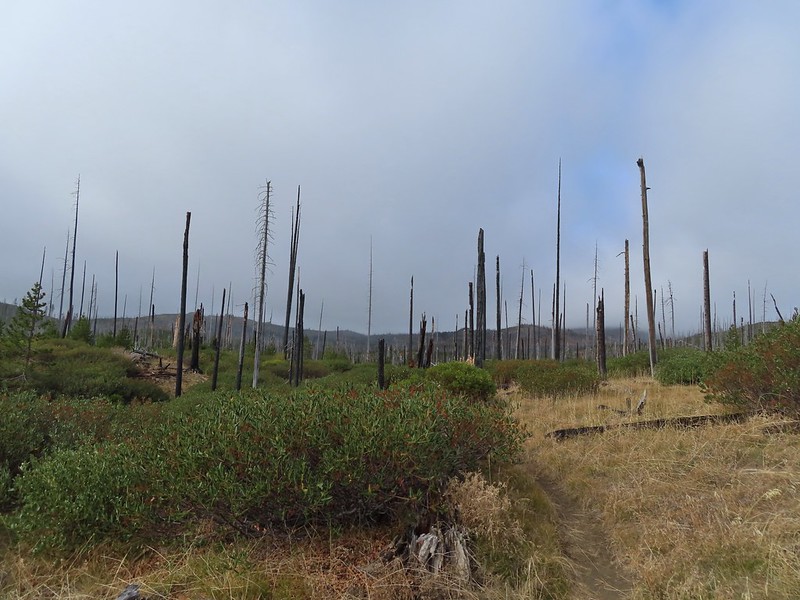
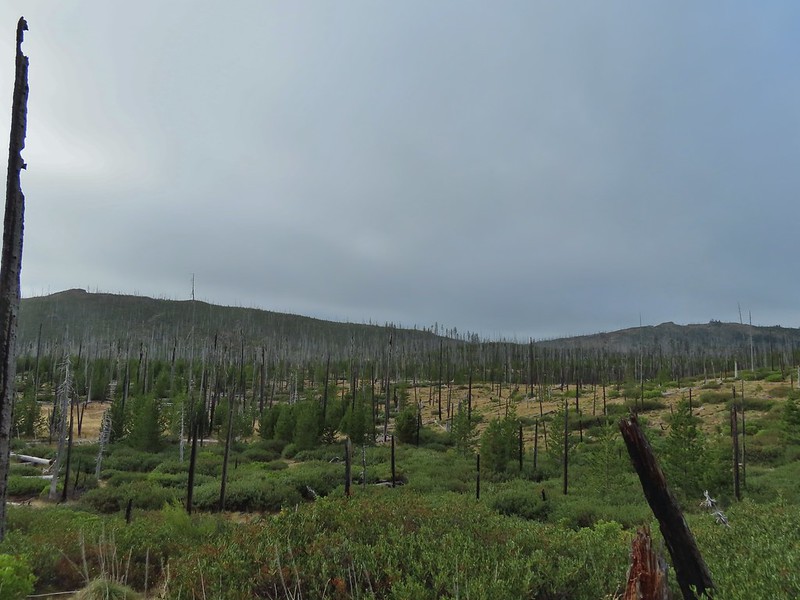 Starting to look kind of grey.
Starting to look kind of grey. A mountain bluebird adding a splash of blue to the green backdrop.
A mountain bluebird adding a splash of blue to the green backdrop.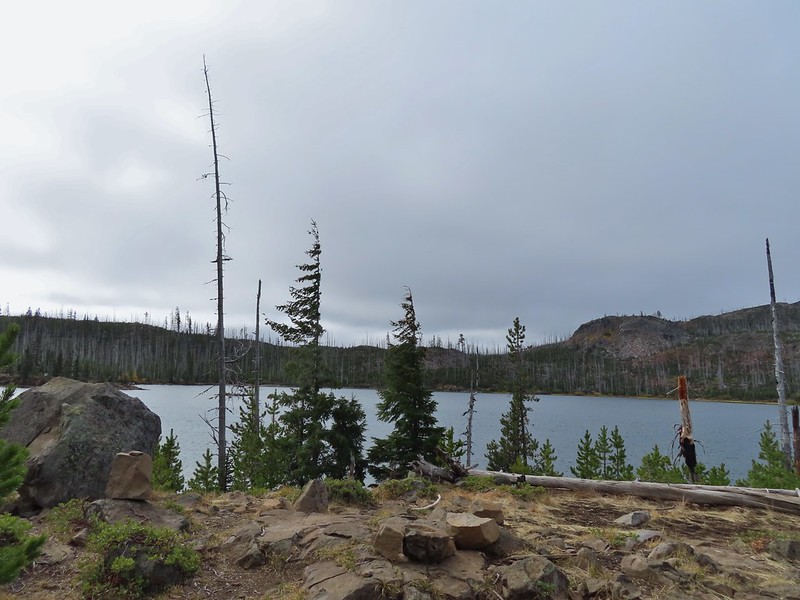 Clouds over Square Lake.
Clouds over Square Lake. A few scarlet gilia blossoms.
A few scarlet gilia blossoms. The unnamed lake is about halfway up the far hillside.
The unnamed lake is about halfway up the far hillside. Black Butte and Long Lake from the trail.
Black Butte and Long Lake from the trail.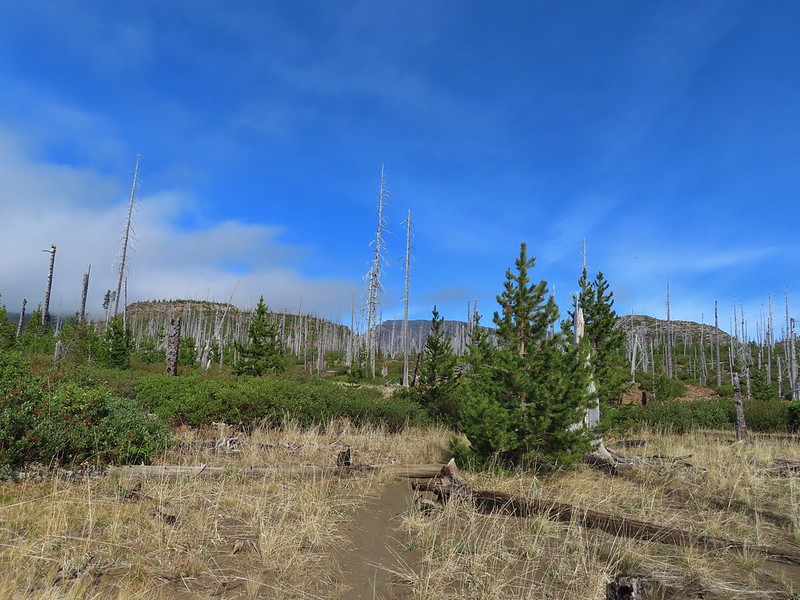 Heading toward Three Fingered Jack we got back under blue skies.
Heading toward Three Fingered Jack we got back under blue skies. Square Lake still under a clouds,
Square Lake still under a clouds, The unnamed lake that drew our attention.
The unnamed lake that drew our attention. Similar view from 2012.
Similar view from 2012. The trail at the gap. It was grey and cloudy to the west.
The trail at the gap. It was grey and cloudy to the west. Still at the gap, it was blue skies to the east.
Still at the gap, it was blue skies to the east. There is Three Fingered Jack.
There is Three Fingered Jack. A good look at Green Ridge.
A good look at Green Ridge. A lupine that was late to the party.
A lupine that was late to the party. Booth Lake
Booth Lake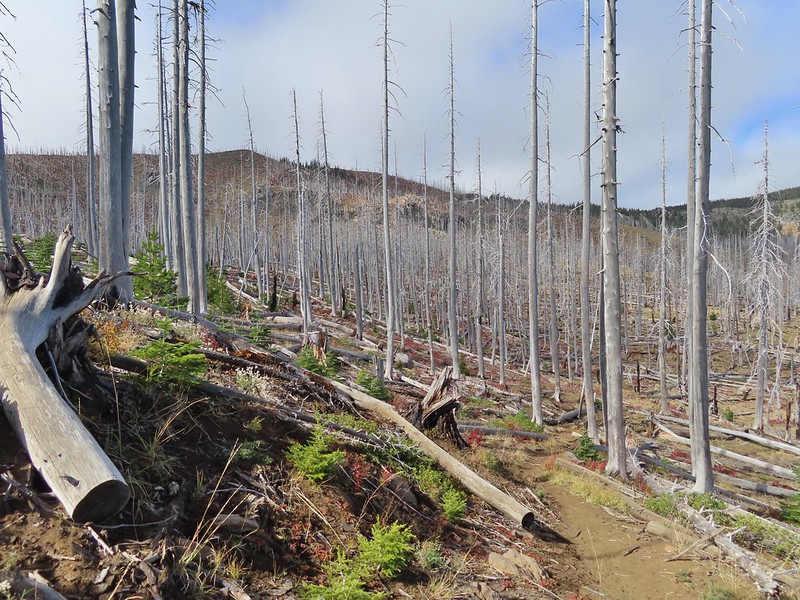
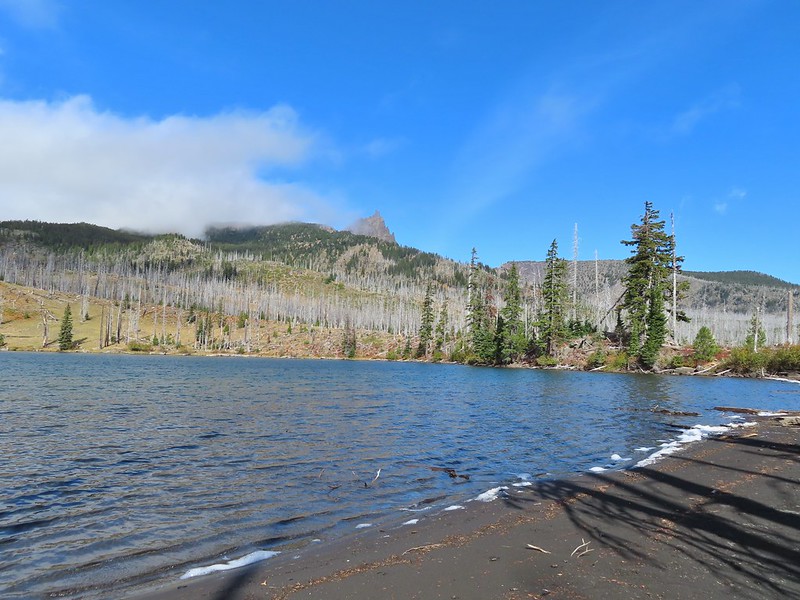




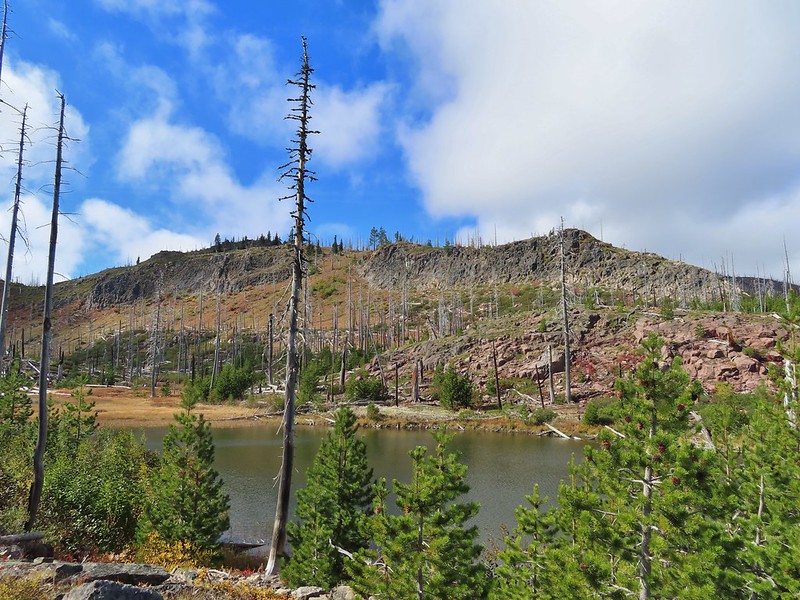
 The trail cut on the far hillside.
The trail cut on the far hillside.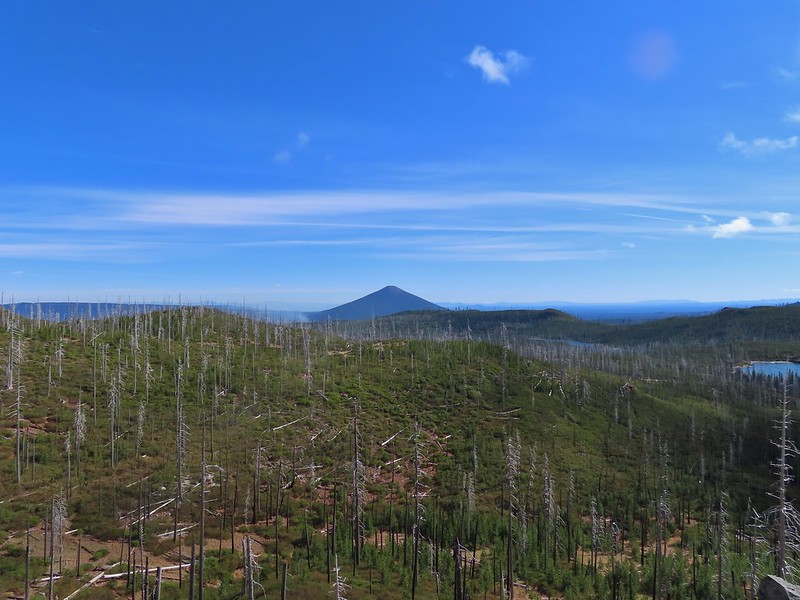 Black Butte, Long Lake, and part of Square Lake.
Black Butte, Long Lake, and part of Square Lake. Square Lake along with Broken Top and the Three Sisters (Mt. Washington was hiding in the clouds still).
Square Lake along with Broken Top and the Three Sisters (Mt. Washington was hiding in the clouds still). Part of the rock ledge.
Part of the rock ledge. Three Fingered Jack had once again disappeared.
Three Fingered Jack had once again disappeared. Where’s Heather.
Where’s Heather.

 View climbing away from Square Lake.
View climbing away from Square Lake. Similar view in 2012.
Similar view in 2012. 2012
2012
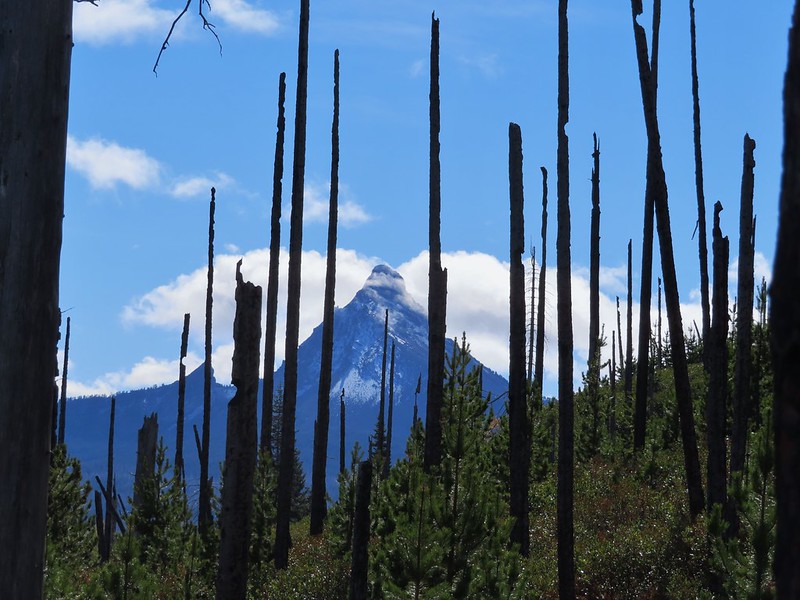

 Finally clear!
Finally clear!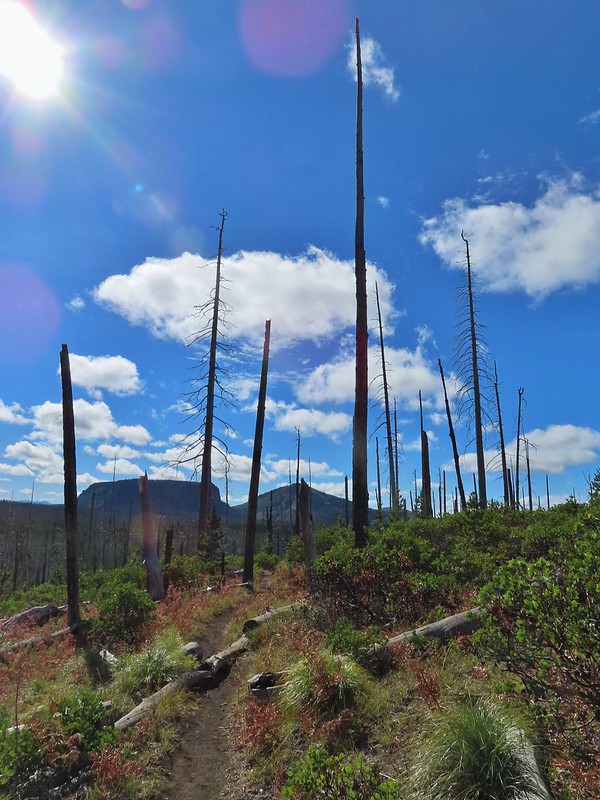 Hayrick Butte and Hoodo as we neared the trailhead.
Hayrick Butte and Hoodo as we neared the trailhead.


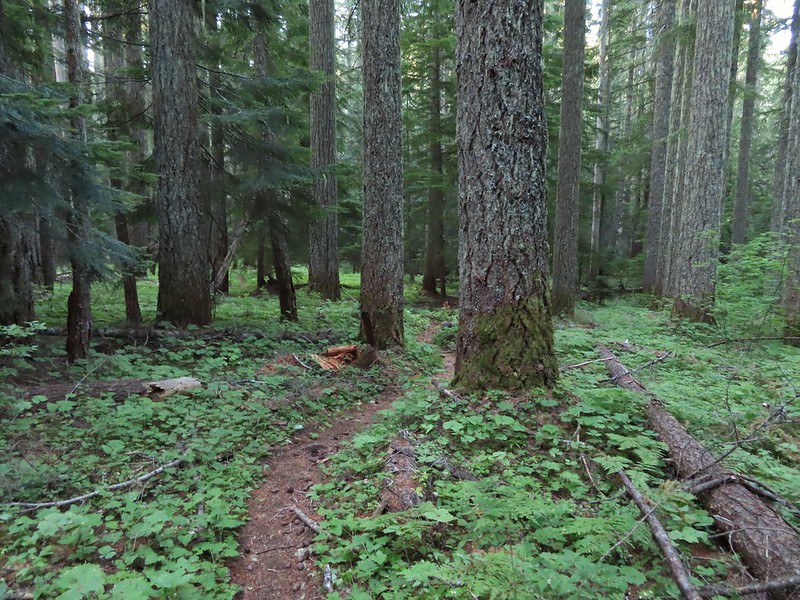
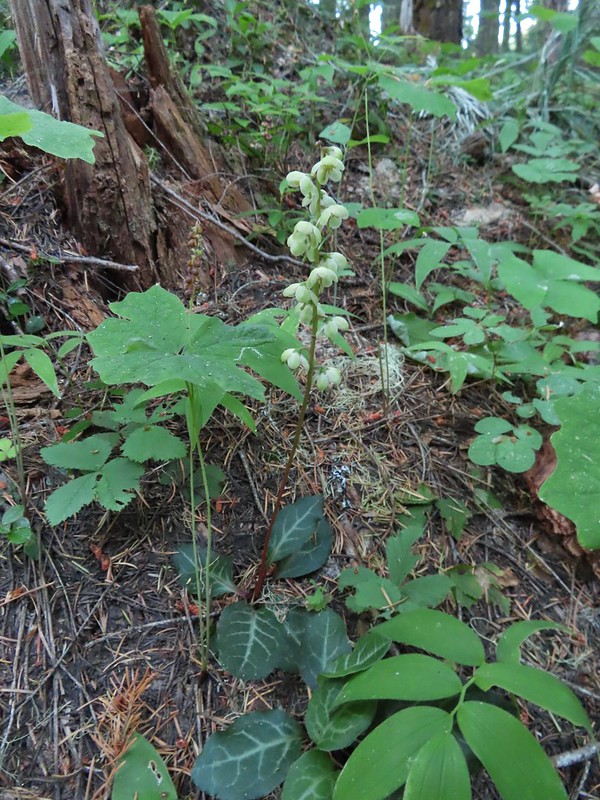


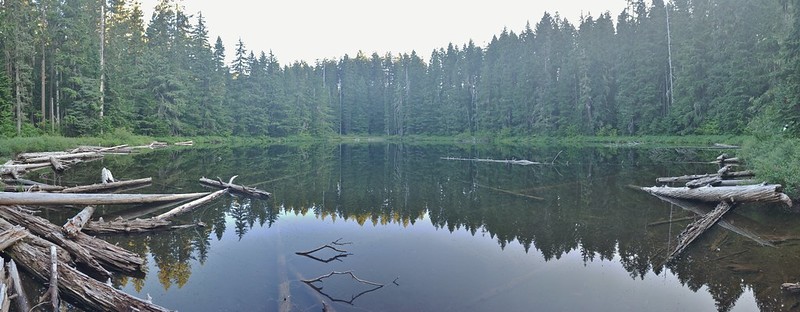

 Unnamed lakelet/pond between Pika and Fir Lakes.
Unnamed lakelet/pond between Pika and Fir Lakes.
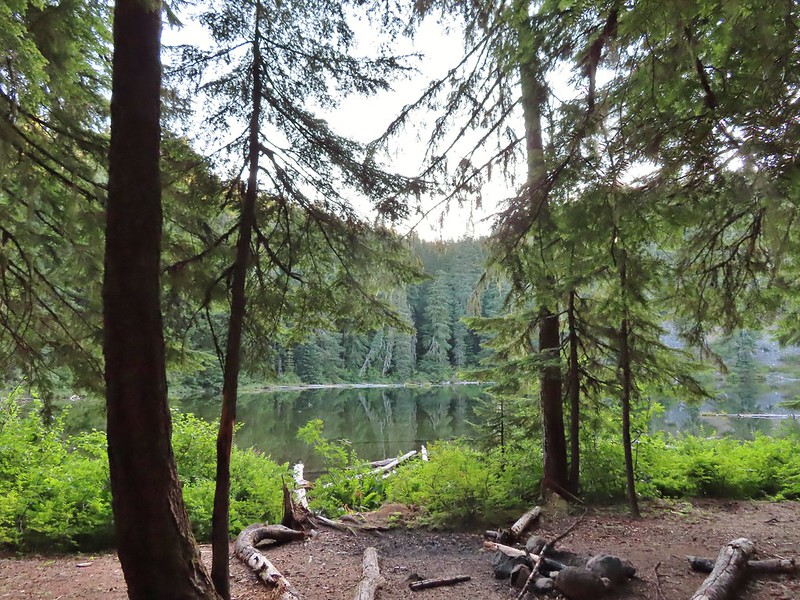 Fir Lake
Fir Lake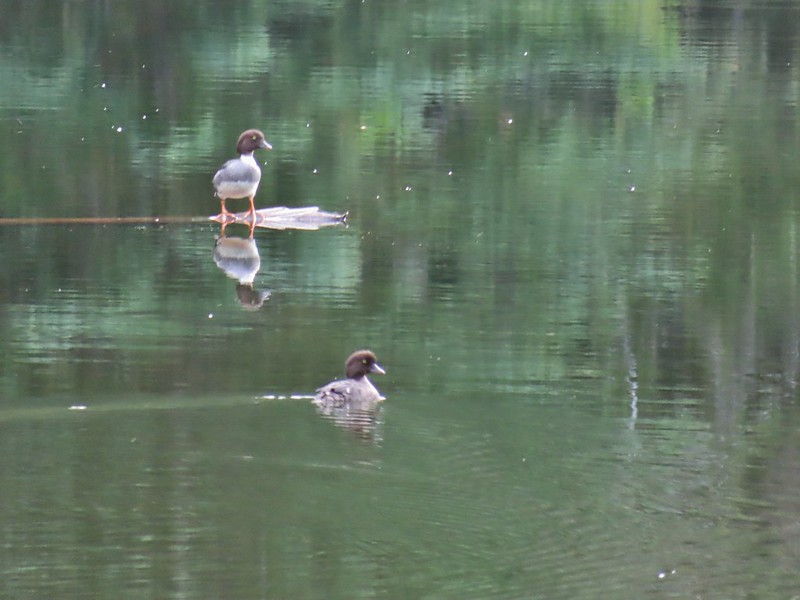 Goldeneyes
Goldeneyes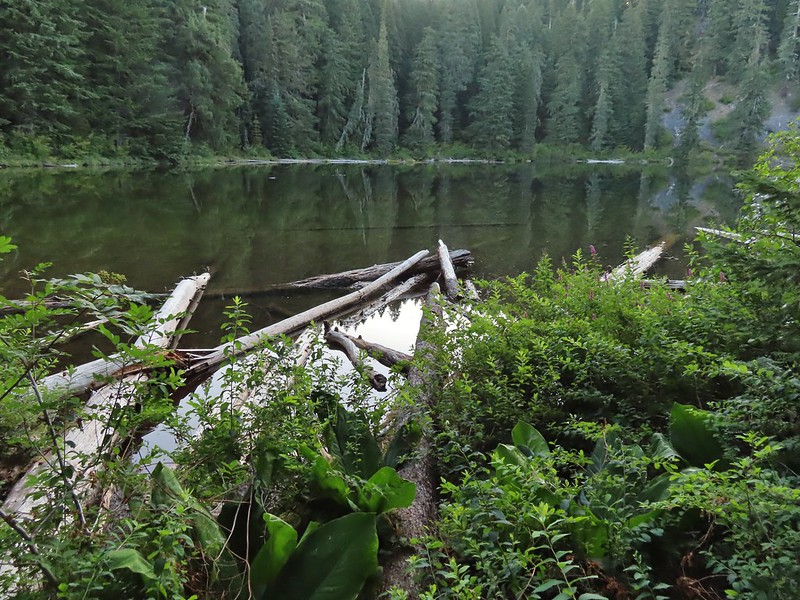

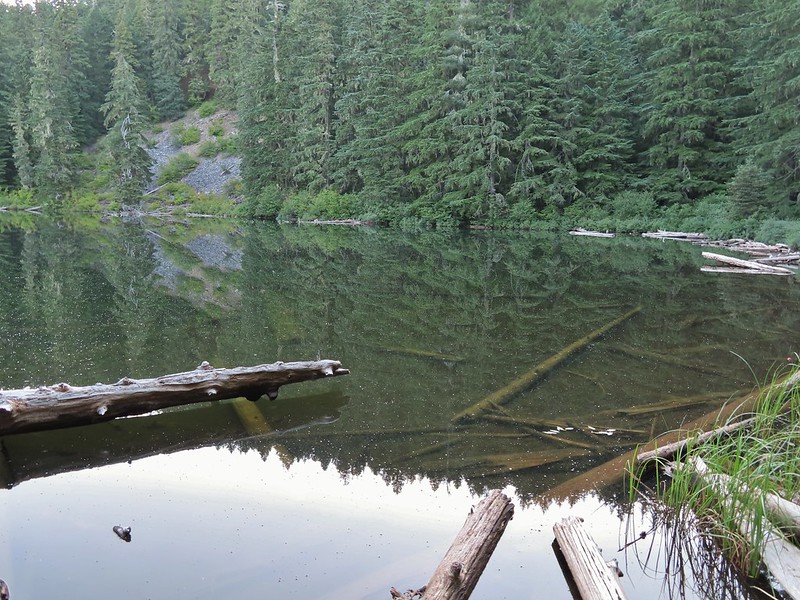




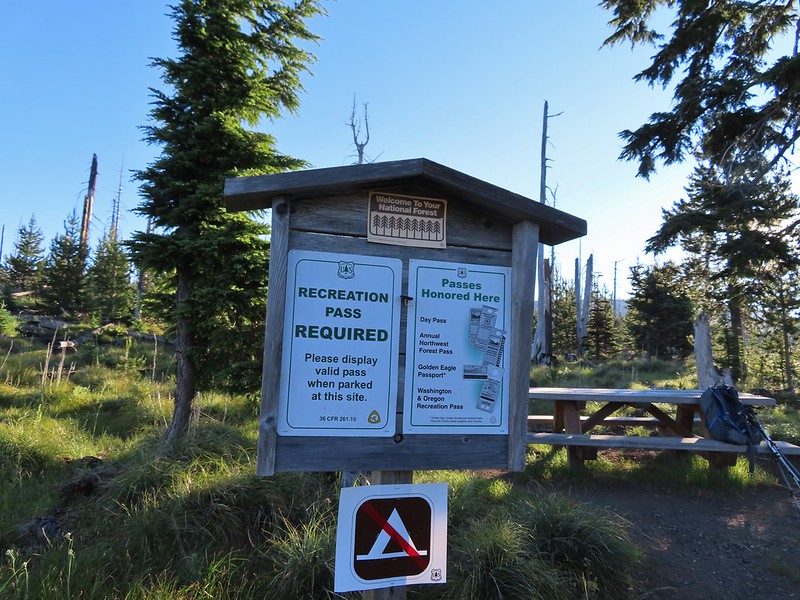
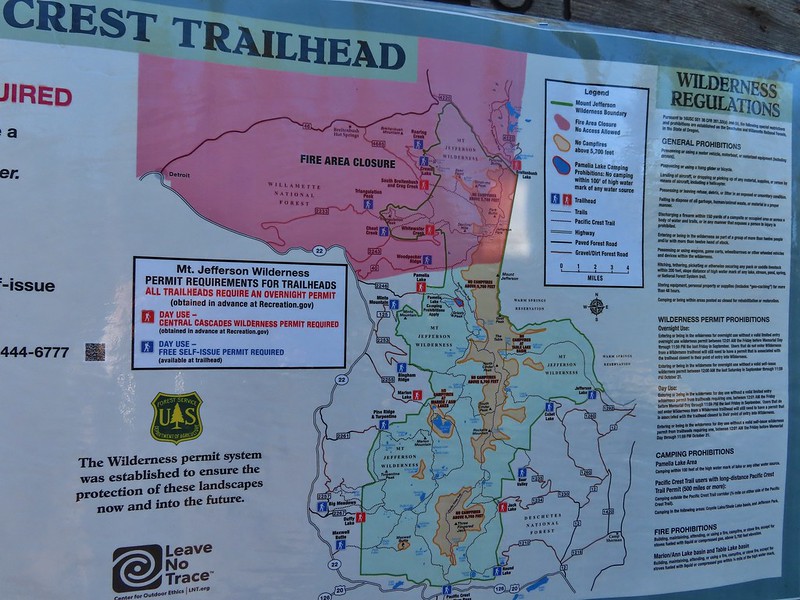
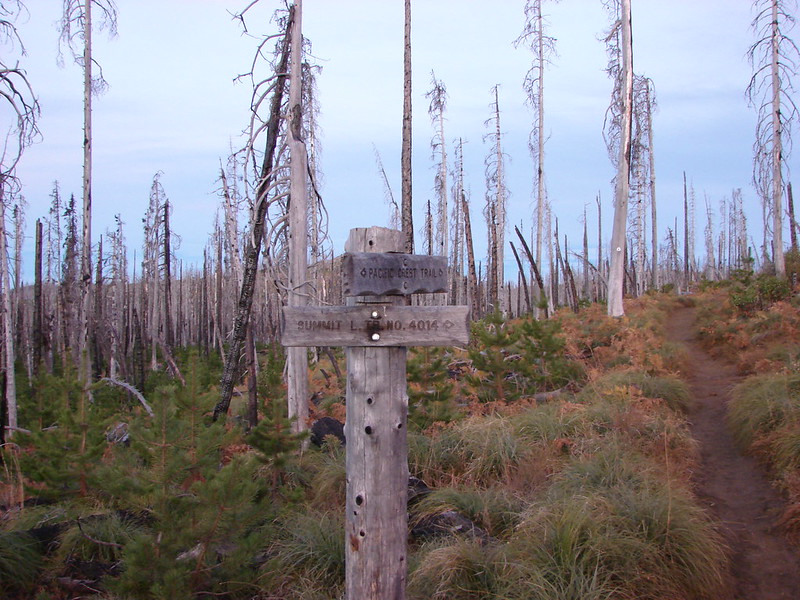 Trail sign at the junction on 10/13/2012.
Trail sign at the junction on 10/13/2012.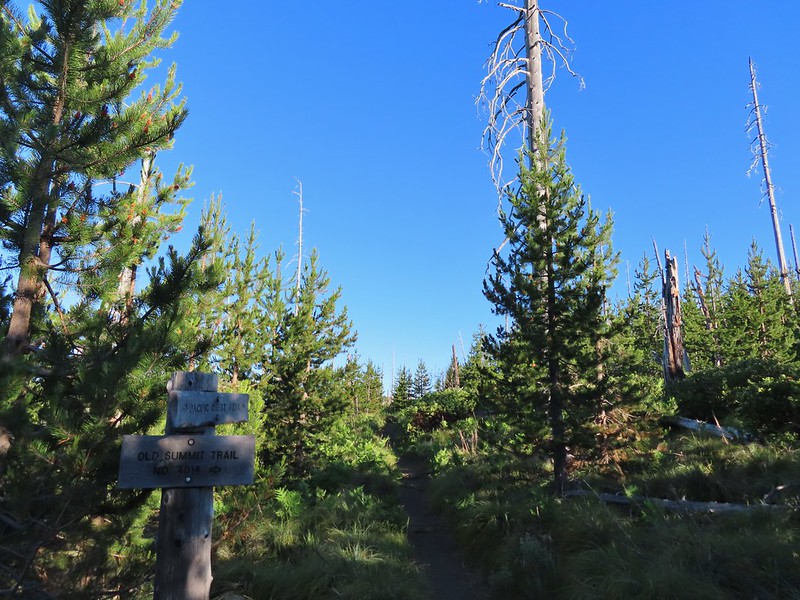 Trail sign at the junction on 07/03/2021.
Trail sign at the junction on 07/03/2021. Entering the Mt. Jefferson Wilderness in 2012 (0.3 miles from the TH).
Entering the Mt. Jefferson Wilderness in 2012 (0.3 miles from the TH).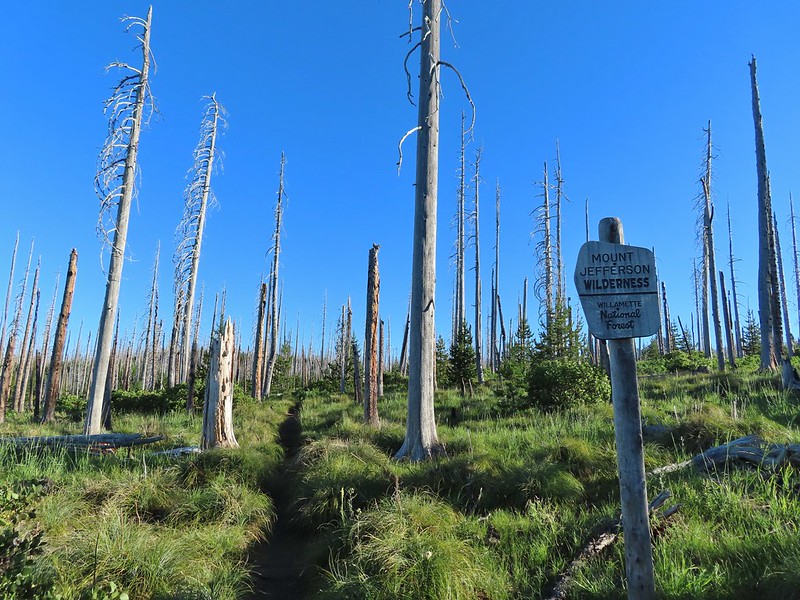 Entering the wilderness in 2021.
Entering the wilderness in 2021. Cache Mountain, Black Crater (post), Tam McArthur Rim & Broken Top (post), North & Middle Sister, Mt. Washington, and Hayrick Butte (flat top on the right).
Cache Mountain, Black Crater (post), Tam McArthur Rim & Broken Top (post), North & Middle Sister, Mt. Washington, and Hayrick Butte (flat top on the right).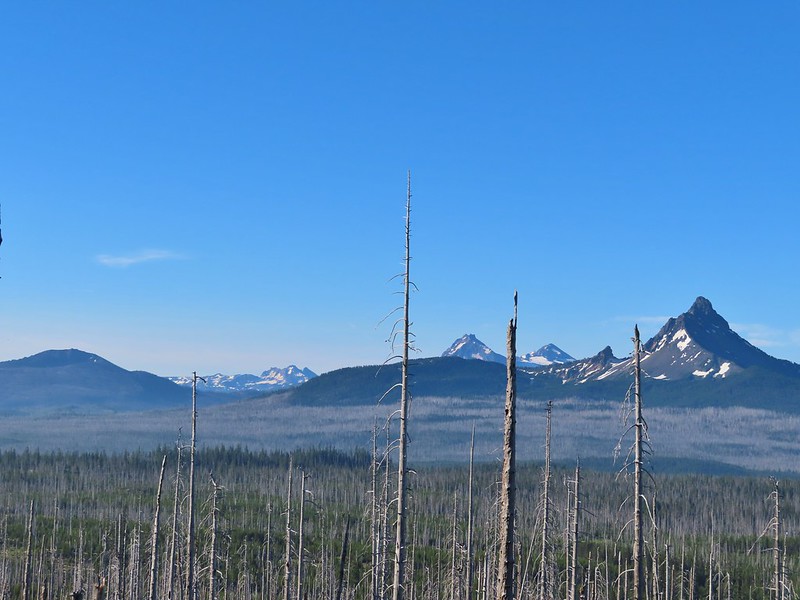

 A thistle
A thistle Penstemon
Penstemon Bleeding heart
Bleeding heart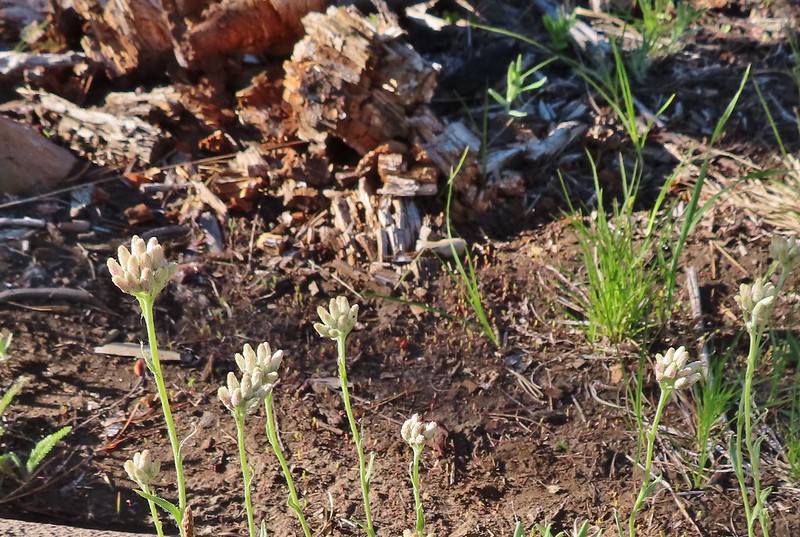 Pussytoes
Pussytoes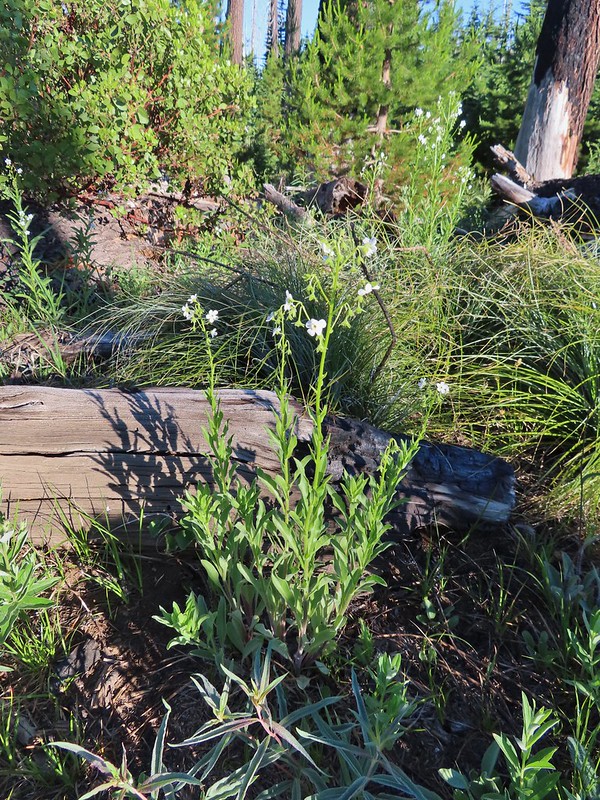 California stickseed
California stickseed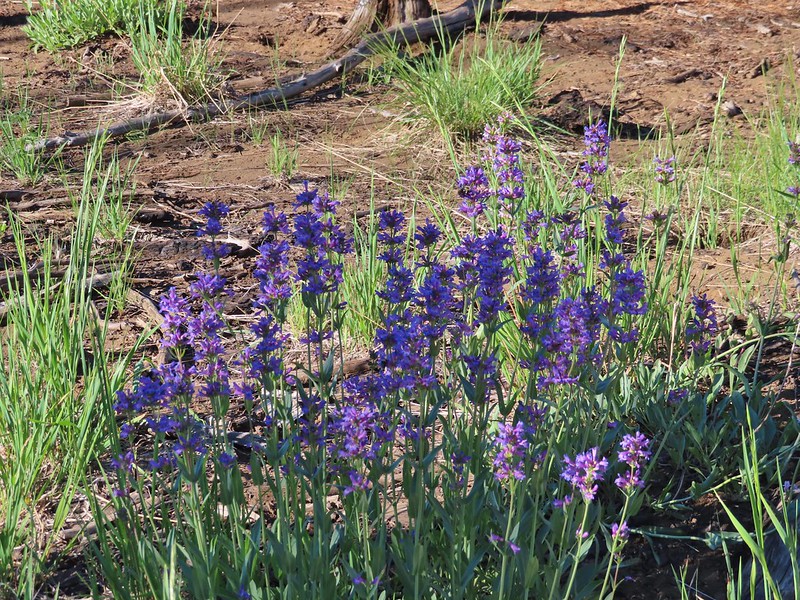 Another penstemon
Another penstemon
 Mountain bluebird by the lake.
Mountain bluebird by the lake.

 There was a good amount of scarlet gilia blooming along this section of trail.
There was a good amount of scarlet gilia blooming along this section of trail.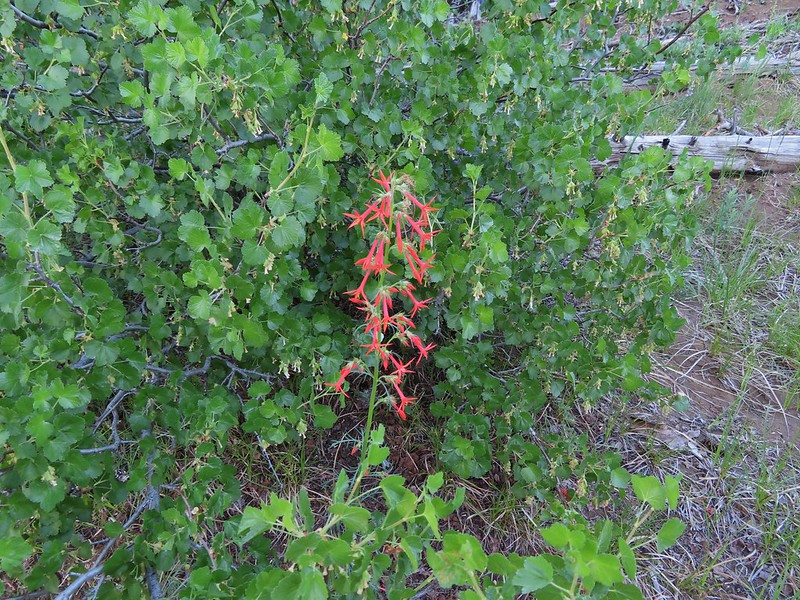
 Three Fingered Jack
Three Fingered Jack One of the ponds.
One of the ponds.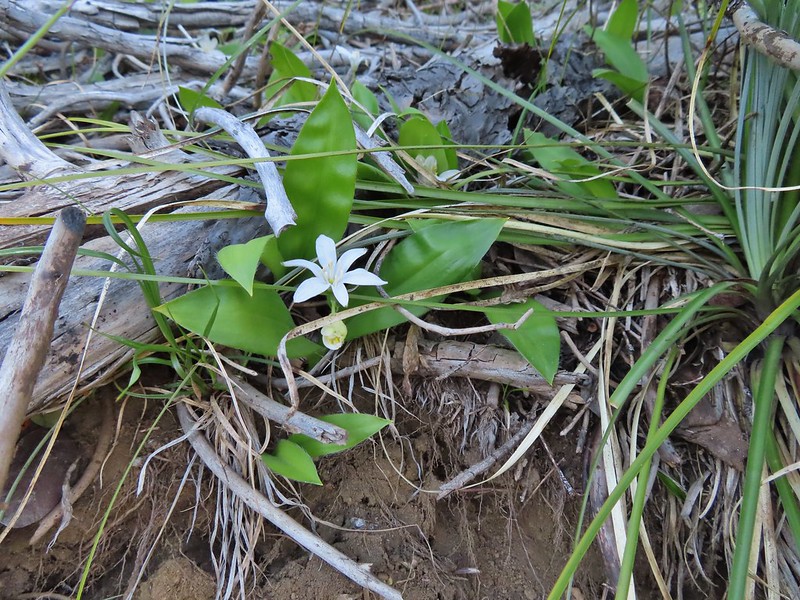 Queen’s cup
Queen’s cup Another pond with Maxwell Butte (
Another pond with Maxwell Butte ( Unnamed lake along the trail with Maxwell Butte behind.
Unnamed lake along the trail with Maxwell Butte behind.
 Lupine
Lupine Dark-eyed junco
Dark-eyed junco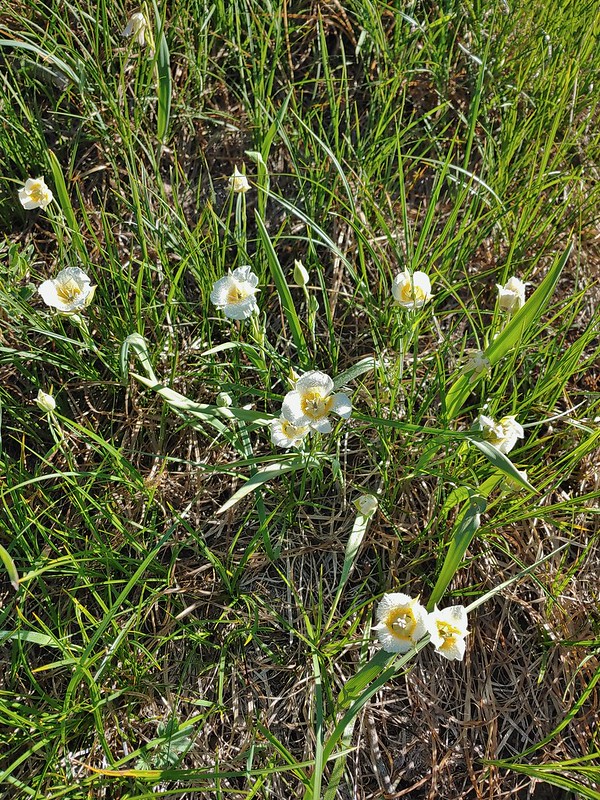 Sub-alpine mariposa lilies
Sub-alpine mariposa lilies Woodpecker
Woodpecker The view south.
The view south.

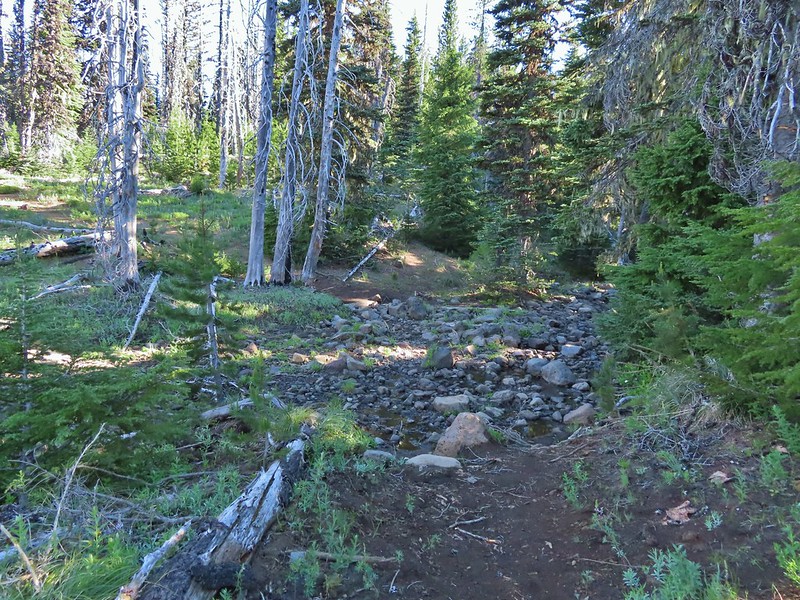
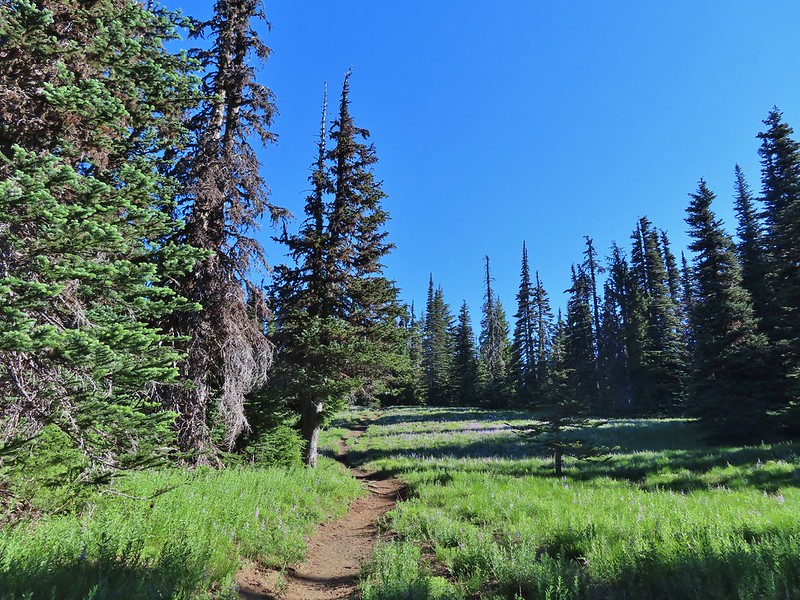


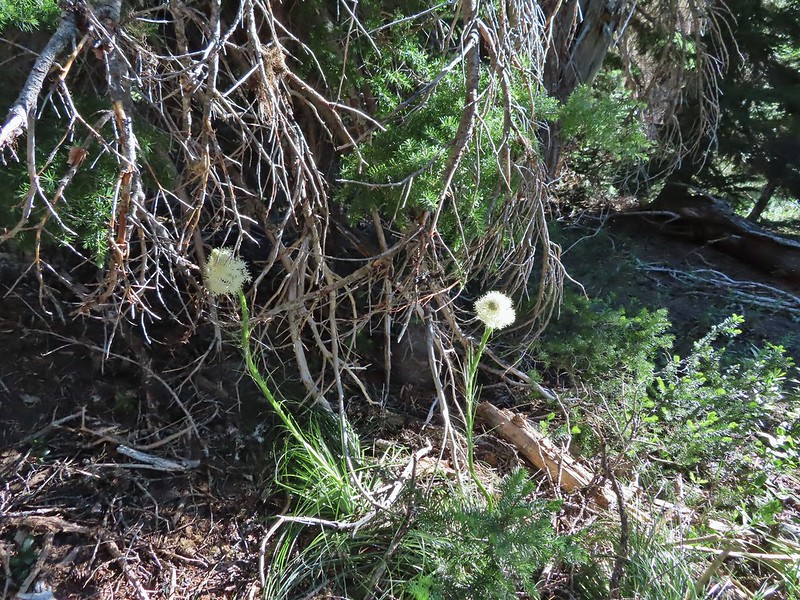 Beargrass
Beargrass
 Recent snow melt is another recipe for mosquitos.
Recent snow melt is another recipe for mosquitos. Another creek crossing.
Another creek crossing.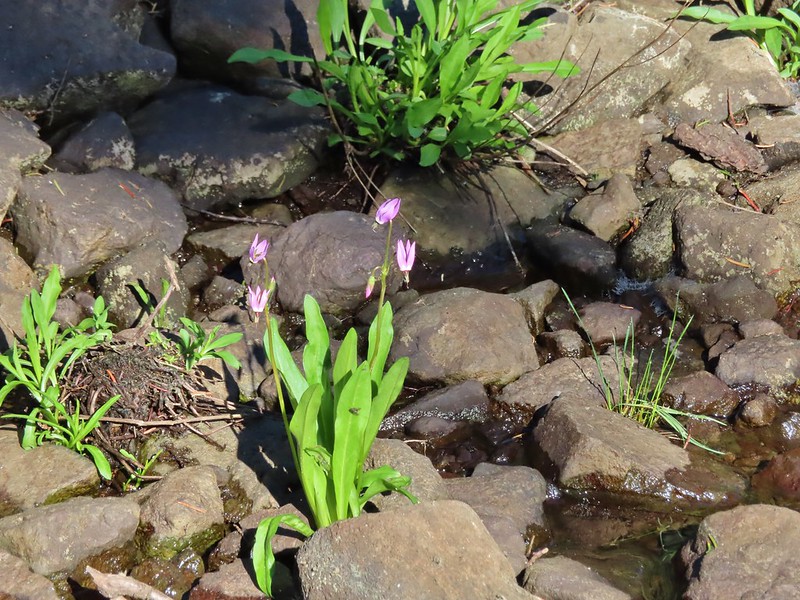 Shooting star
Shooting star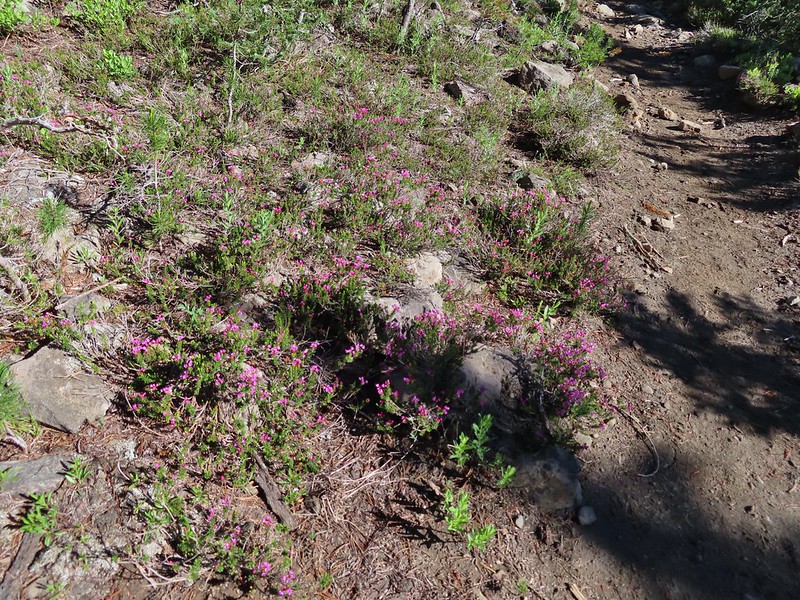 Mountain heather. Typically if we see this blooming we expect there to be mosquitos.
Mountain heather. Typically if we see this blooming we expect there to be mosquitos.
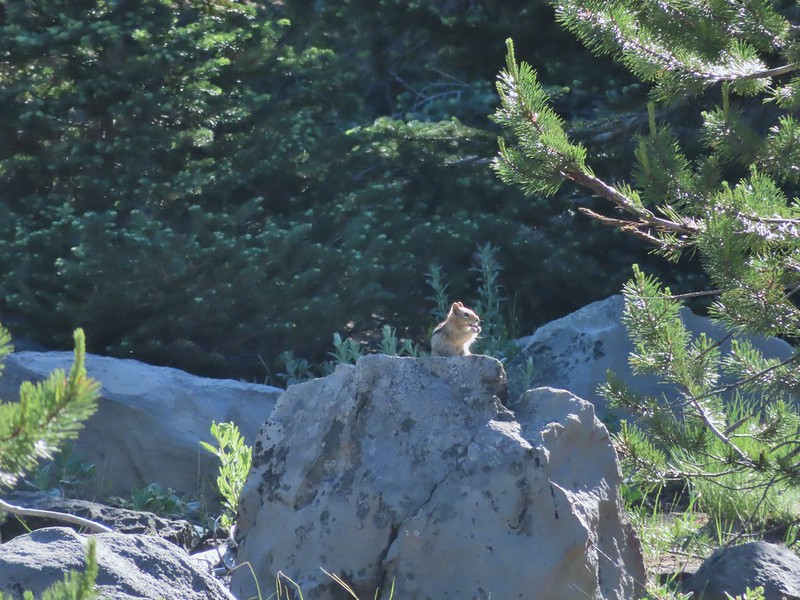
 A sulphur
A sulphur Alpine false dandelion
Alpine false dandelion One of several snow patches at the tree line.
One of several snow patches at the tree line.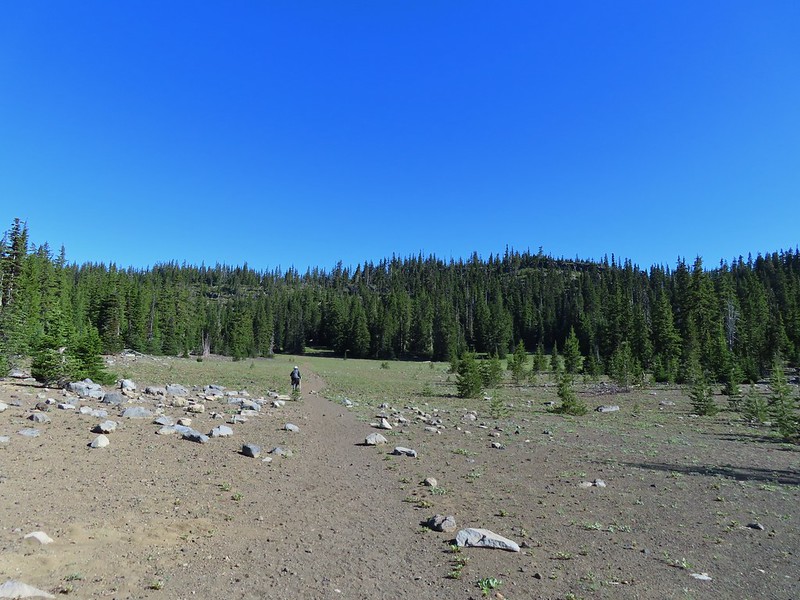 Nearing the end of the opening.
Nearing the end of the opening. More snow in the trees.
More snow in the trees. A checkerspot
A checkerspot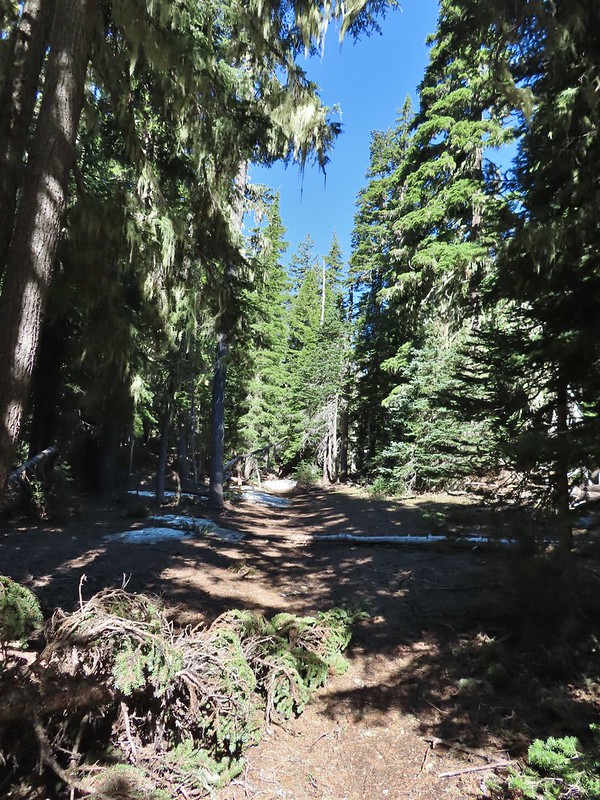
 Trees & melting snow = more mosquitos.
Trees & melting snow = more mosquitos.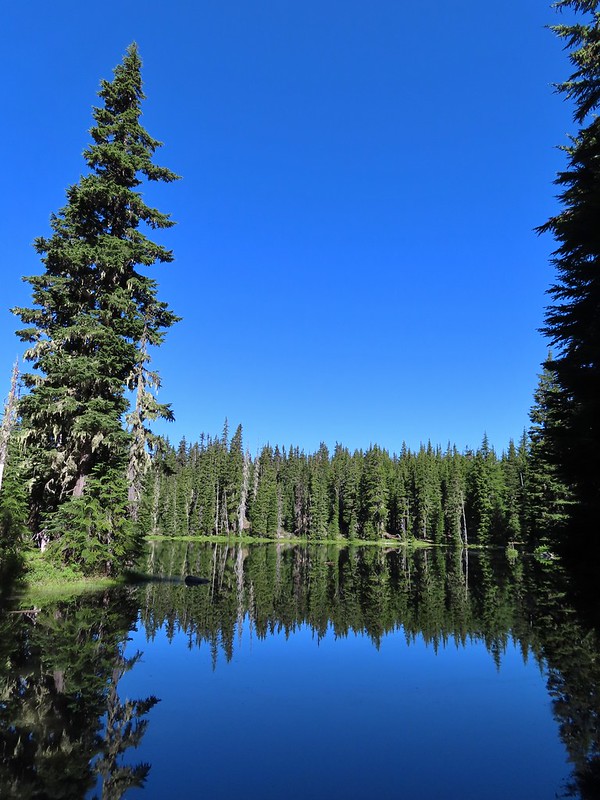 Not Santiam Lake but a very pretty unnamed lake just to the left of the trail approximately 0.4 miles from Santiam Lake.
Not Santiam Lake but a very pretty unnamed lake just to the left of the trail approximately 0.4 miles from Santiam Lake.
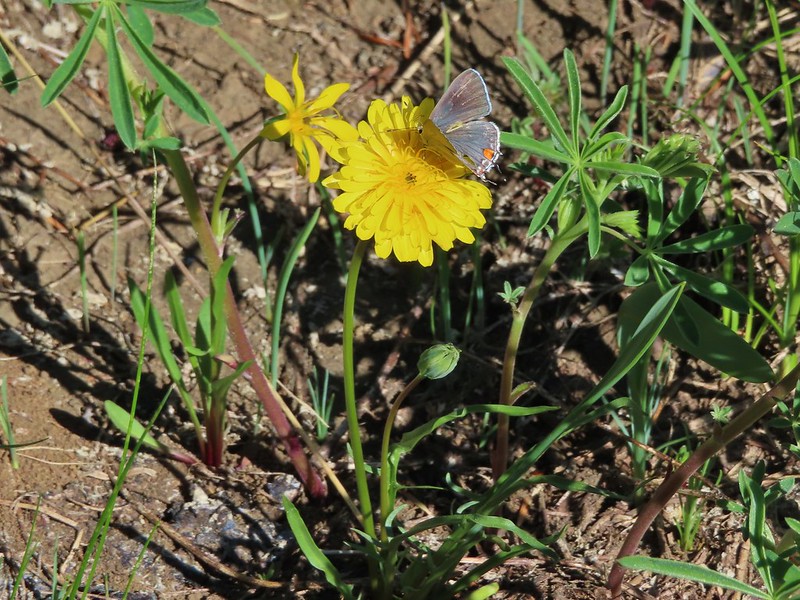 Not sure what type this is but the orange on the wing was pretty.
Not sure what type this is but the orange on the wing was pretty.
 Mt. Jefferson behind Red Butte
Mt. Jefferson behind Red Butte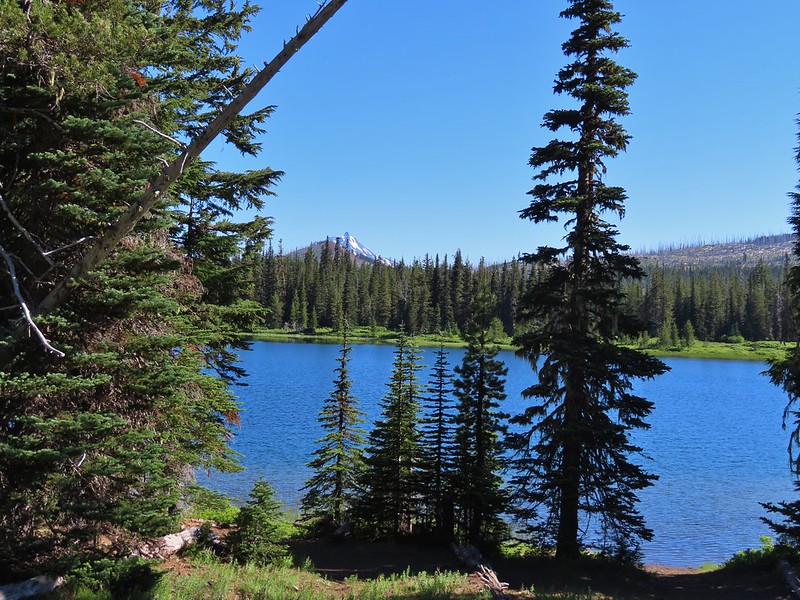
 Duffy Butte on the left.
Duffy Butte on the left. Three Fingered Jack
Three Fingered Jack Paintbrush, shooting stars, and buttercups.
Paintbrush, shooting stars, and buttercups.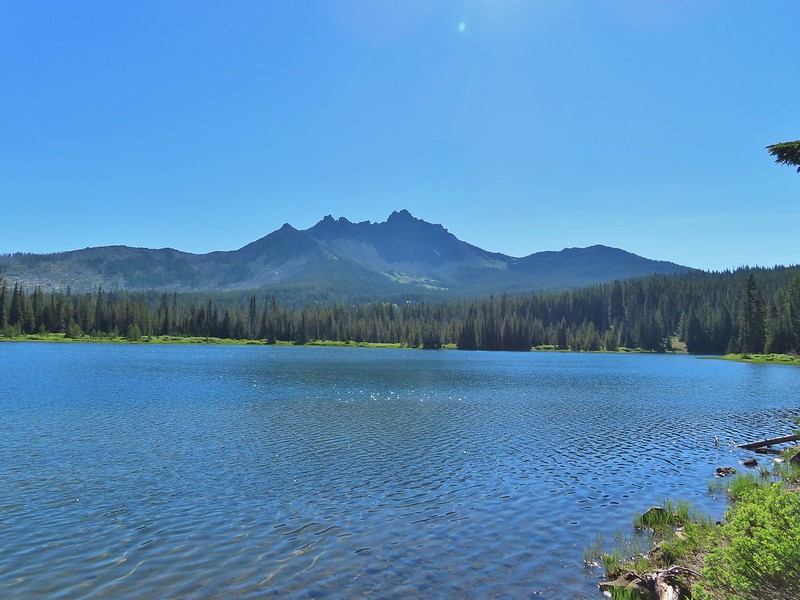
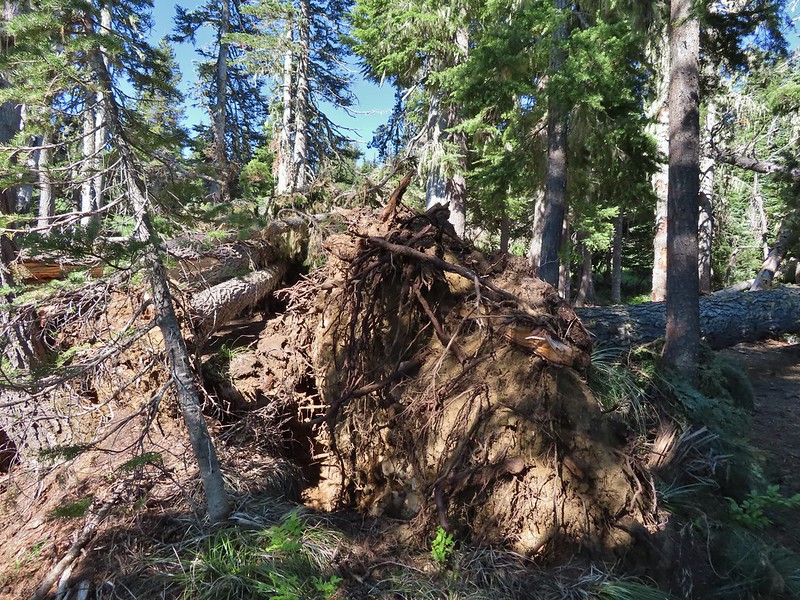 Just one of several large uprooted trees along the shore.
Just one of several large uprooted trees along the shore.


 The “topographic feature” ahead on the right where we planned on turning for Lower Berley Lake.
The “topographic feature” ahead on the right where we planned on turning for Lower Berley Lake.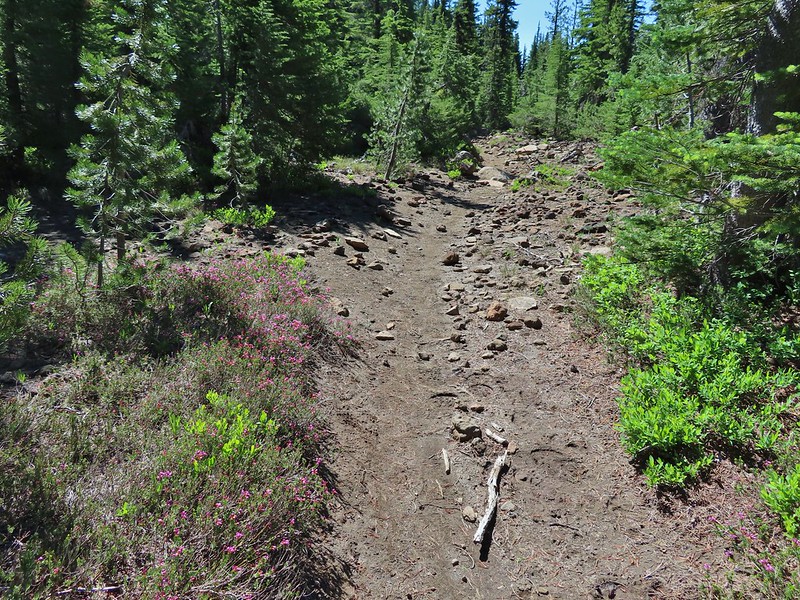 Mountain heather along the trail, it was warm and sunny enough that the mosquitos weren’t as bad this time by.
Mountain heather along the trail, it was warm and sunny enough that the mosquitos weren’t as bad this time by.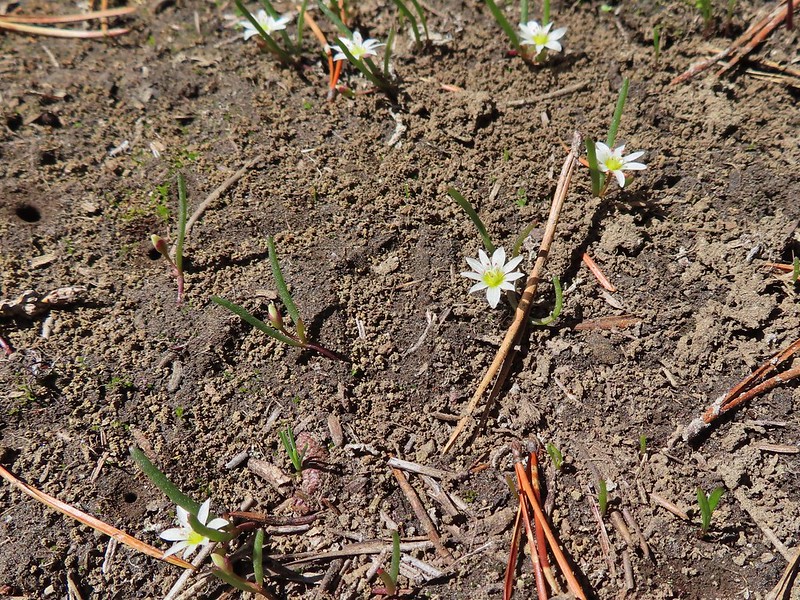 Threeleaf lewisia
Threeleaf lewisia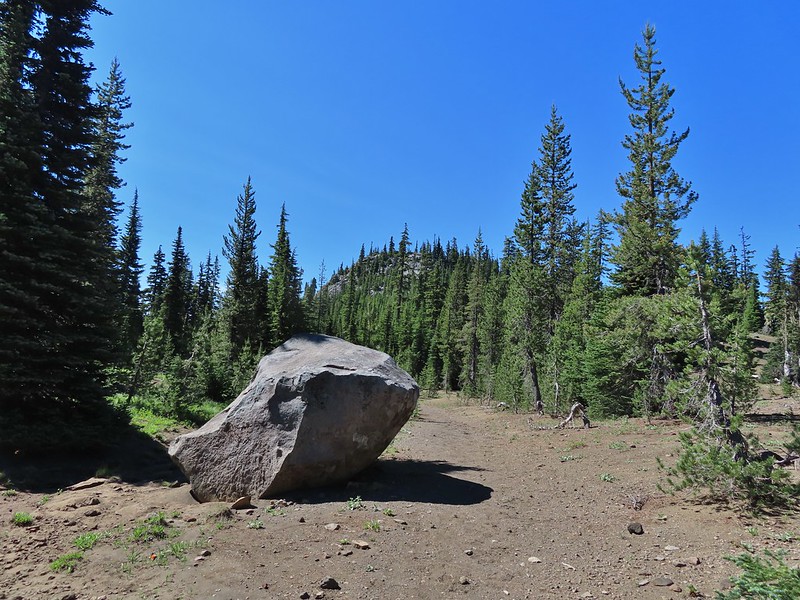 Getting closer to the hill where we planned on turning.
Getting closer to the hill where we planned on turning. California tortoiseshell butterflies in the bed of Lost Lake Creek.
California tortoiseshell butterflies in the bed of Lost Lake Creek.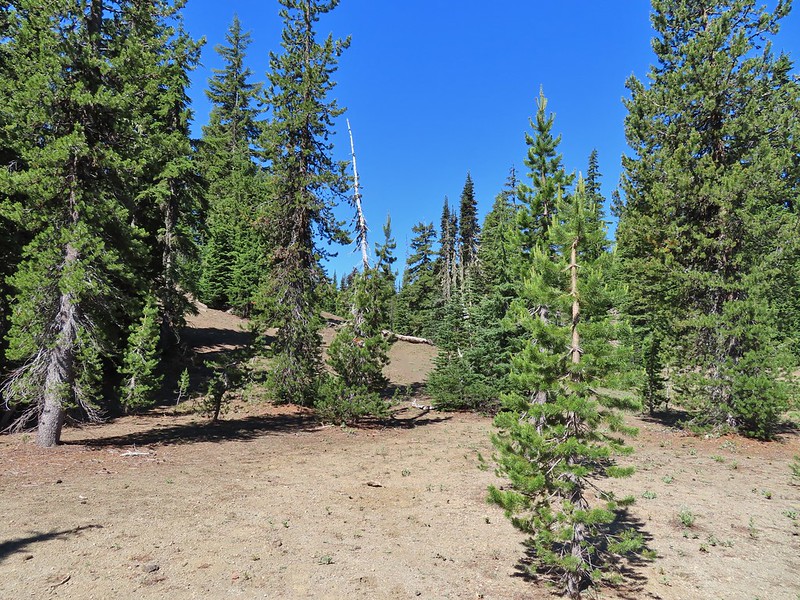



 Three Fingered Jack from the rocks.
Three Fingered Jack from the rocks.
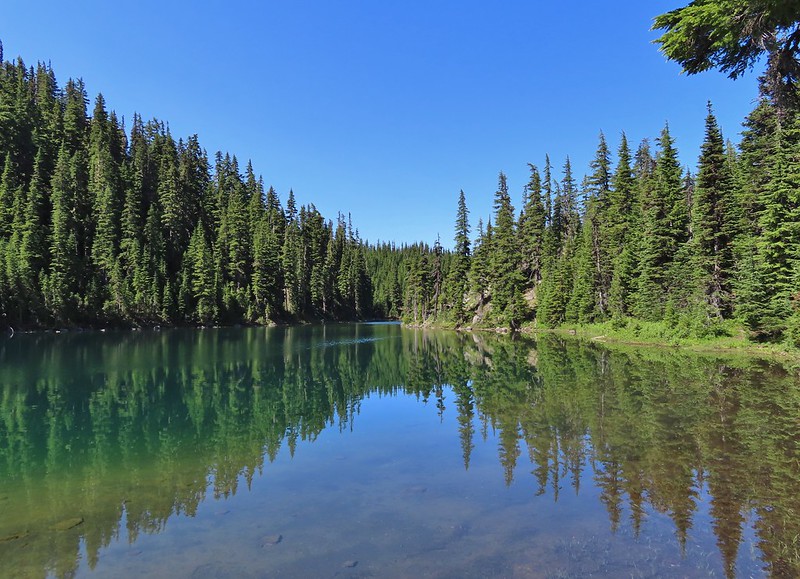
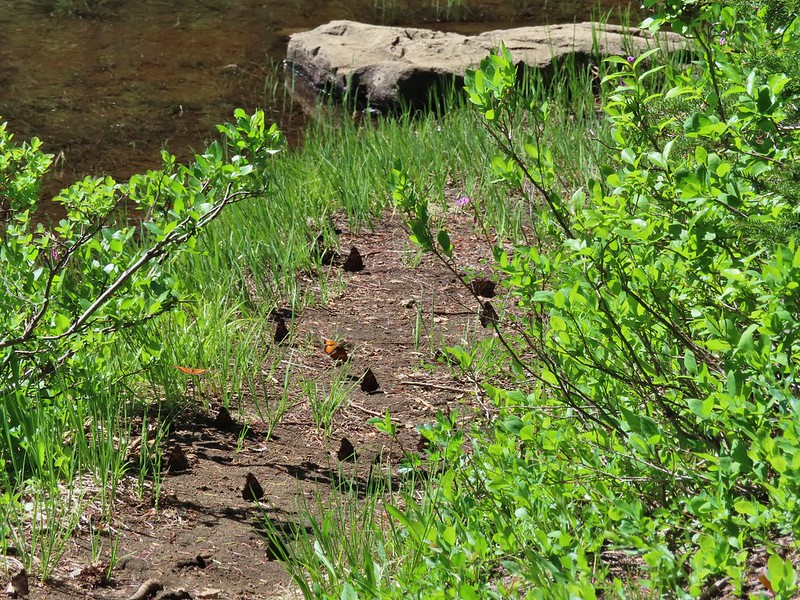 More tortoiseshells
More tortoiseshells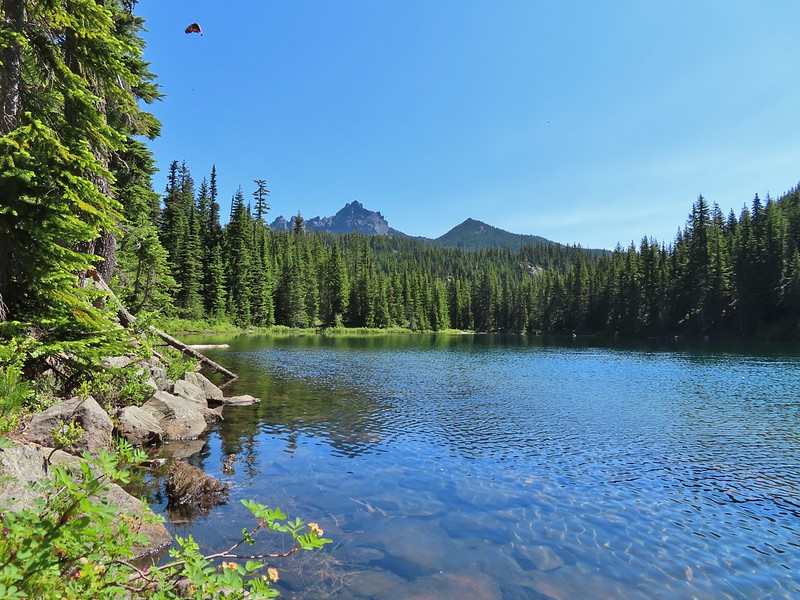 A butterfly photo bomb
A butterfly photo bomb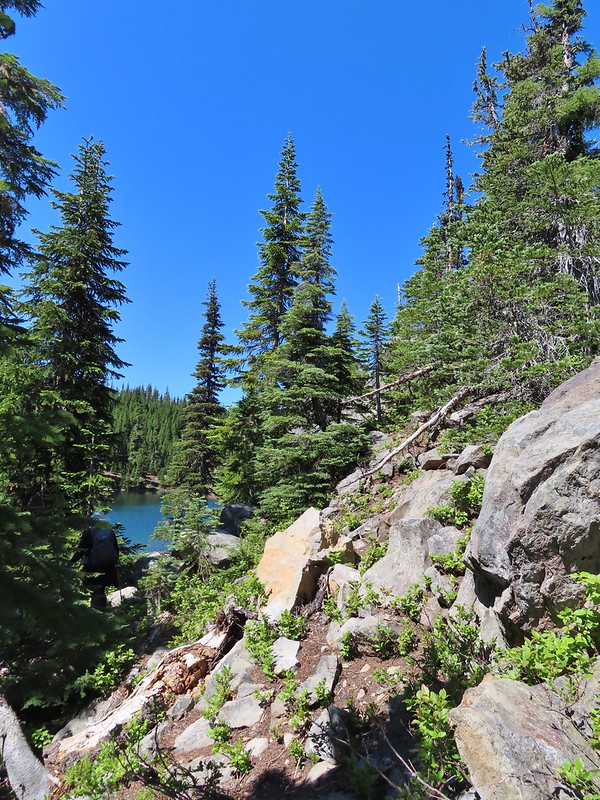


 The bed was popular with the butterflies.
The bed was popular with the butterflies. Cross country to Upper Berley Lake, the doe was in this meadow and headed in the direction of the patch of snow at the far end.
Cross country to Upper Berley Lake, the doe was in this meadow and headed in the direction of the patch of snow at the far end. Upper Berley Lake
Upper Berley Lake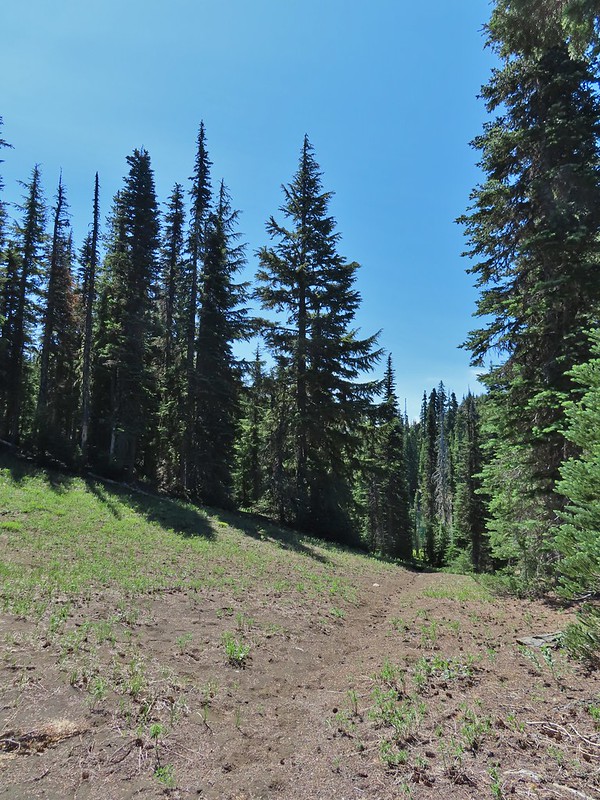 We wound up finding the same “user trail” and followed it down to the lower lake.
We wound up finding the same “user trail” and followed it down to the lower lake.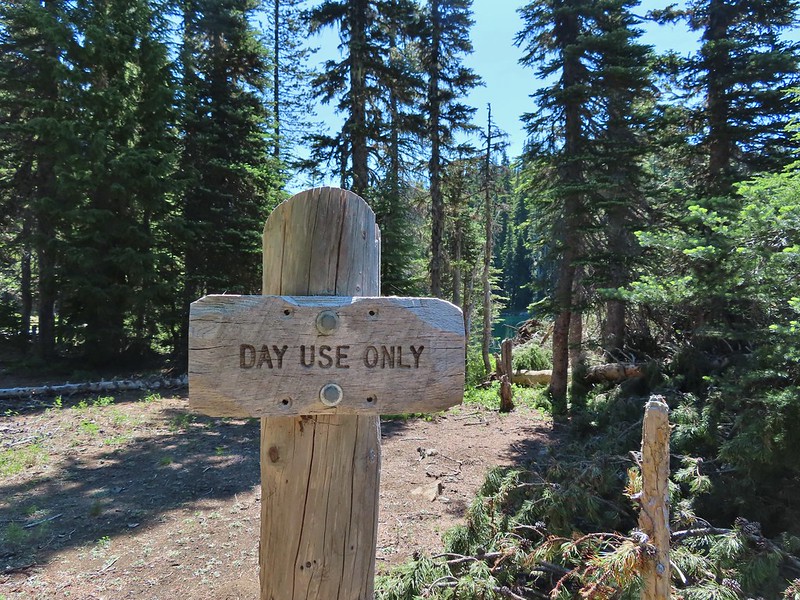
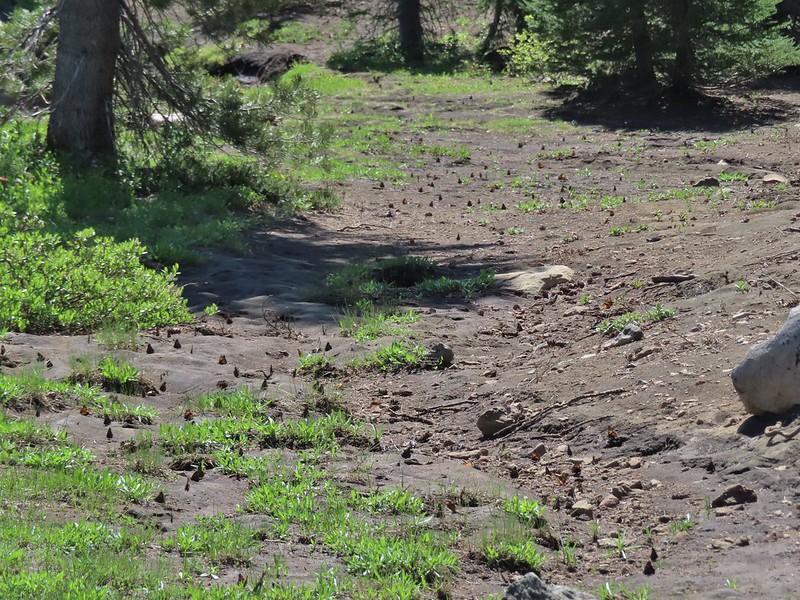 California tortoiseshell butterflies along Lower Berley Lake.
California tortoiseshell butterflies along Lower Berley Lake. Three Fingered Jack and about a half dozen butterflies.
Three Fingered Jack and about a half dozen butterflies.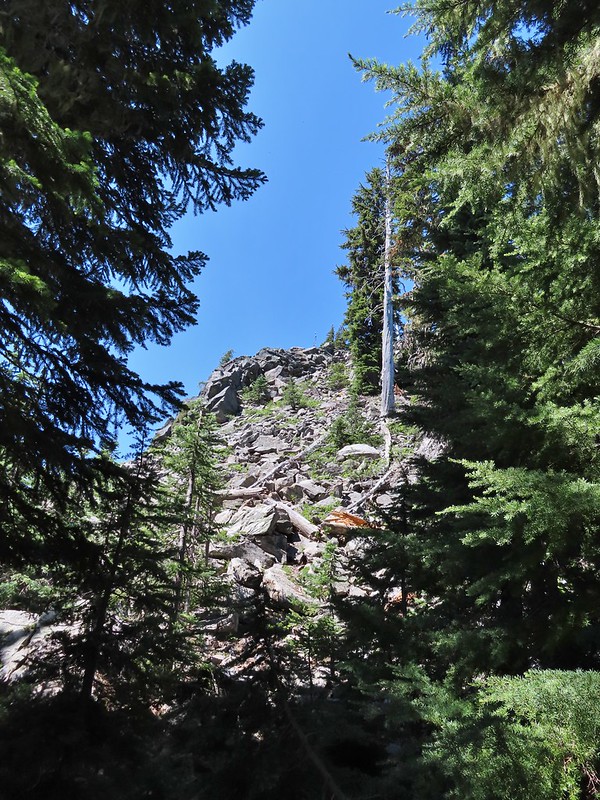 The hillside on the right was rocky.
The hillside on the right was rocky. The trail dropping down from the saddle with Mt. Washington and the North Sister ahead.
The trail dropping down from the saddle with Mt. Washington and the North Sister ahead.

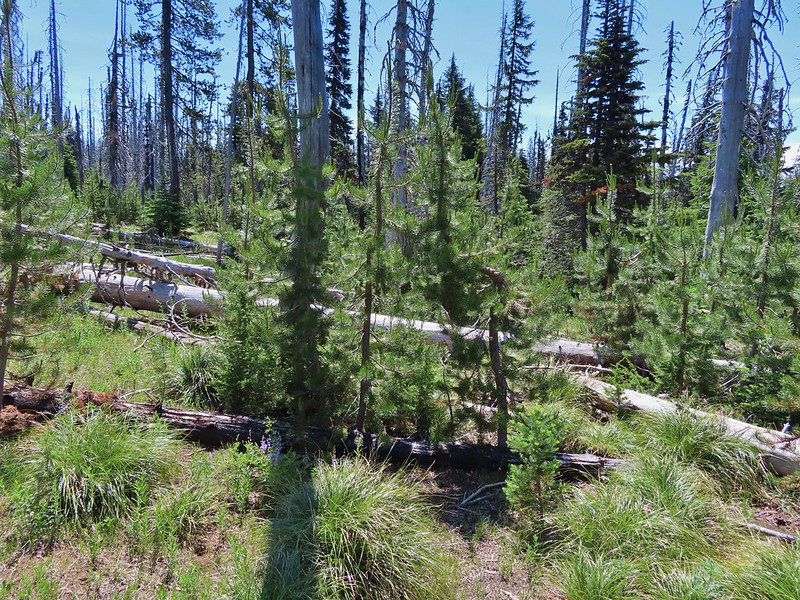
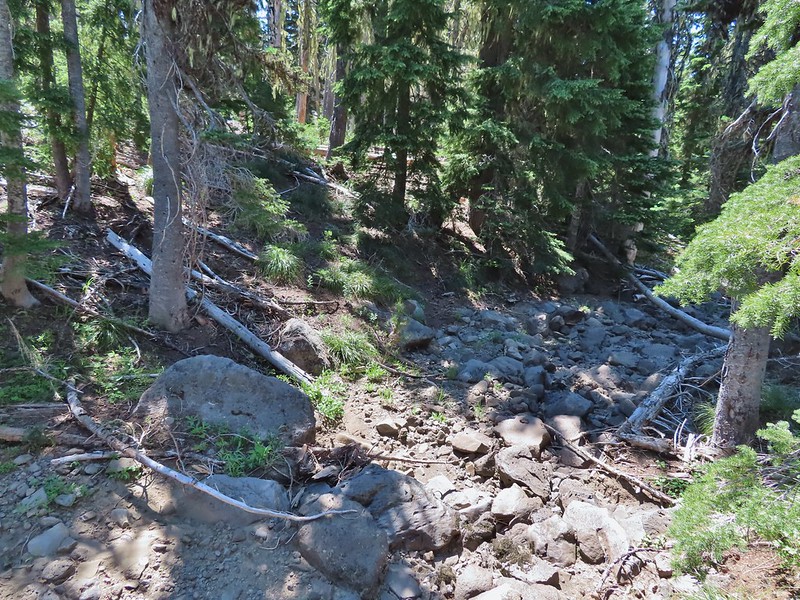
 Found it!
Found it!


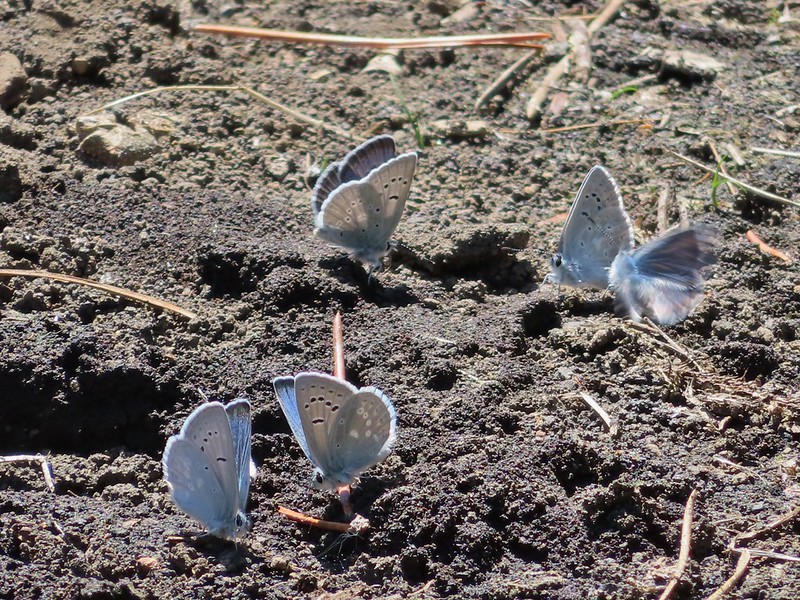
 Yellow beetle on lupine.
Yellow beetle on lupine.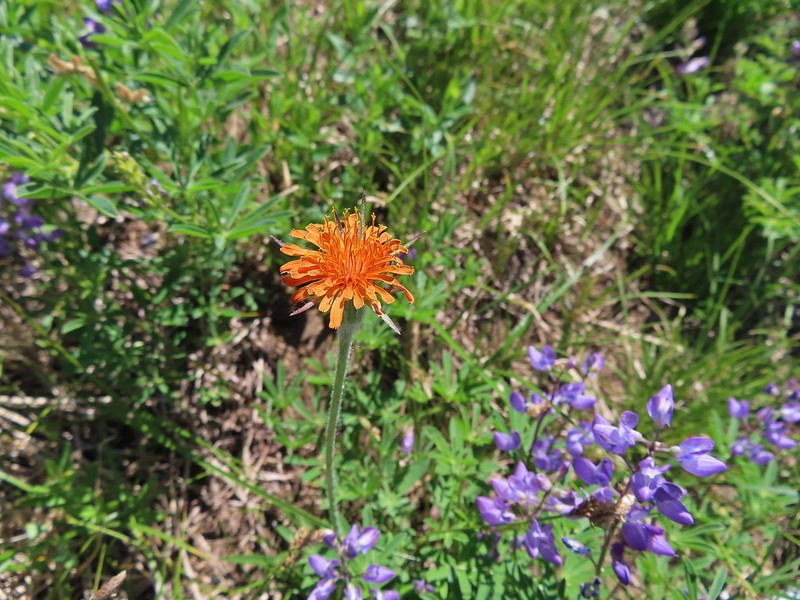 Orange agoseris
Orange agoseris Back at the PCT.
Back at the PCT.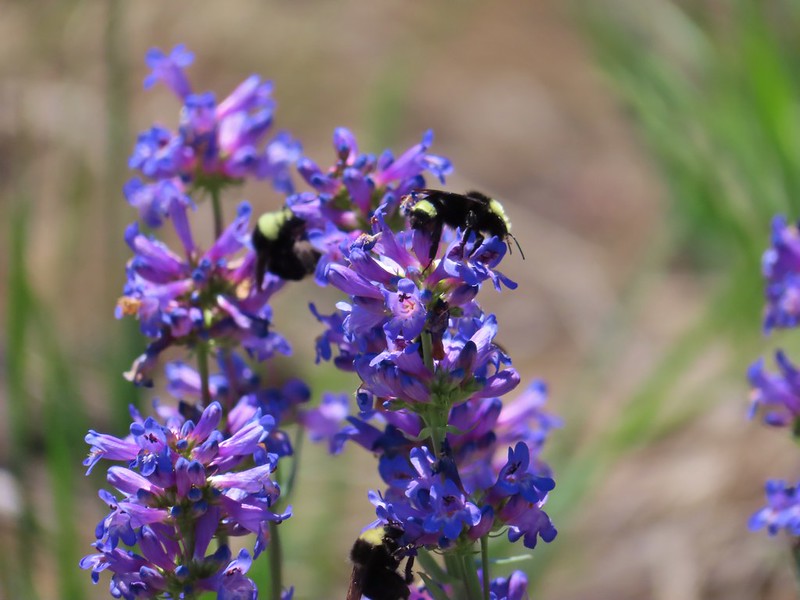 Bumble bees on penstemon.
Bumble bees on penstemon. Cicada in the grass.
Cicada in the grass. Black Crater, Broken Top, North & Middle Sister, Mt. Washington, Hayrick Butte, and Hoodoo Butte from the viewpoint.
Black Crater, Broken Top, North & Middle Sister, Mt. Washington, Hayrick Butte, and Hoodoo Butte from the viewpoint.



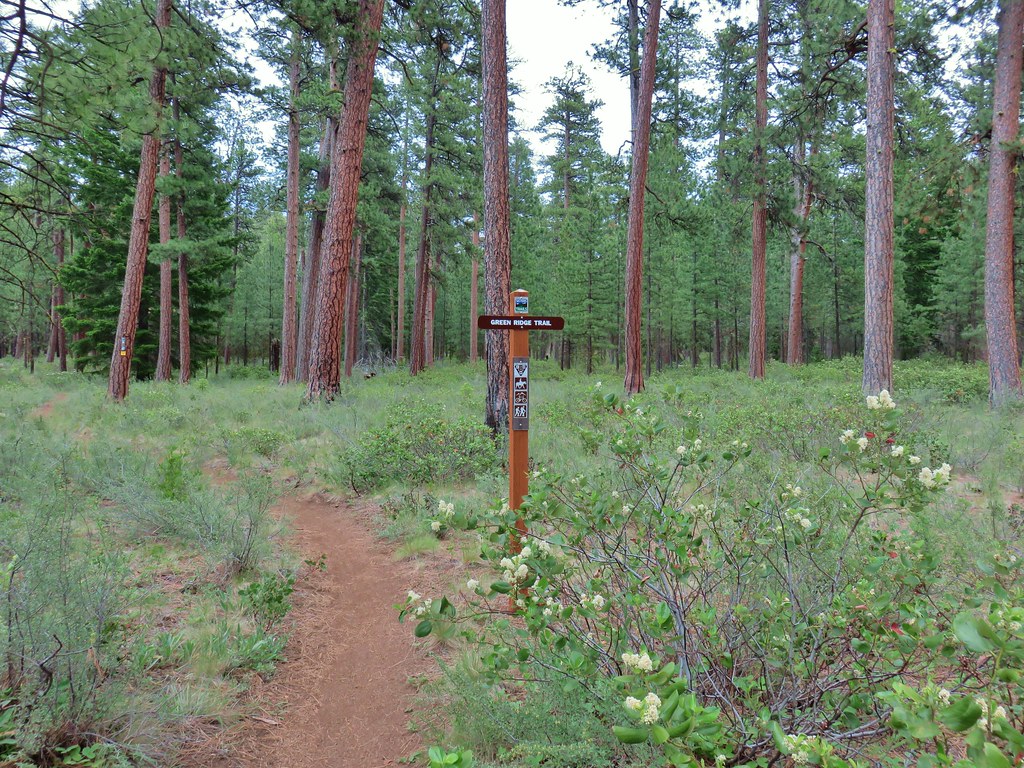
 Paintbrush
Paintbrush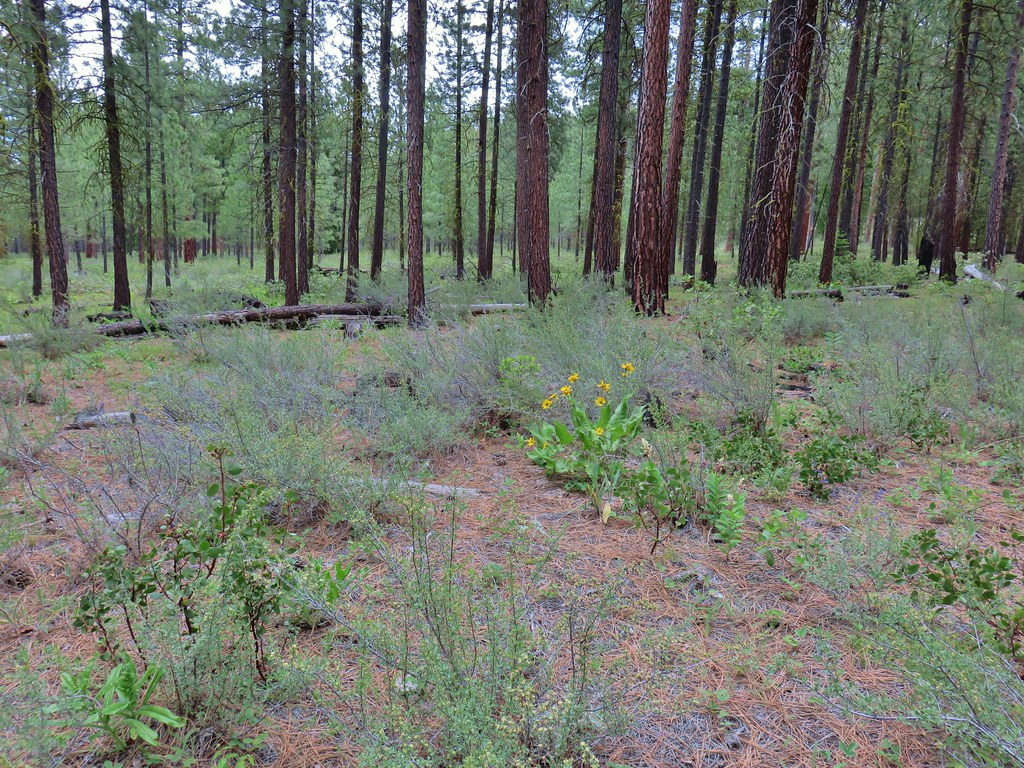 Balsamroot
Balsamroot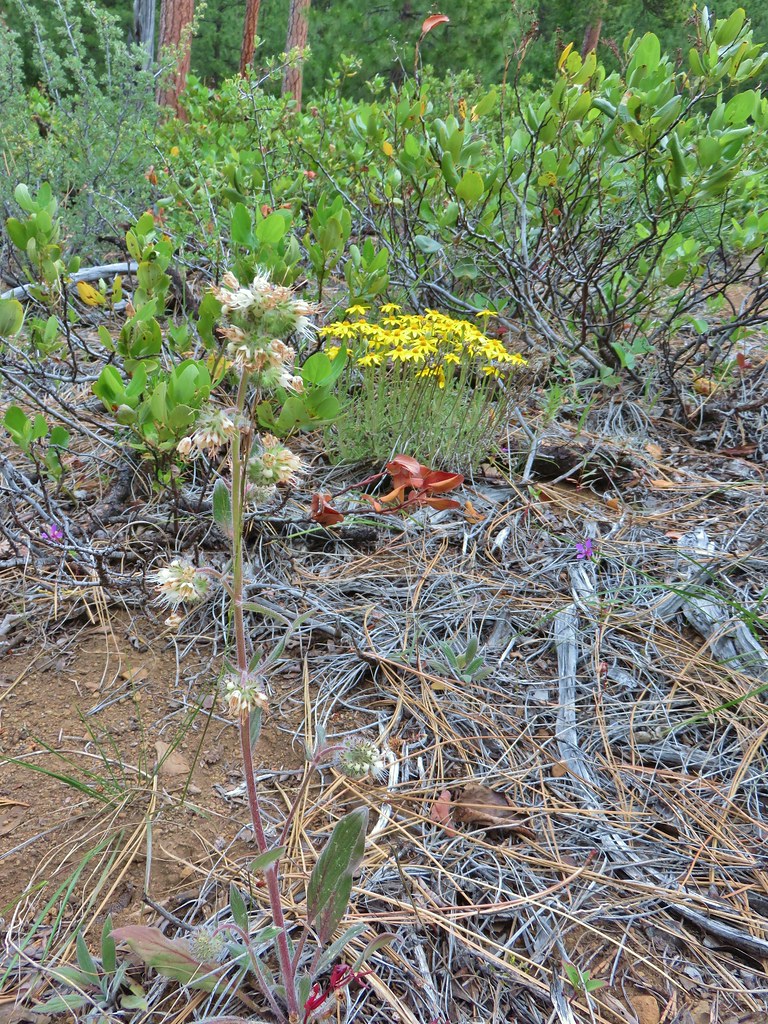 A phacelia, Oregon sunshine, and a little pink diamond clarkia.
A phacelia, Oregon sunshine, and a little pink diamond clarkia.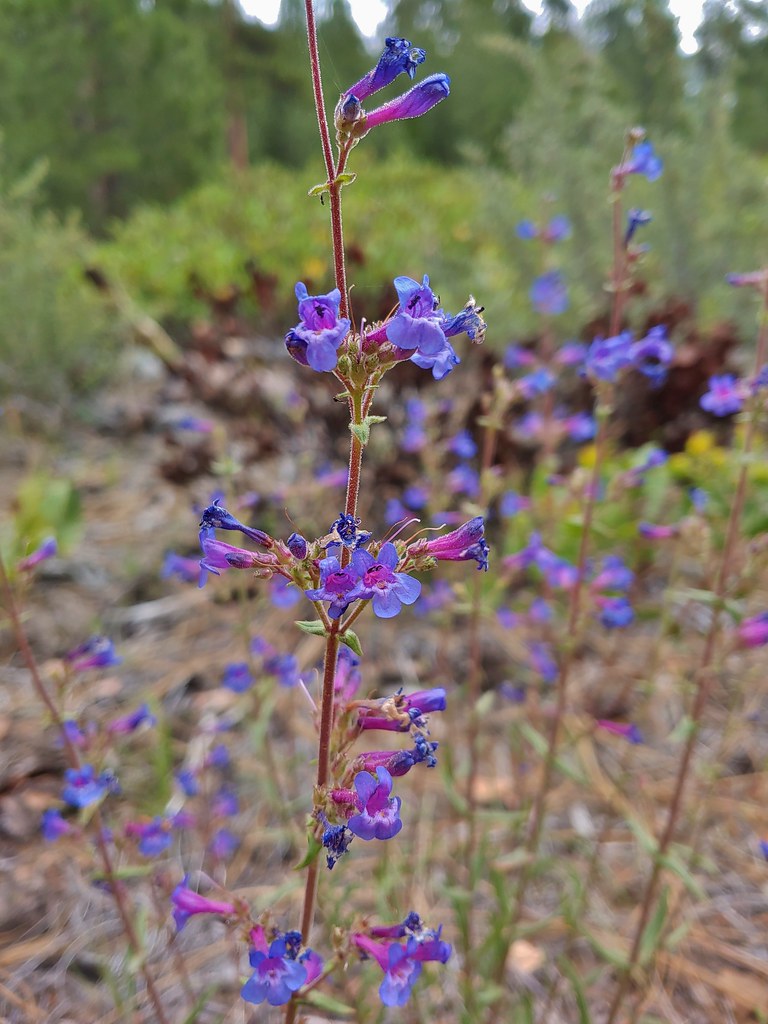 A penstemon
A penstemon Washington lily
Washington lily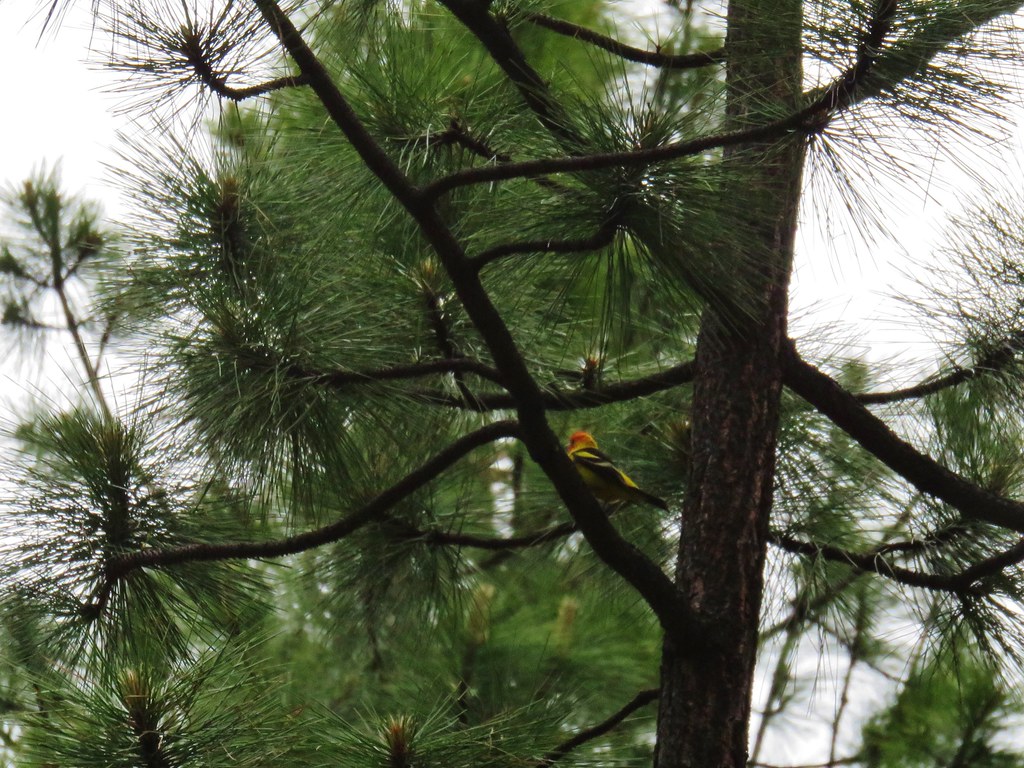 I couldn’t get a good shot of this western tanager but he was really colorful.
I couldn’t get a good shot of this western tanager but he was really colorful. Buckwheat
Buckwheat Bird with breakfast
Bird with breakfast Three Fingered Jack
Three Fingered Jack
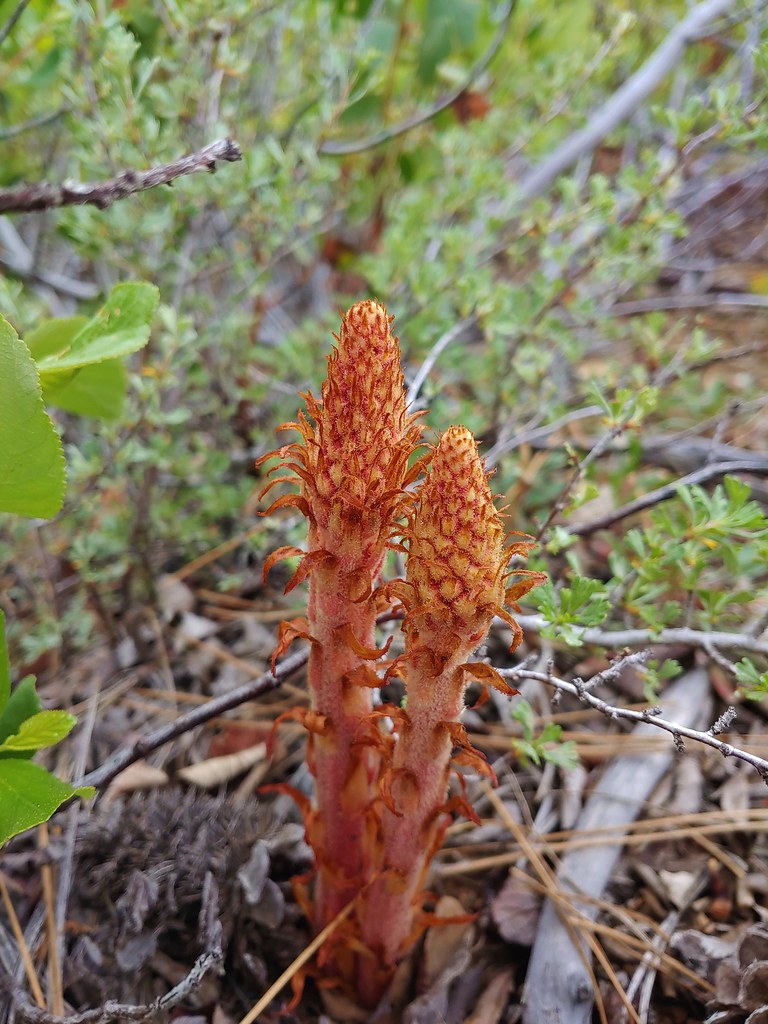 Pinedrops
Pinedrops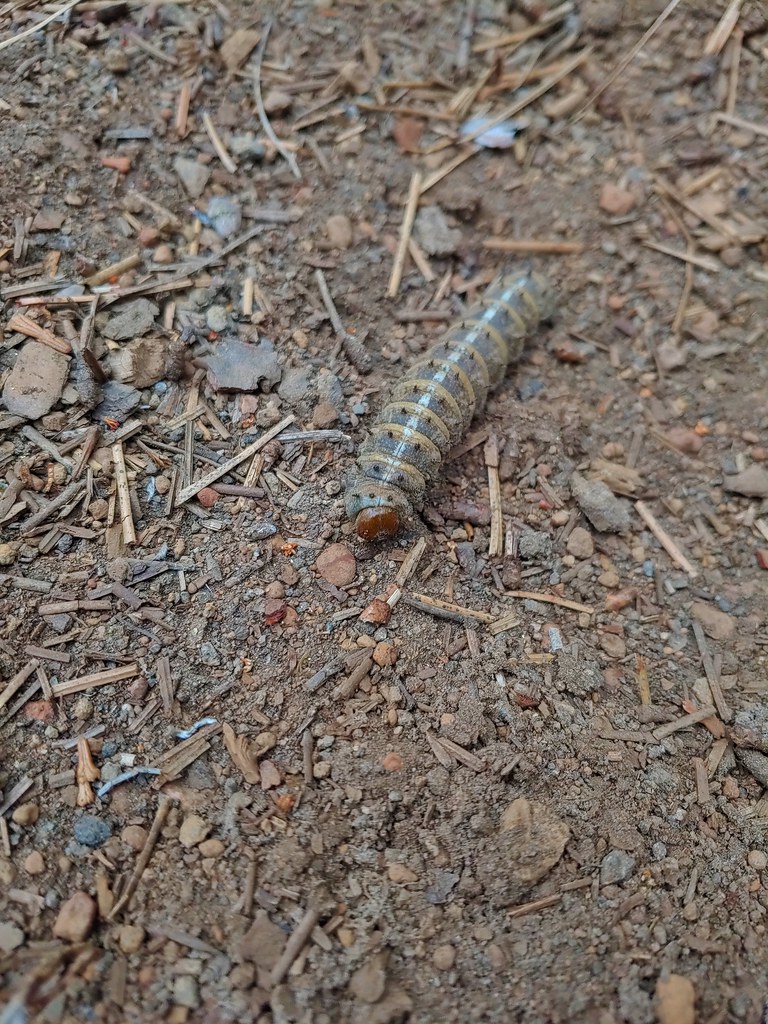
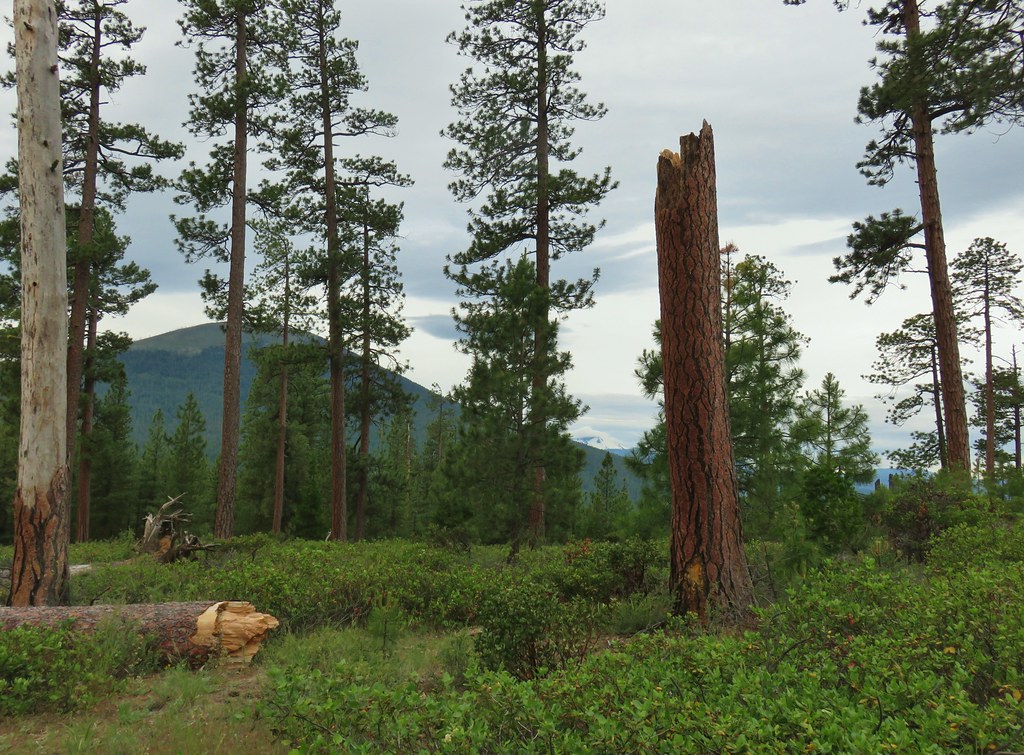



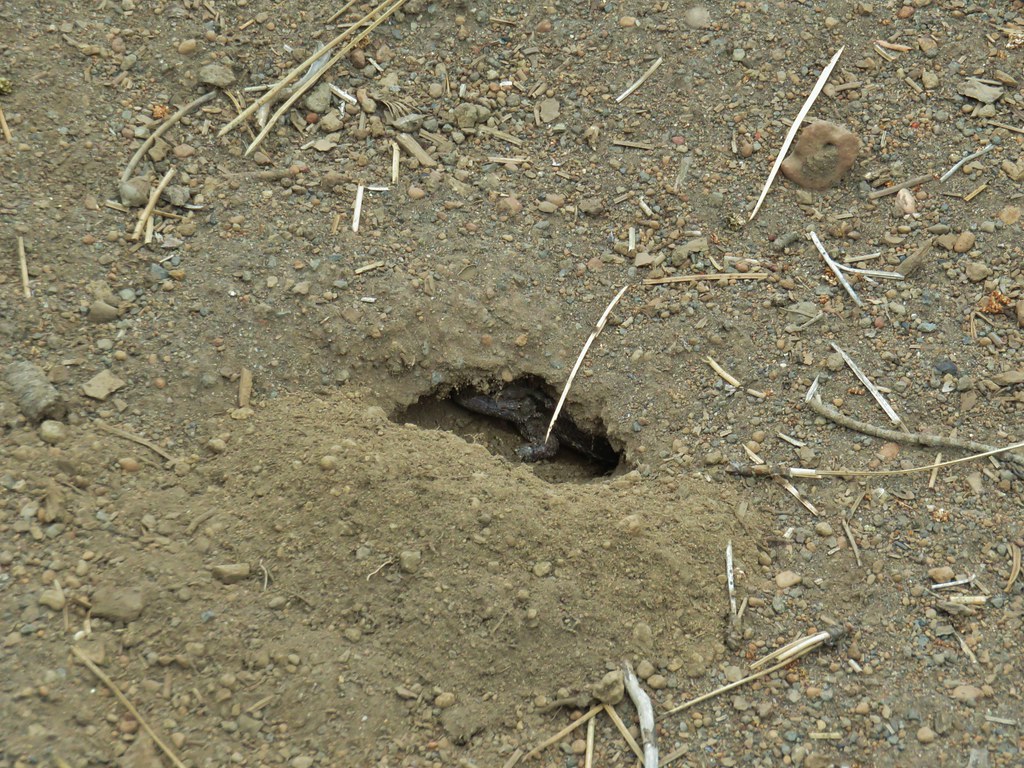
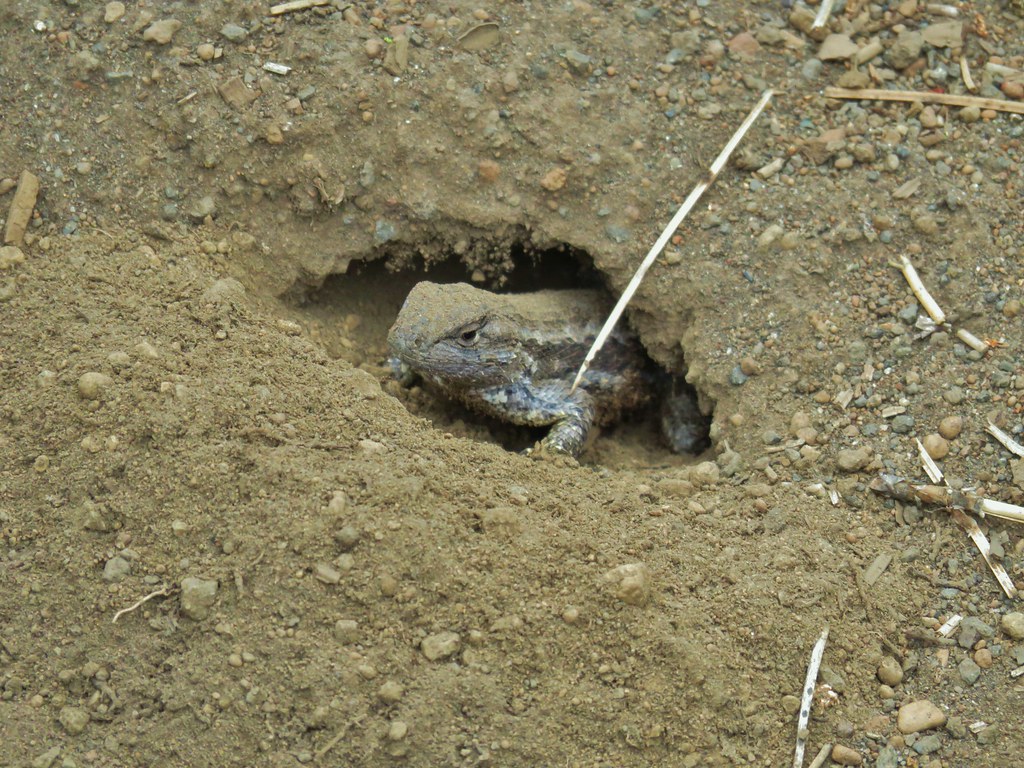

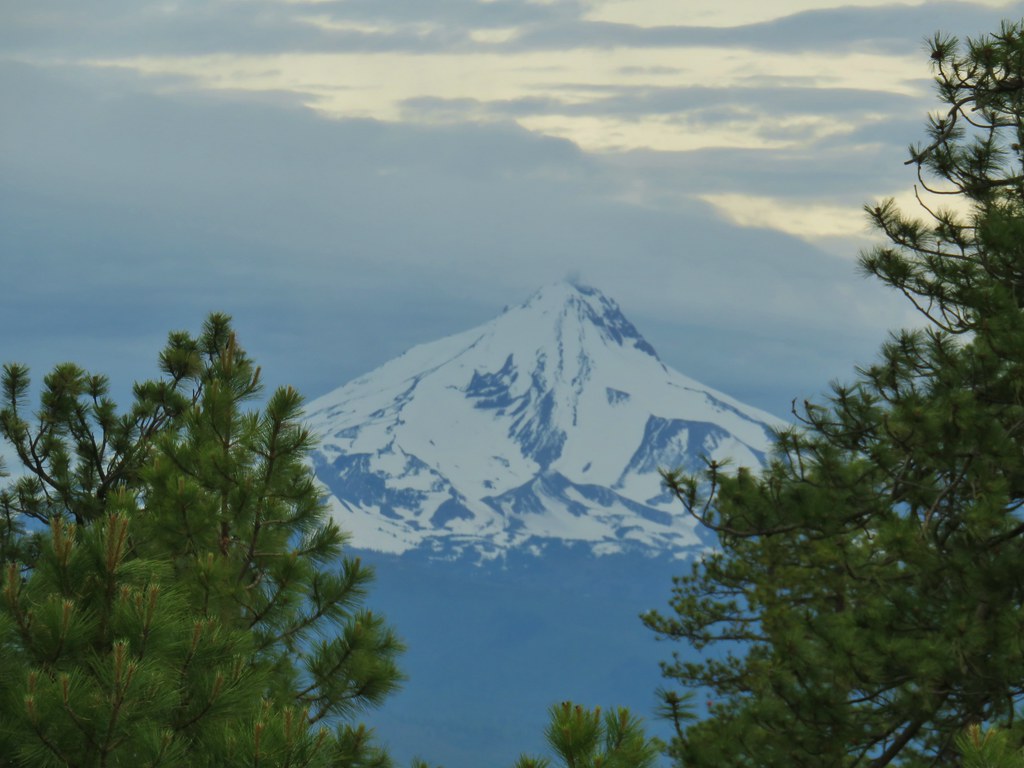

 South Cinder Peak (
South Cinder Peak (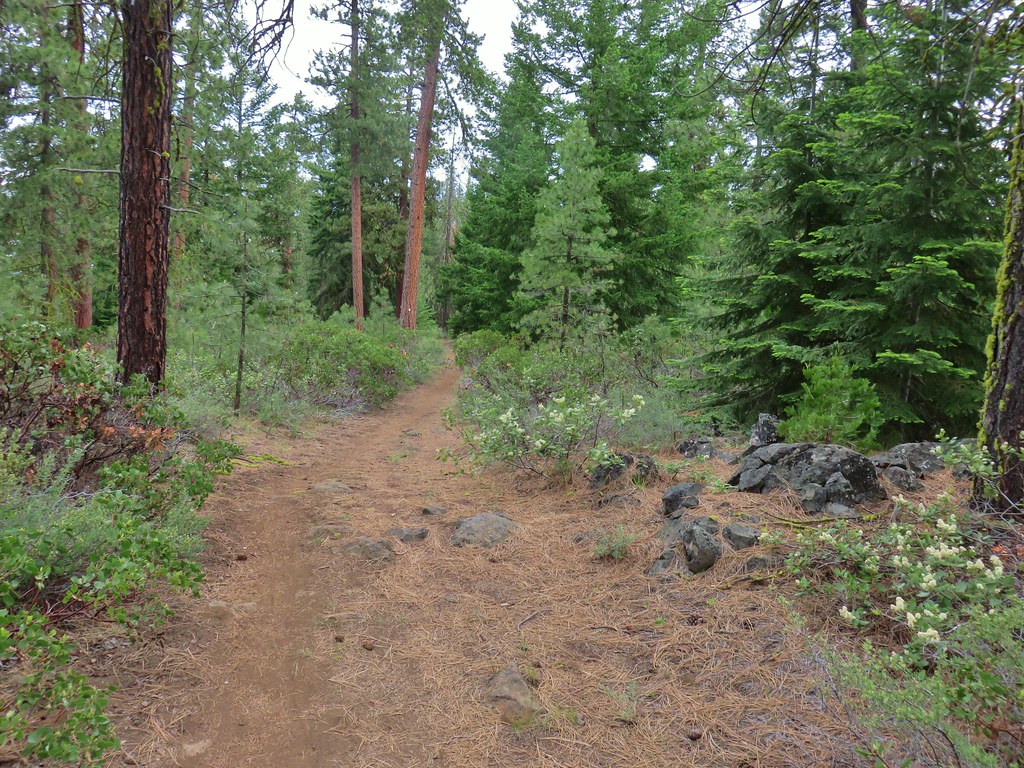
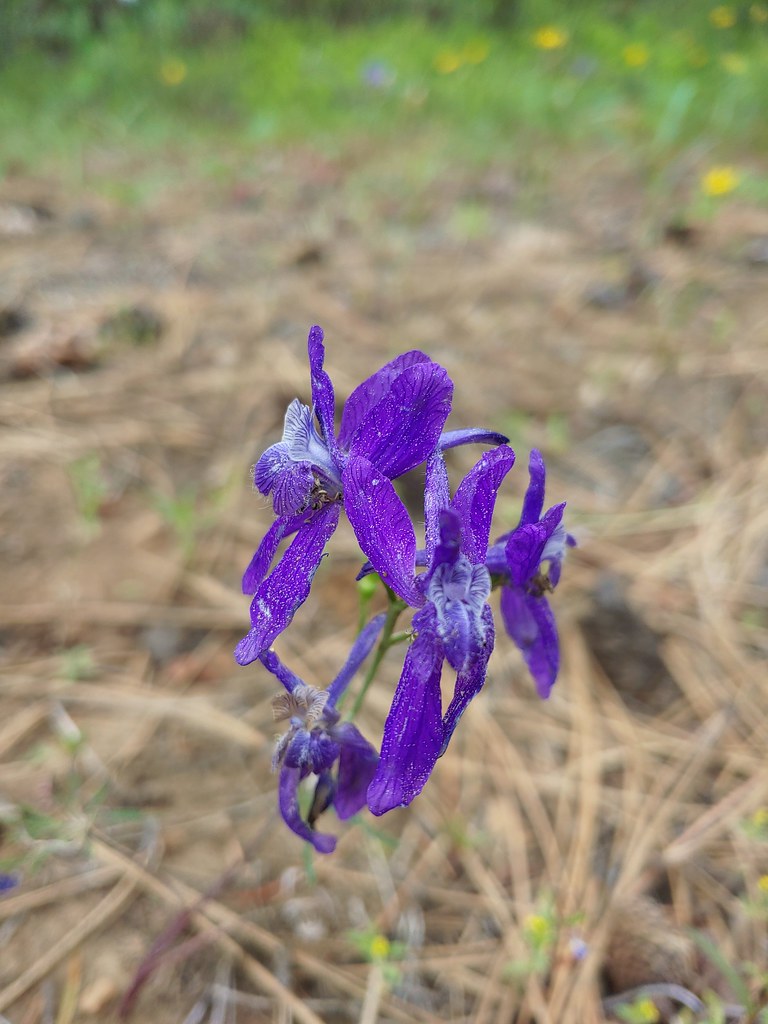



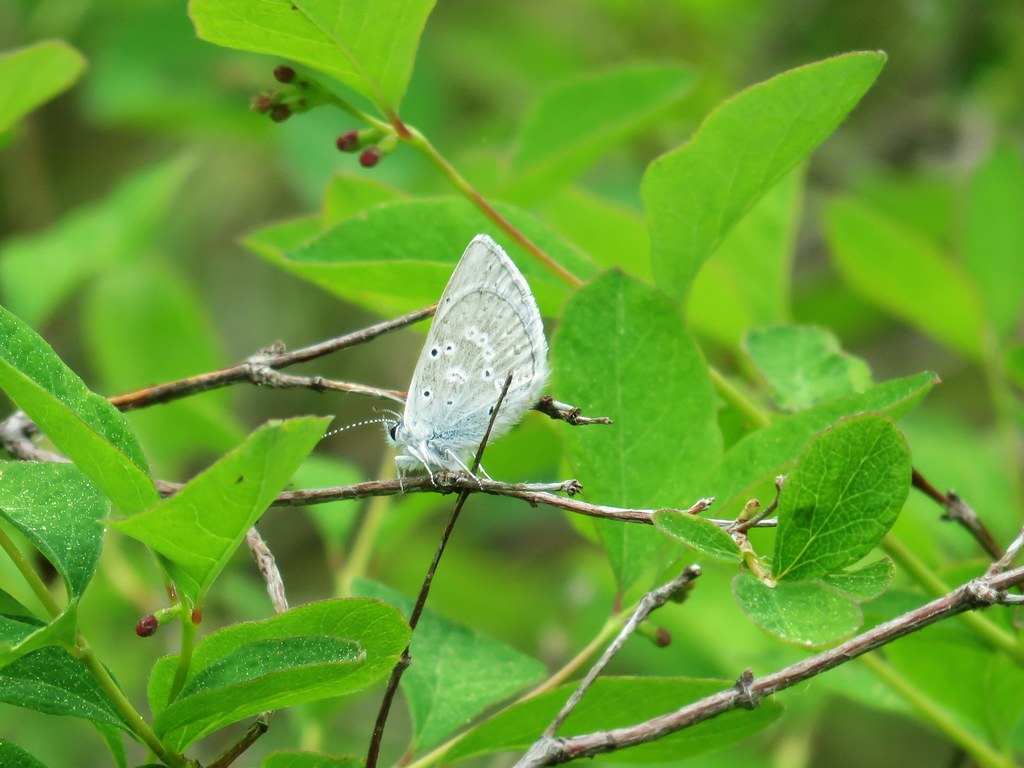
 Lupine
Lupine Columbine
Columbine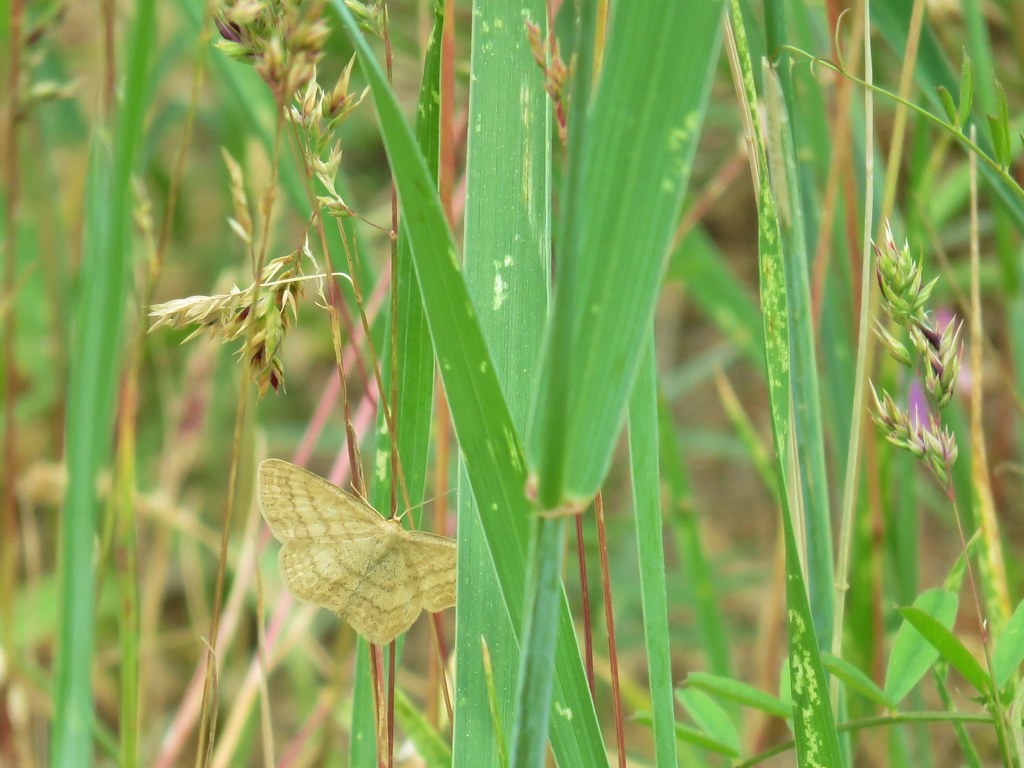 A moth but not a Pandora moth. 🙂
A moth but not a Pandora moth. 🙂 Sticky cinquefoil
Sticky cinquefoil Salsify
Salsify Tortoiseshell butterfly
Tortoiseshell butterfly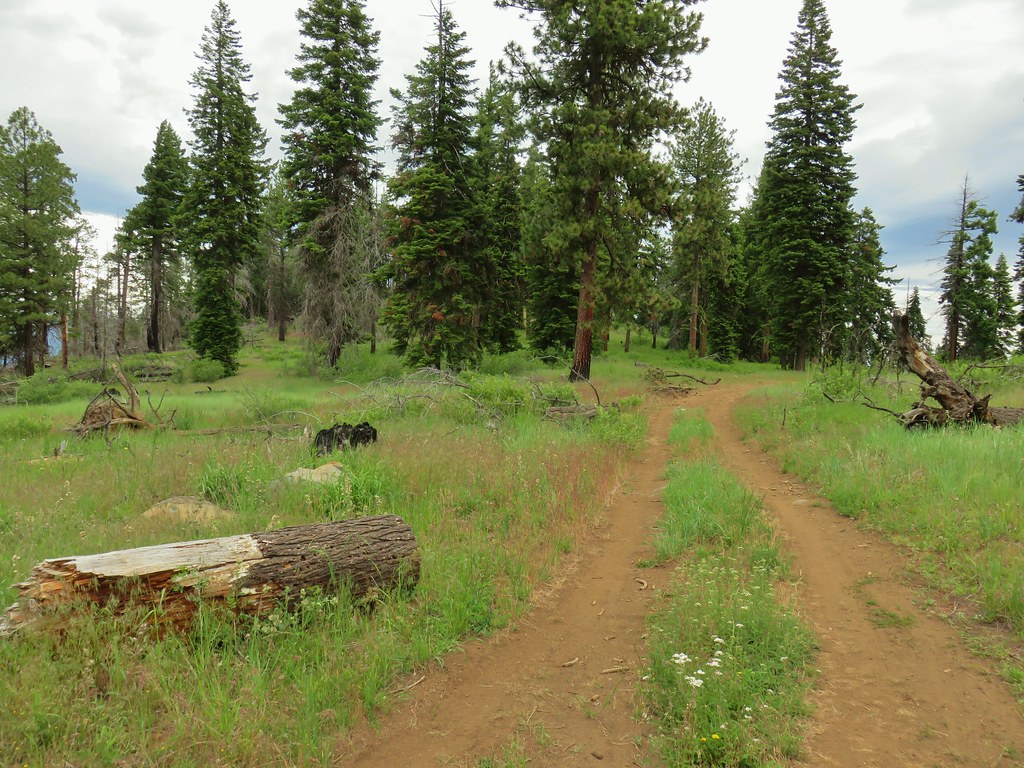
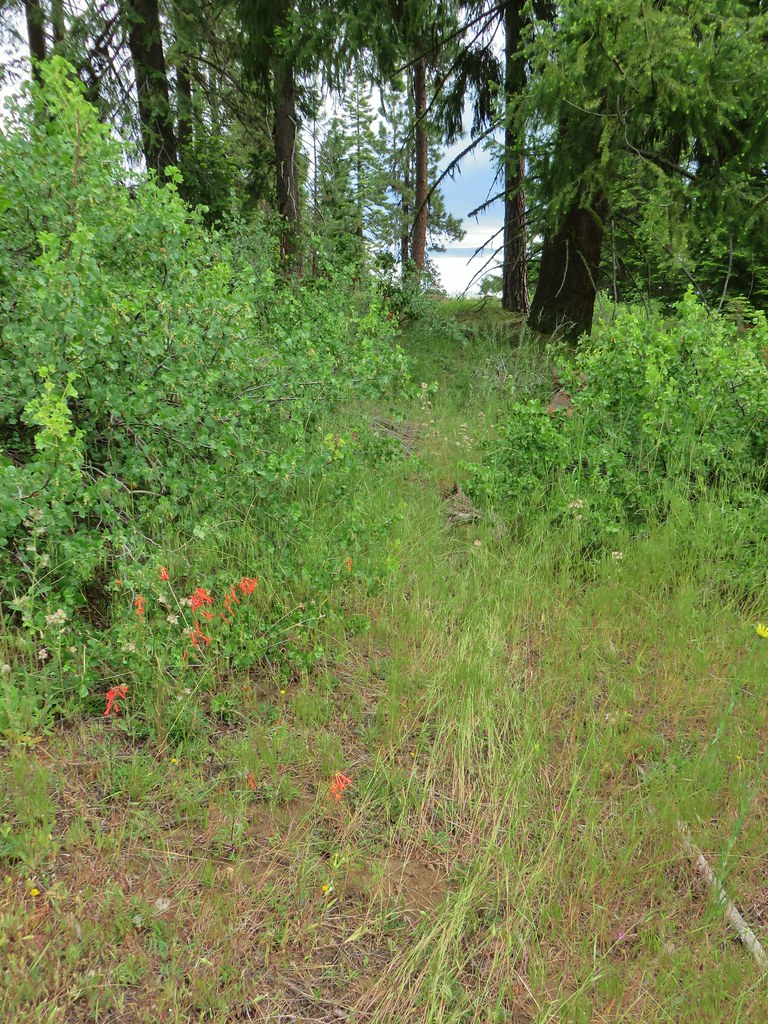
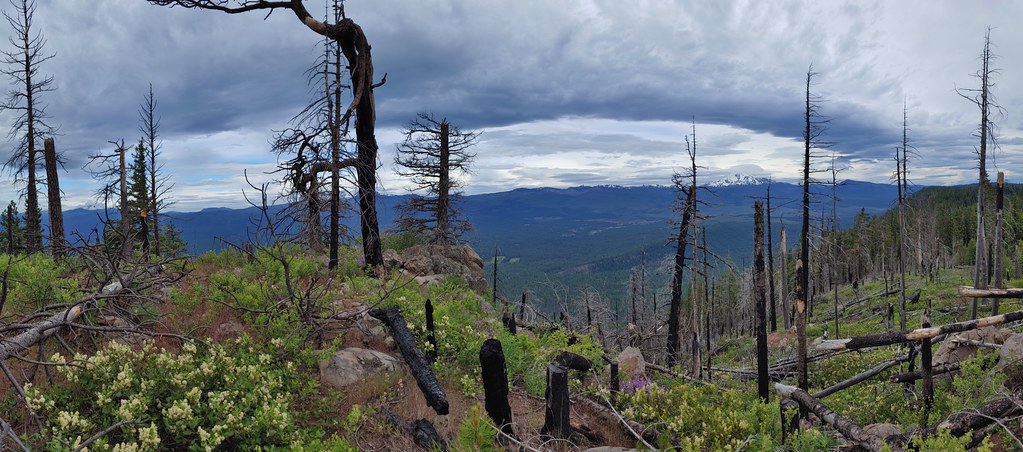

 Black Butte and the North Sister
Black Butte and the North Sister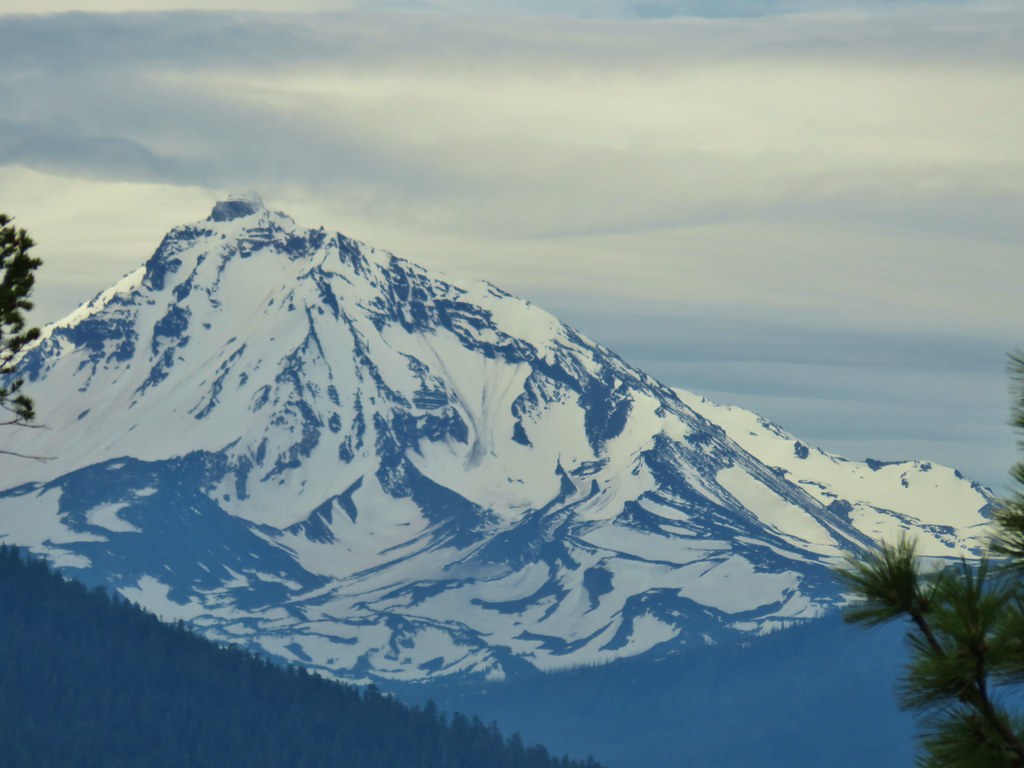 North Sister
North Sister Three Fingered Jack
Three Fingered Jack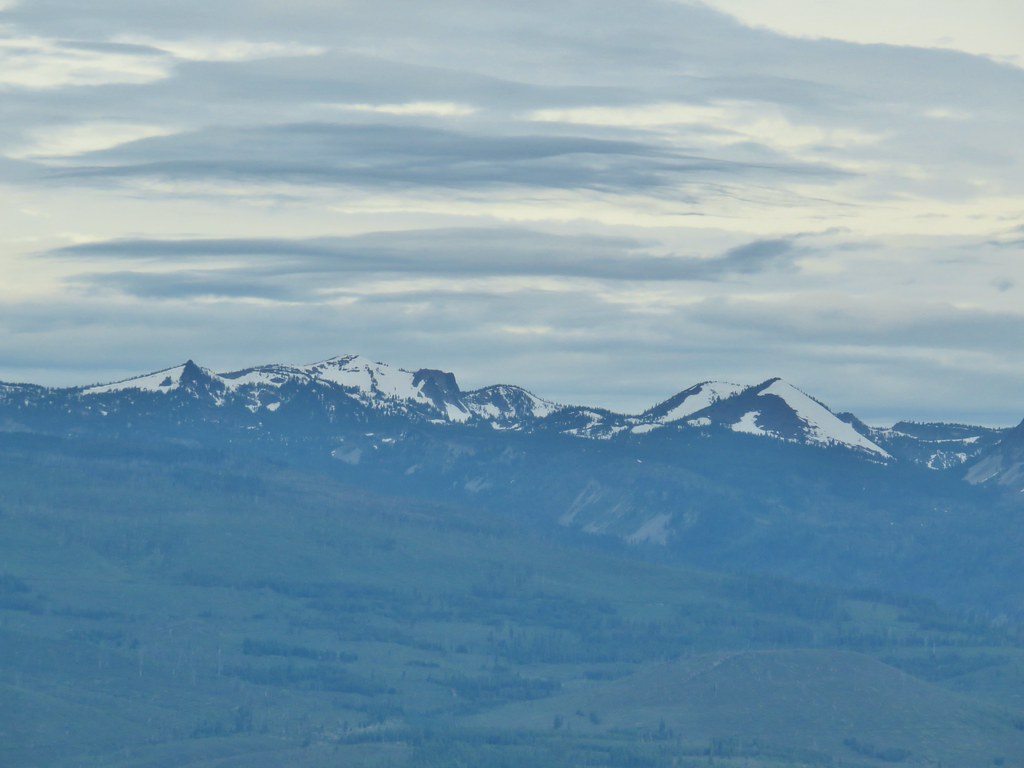 North Cinder Peak and Forked Butte (
North Cinder Peak and Forked Butte ( Mt. Jefferson
Mt. Jefferson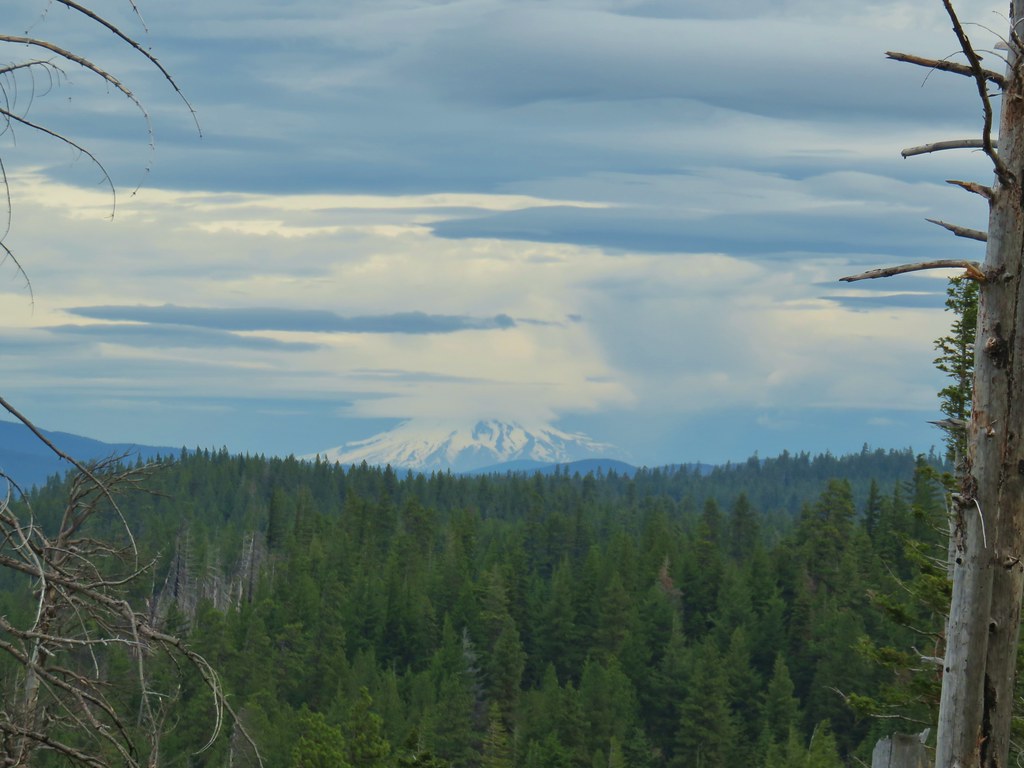 Mt. Hood
Mt. Hood

 Buckwheat in the center.
Buckwheat in the center.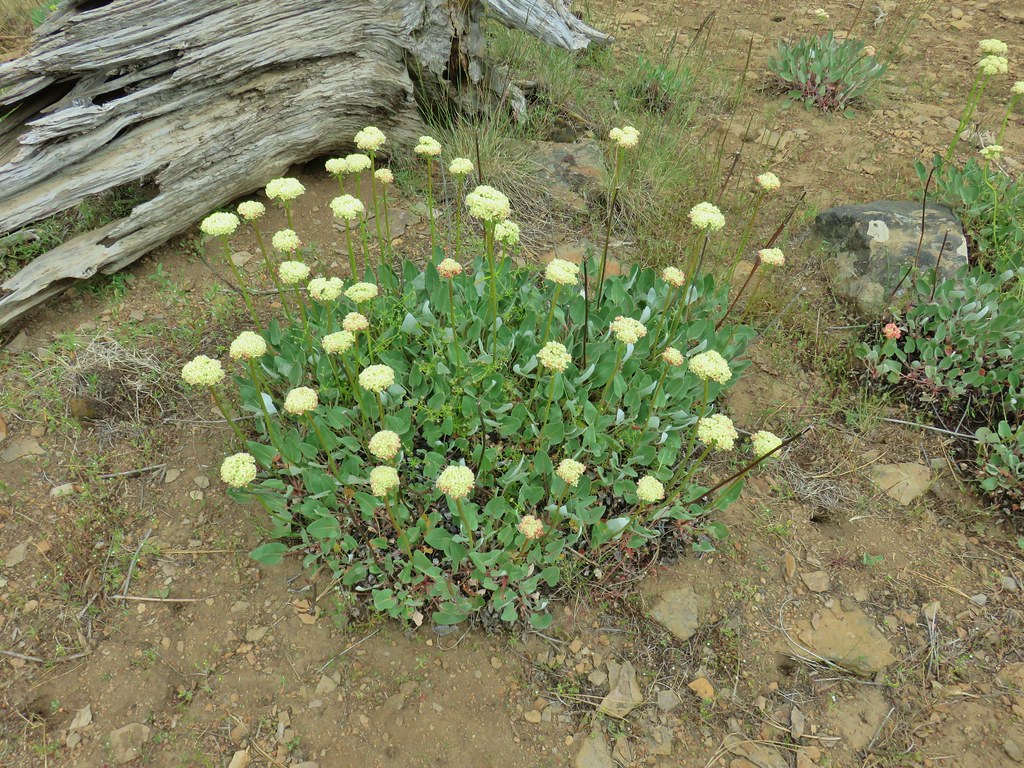

 Balsamroot near the trees.
Balsamroot near the trees.




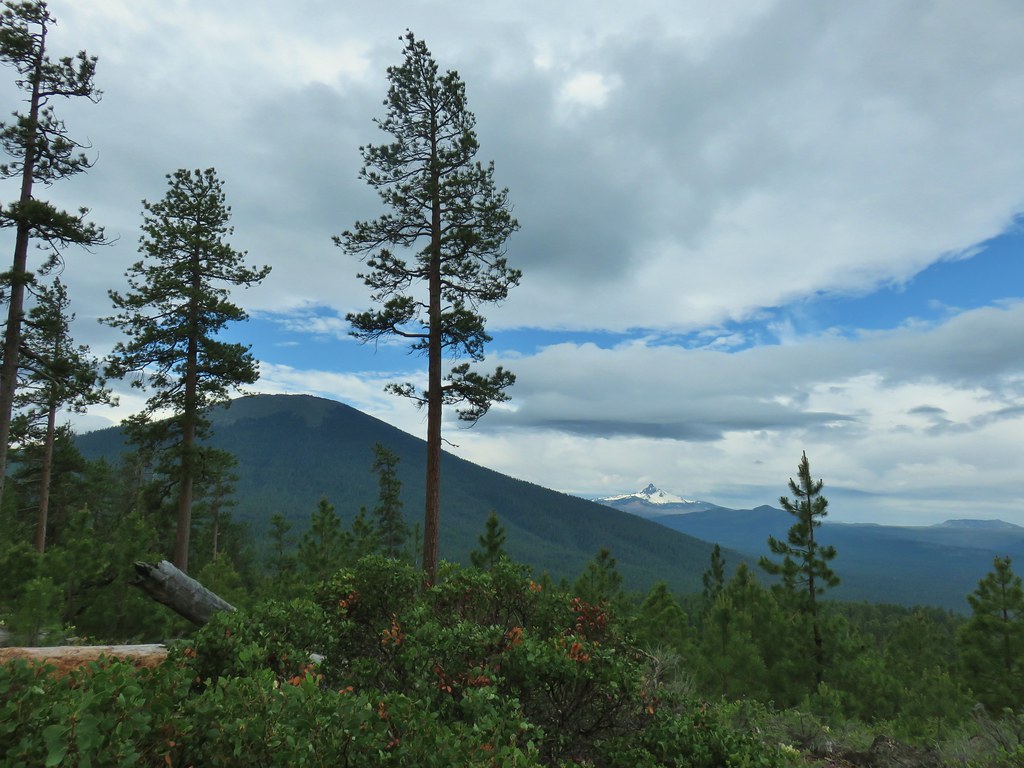 A sliver of blue sky over Black Butte and Mt. Washington.
A sliver of blue sky over Black Butte and Mt. Washington. Mt. Washington
Mt. Washington Three Fingered Jack with some blue sky.
Three Fingered Jack with some blue sky.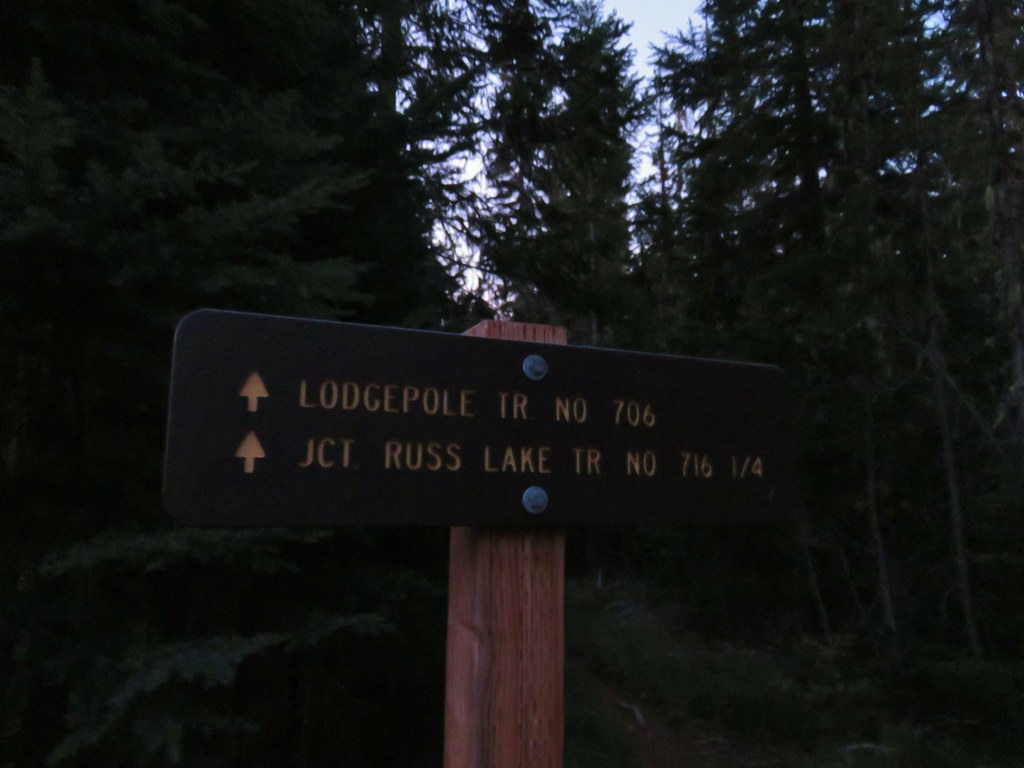
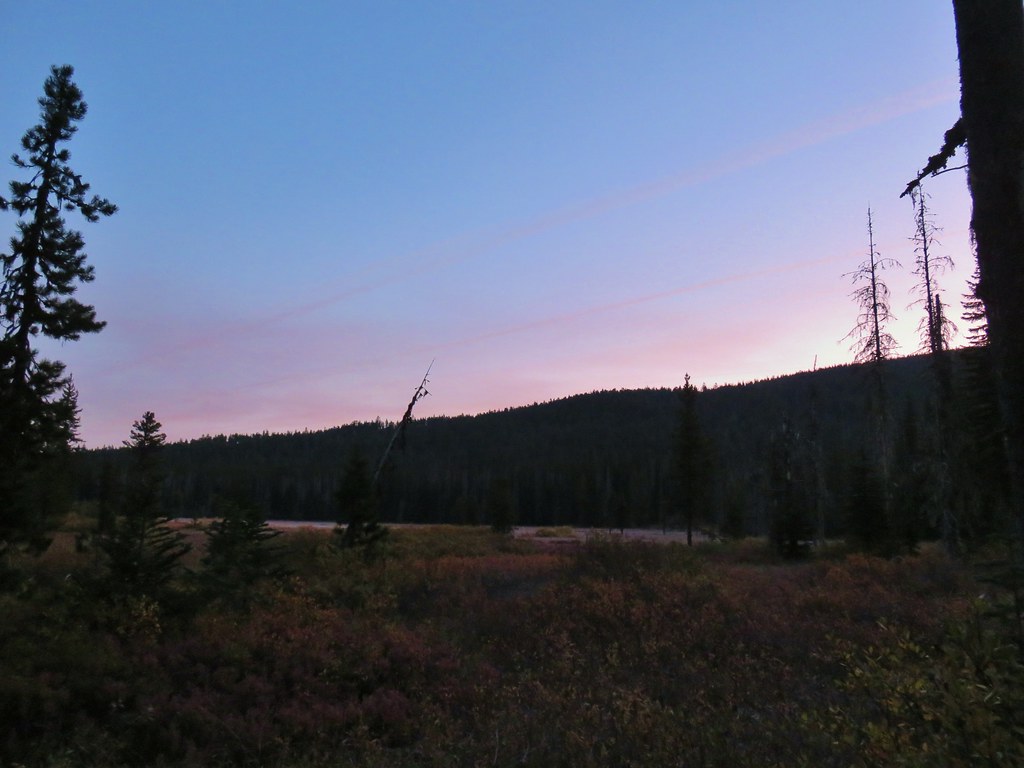
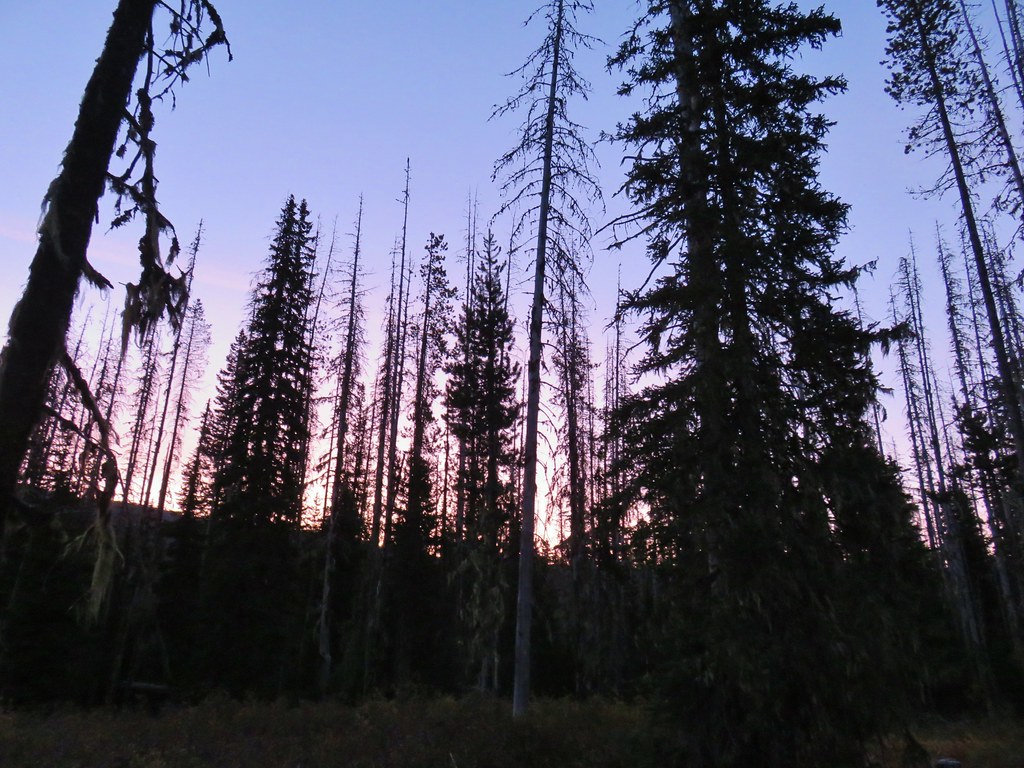










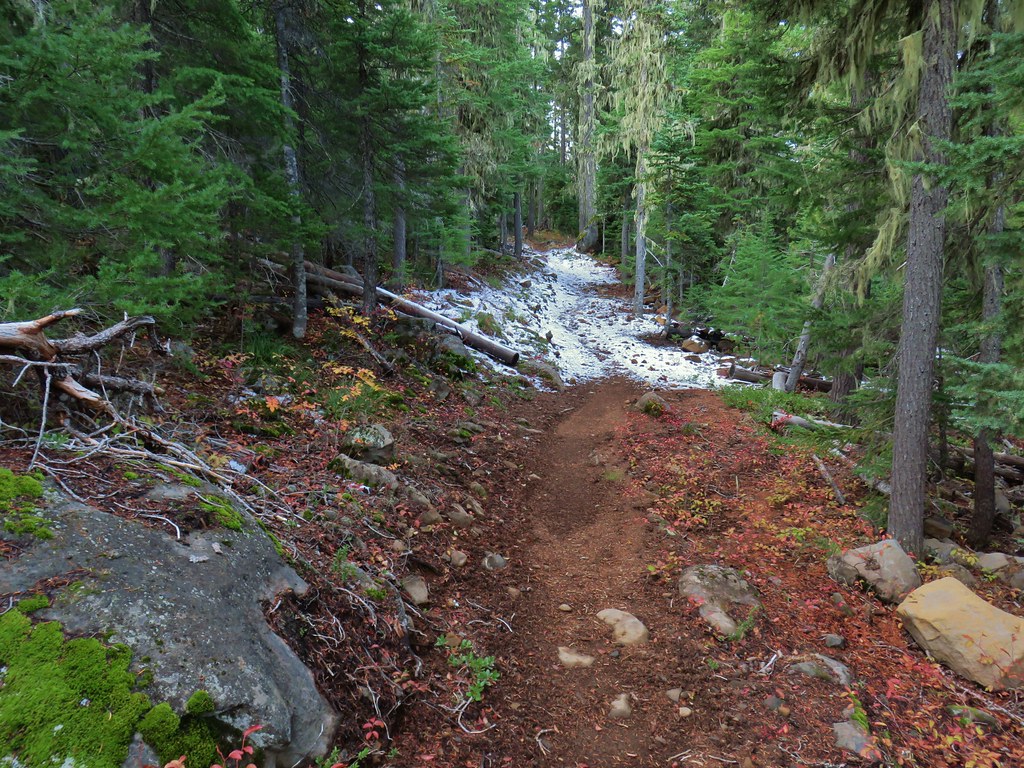
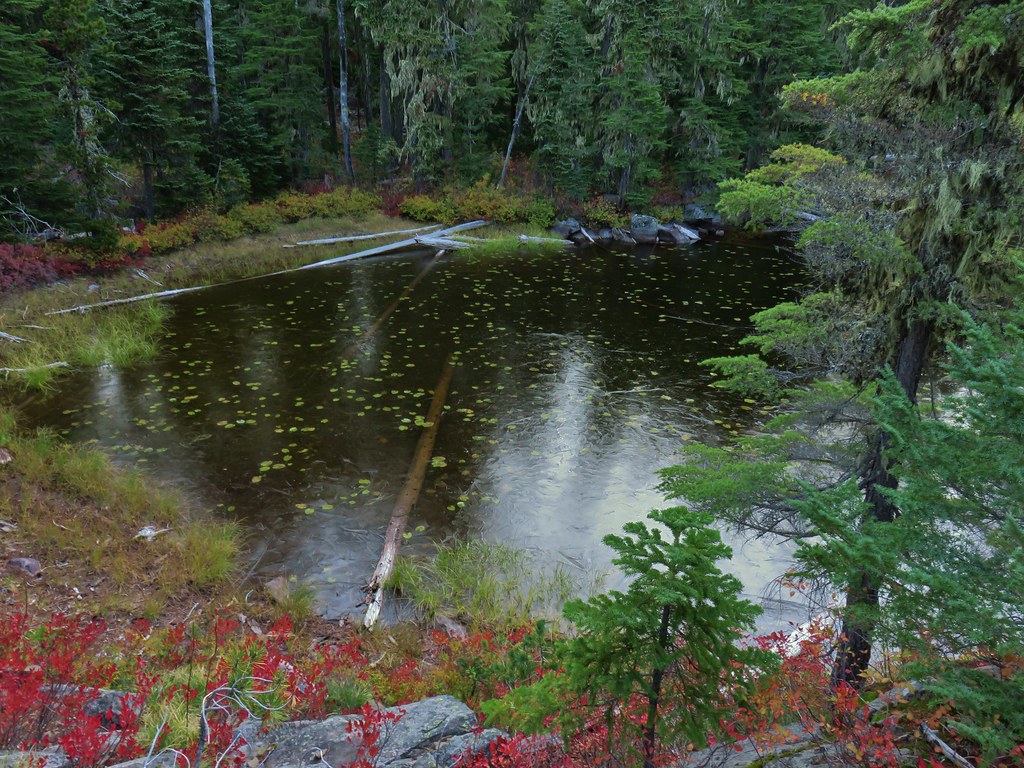

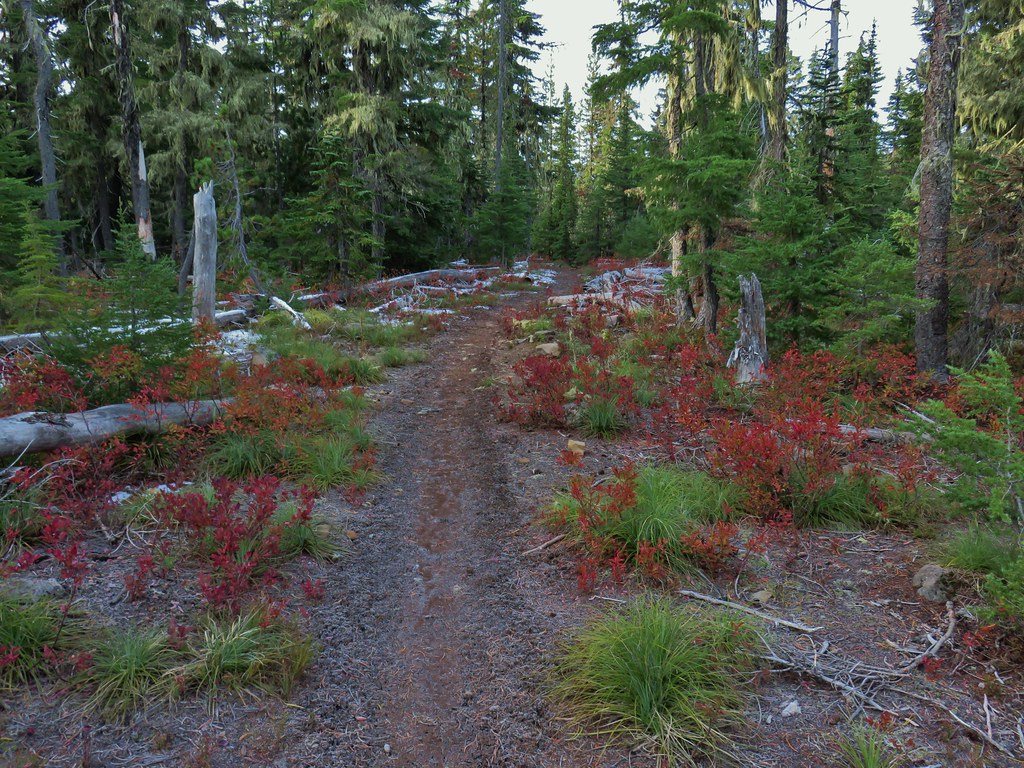





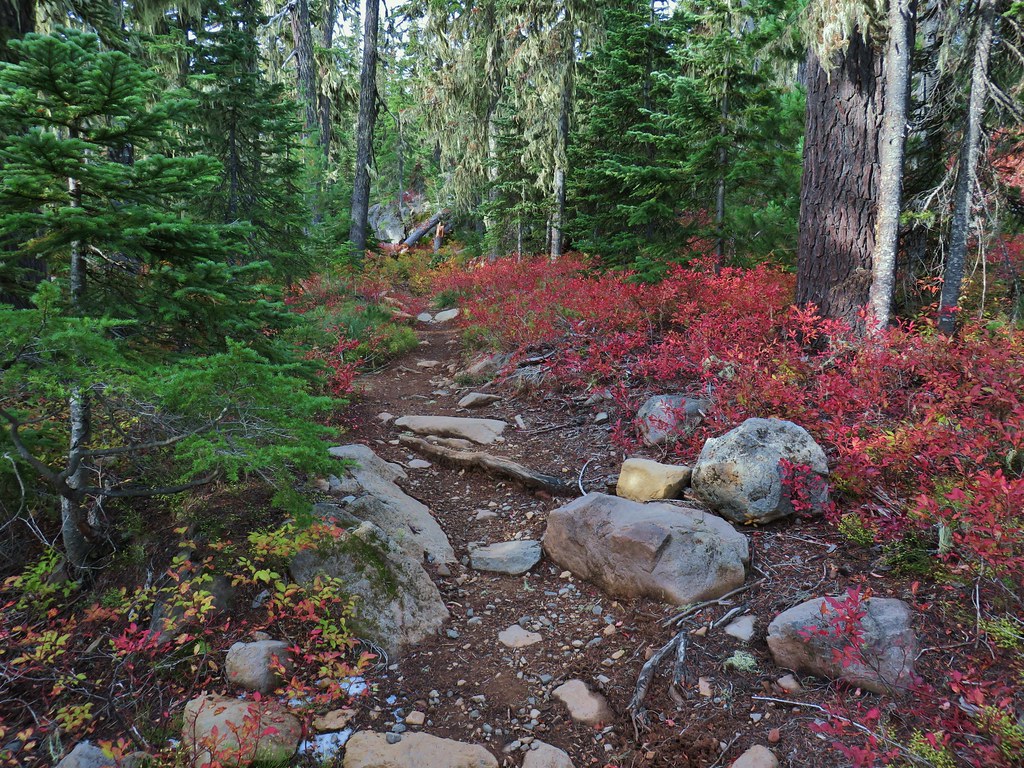

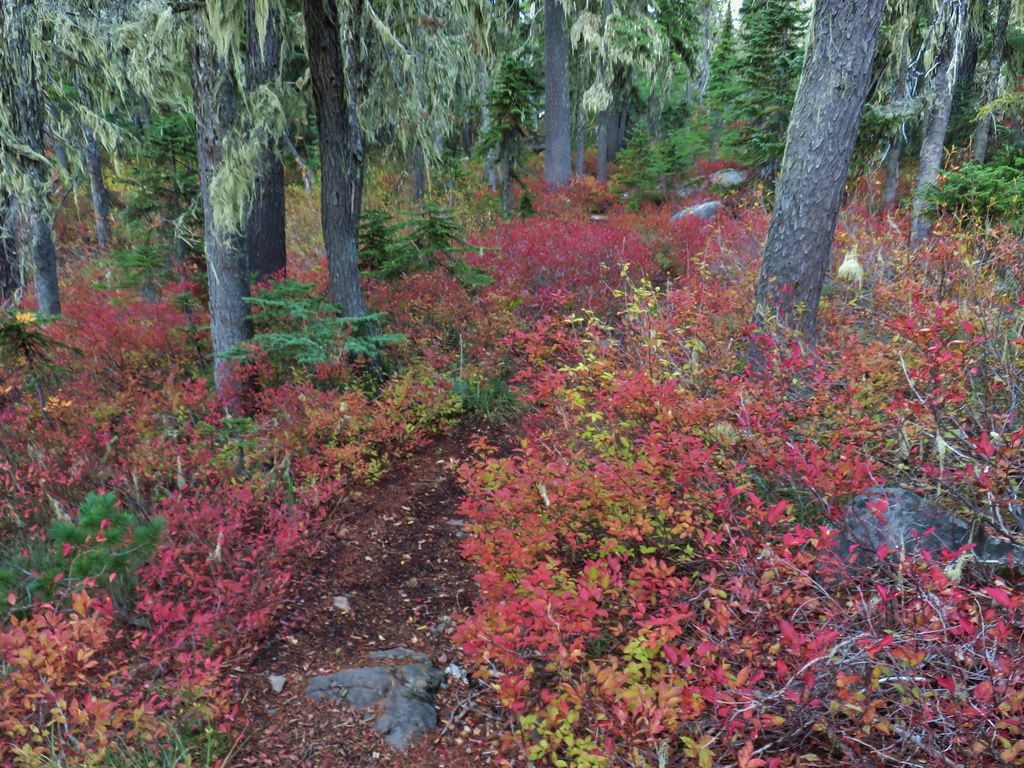
 Olallie Butte
Olallie Butte

 Mt. Jefferson
Mt. Jefferson Olallie Lake
Olallie Lake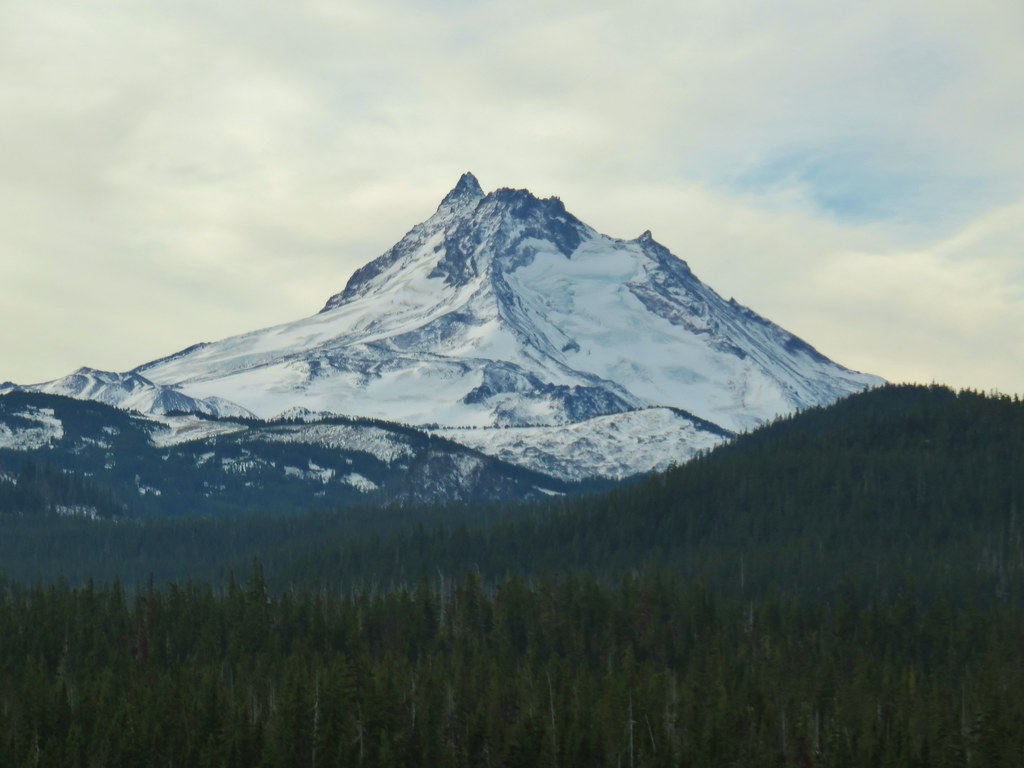

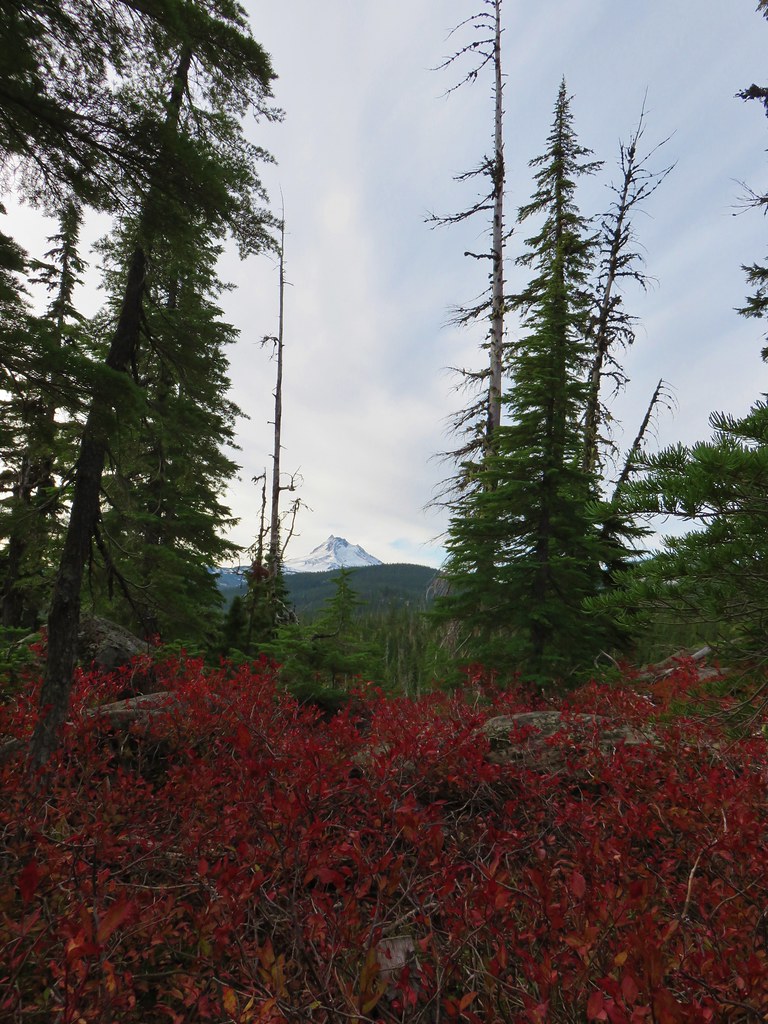 Mt. Jefferson
Mt. Jefferson
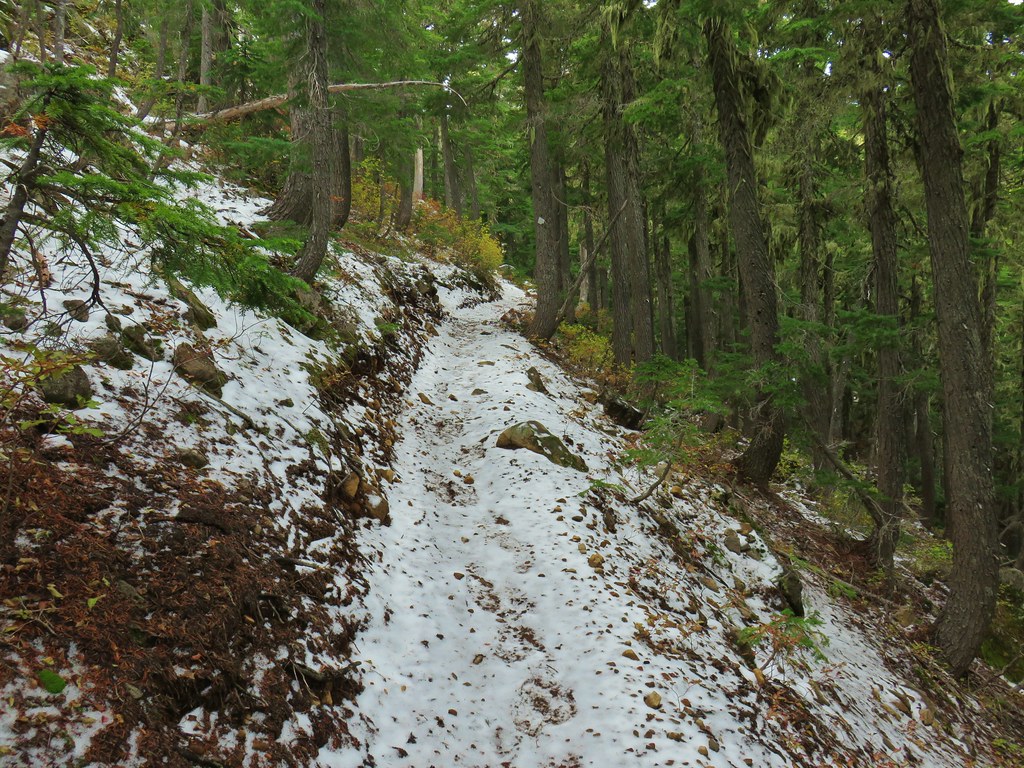
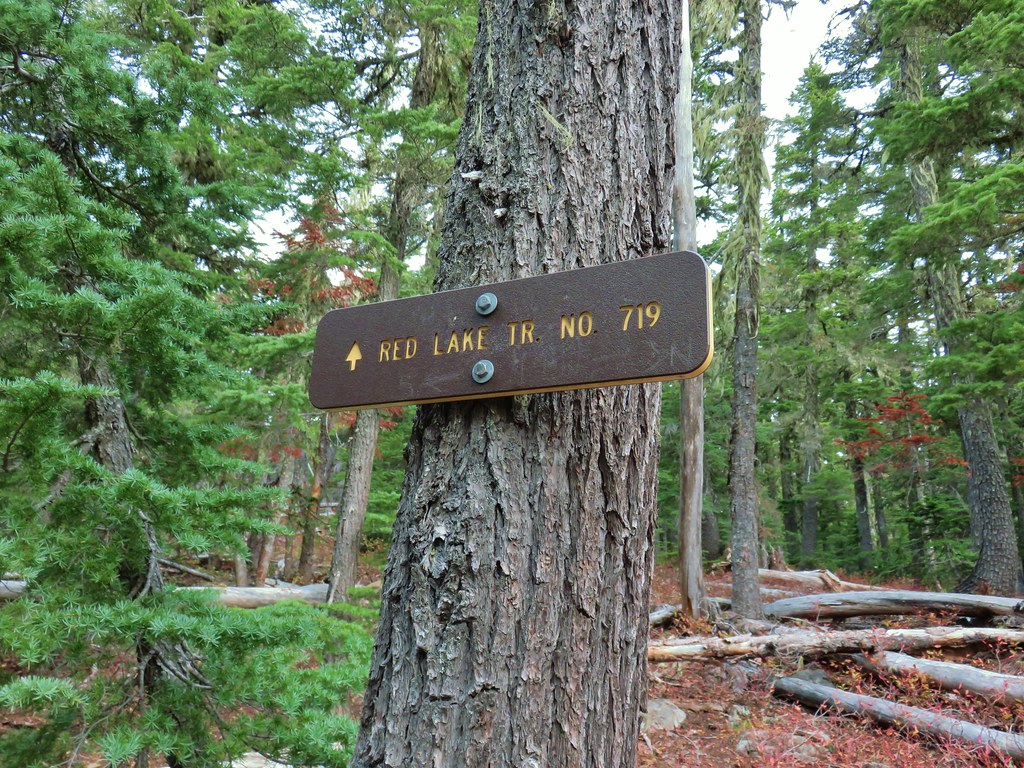
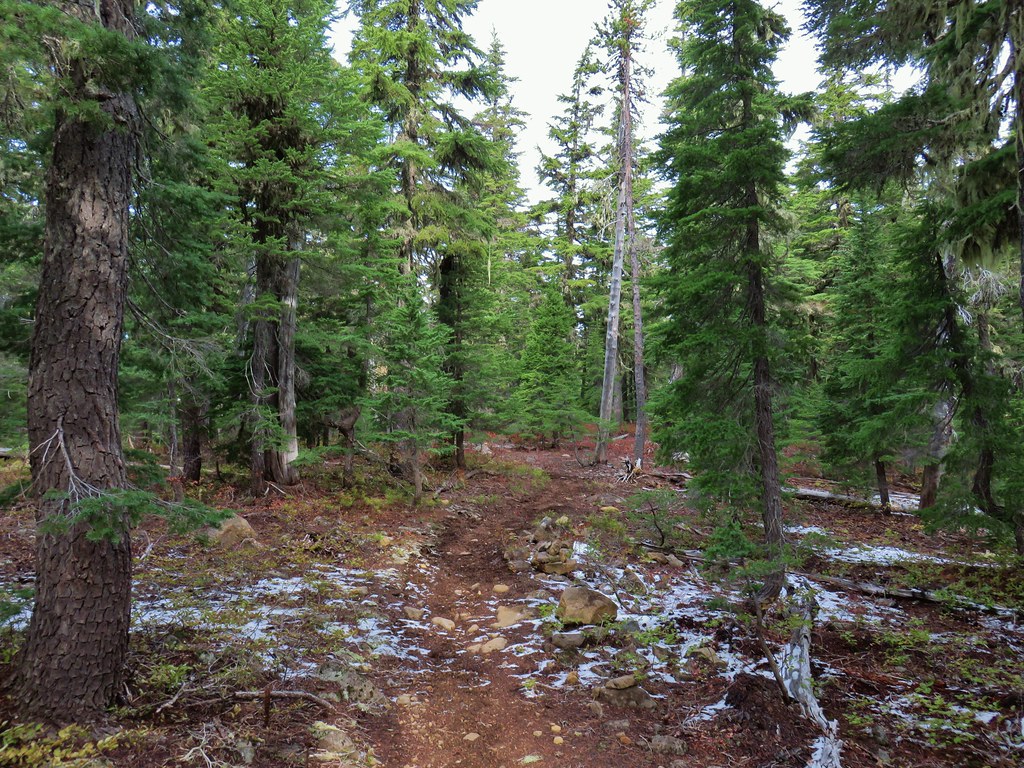



 Potato Butte ahead.
Potato Butte ahead.
 Lodgepole Trail junction.
Lodgepole Trail junction.
 One of the causes of the noisy steps.
One of the causes of the noisy steps.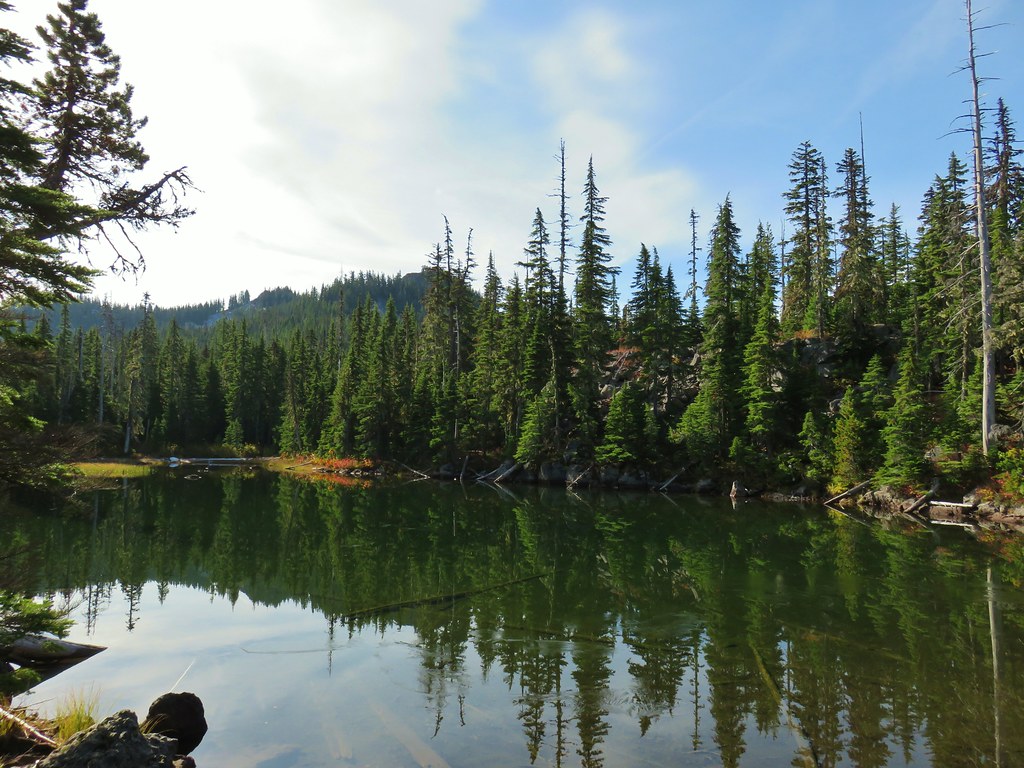 Twin Peaks on the other side of Middle Lake.
Twin Peaks on the other side of Middle Lake. Colors along Middle Lake.
Colors along Middle Lake.

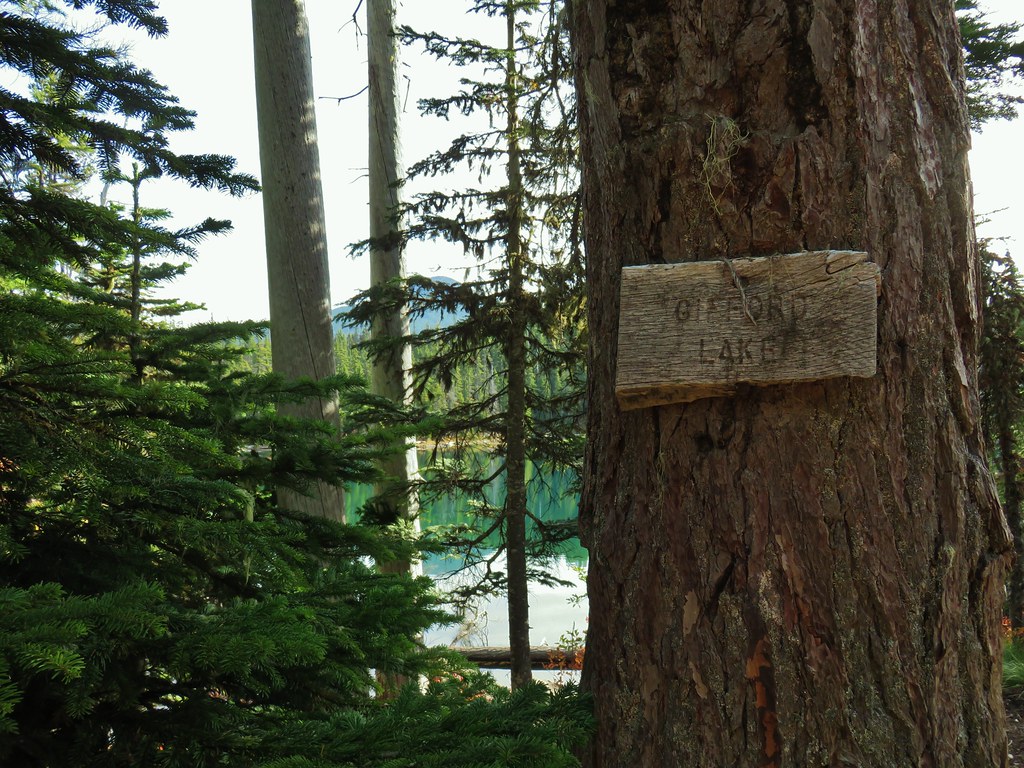
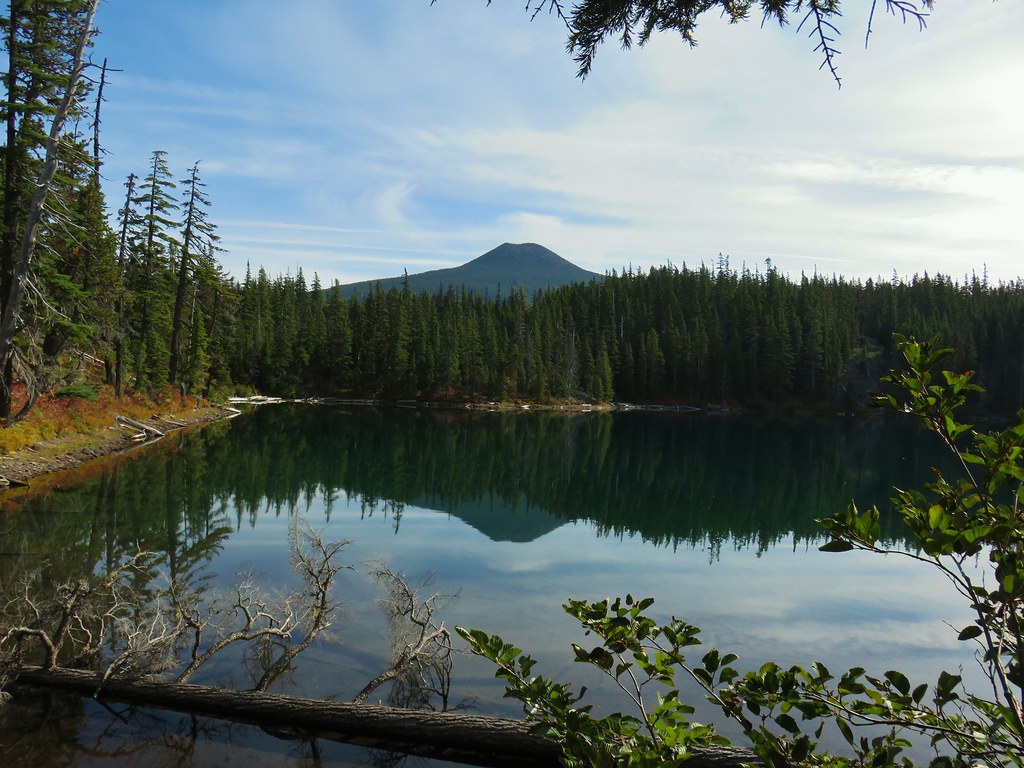 Olallie Butte
Olallie Butte
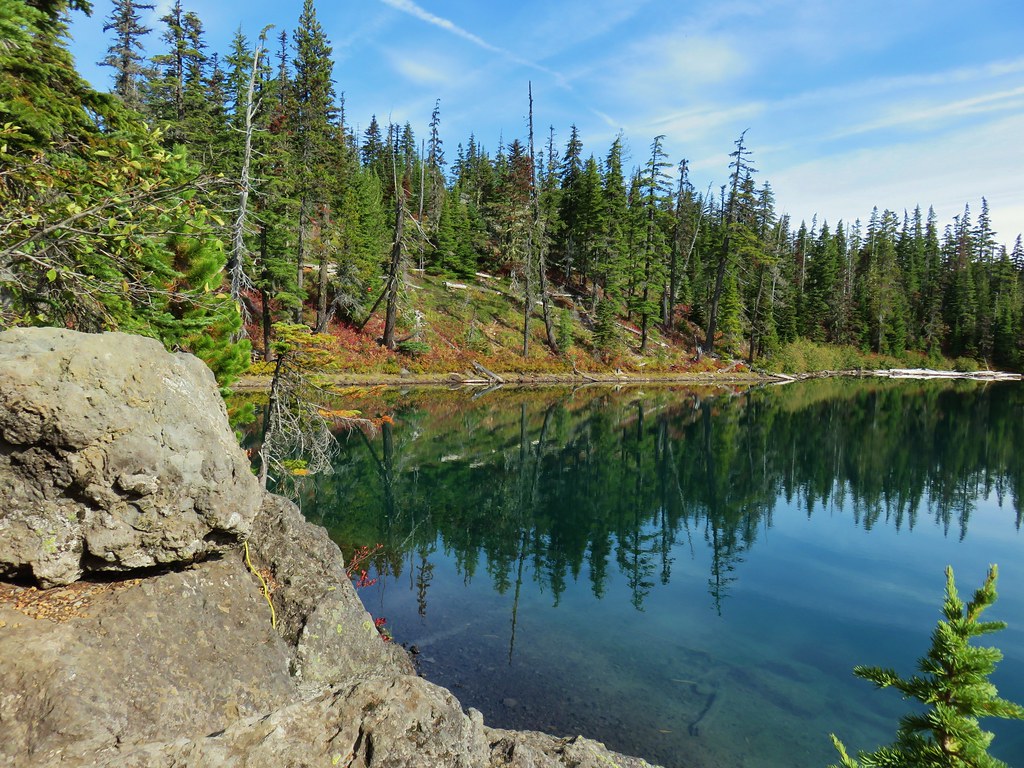
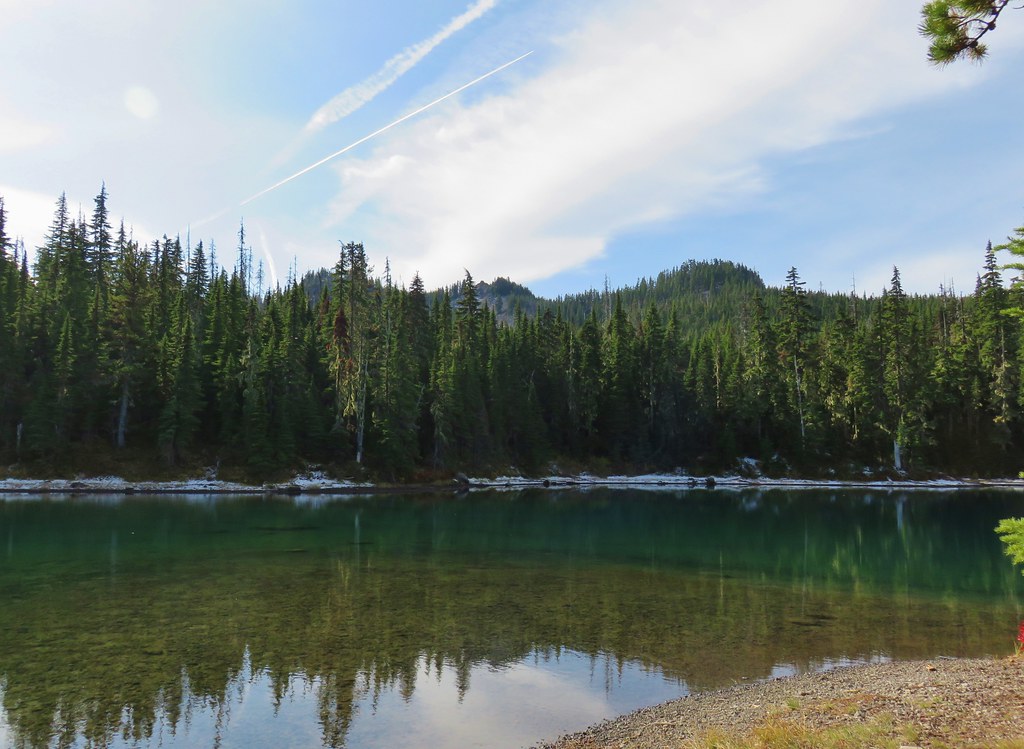 Twin Peaks from Gifford Lake.
Twin Peaks from Gifford Lake.



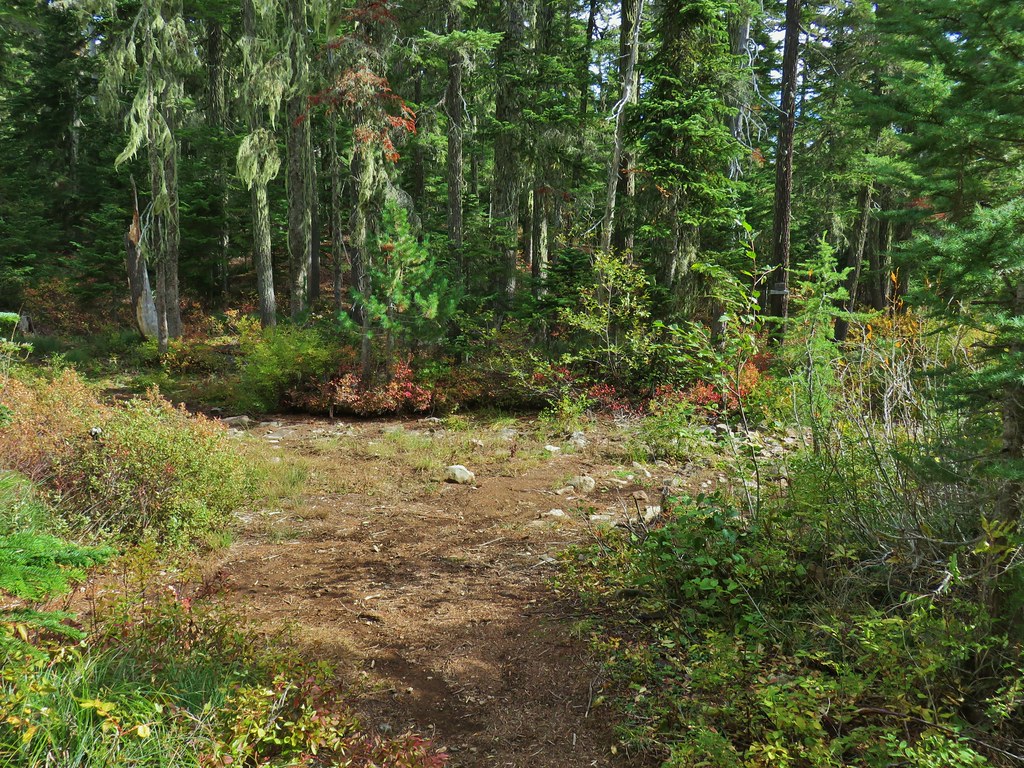
 Sign for the Fish Lake Trail.
Sign for the Fish Lake Trail. Lower Lake
Lower Lake Olallie Butte
Olallie Butte Sign for the Lodgepole Trail.
Sign for the Lodgepole Trail.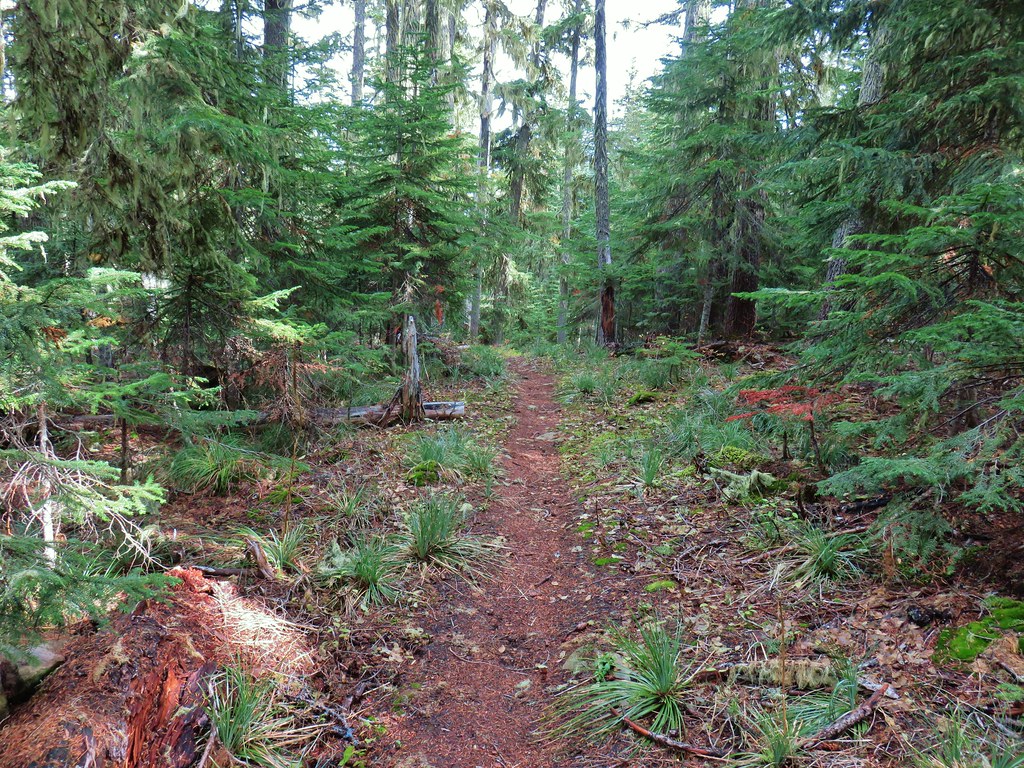
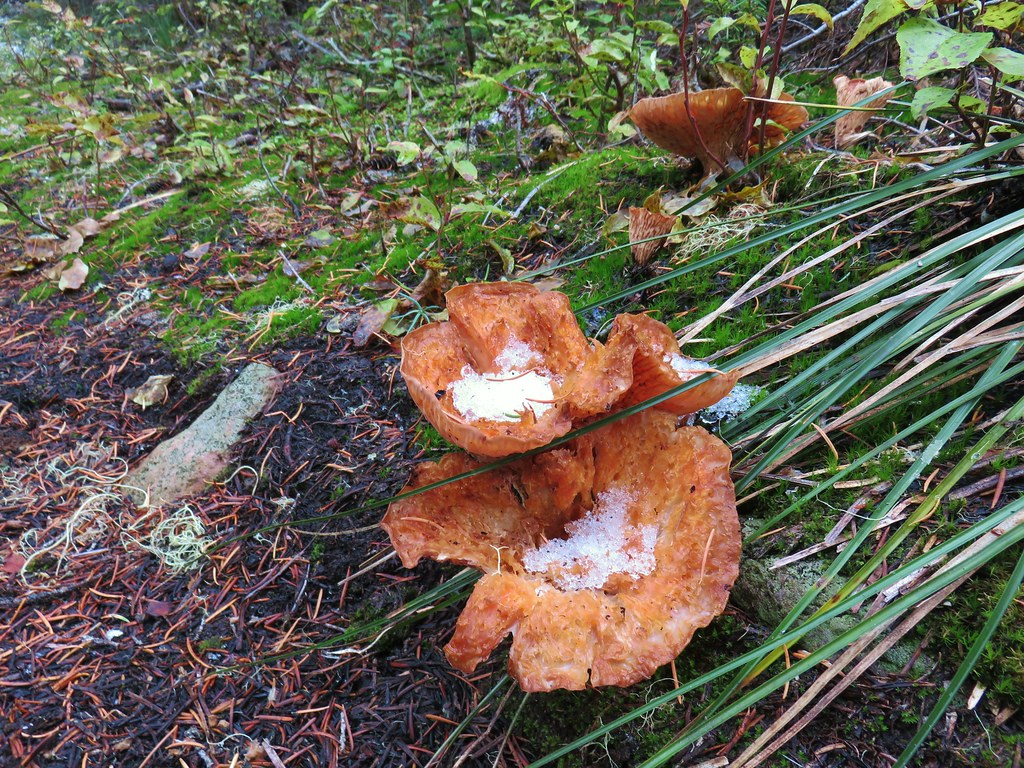
 Pinedrops
Pinedrops
 The trail was actually the fainter track to the left leading to the bridge, but that wasn’t obvious until we reached the trees.
The trail was actually the fainter track to the left leading to the bridge, but that wasn’t obvious until we reached the trees. A lone yarrow.
A lone yarrow.



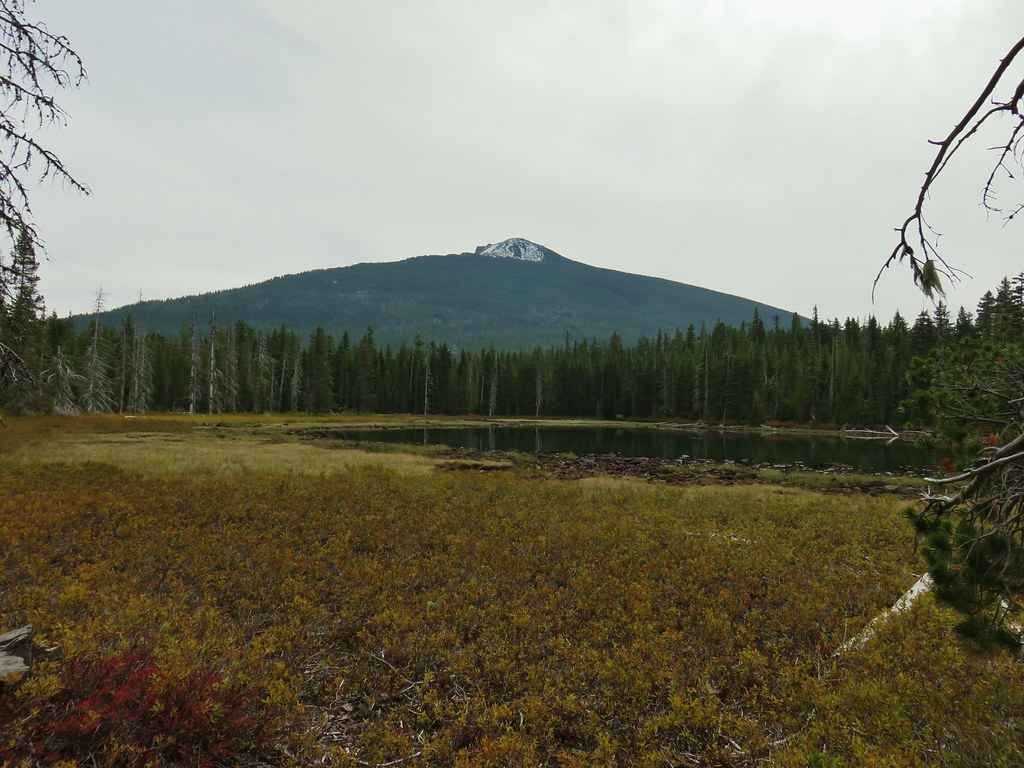
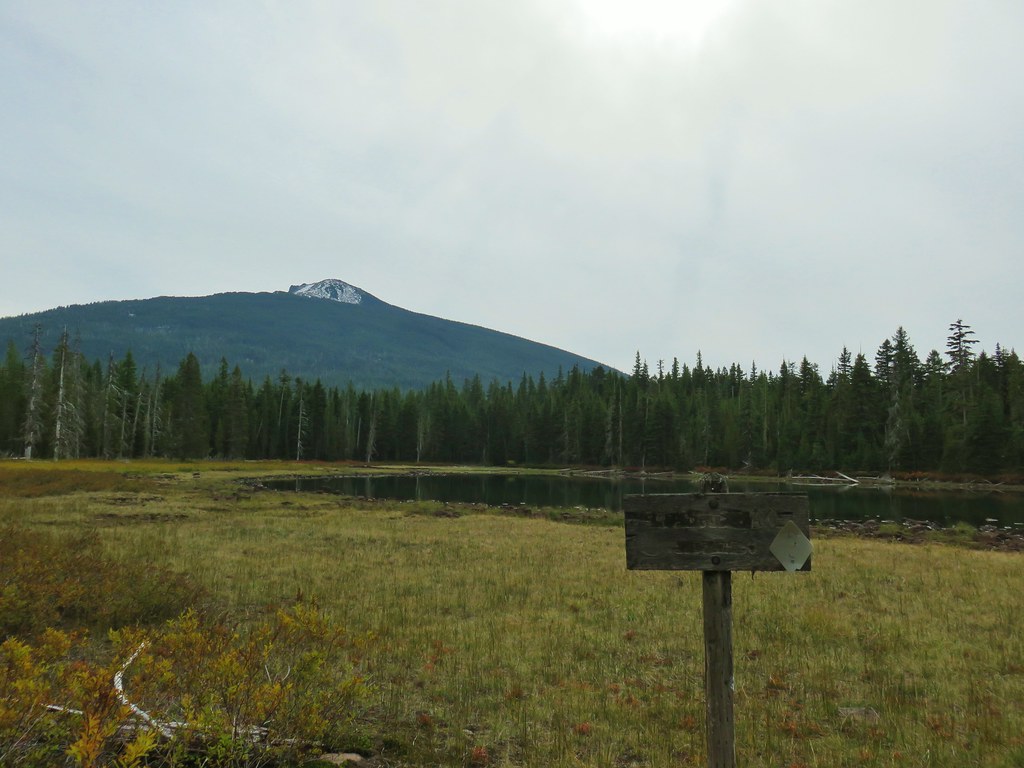
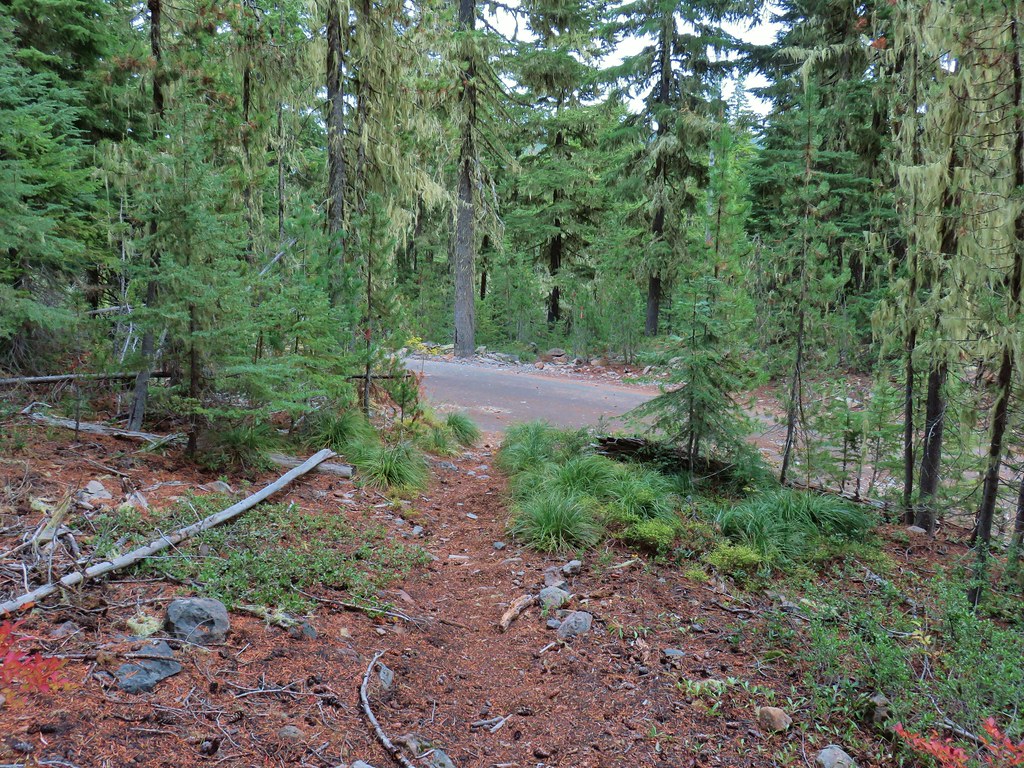
 Approaching the junction.
Approaching the junction.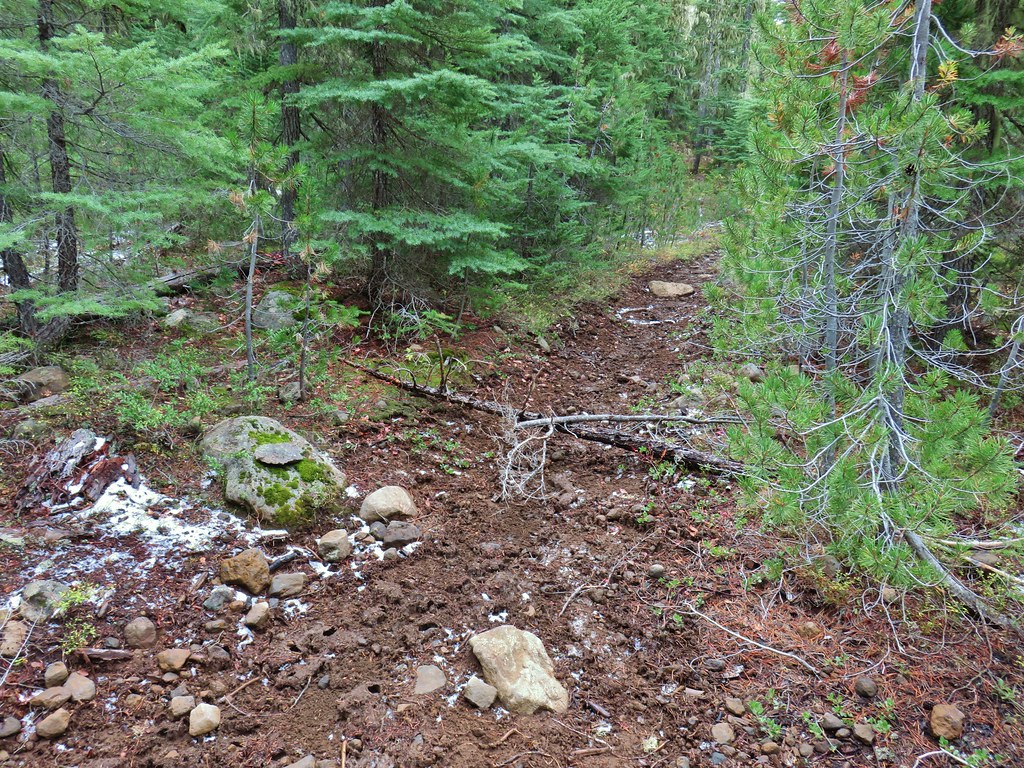 Quite the camouflage isn’t it?
Quite the camouflage isn’t it?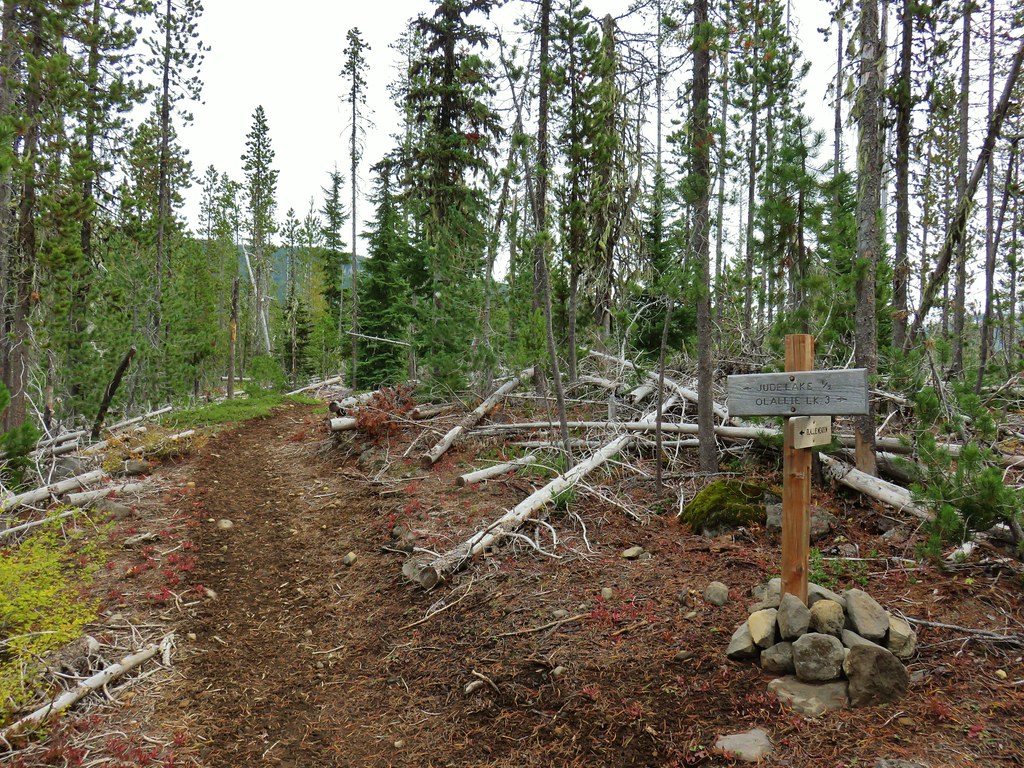

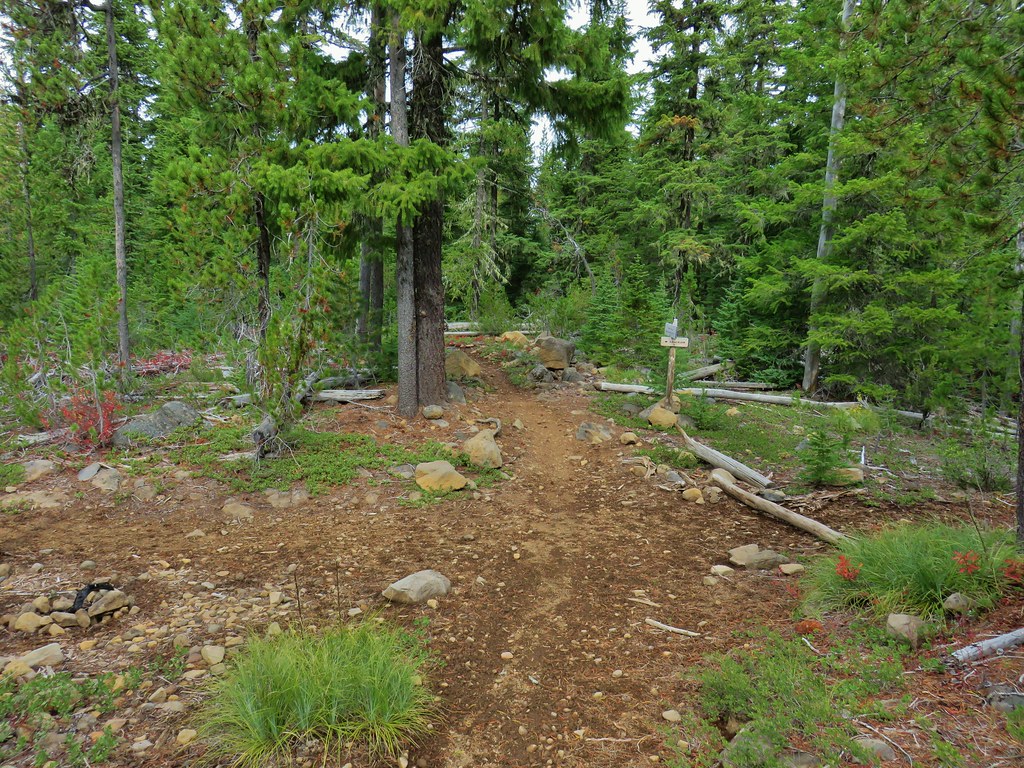
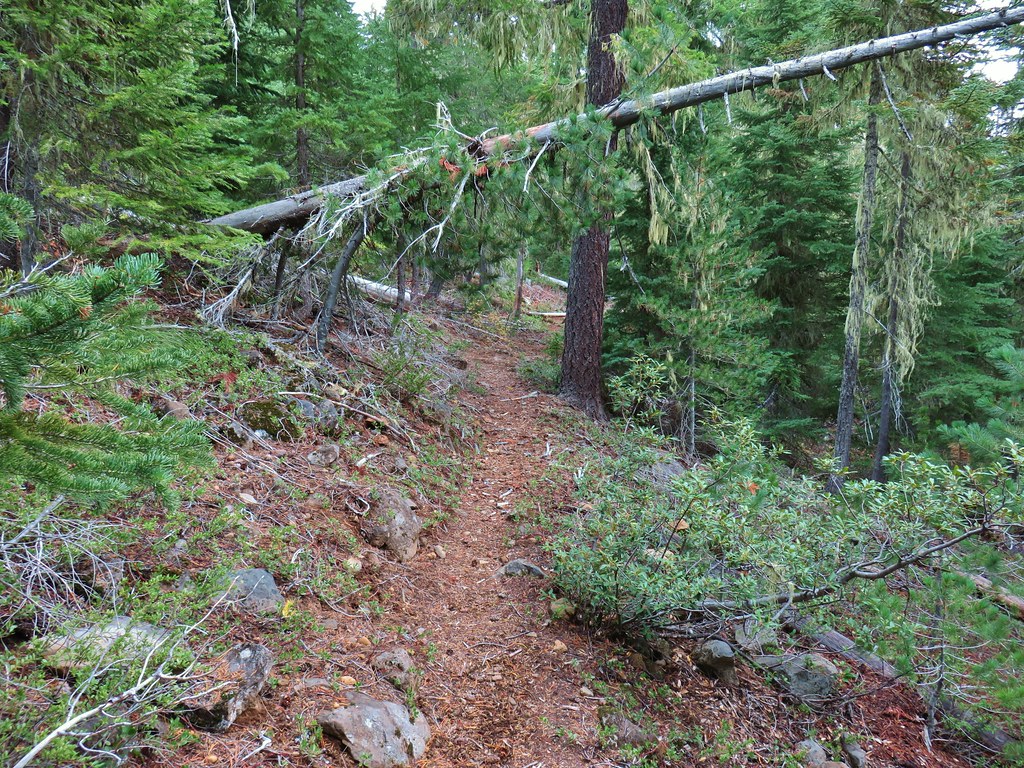
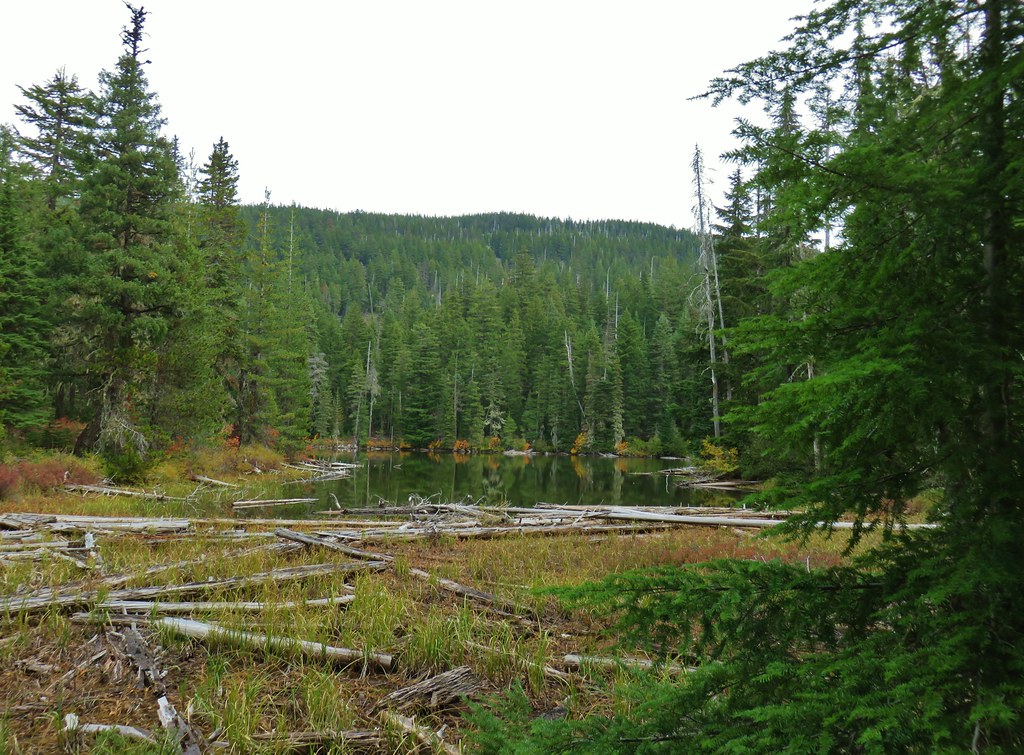 Jude Lake
Jude Lake Jude Lake
Jude Lake Jude Lake
Jude Lake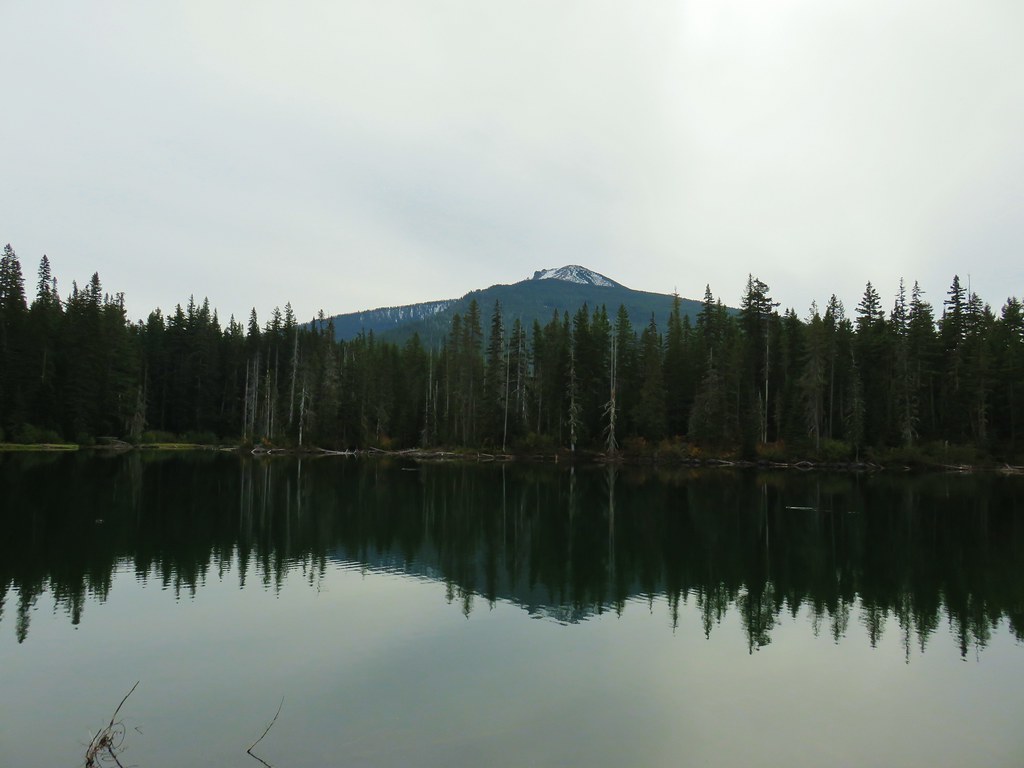 Russ Lake
Russ Lake
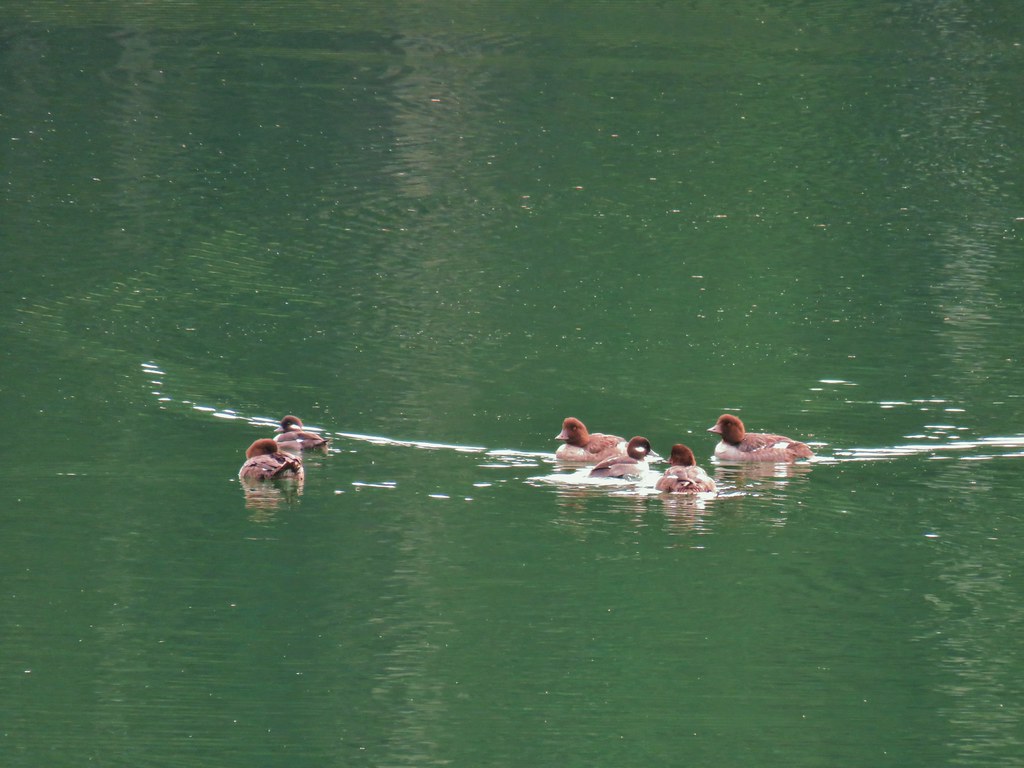

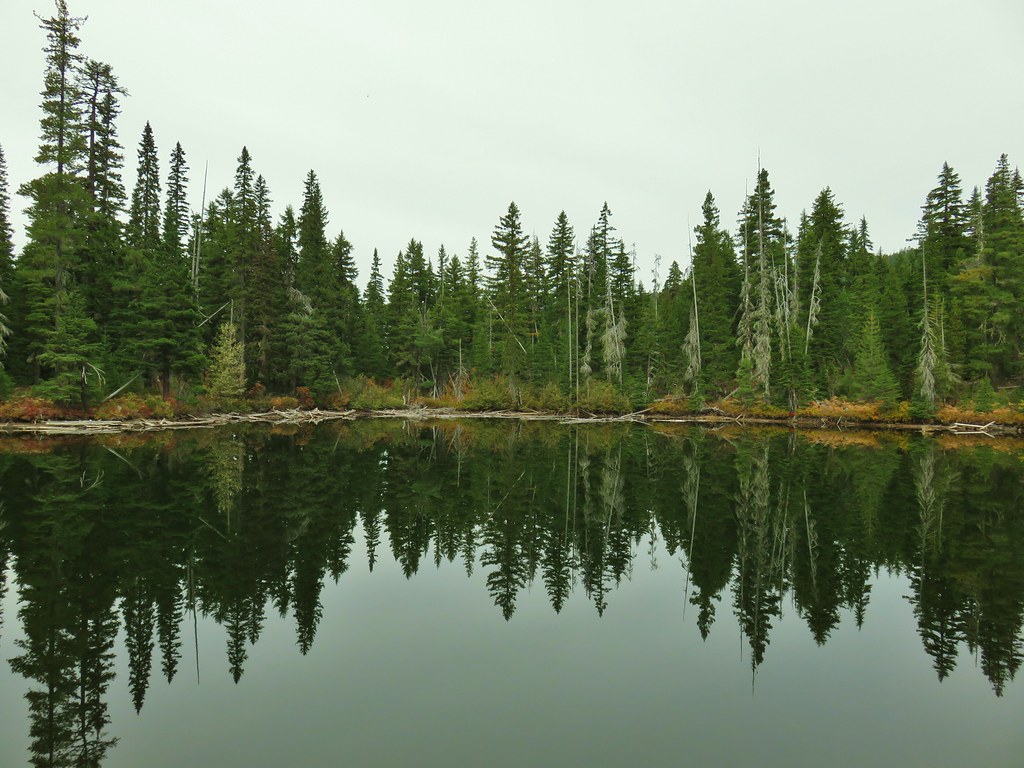
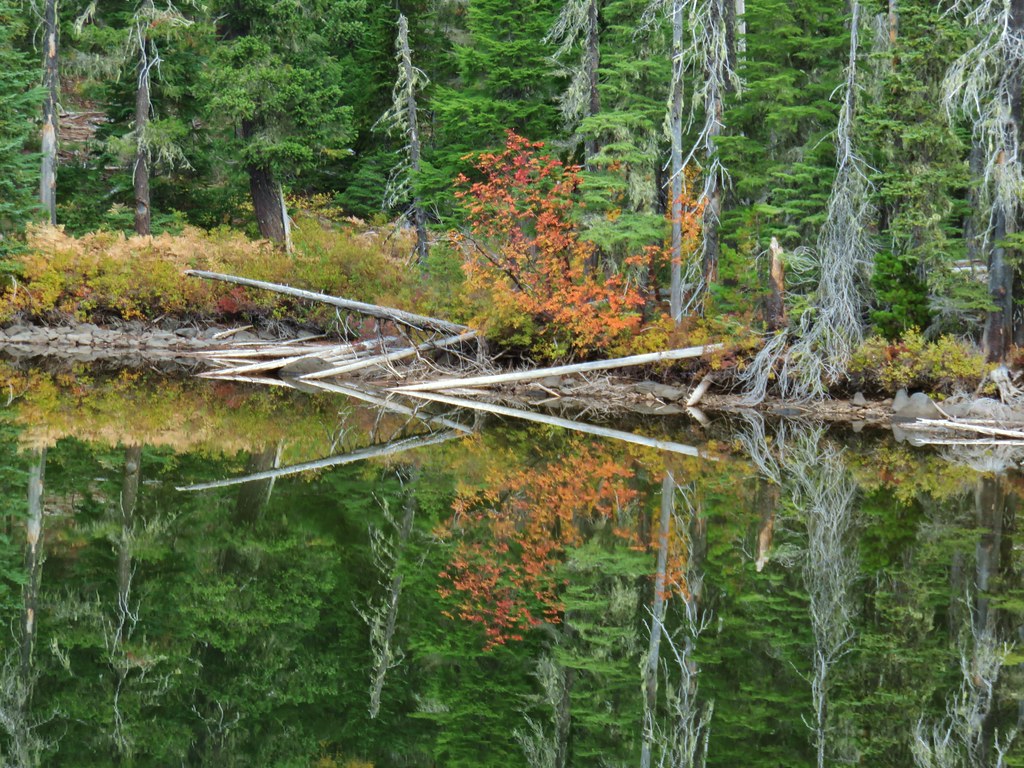


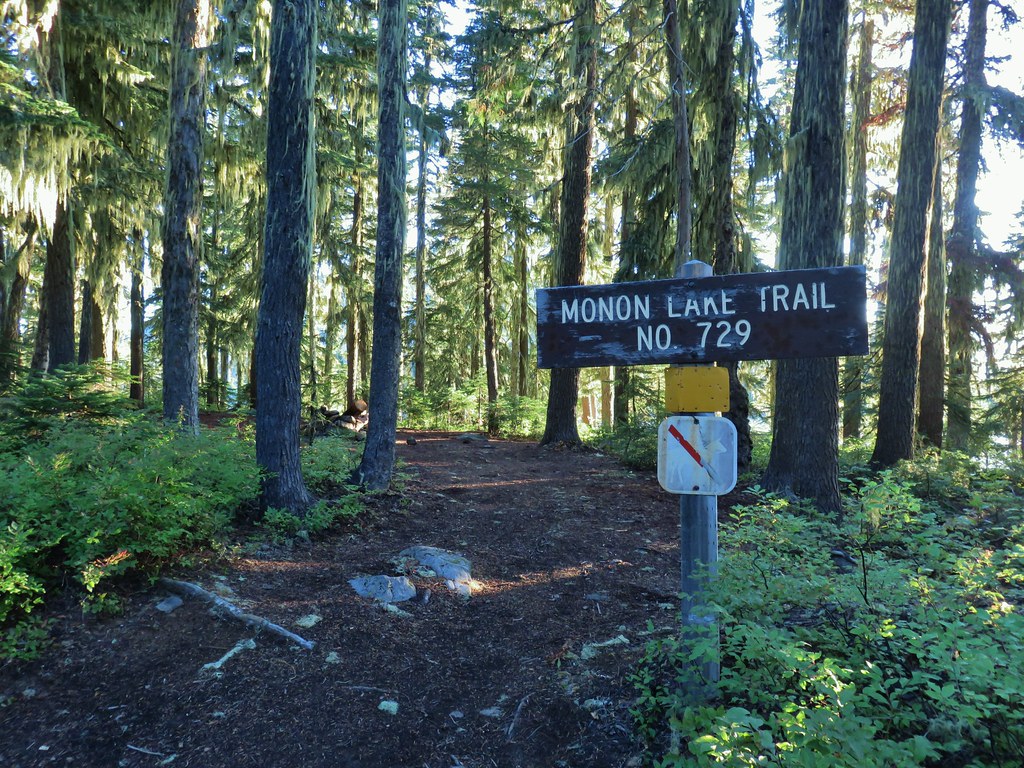

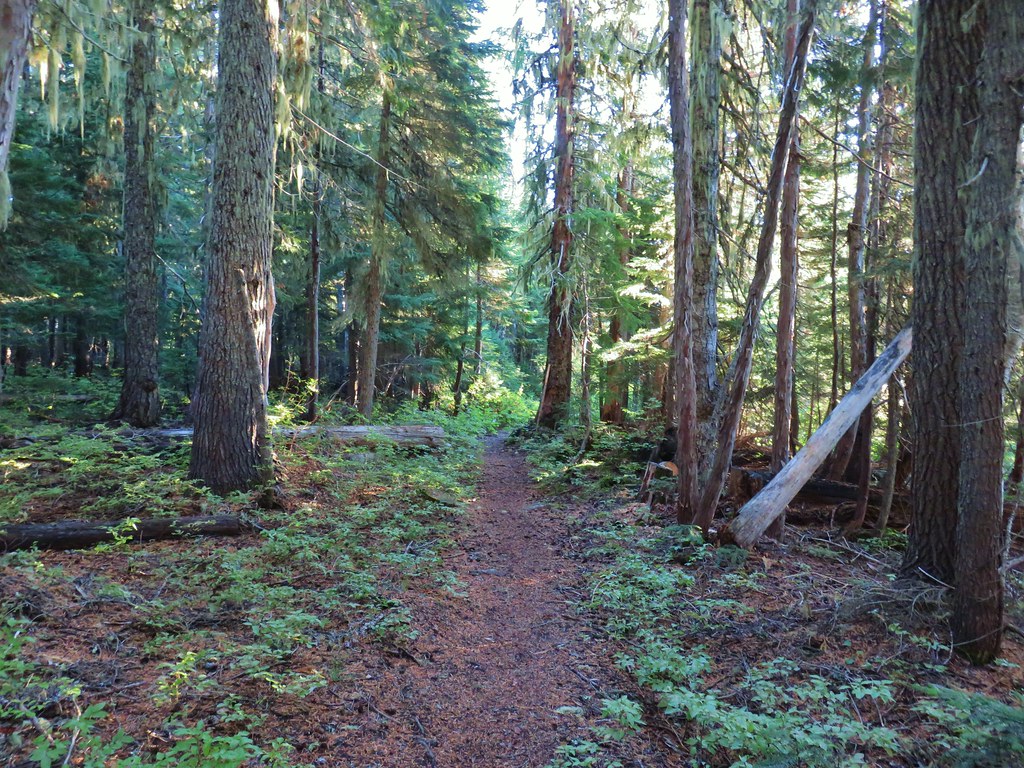
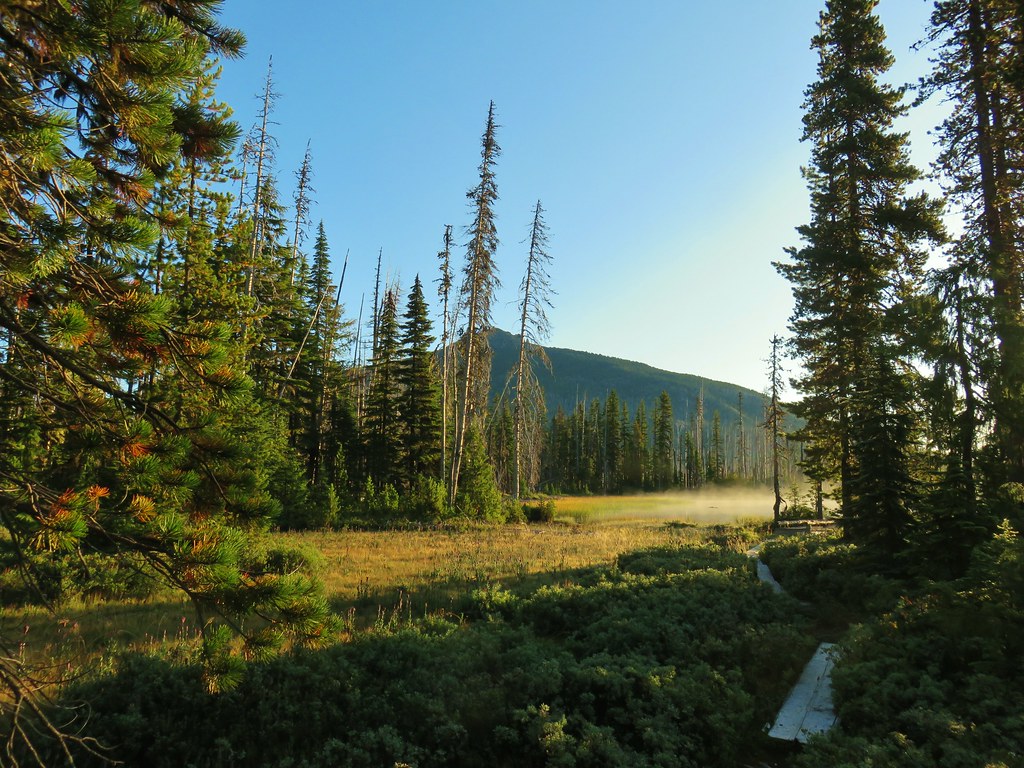
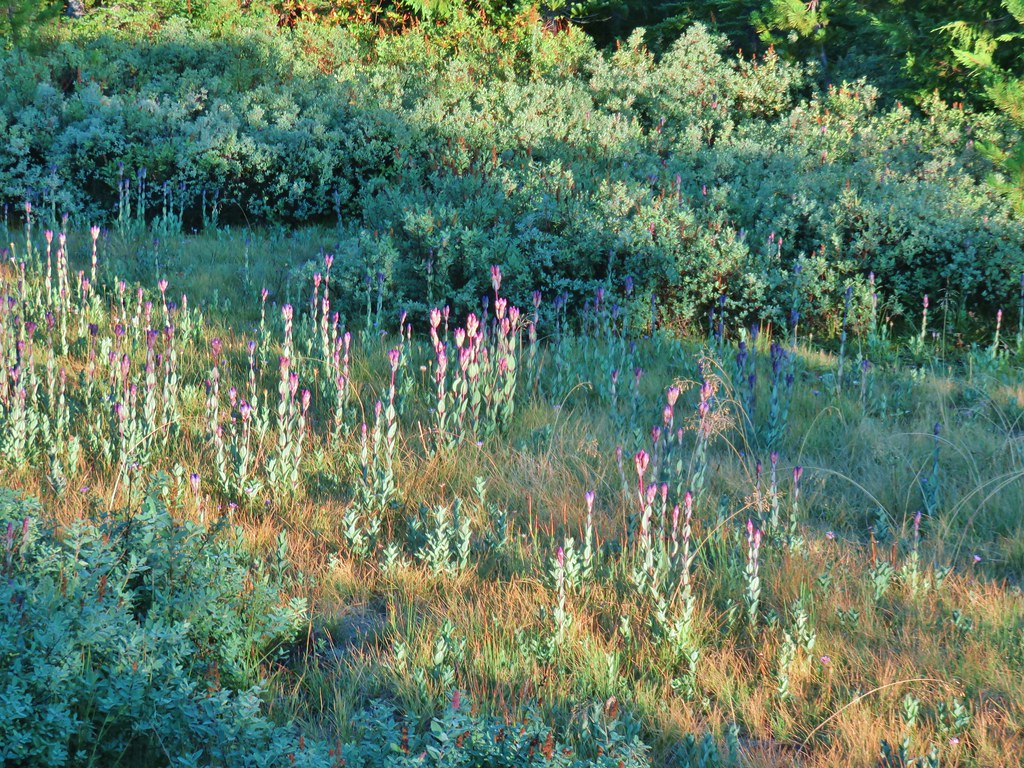 Fading gentians
Fading gentians A few gentians still holding their blue color.
A few gentians still holding their blue color. Olallie Butte and the unnamed lake.
Olallie Butte and the unnamed lake. The tip of Mt. Jefferson sticking up above the high point on the ridge.
The tip of Mt. Jefferson sticking up above the high point on the ridge.
 Dusting of new snow on Mt. Jefferson
Dusting of new snow on Mt. Jefferson Duck on the lake.
Duck on the lake.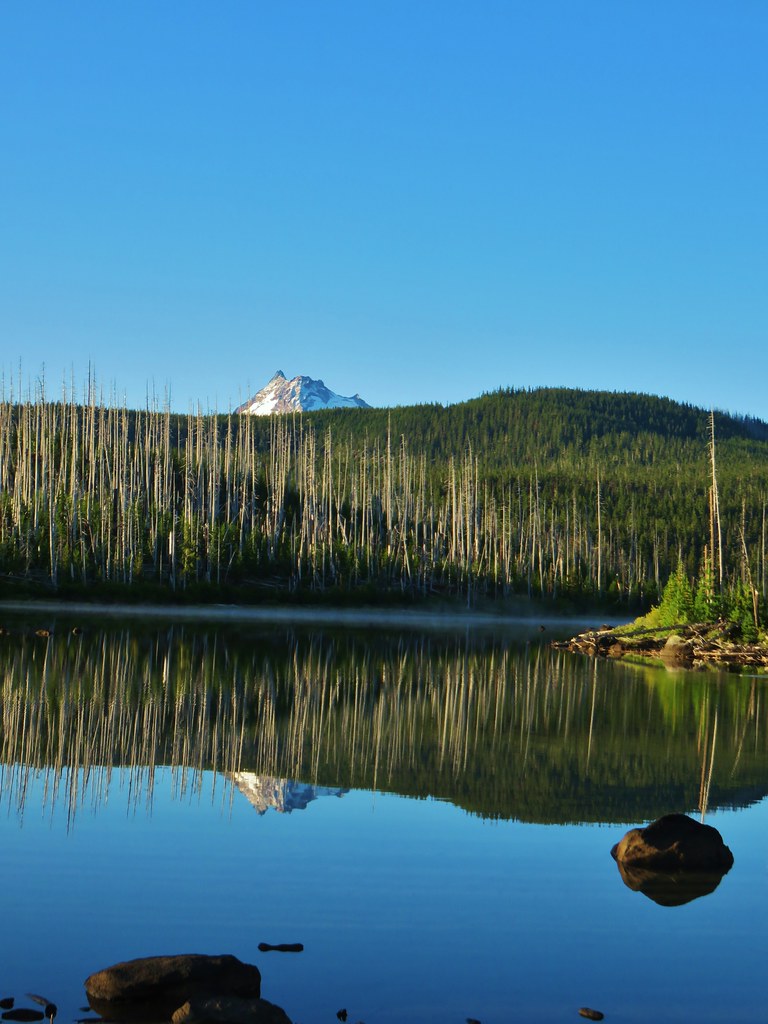 A little more of Mt. Jefferson showing.
A little more of Mt. Jefferson showing. View from atop the rocks.
View from atop the rocks. The small rock cairn coming from the opposite direction on the Monon Lake Trail later in the day.
The small rock cairn coming from the opposite direction on the Monon Lake Trail later in the day.
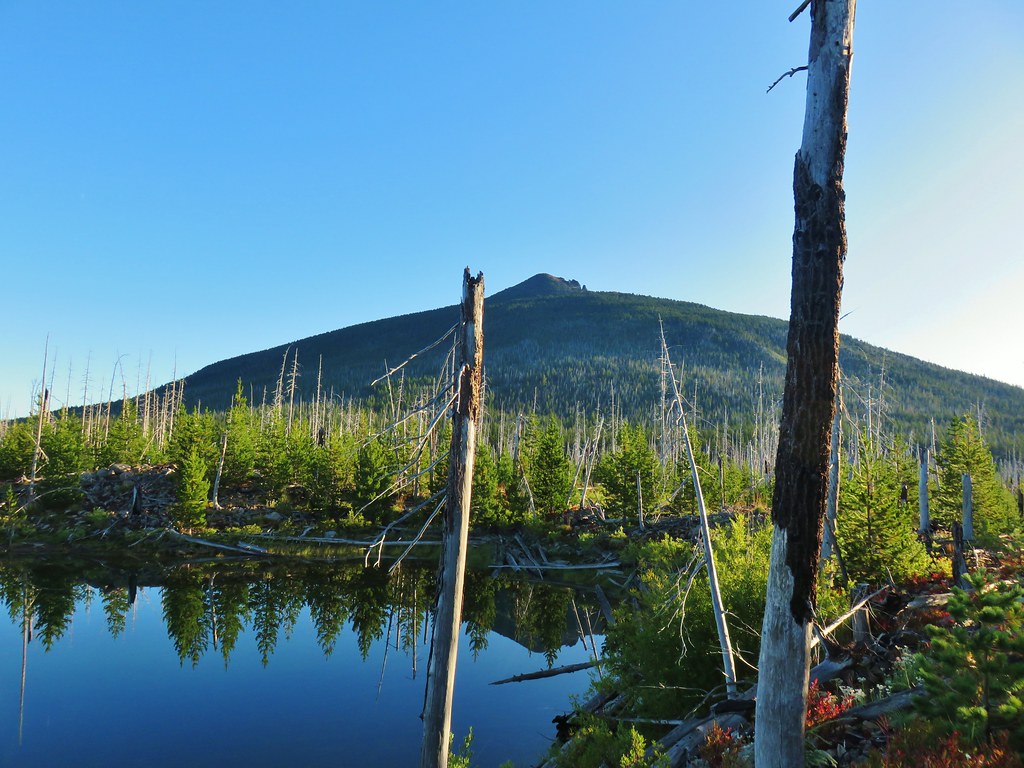

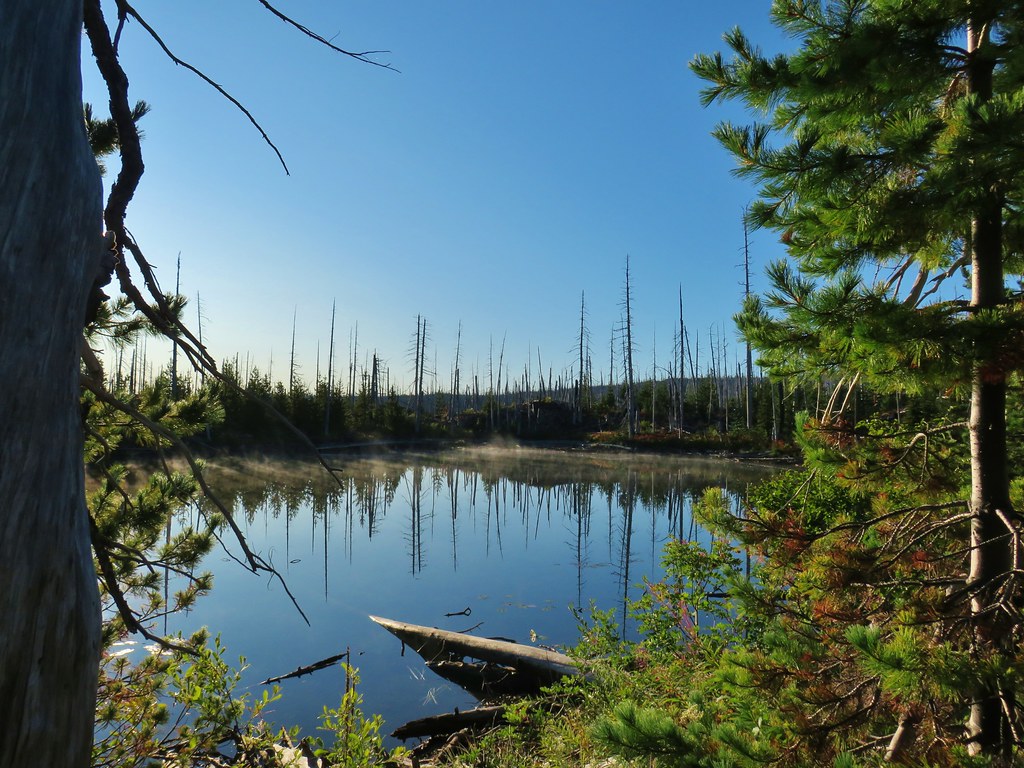
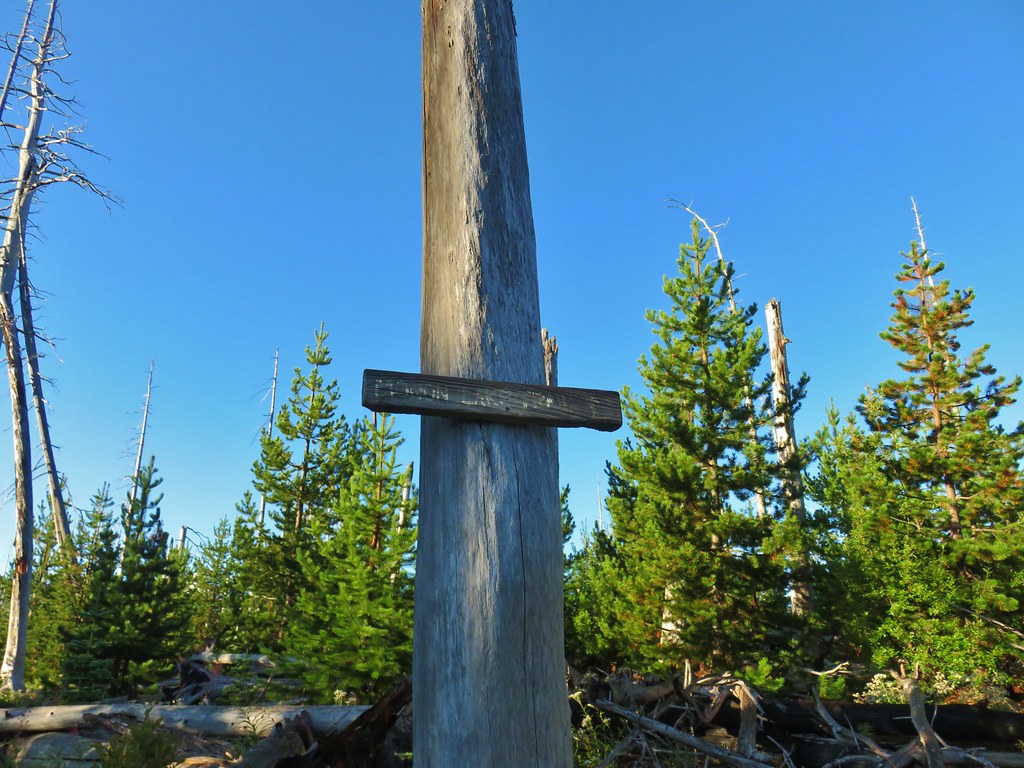
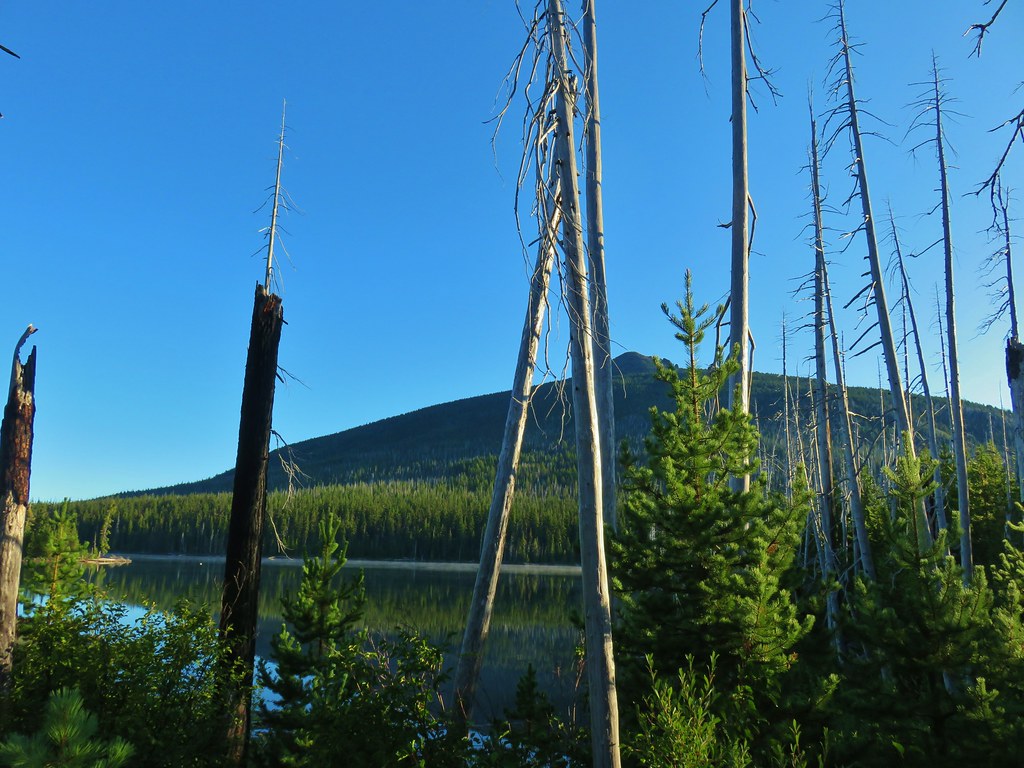
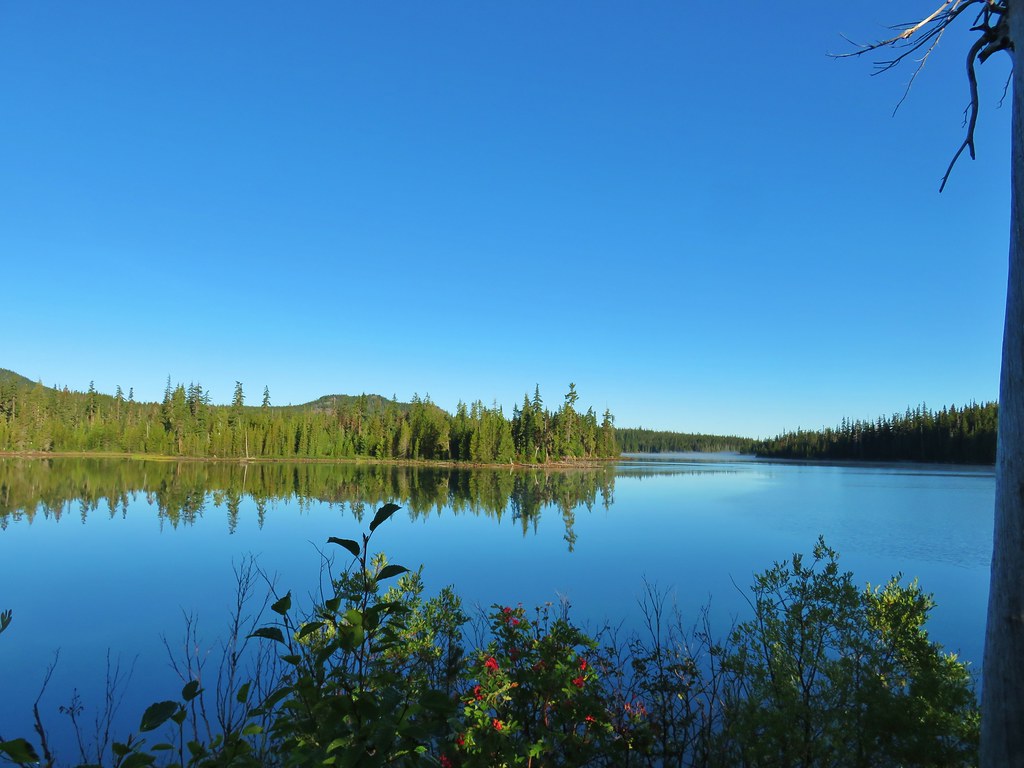

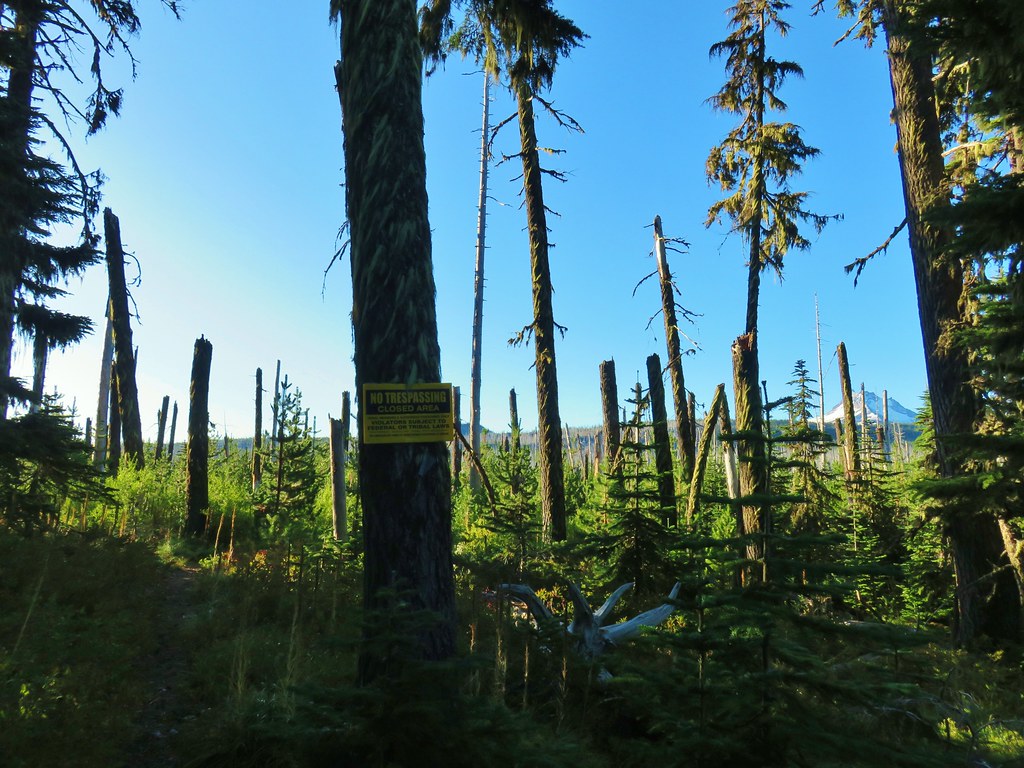

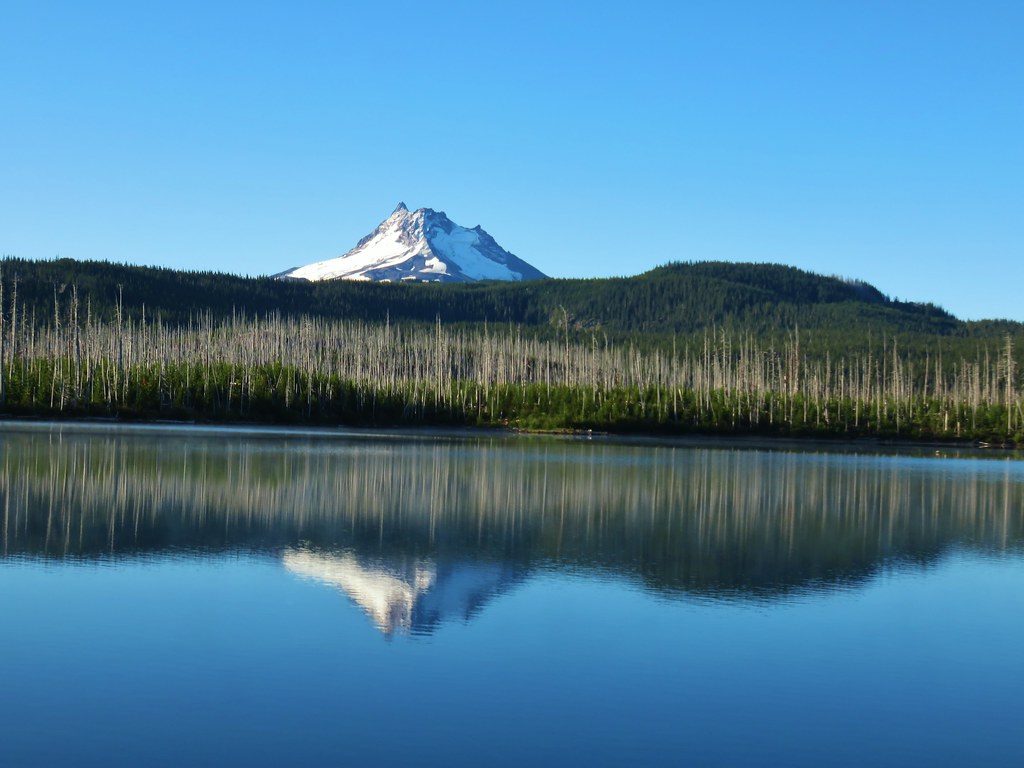
 Mergansers
Mergansers
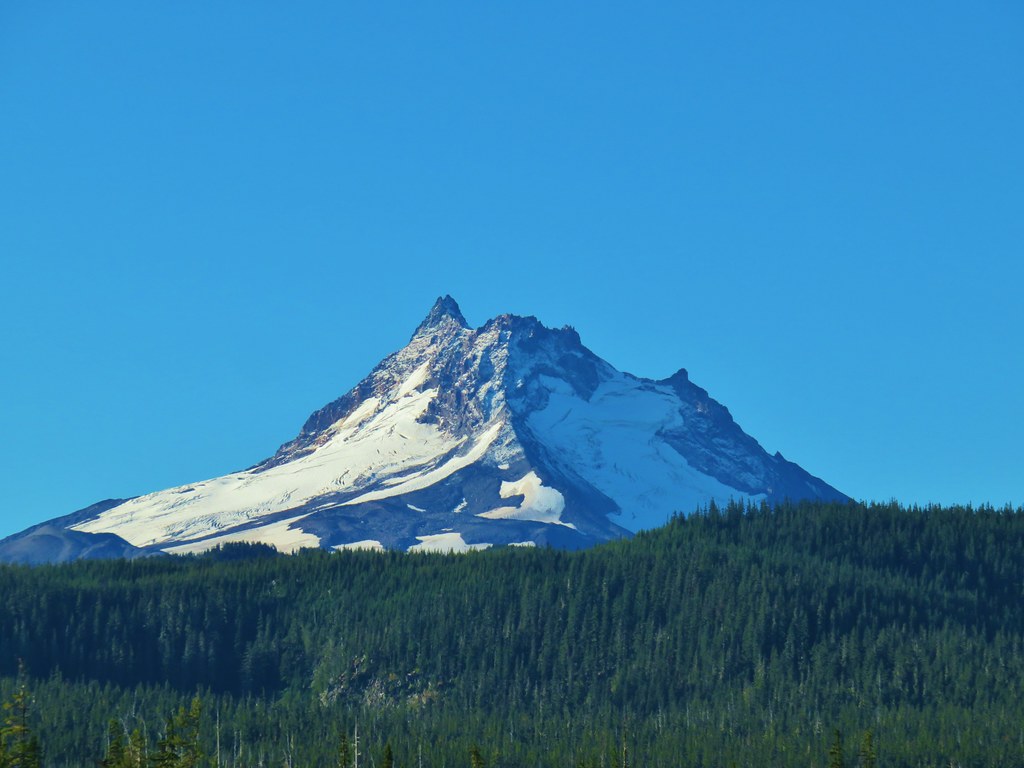



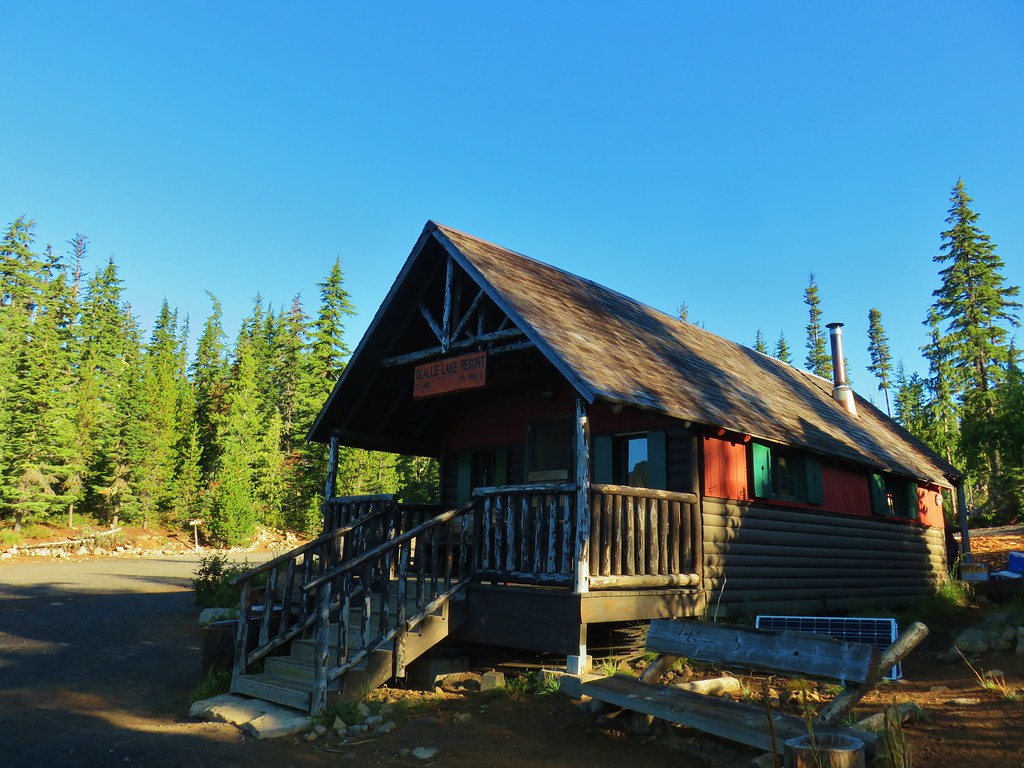


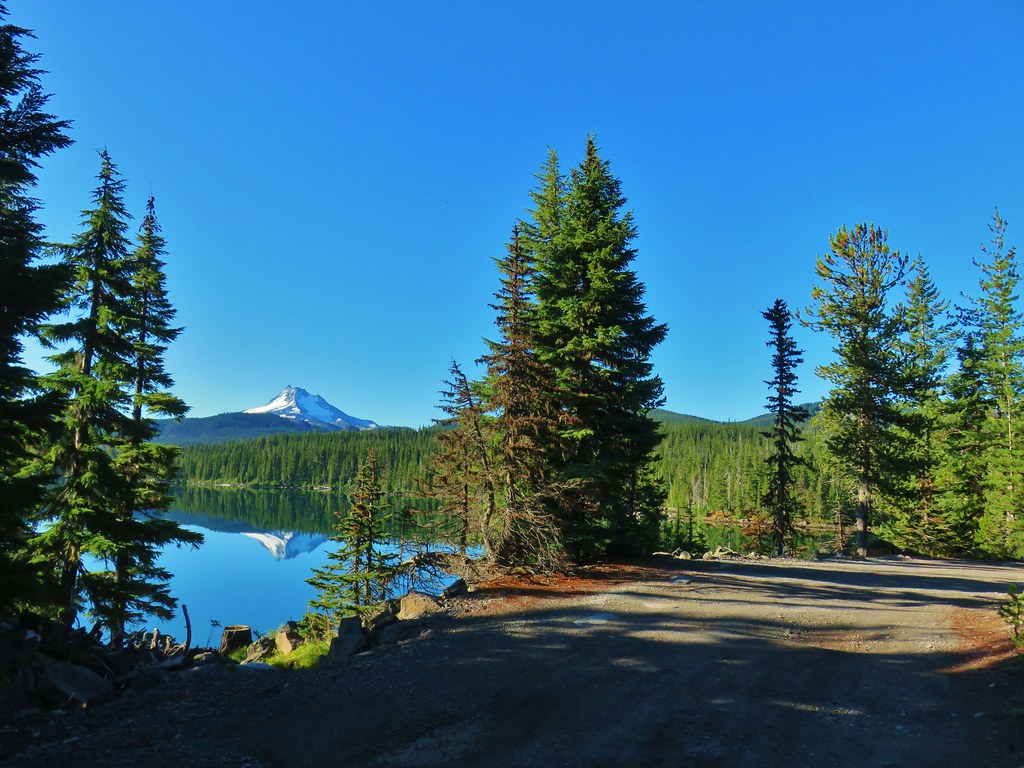
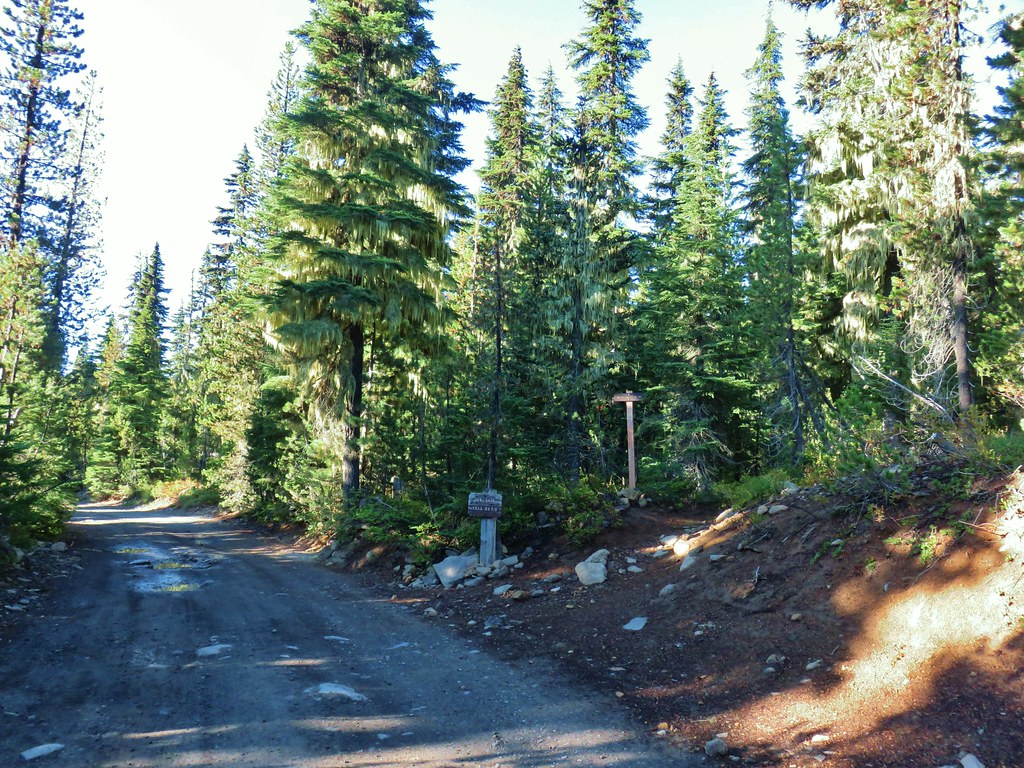

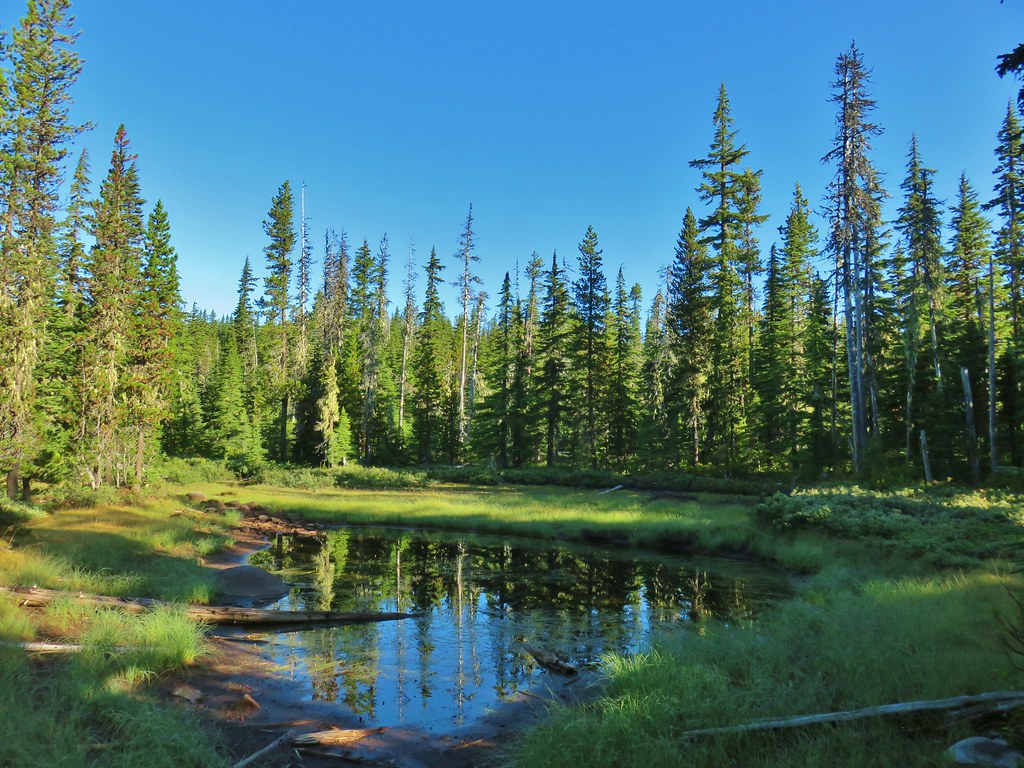
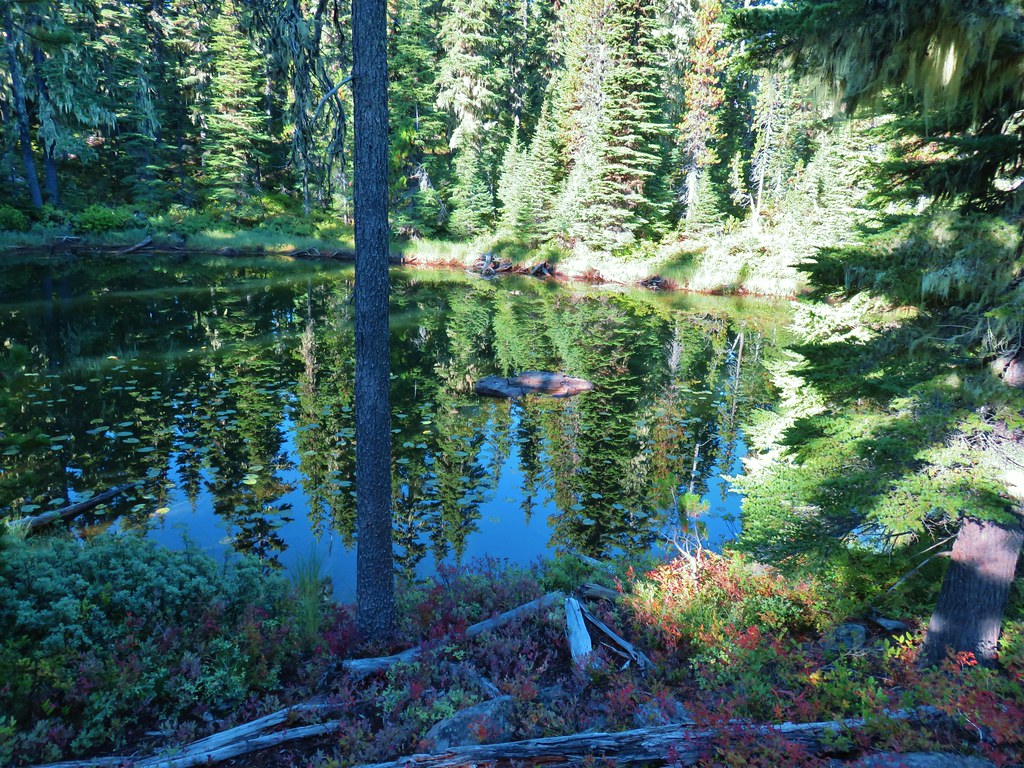

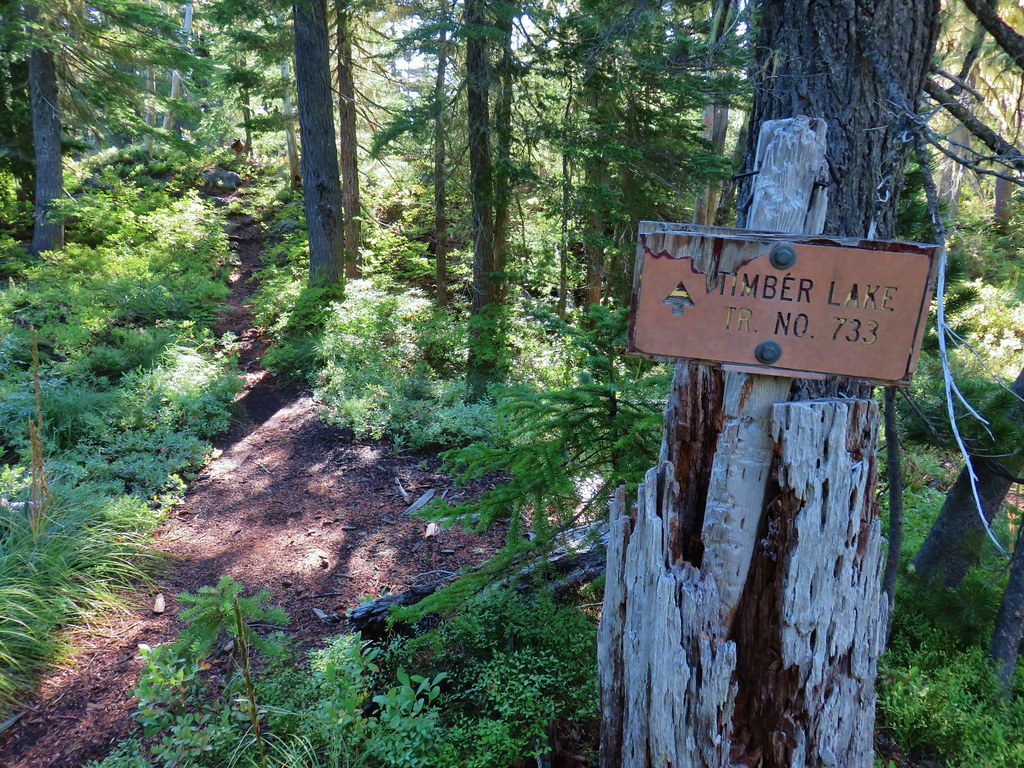
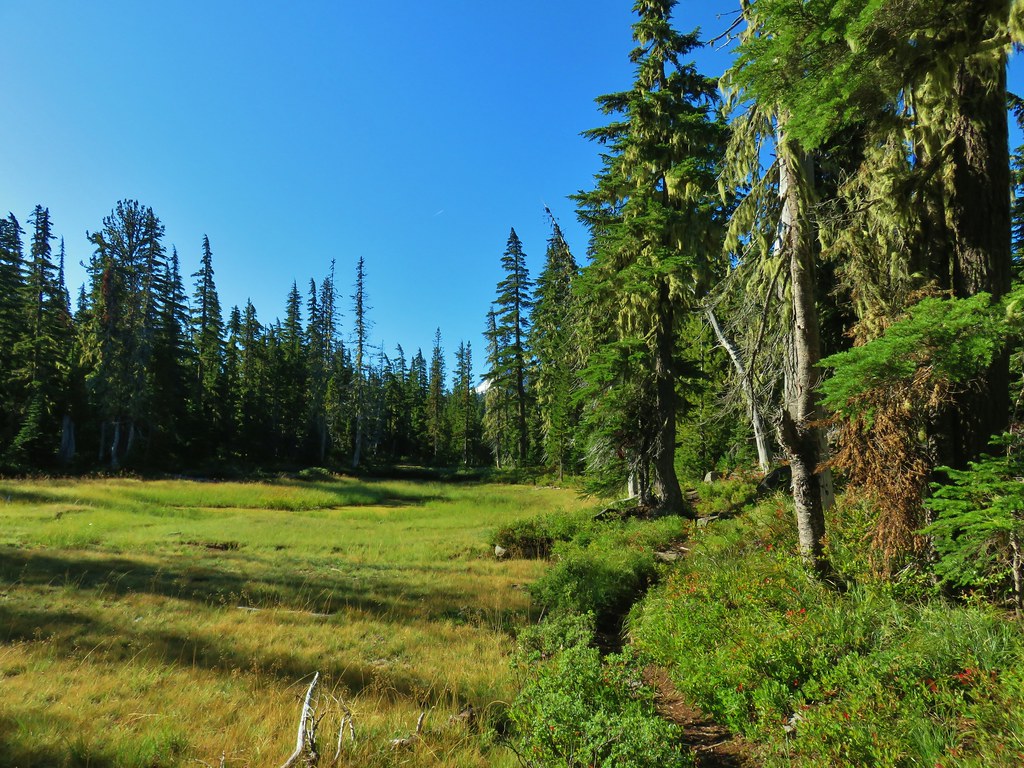

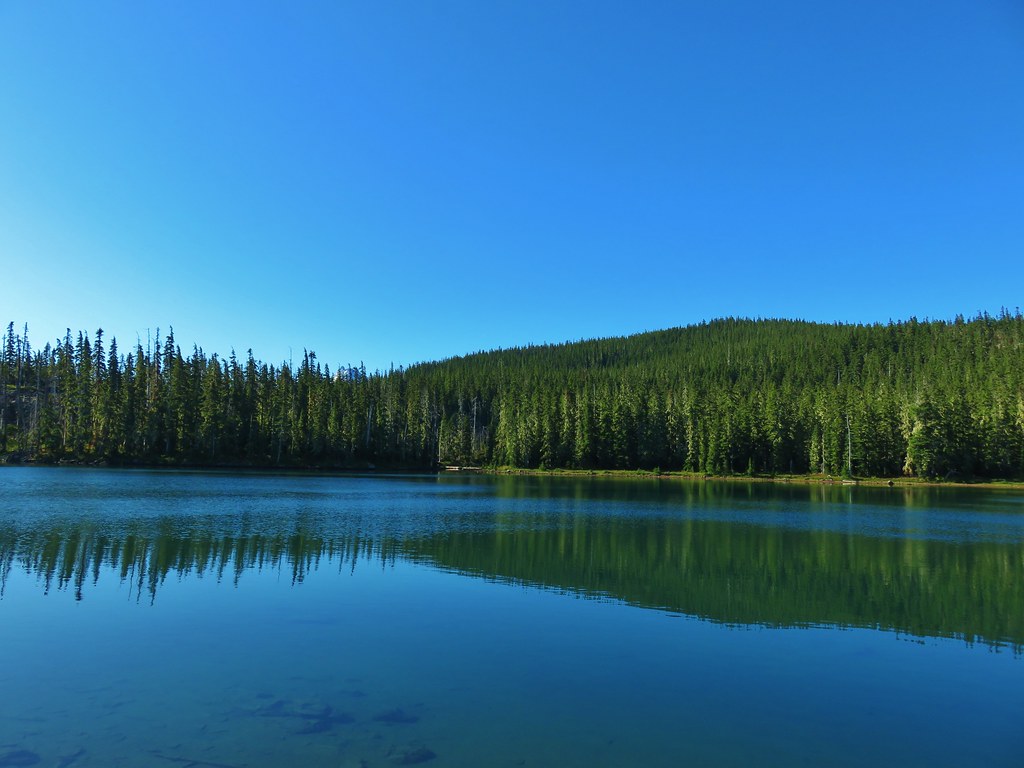


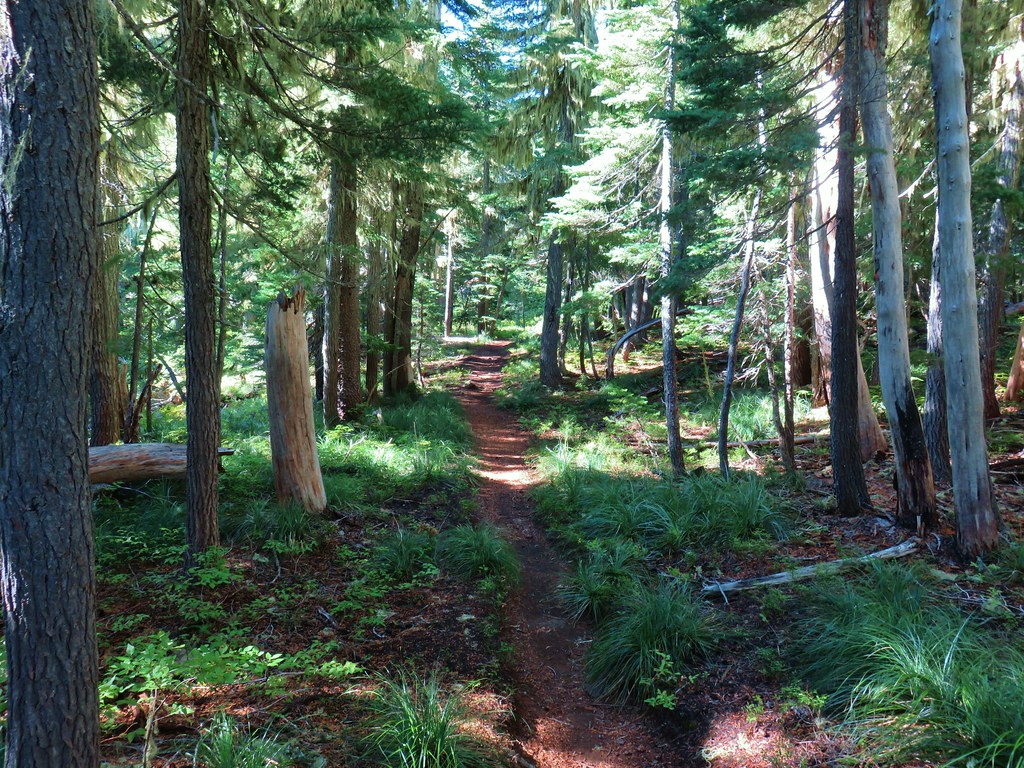
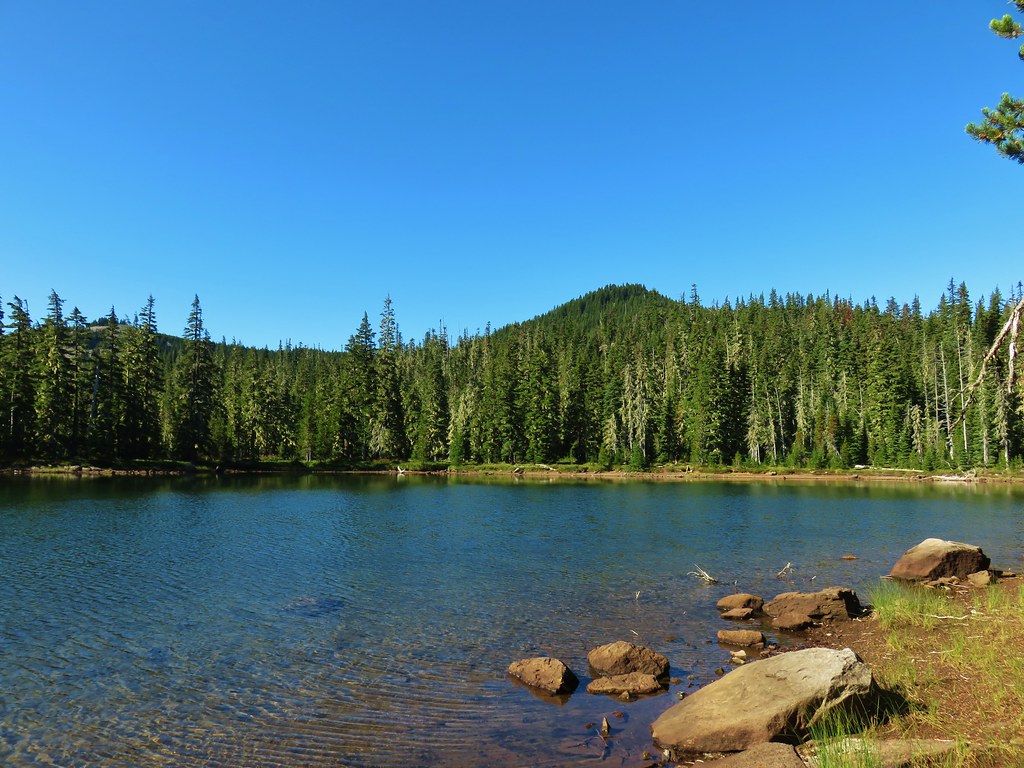
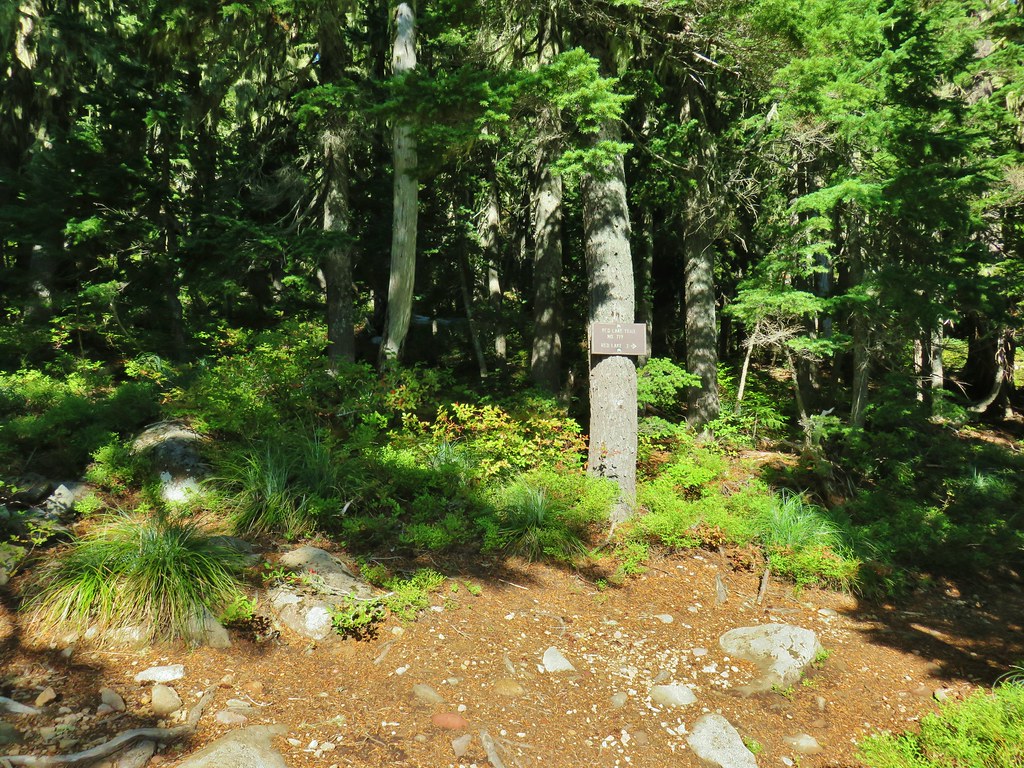
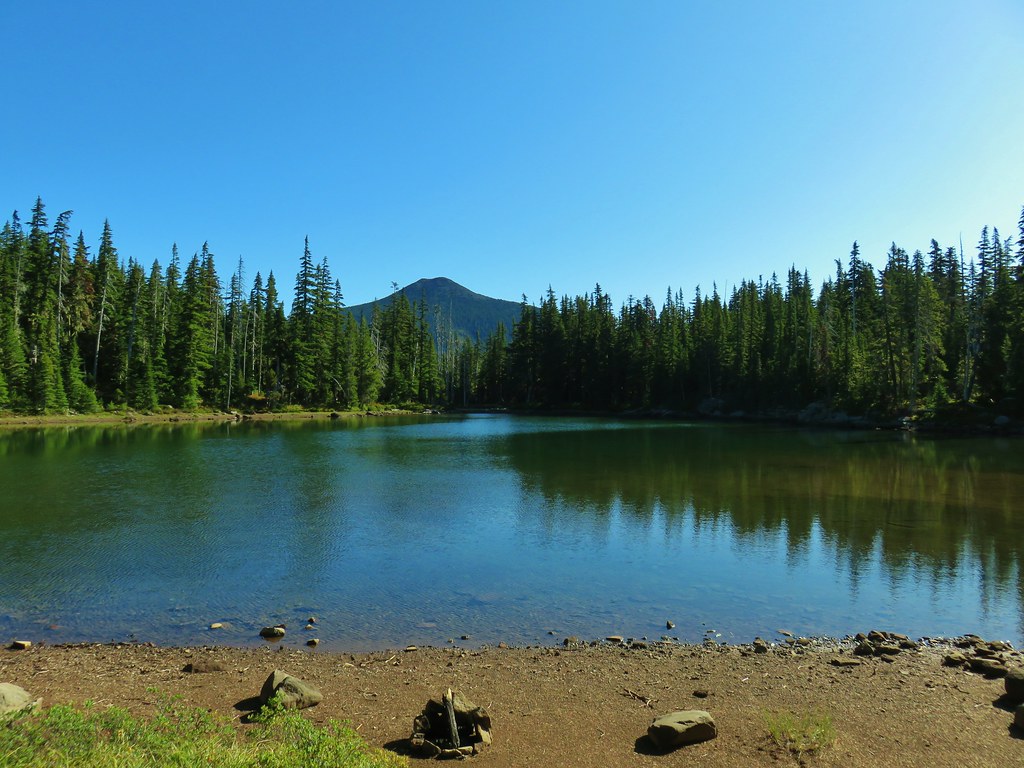
 Rock cairn along the PCT marking the connector trail.
Rock cairn along the PCT marking the connector trail.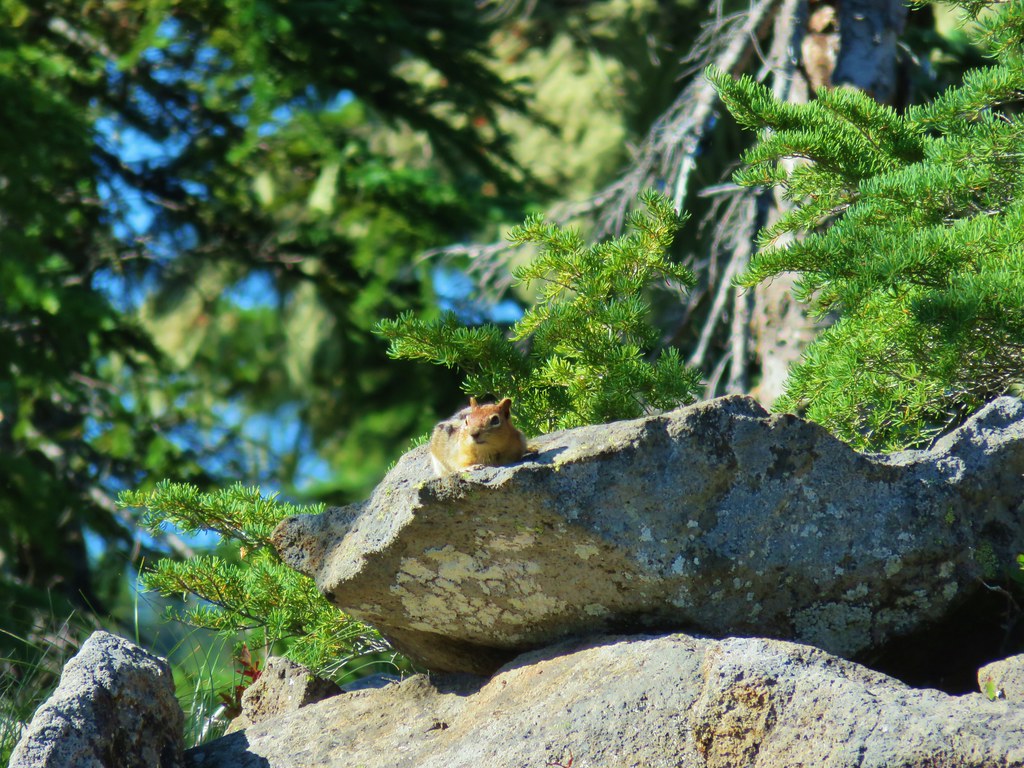 PCT lookout.
PCT lookout.
 Golden-mantled ground squirrels at Cigar Lake.
Golden-mantled ground squirrels at Cigar Lake.
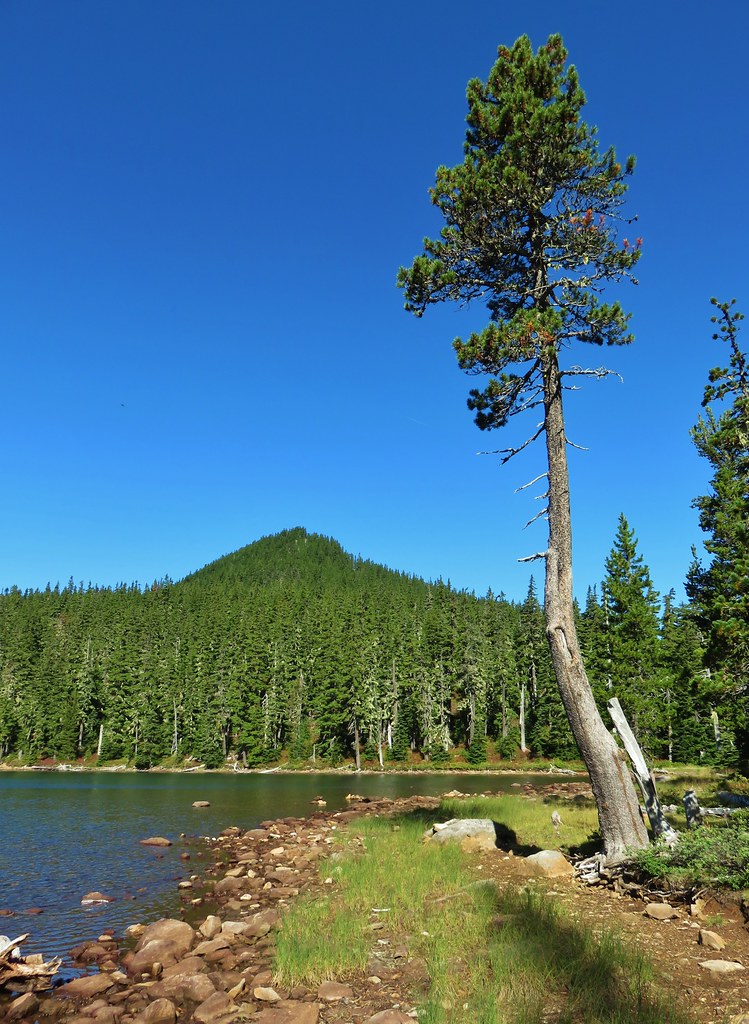 Double Peaks from Upper Lake
Double Peaks from Upper Lake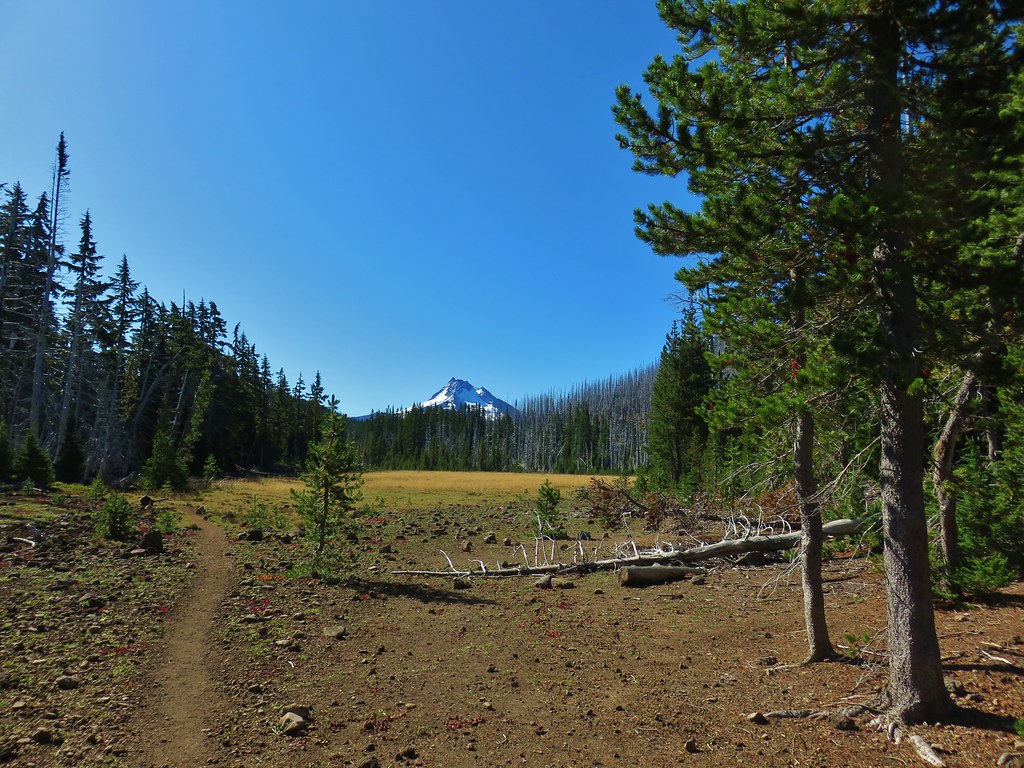
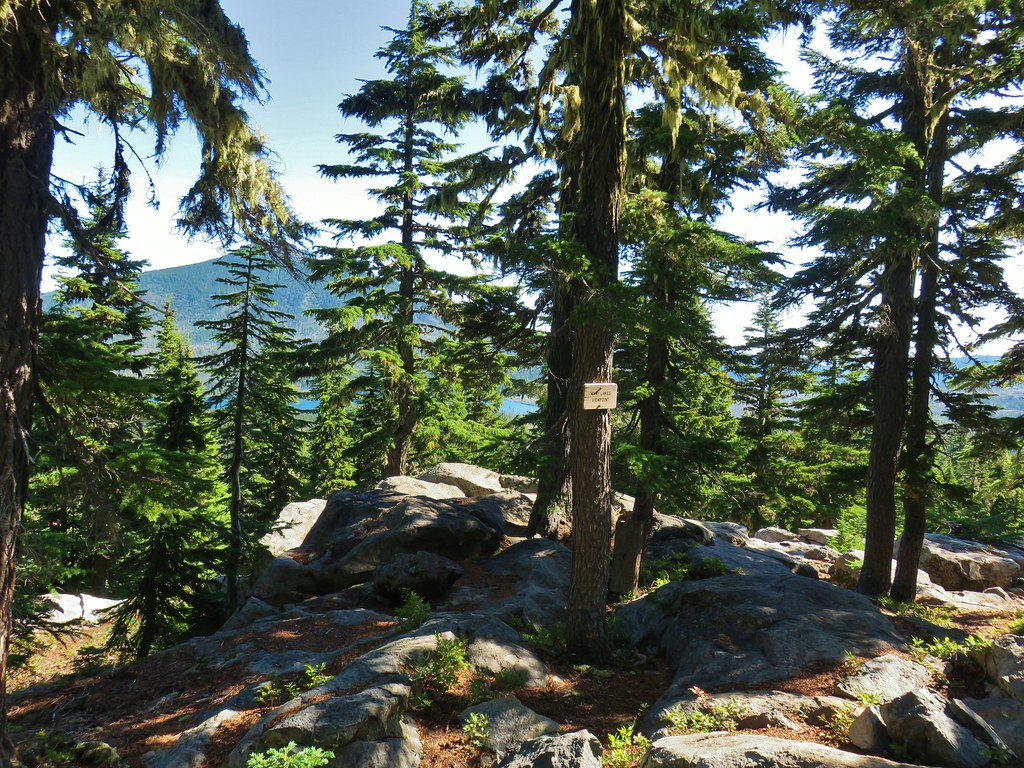
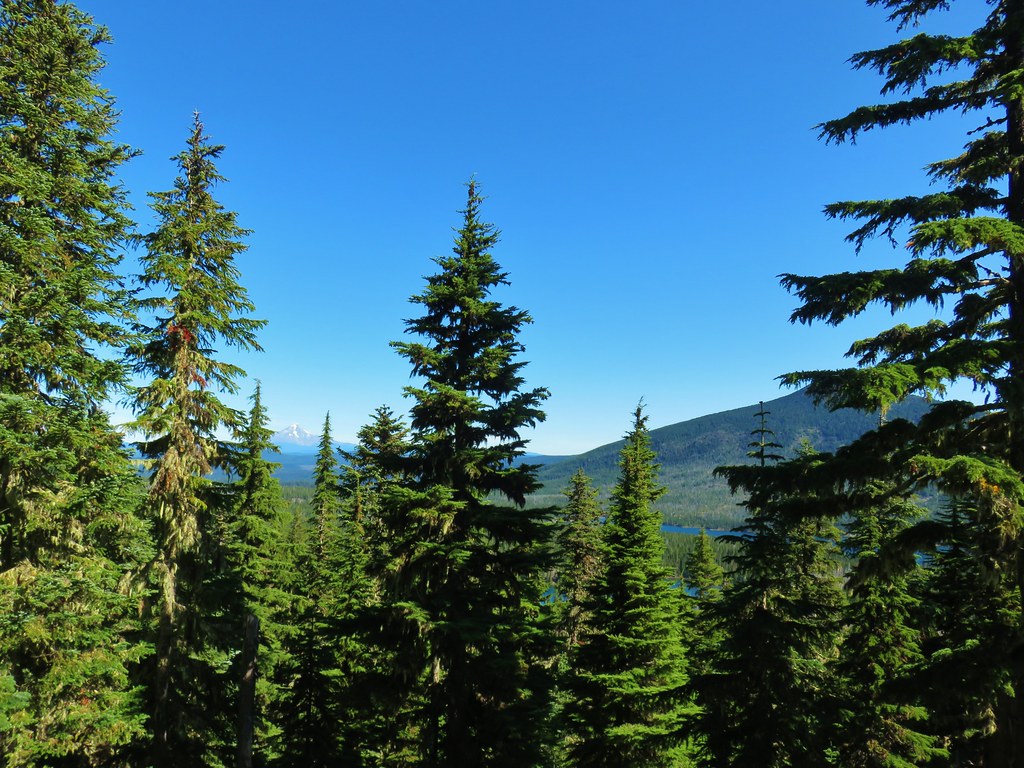

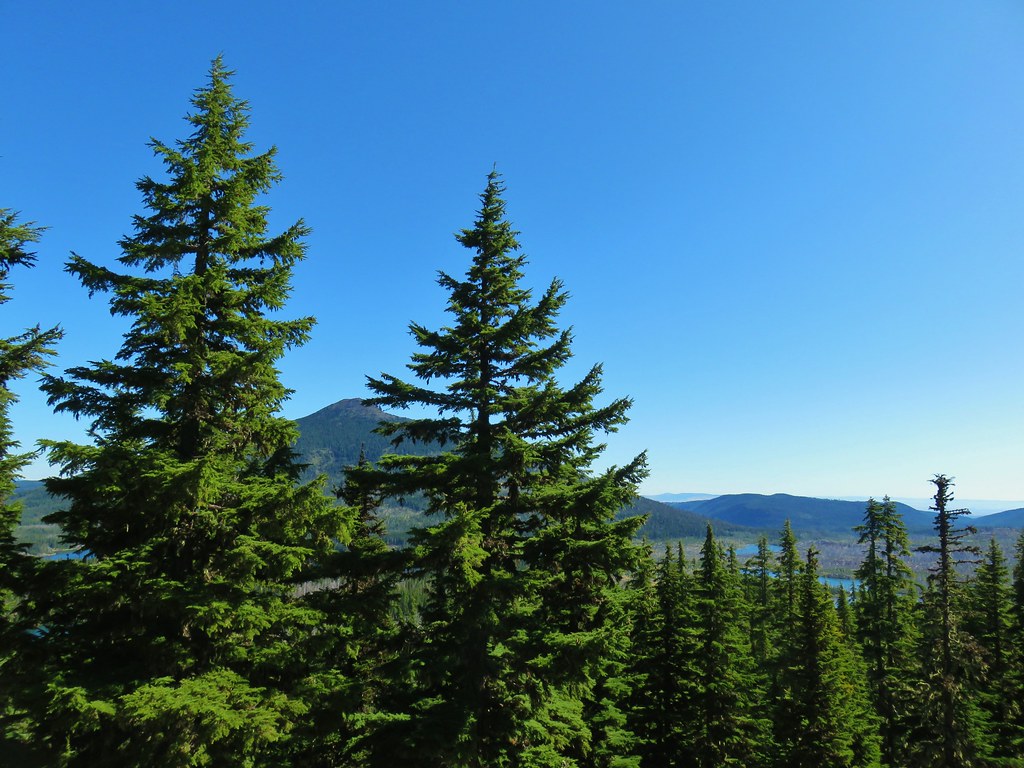
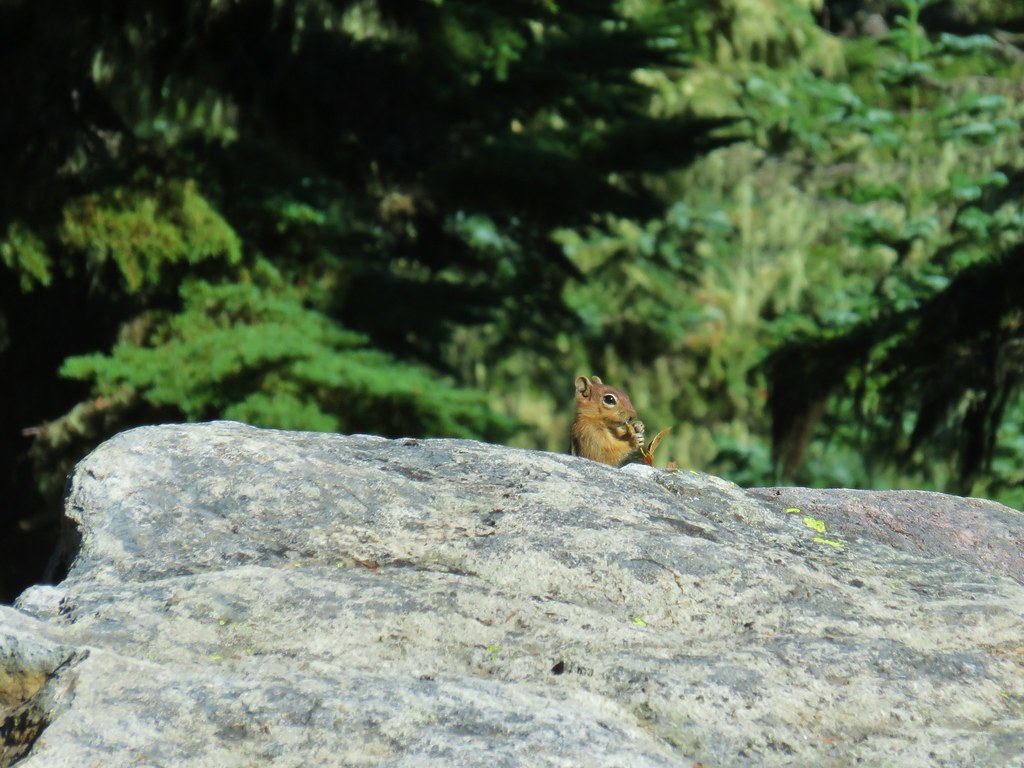 Company at the viewpoint.
Company at the viewpoint.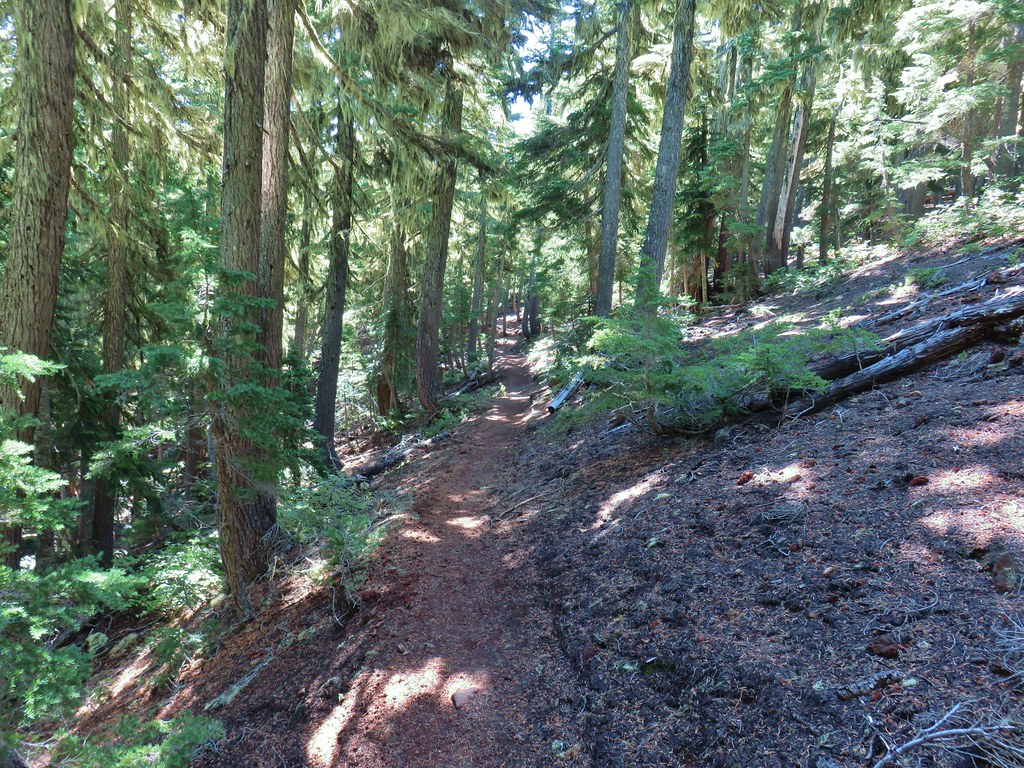 Approximate location when we heard the “elk” bugle.
Approximate location when we heard the “elk” bugle.



 Flat topped Battle Ax Mountain to the left to the fire scarred summit of Schreiner Peak to the right.
Flat topped Battle Ax Mountain to the left to the fire scarred summit of Schreiner Peak to the right. Battle Ax (
Battle Ax ( Bull of the Woods (
Bull of the Woods (


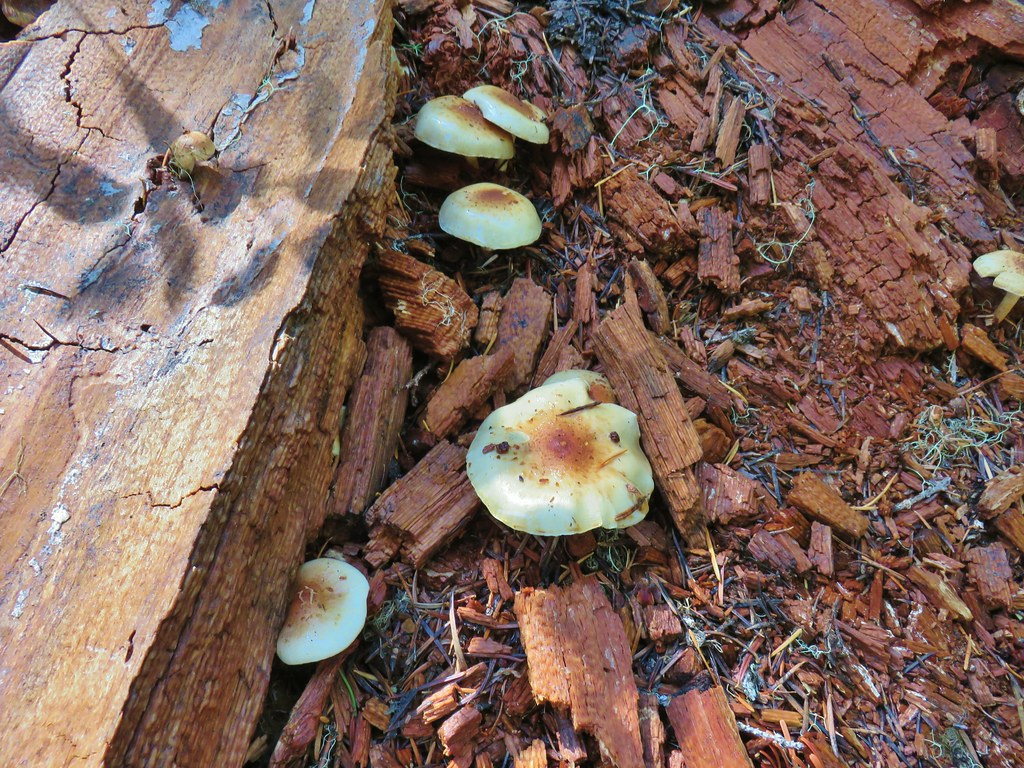

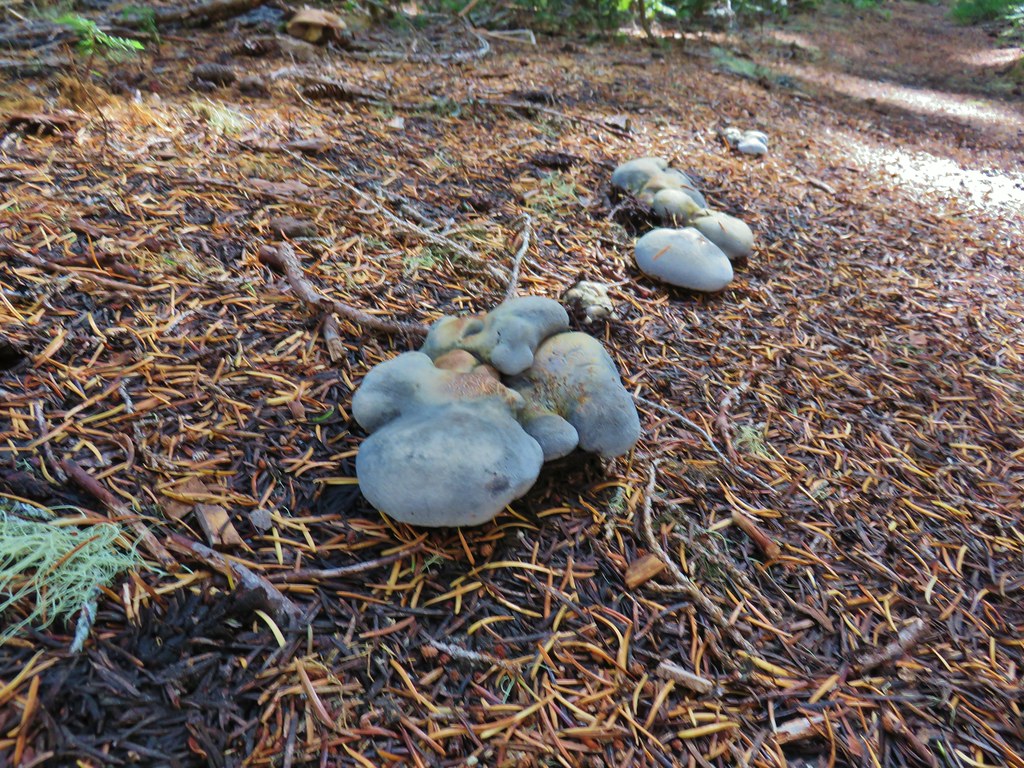

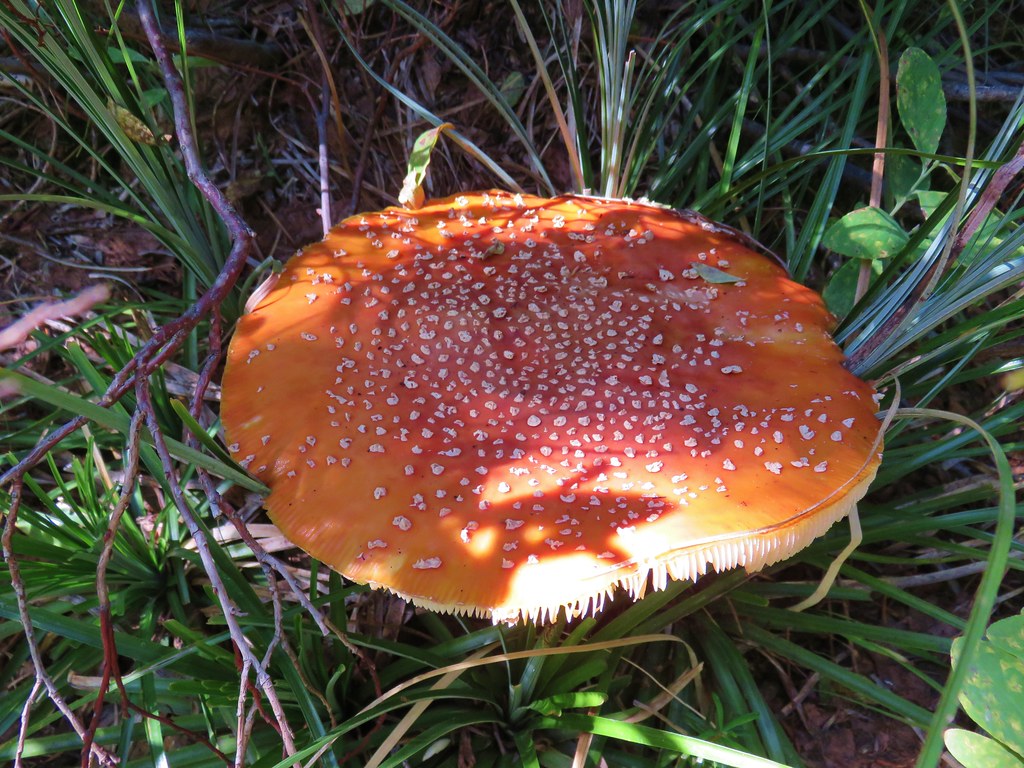
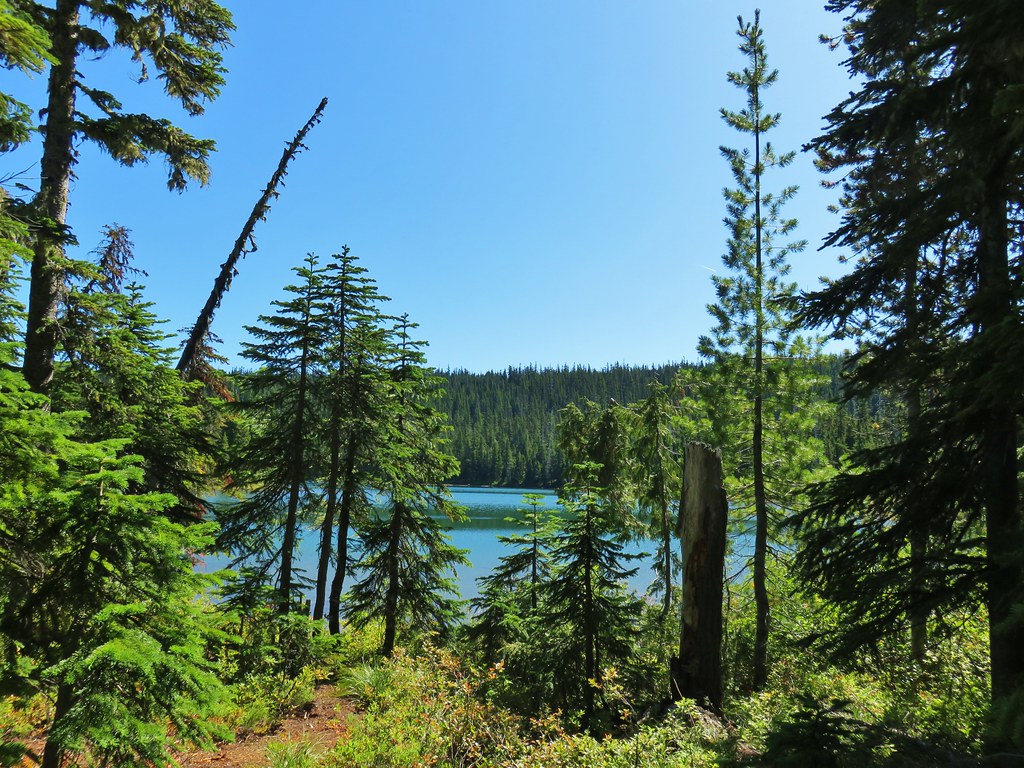
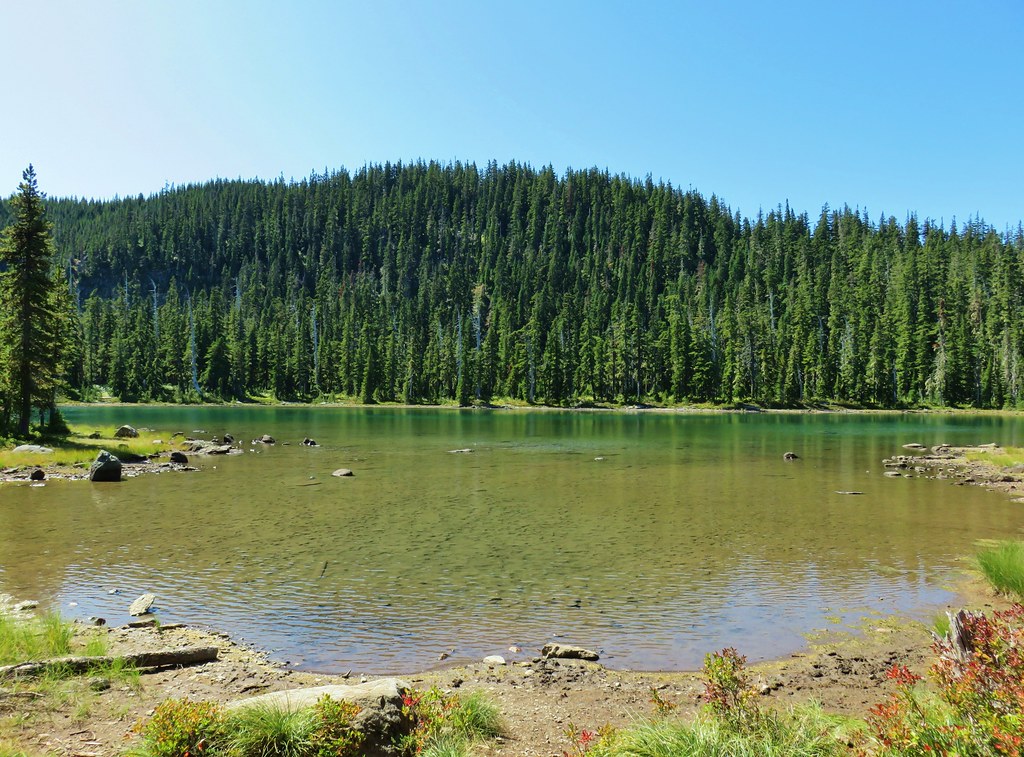


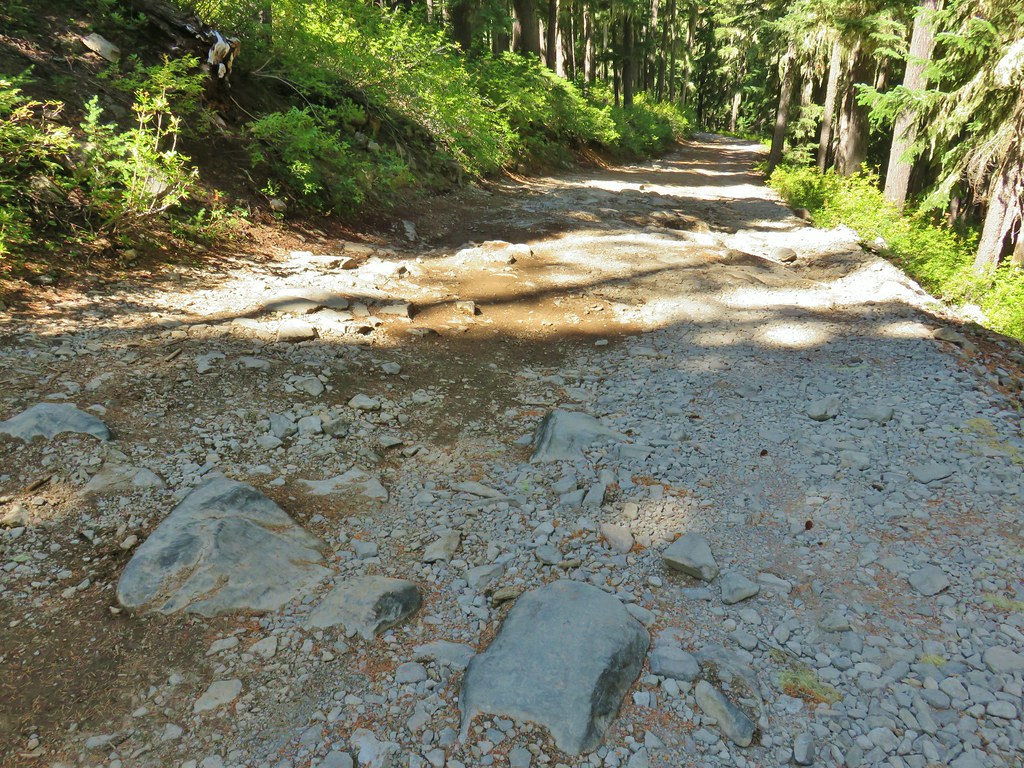


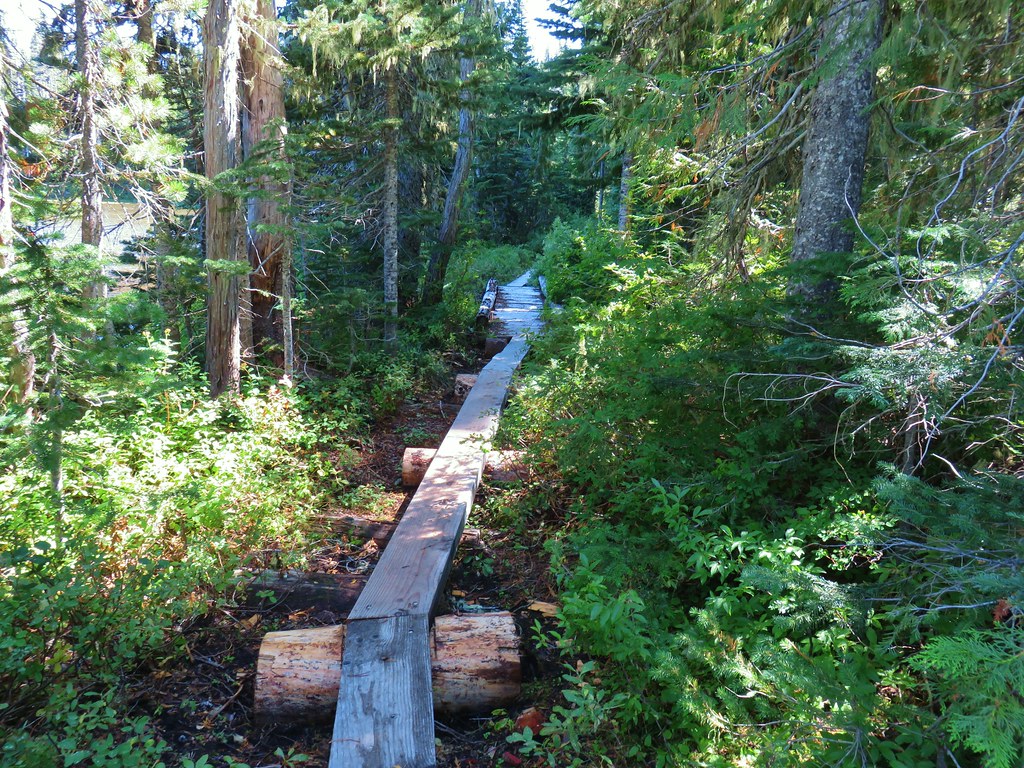


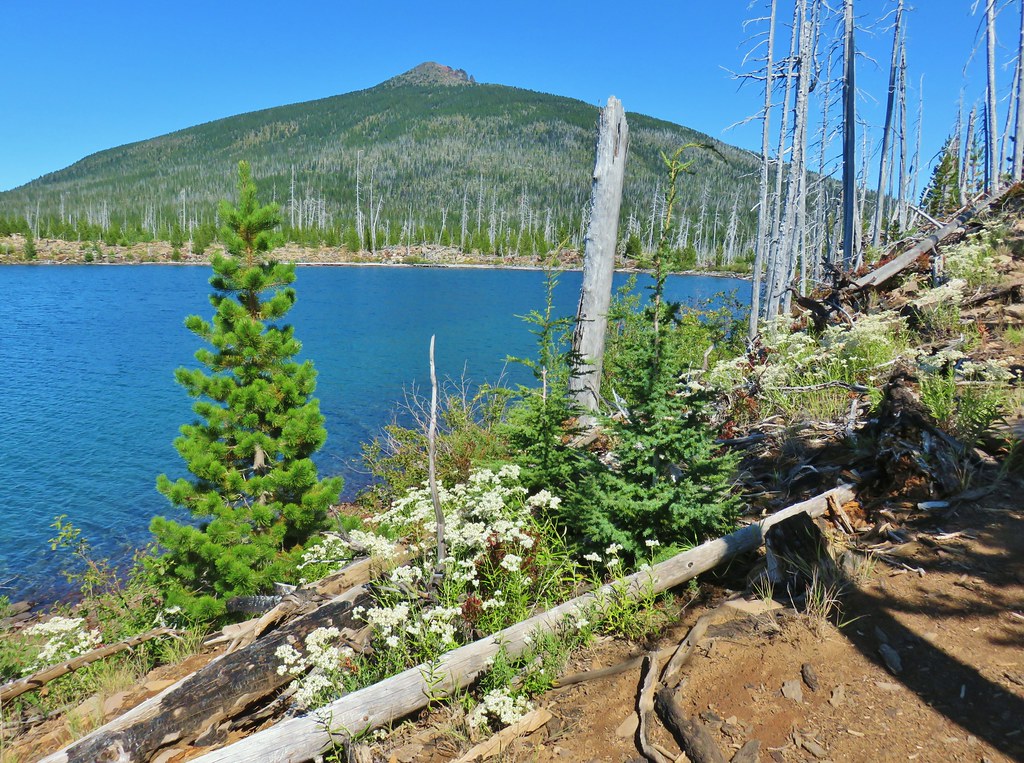

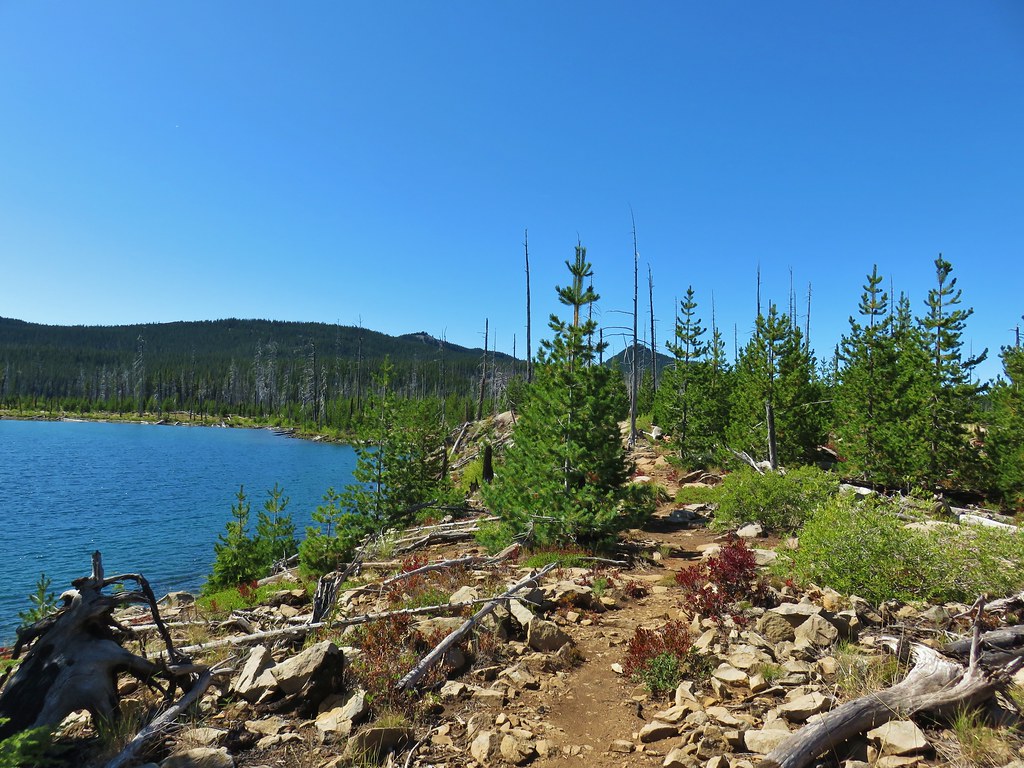
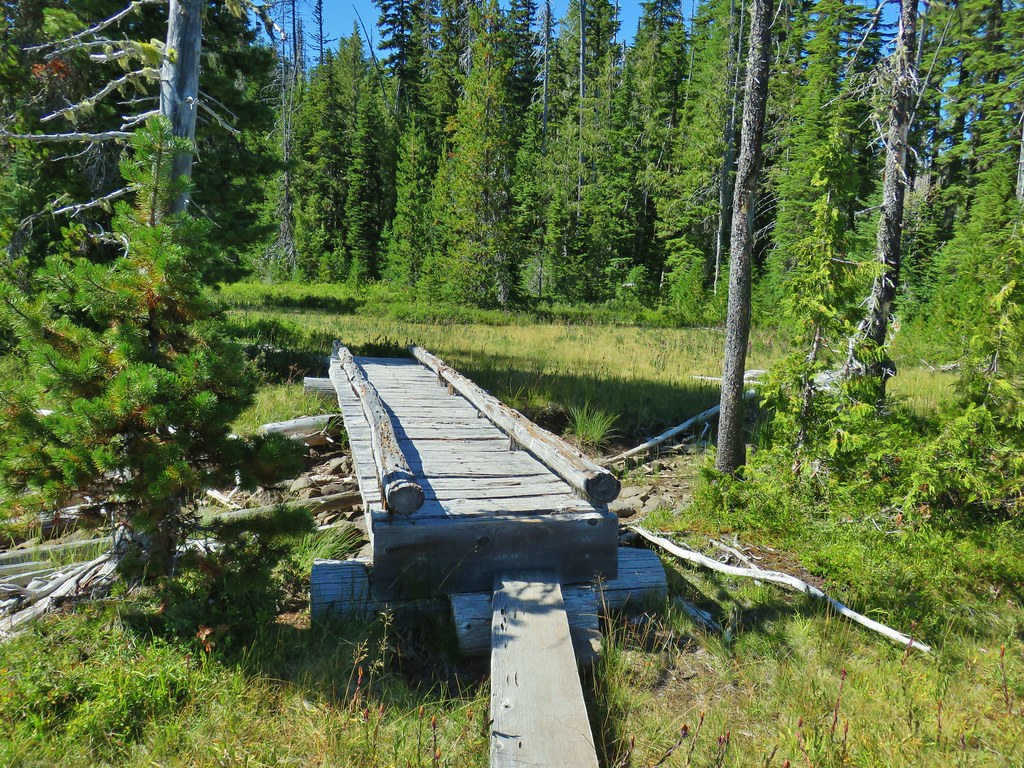

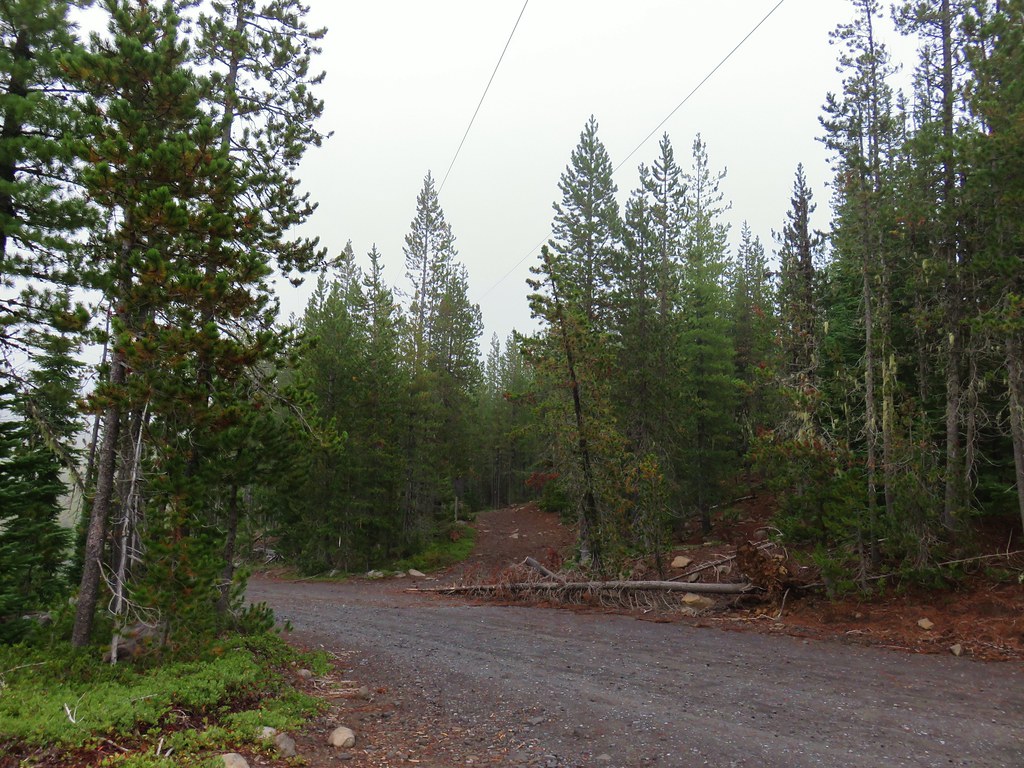

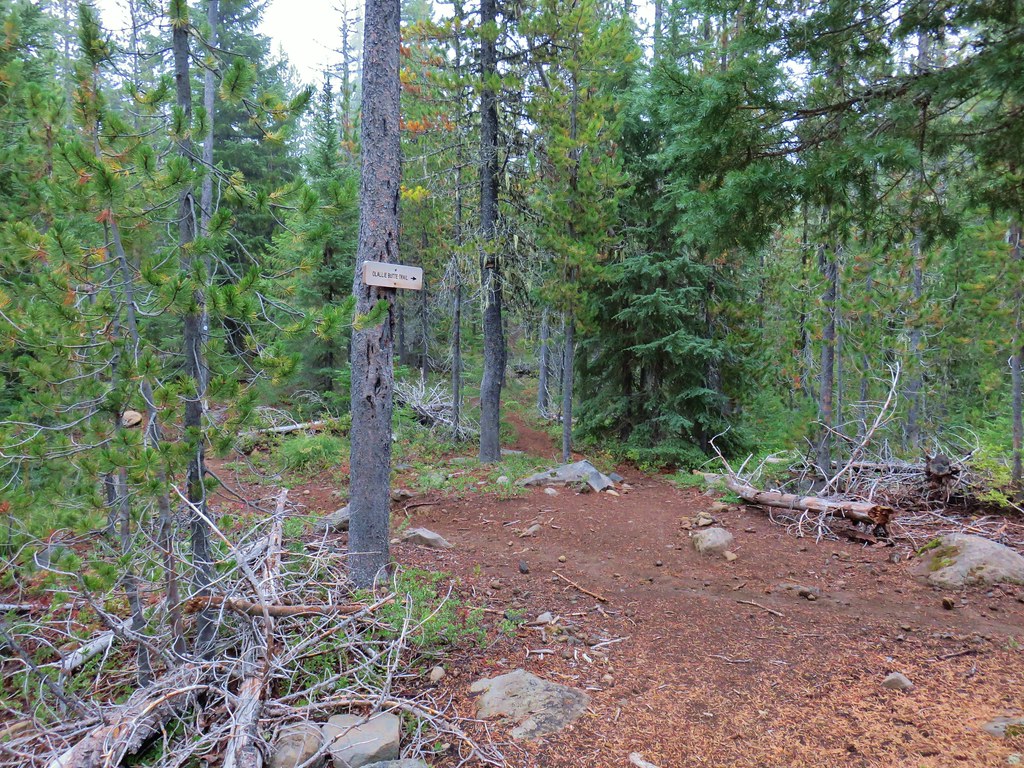
 Trail sign with the PCT heading north behind it.
Trail sign with the PCT heading north behind it.
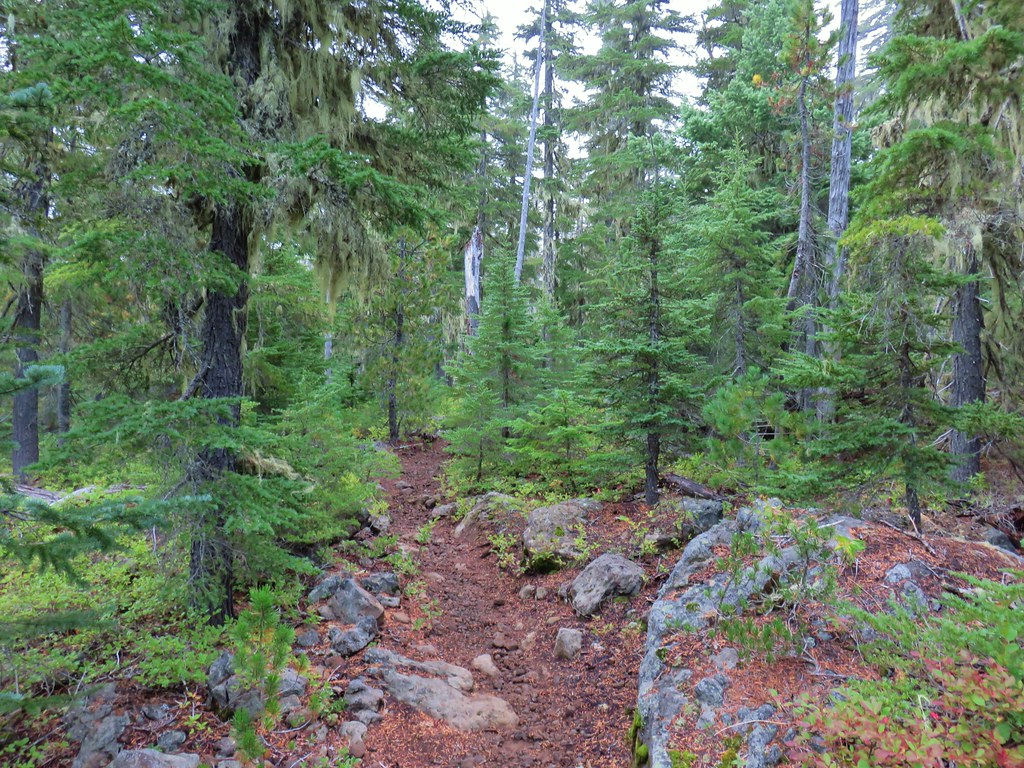




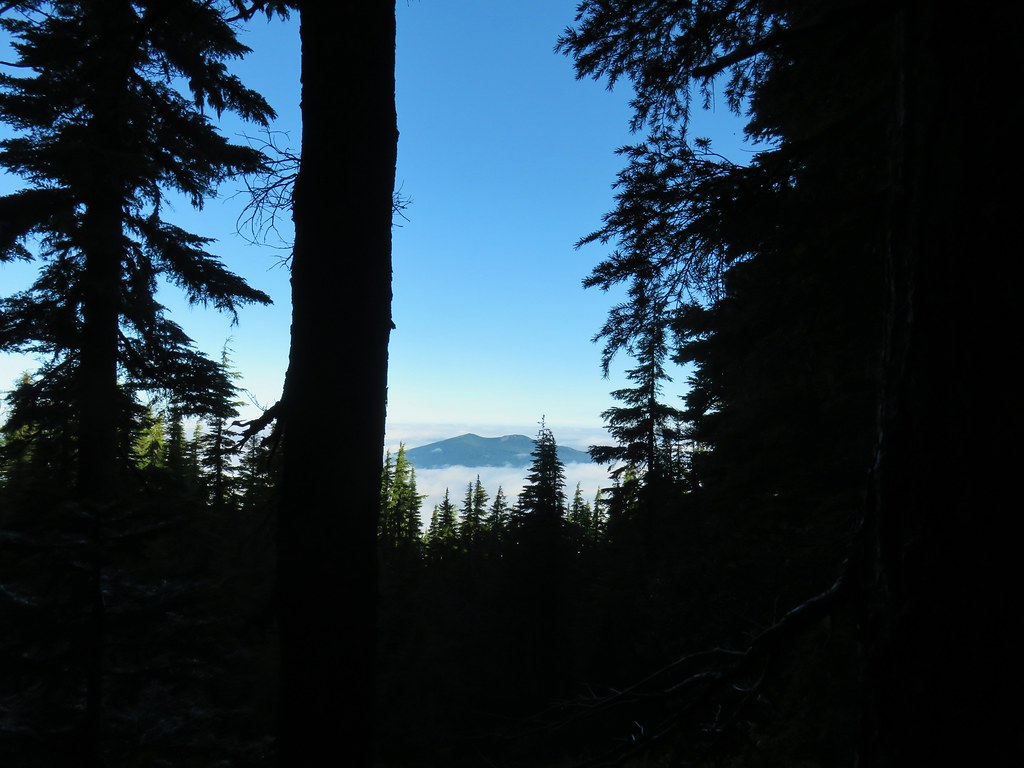 Sisi Butte
Sisi Butte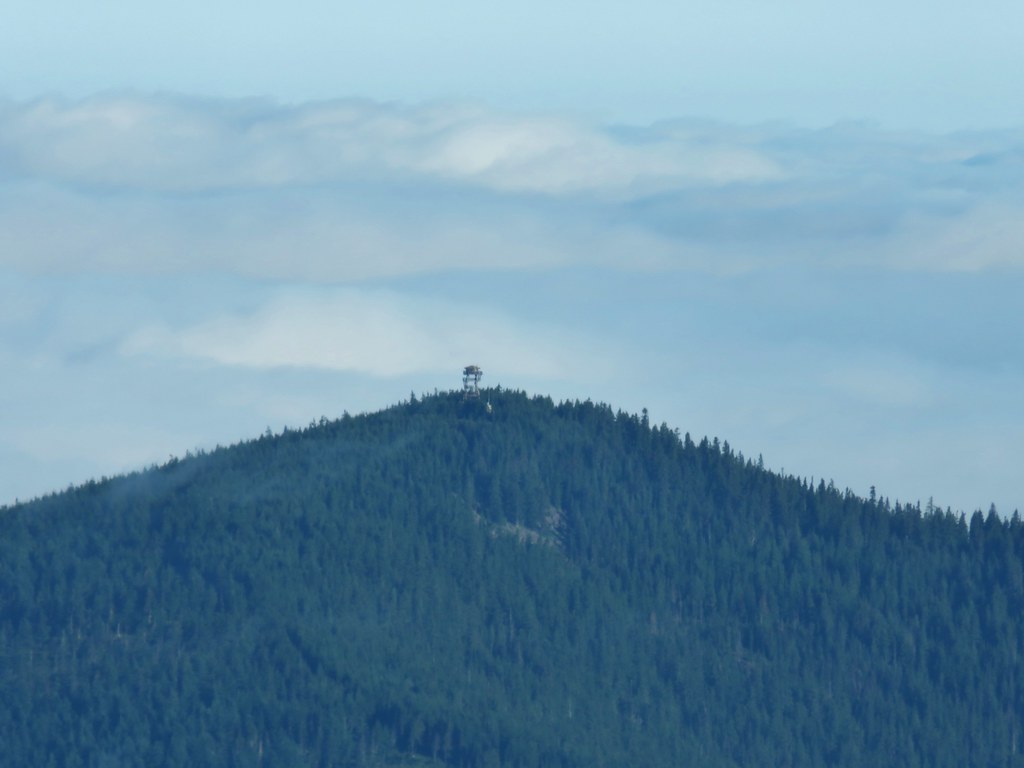 Lookout tower on Sisi Butte
Lookout tower on Sisi Butte Mt. Hood
Mt. Hood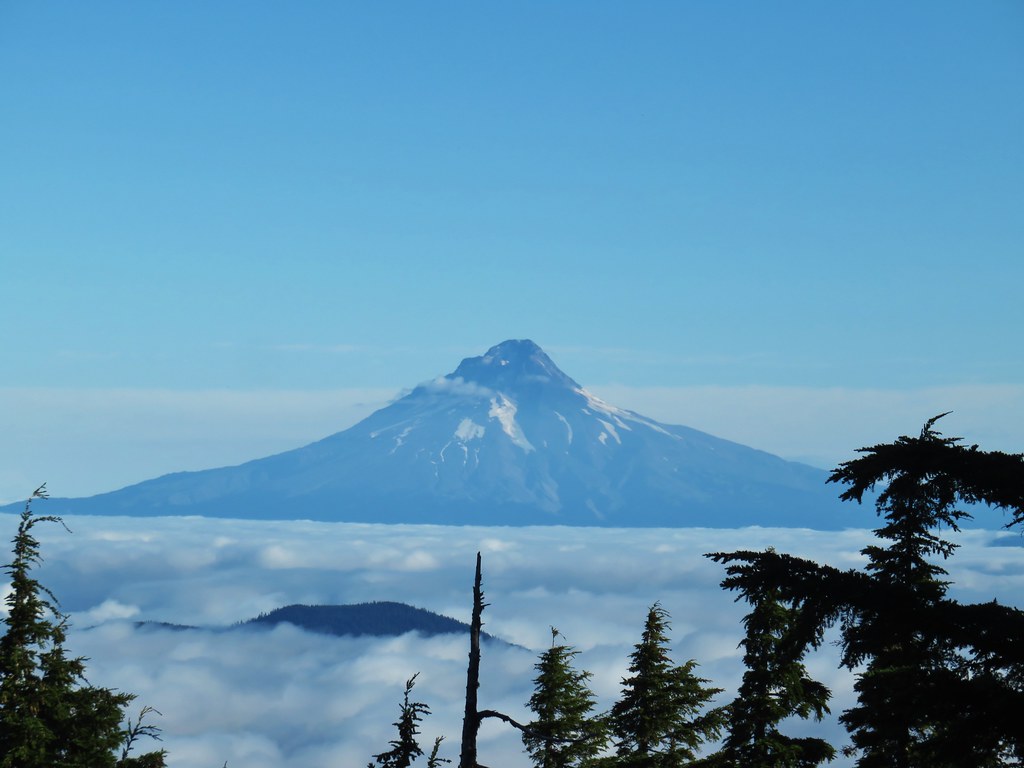


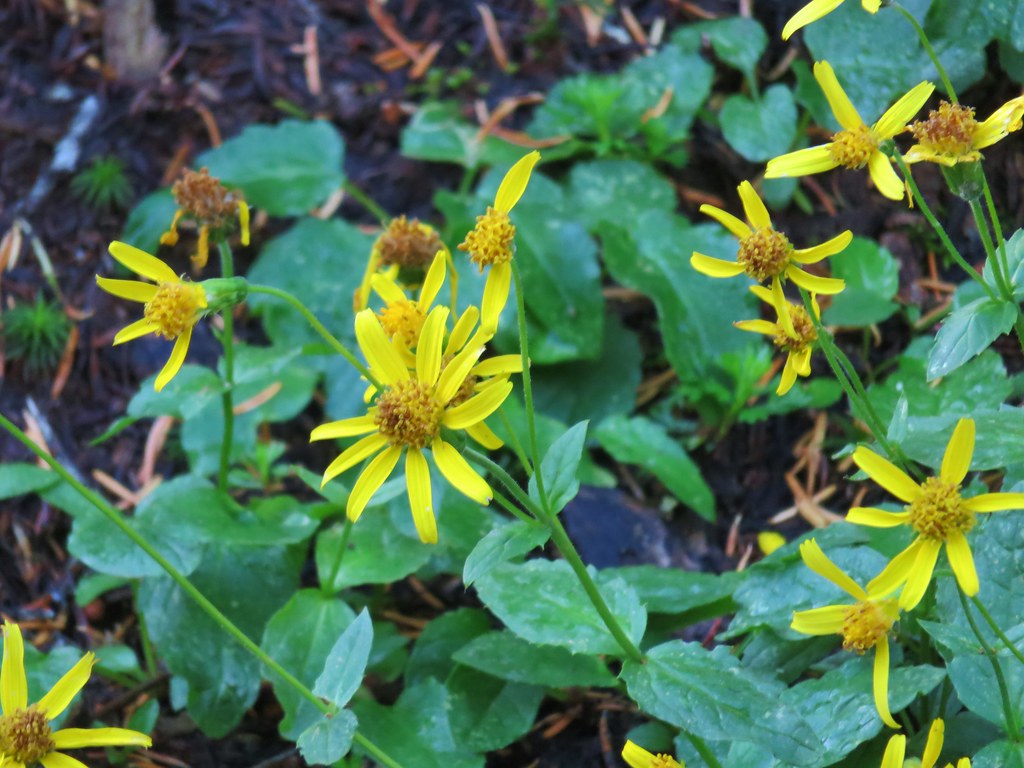
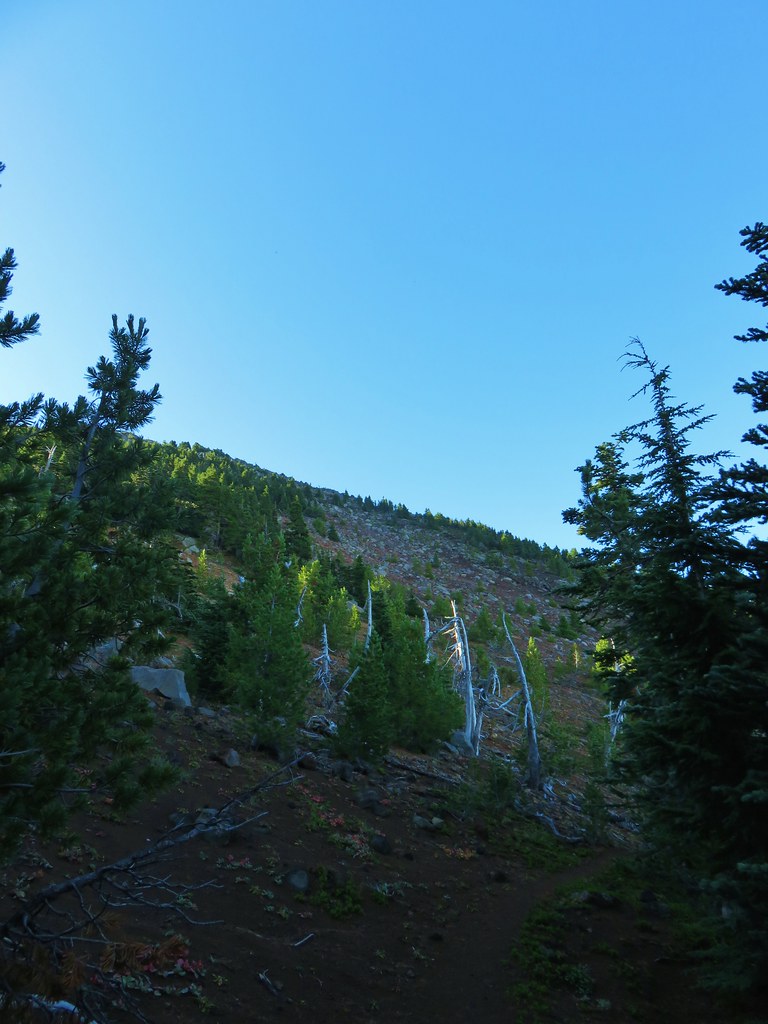




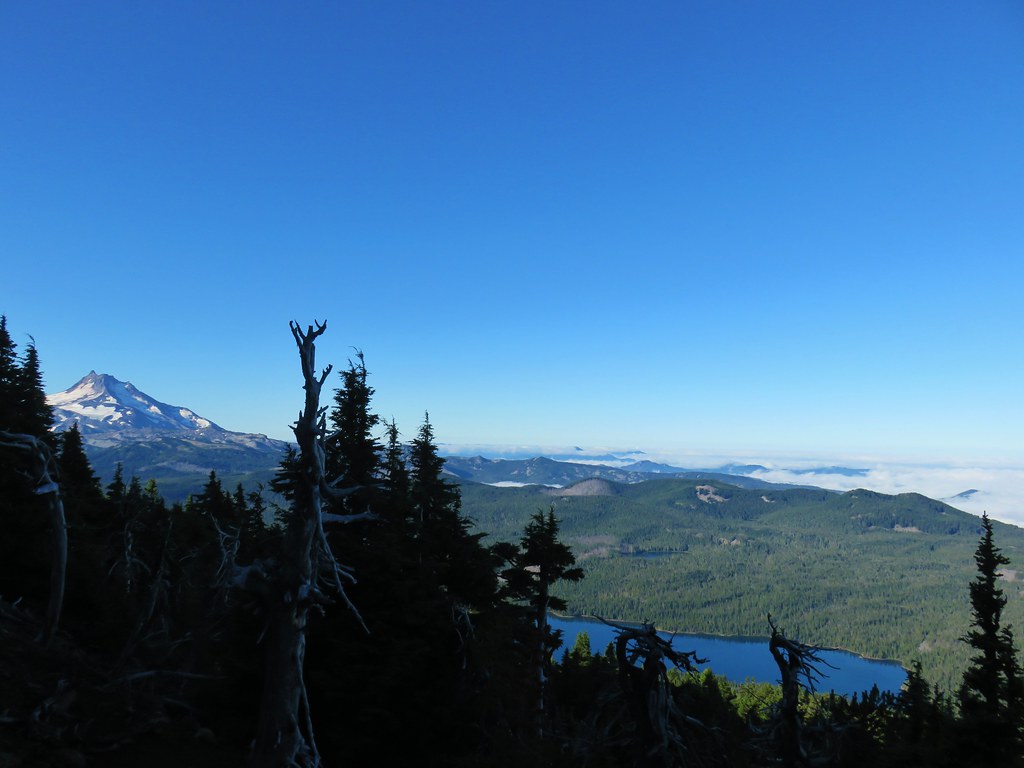 Olallie Lake
Olallie Lake Monon Lake just beyond Olallie Lake (Timber Lake is the smaller lake in the trees to the west.
Monon Lake just beyond Olallie Lake (Timber Lake is the smaller lake in the trees to the west.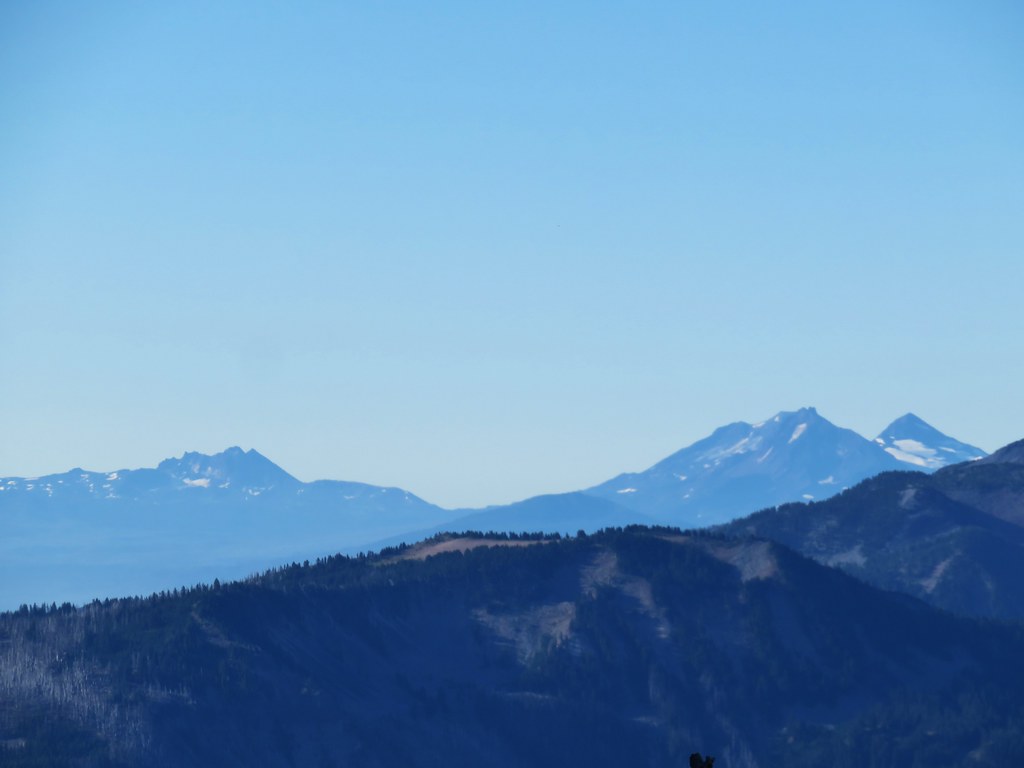 Broken Top and The Three Sisters
Broken Top and The Three Sisters Dinah-mo Peak and Bear Point (
Dinah-mo Peak and Bear Point ( Bear Point
Bear Point Lookout tower remains
Lookout tower remains

 Starting from the left – Trout Lake with Boulder Lake beyond, Island Lake, Dark Lake, Long Lake. The three smaller lakes are Lake Mary (closest), Lake Marie (middle), and Lake Alice (furthest). Lake Hazel is the small lake up and to the right of those three. All of these lakes are part of the Warm Springs Reservation and off-limits unless a permit to visit has been obtained.
Starting from the left – Trout Lake with Boulder Lake beyond, Island Lake, Dark Lake, Long Lake. The three smaller lakes are Lake Mary (closest), Lake Marie (middle), and Lake Alice (furthest). Lake Hazel is the small lake up and to the right of those three. All of these lakes are part of the Warm Springs Reservation and off-limits unless a permit to visit has been obtained. Monon, Olallie, and Timber Lakes in the Mt. Hood National Forest to the west.
Monon, Olallie, and Timber Lakes in the Mt. Hood National Forest to the west. Mt. Jefferson
Mt. Jefferson



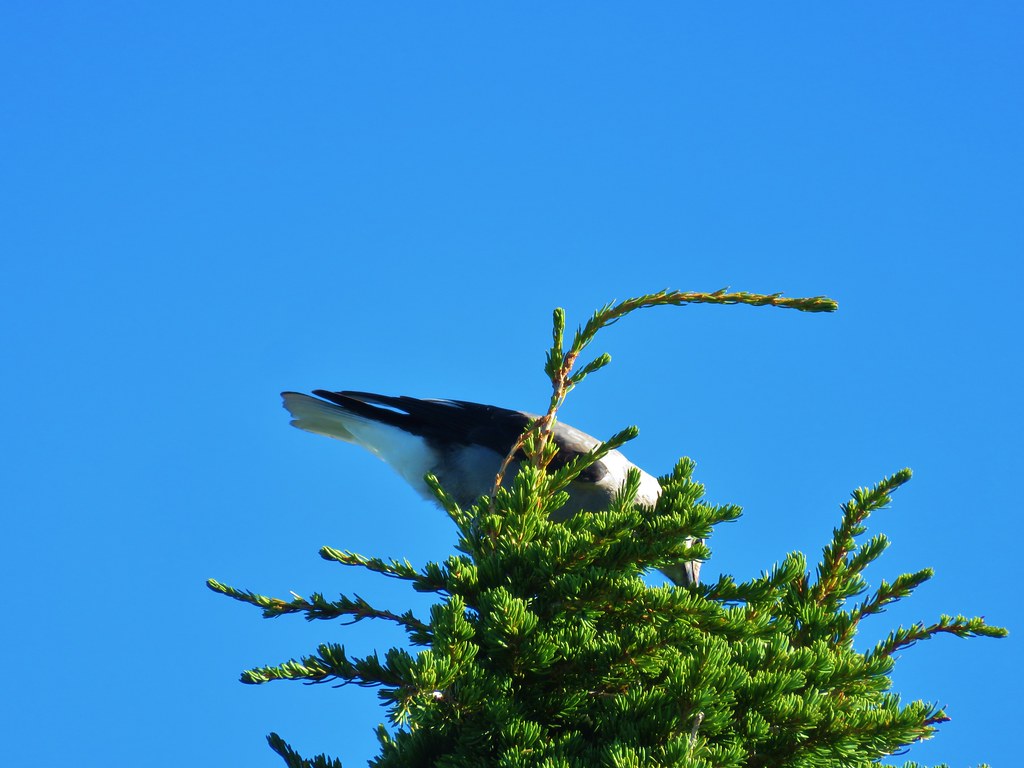

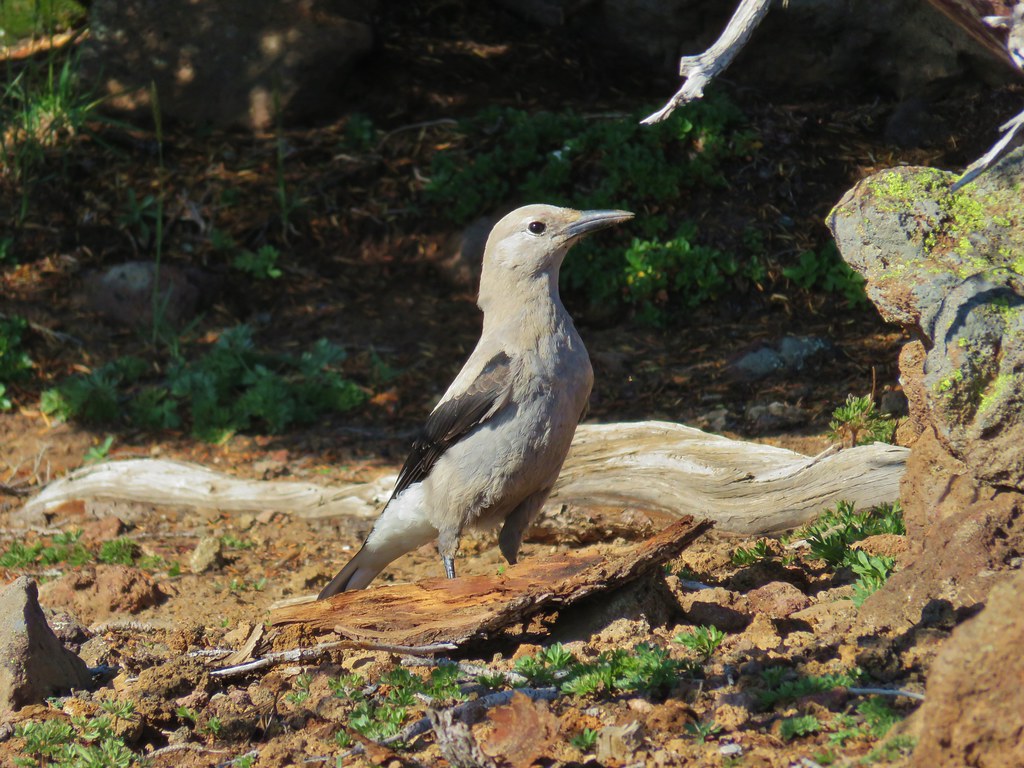

 Mt. St. Helens as a dark spot on the horizon.
Mt. St. Helens as a dark spot on the horizon.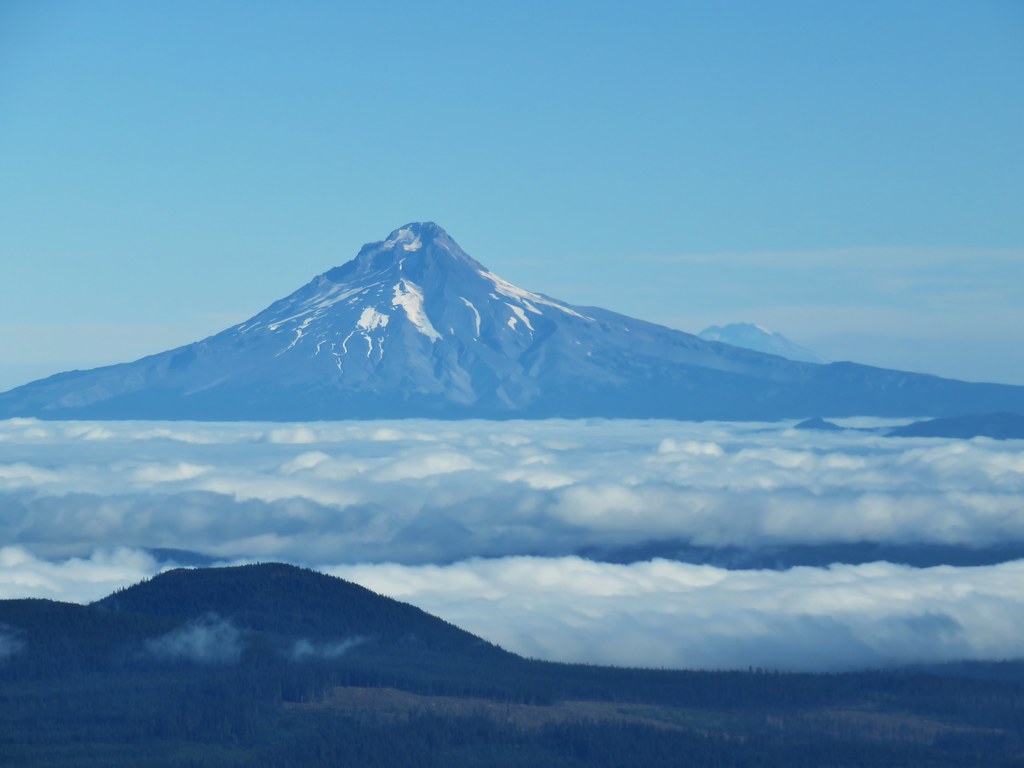 Mt. Adams beyond Mt. Hood
Mt. Adams beyond Mt. Hood Mt. Jefferson from the lookout site.
Mt. Jefferson from the lookout site.